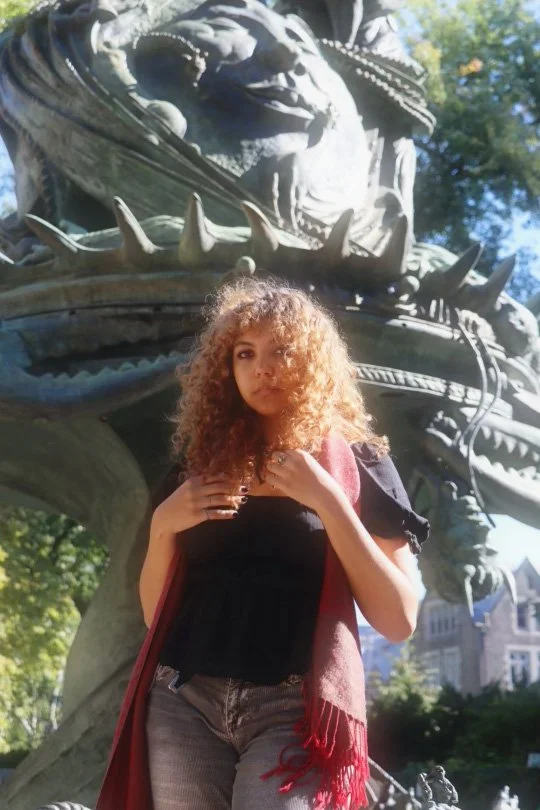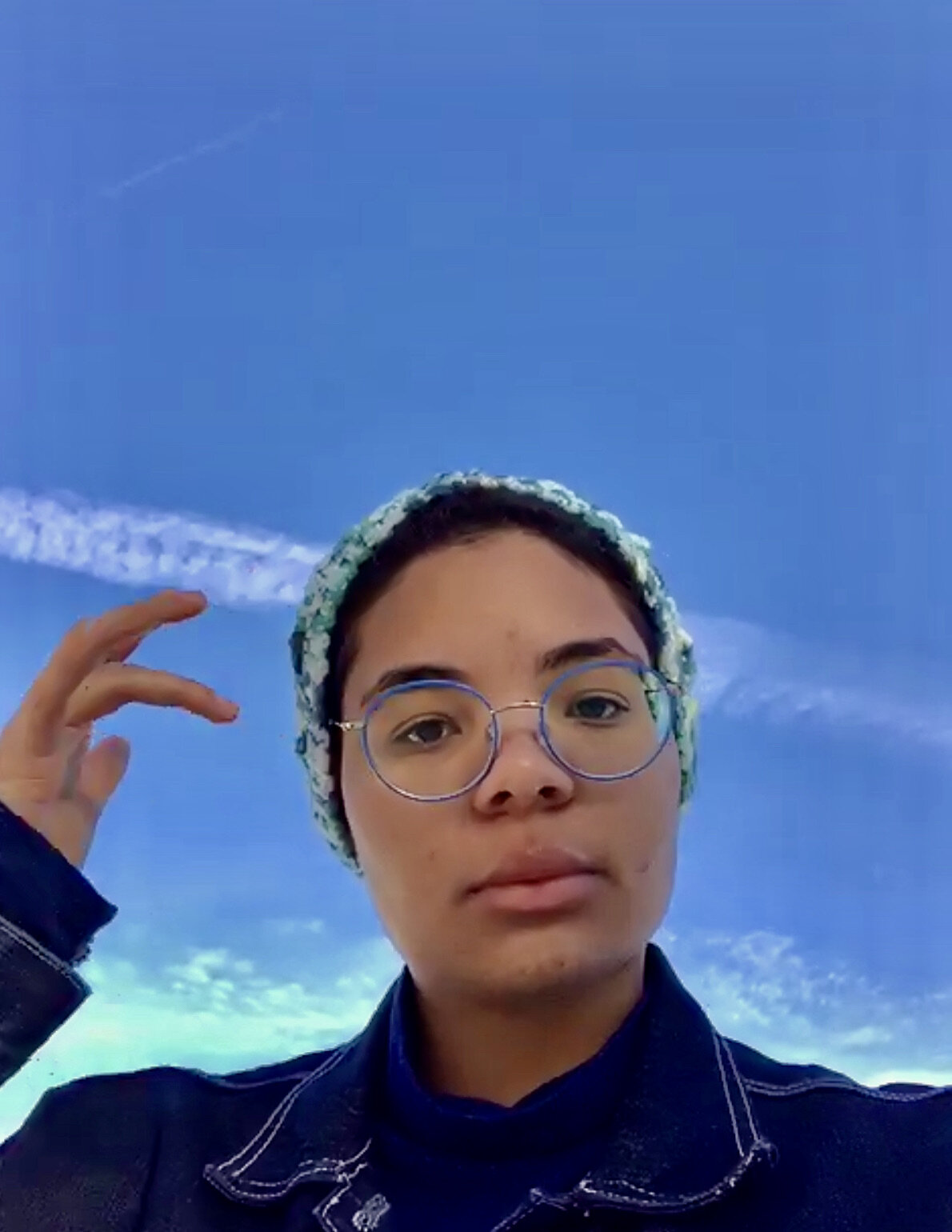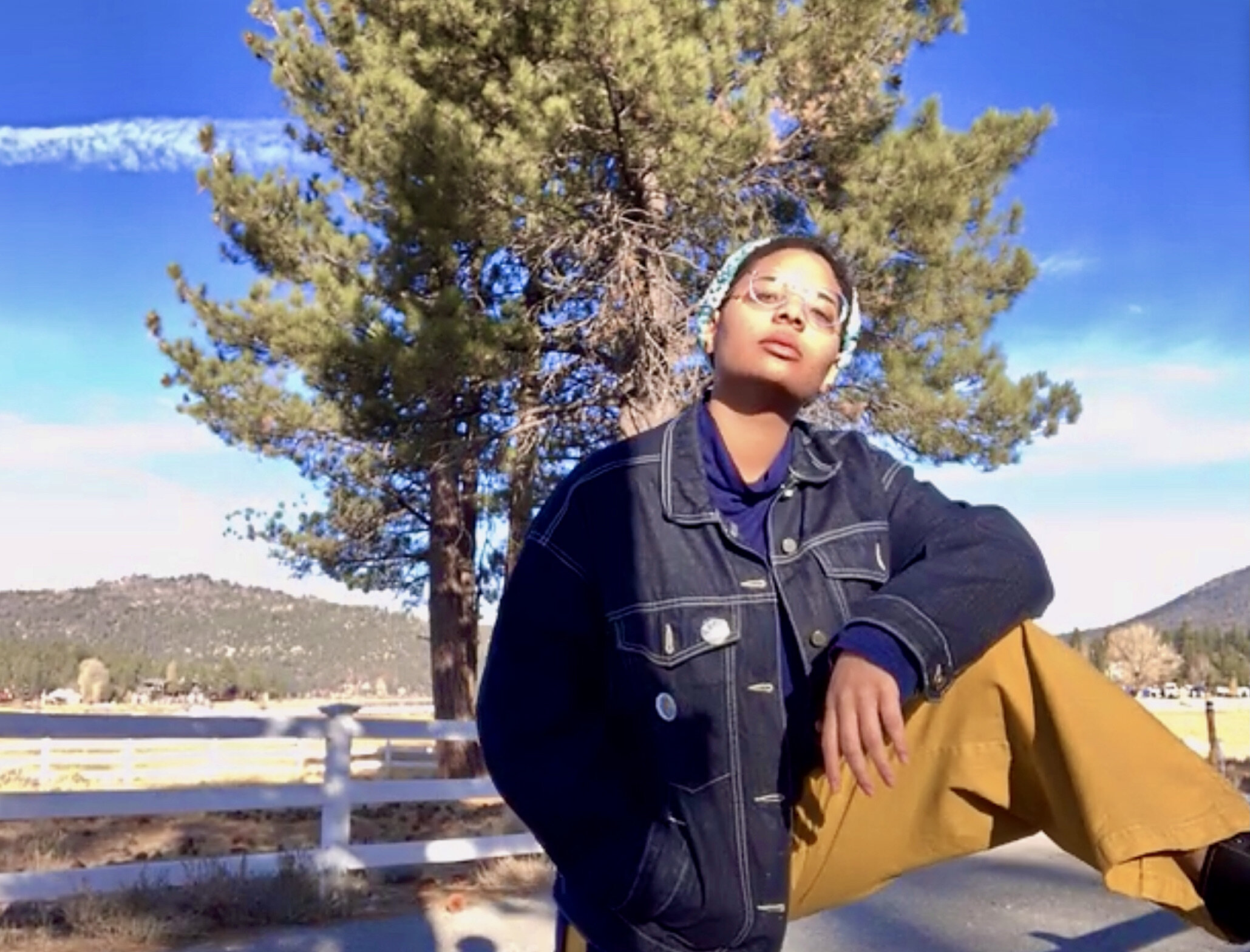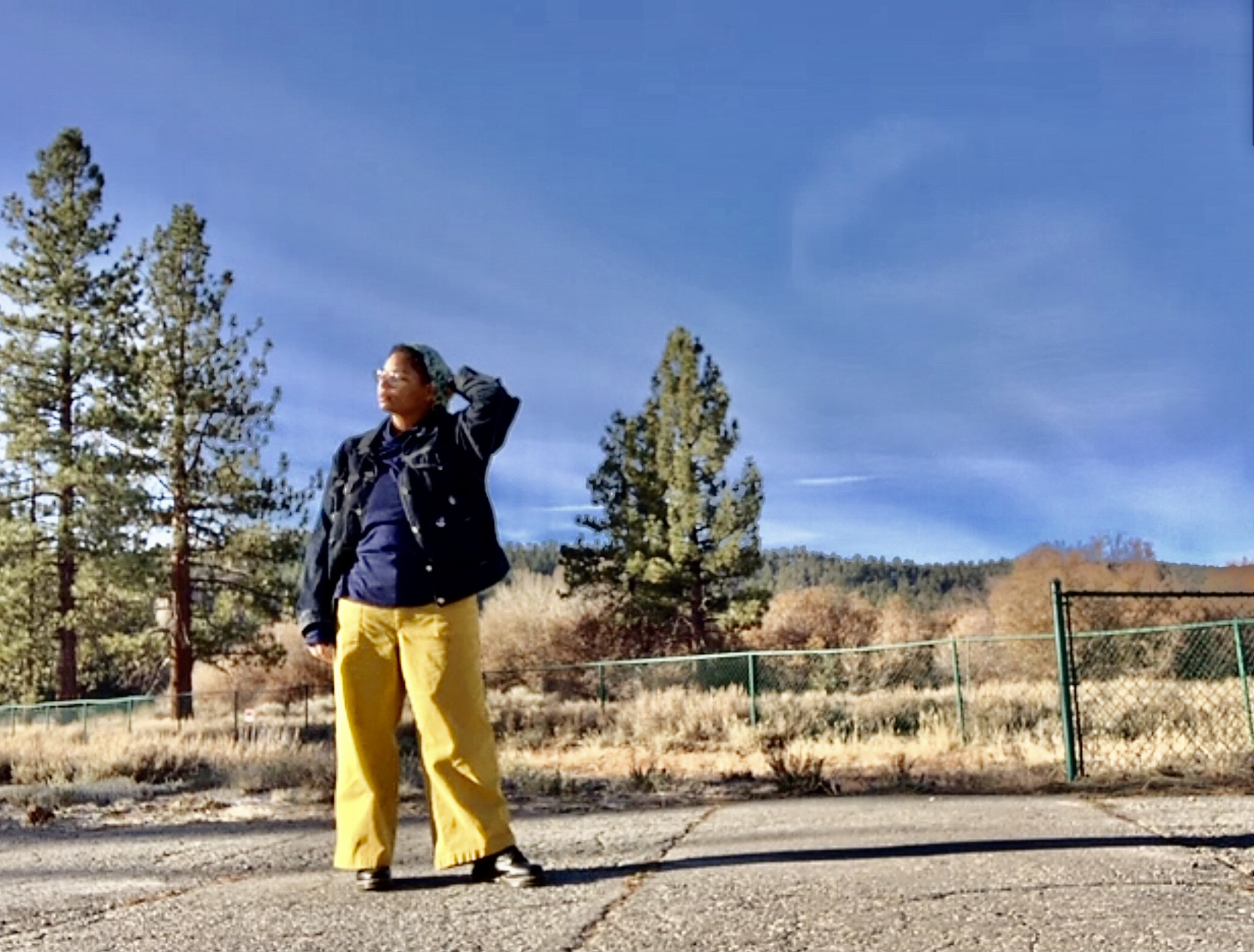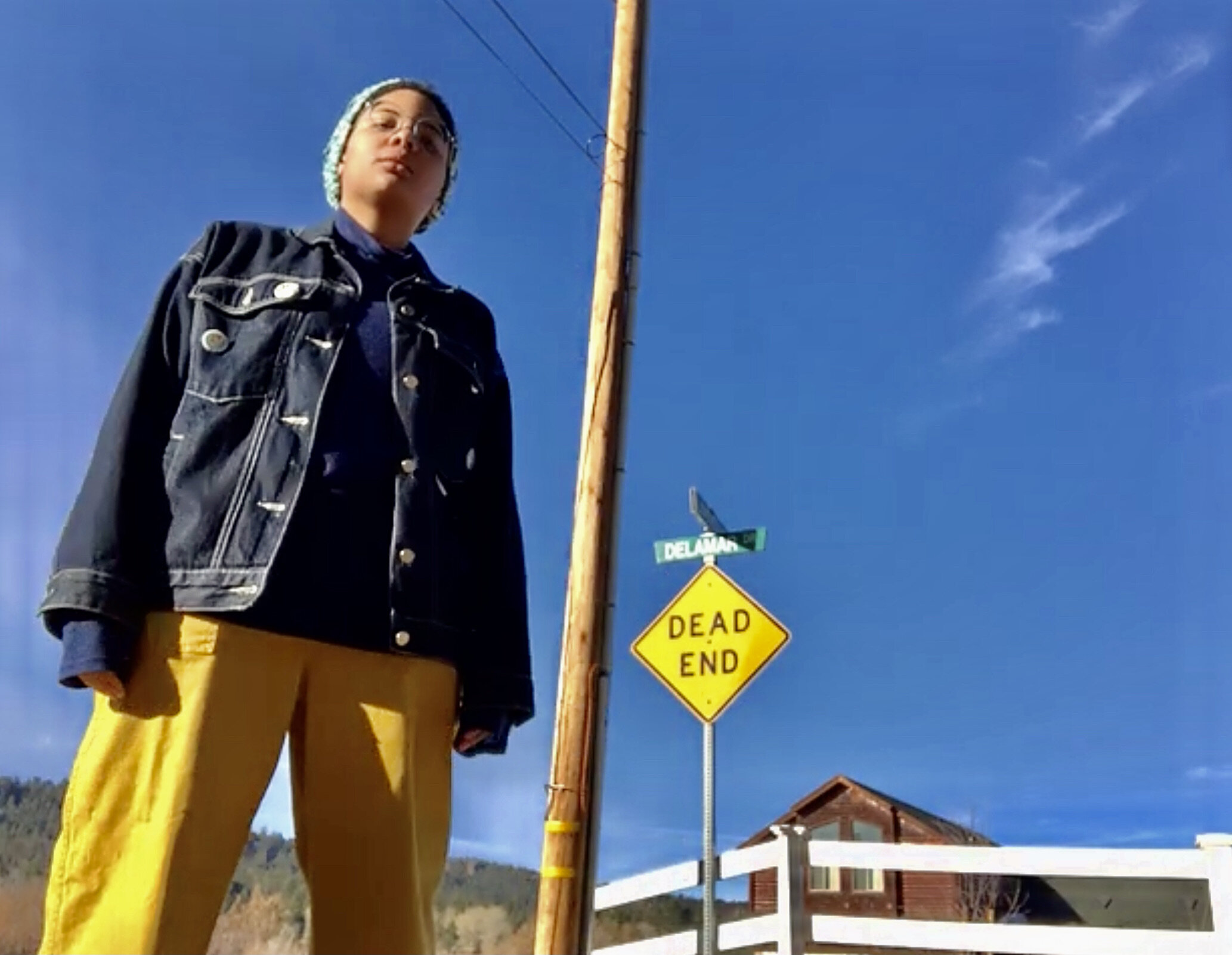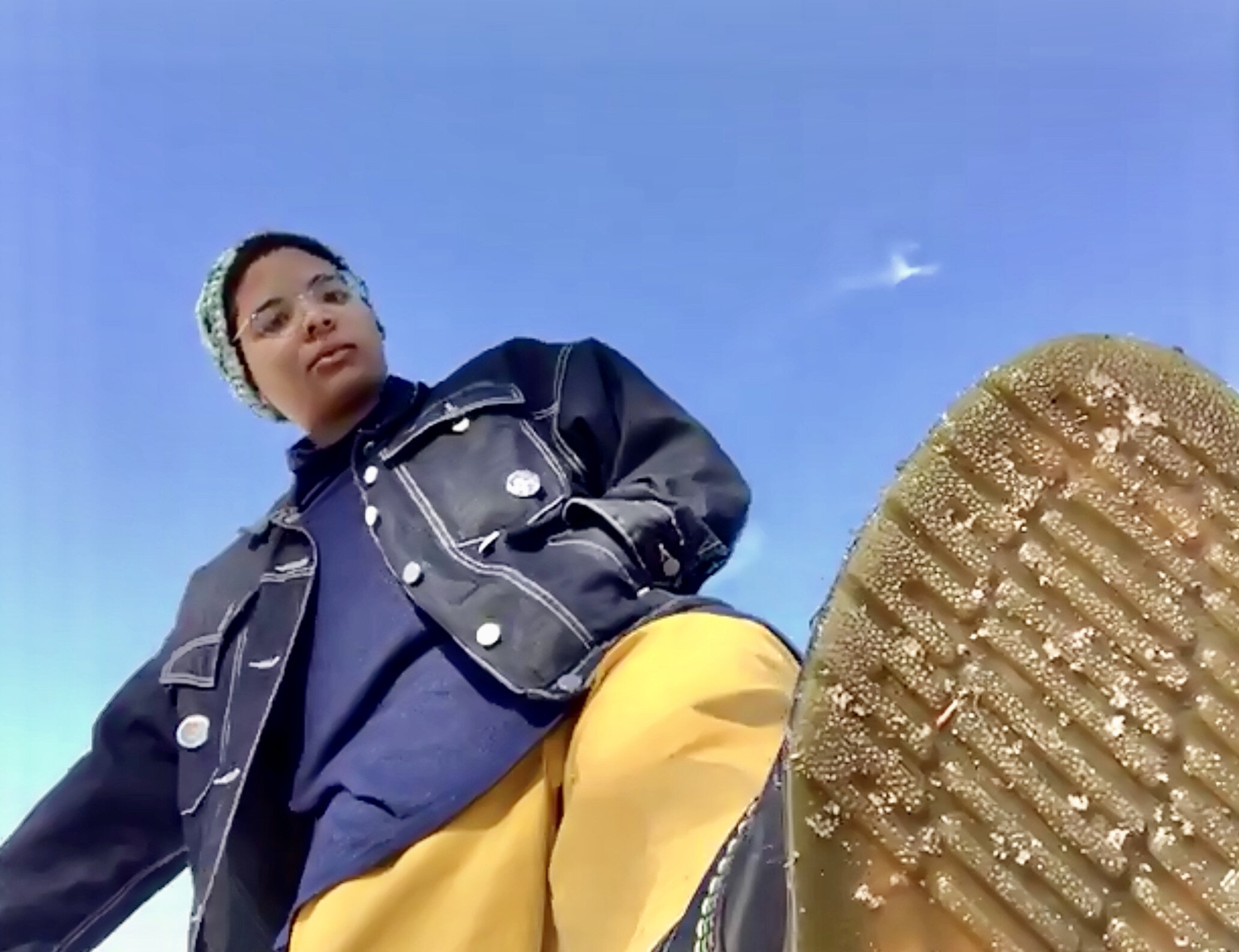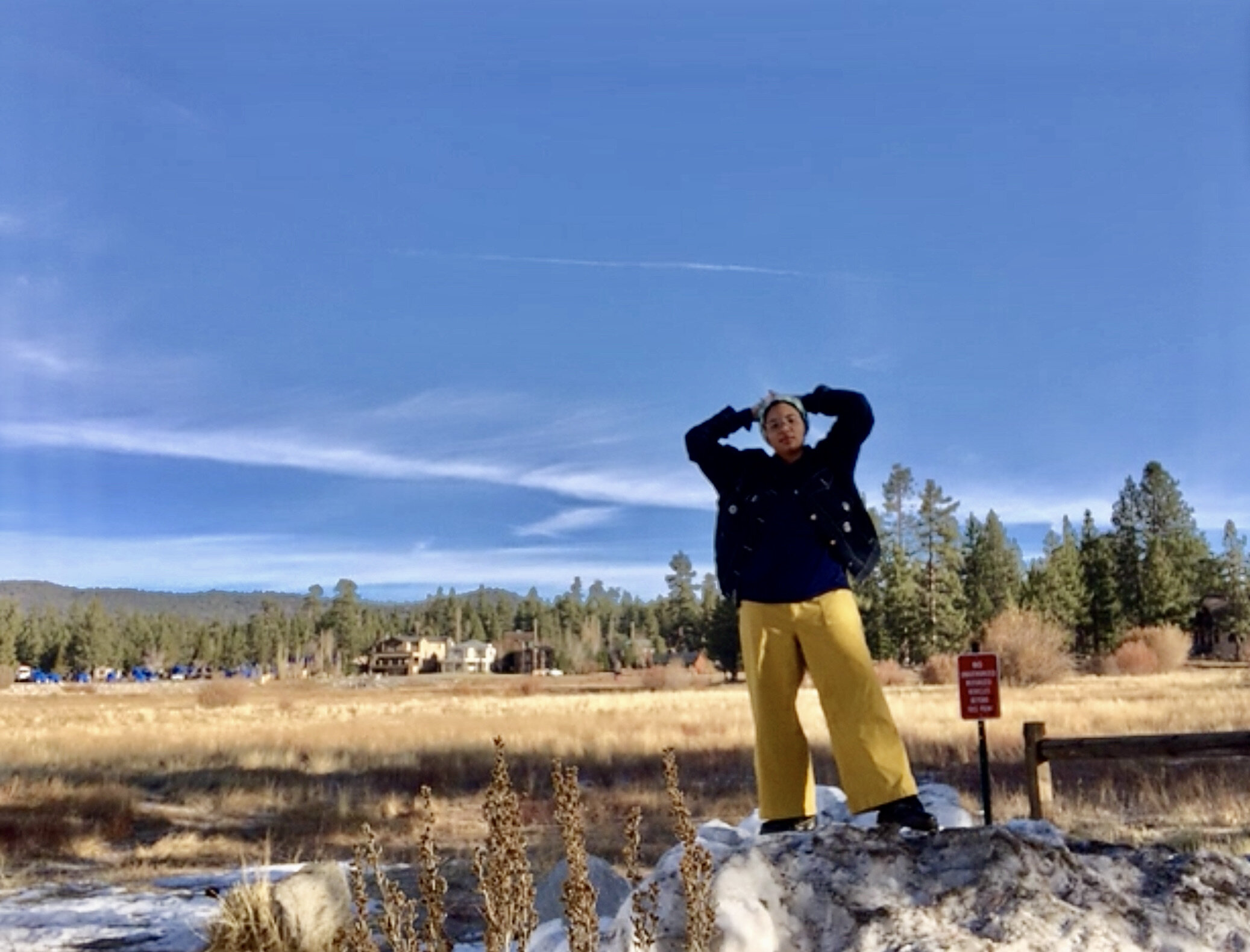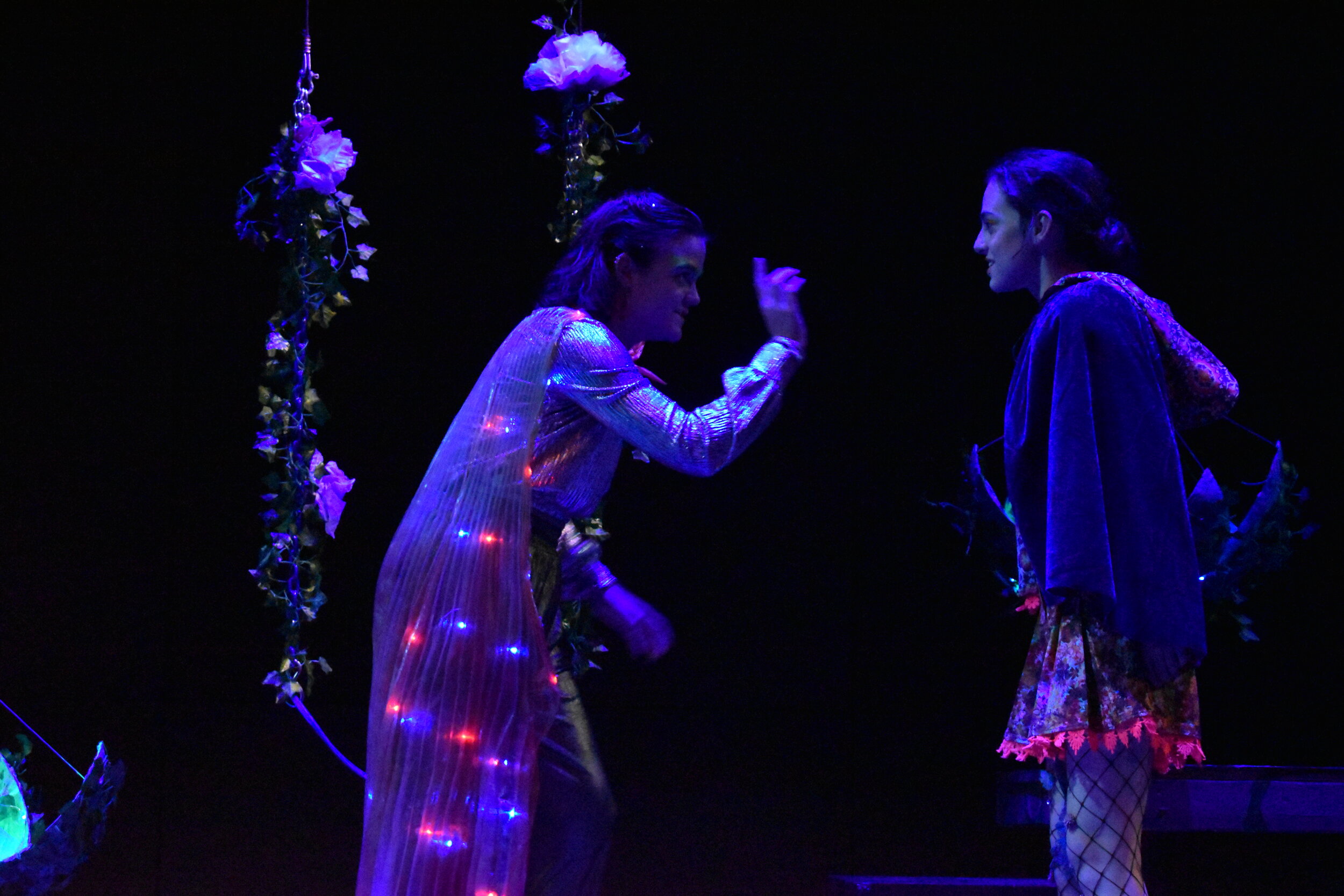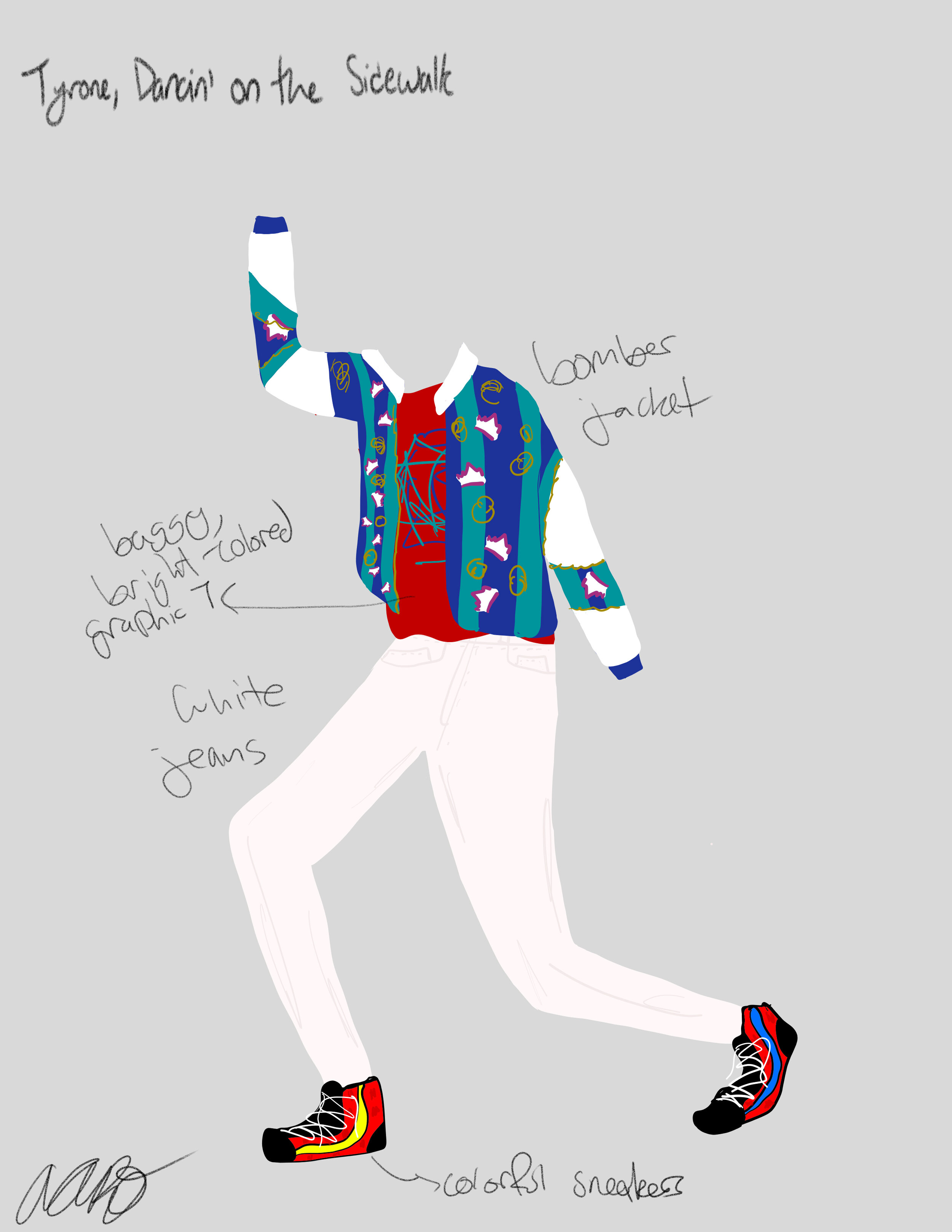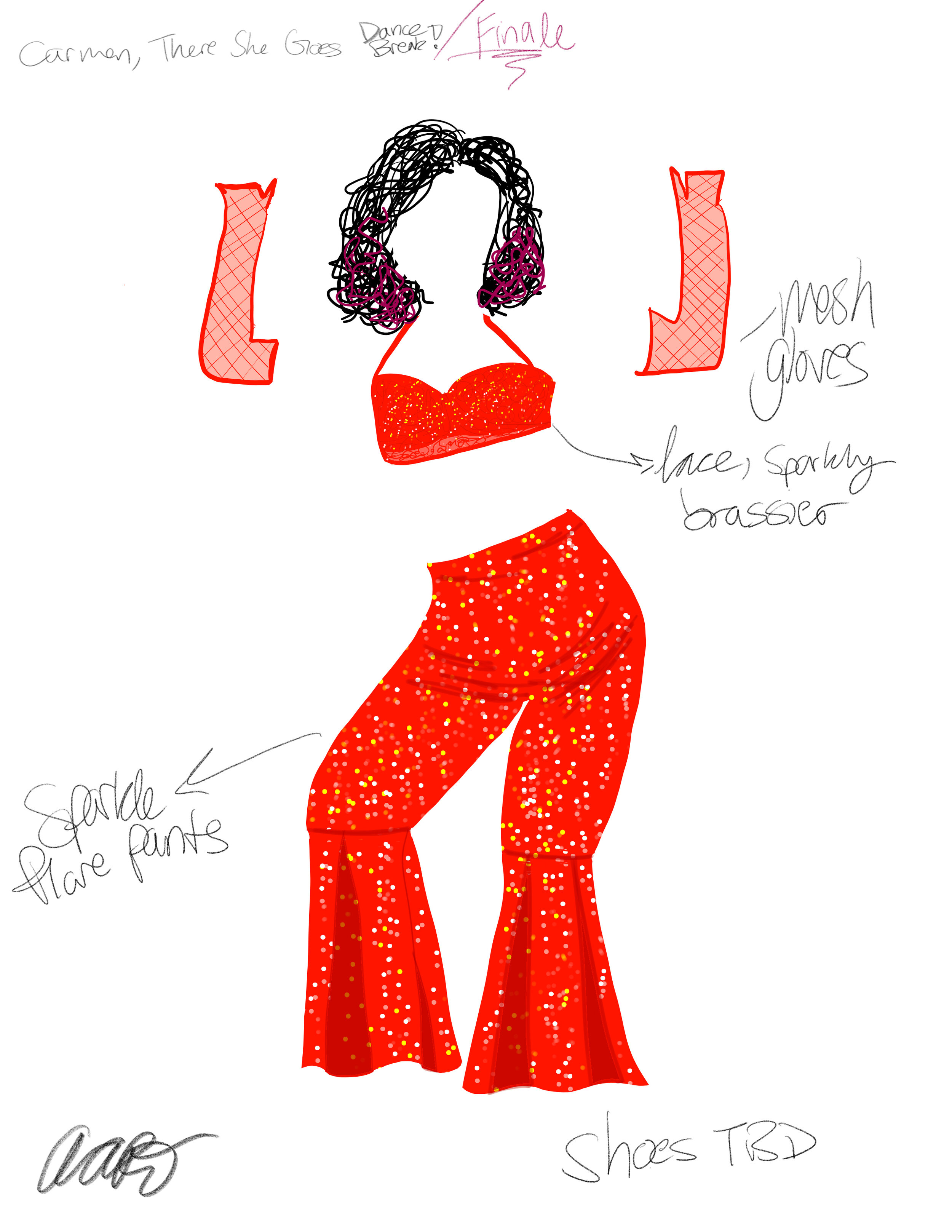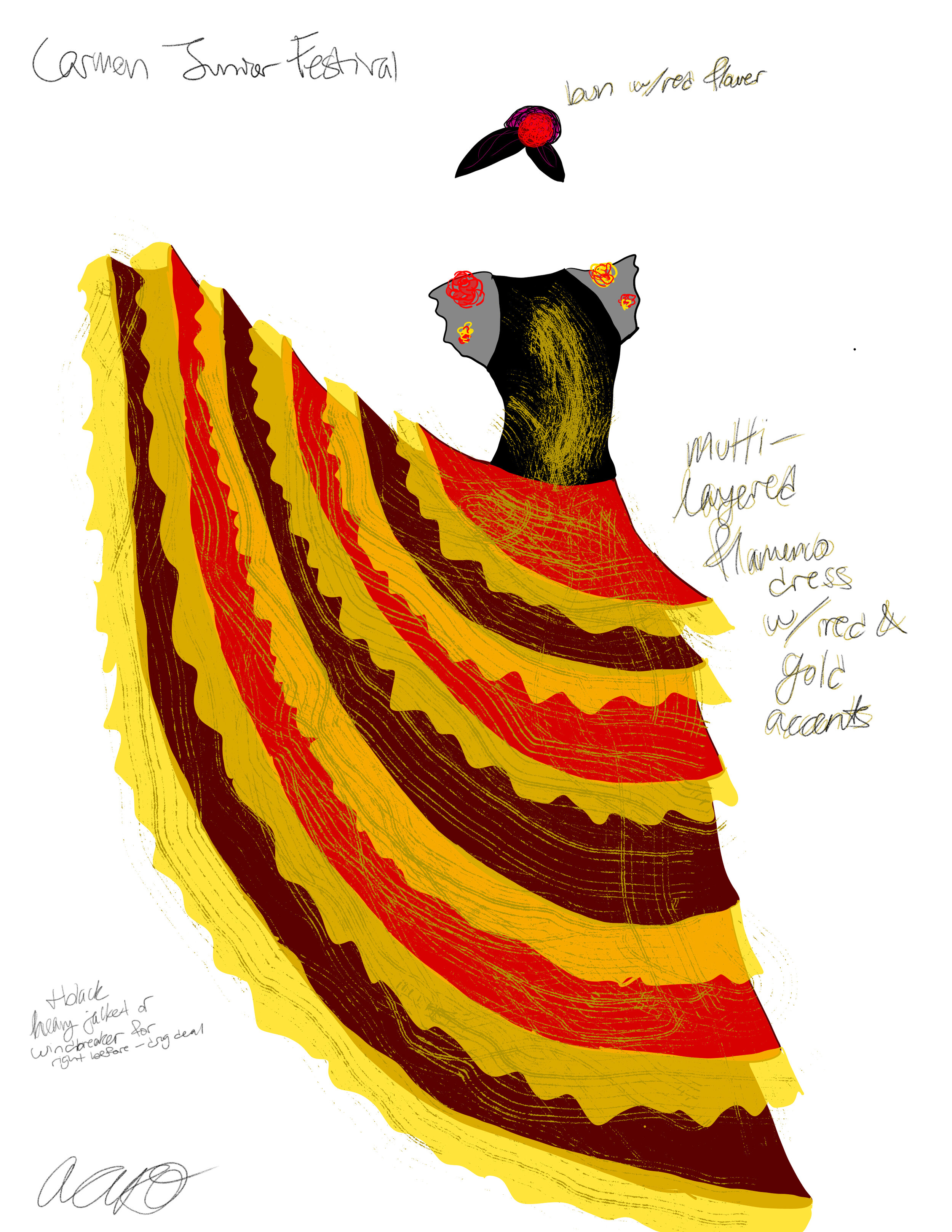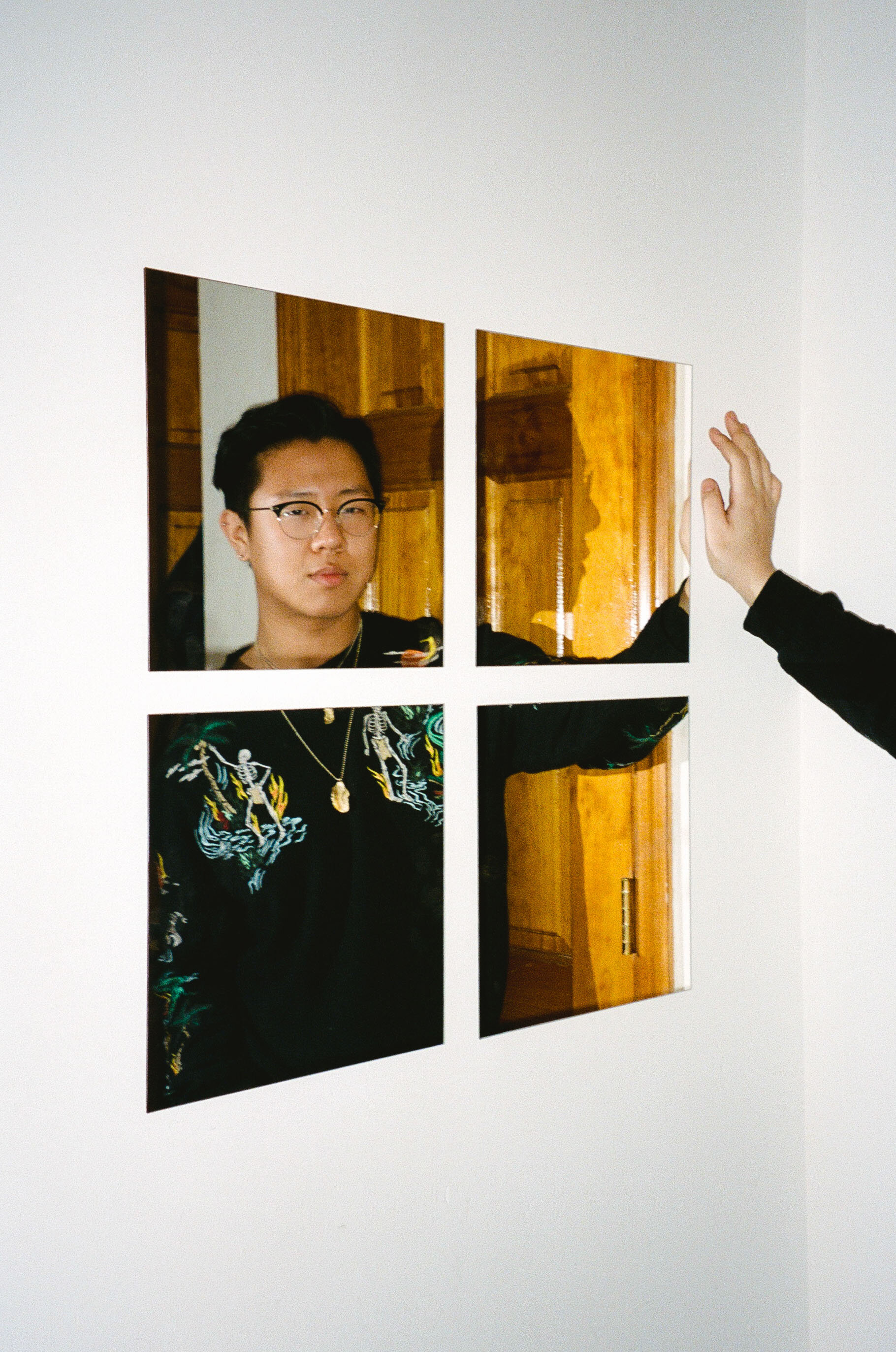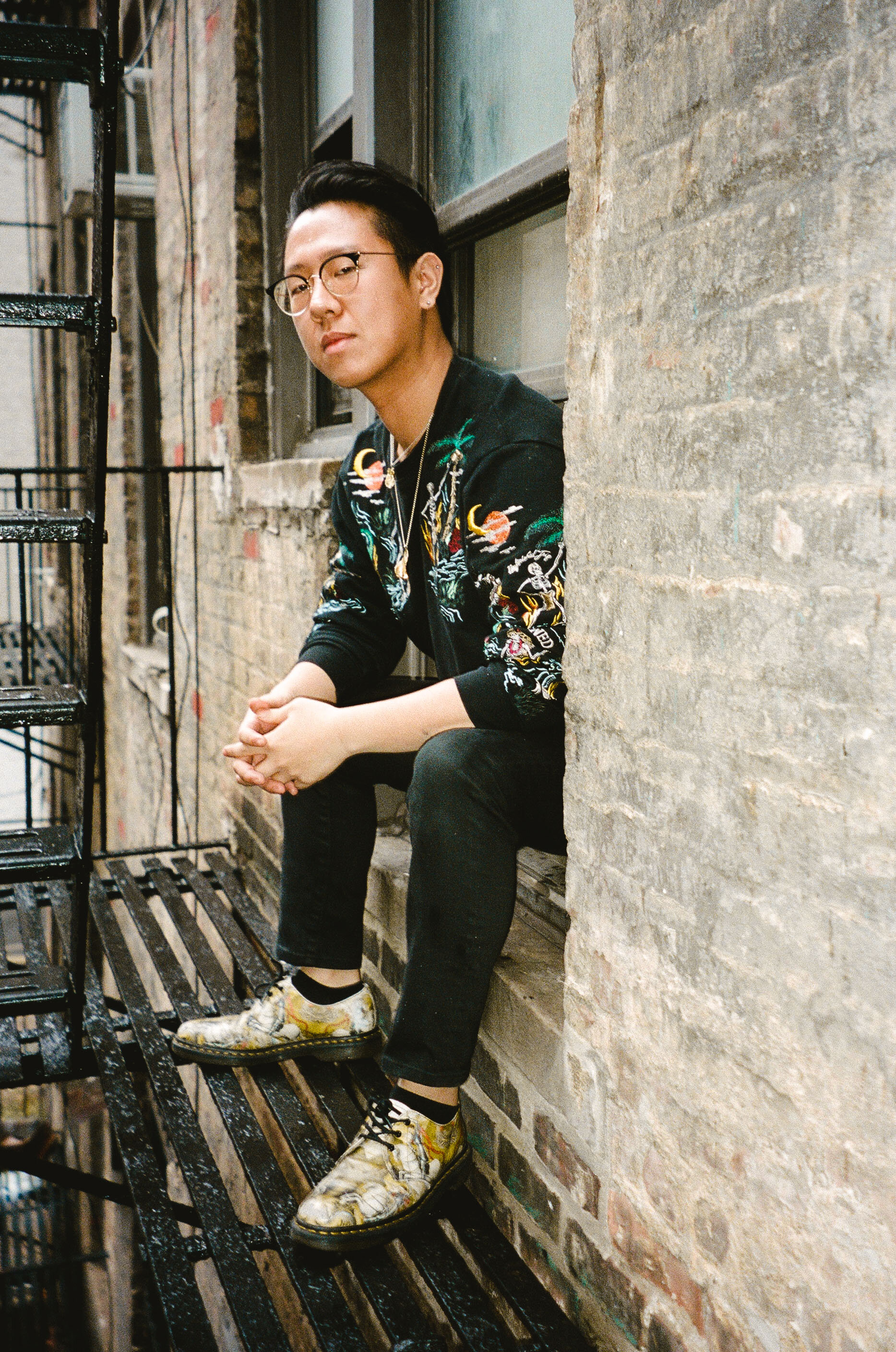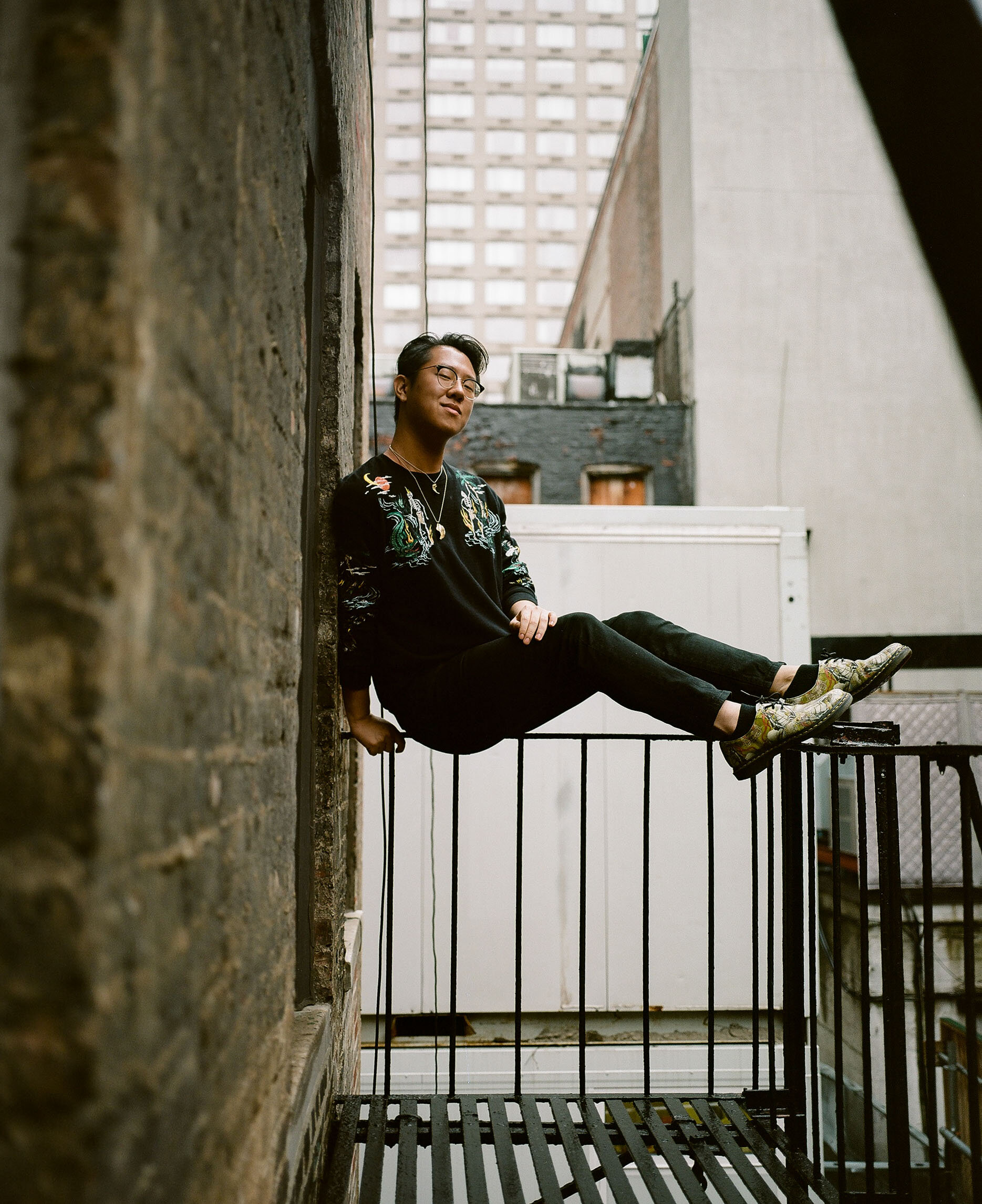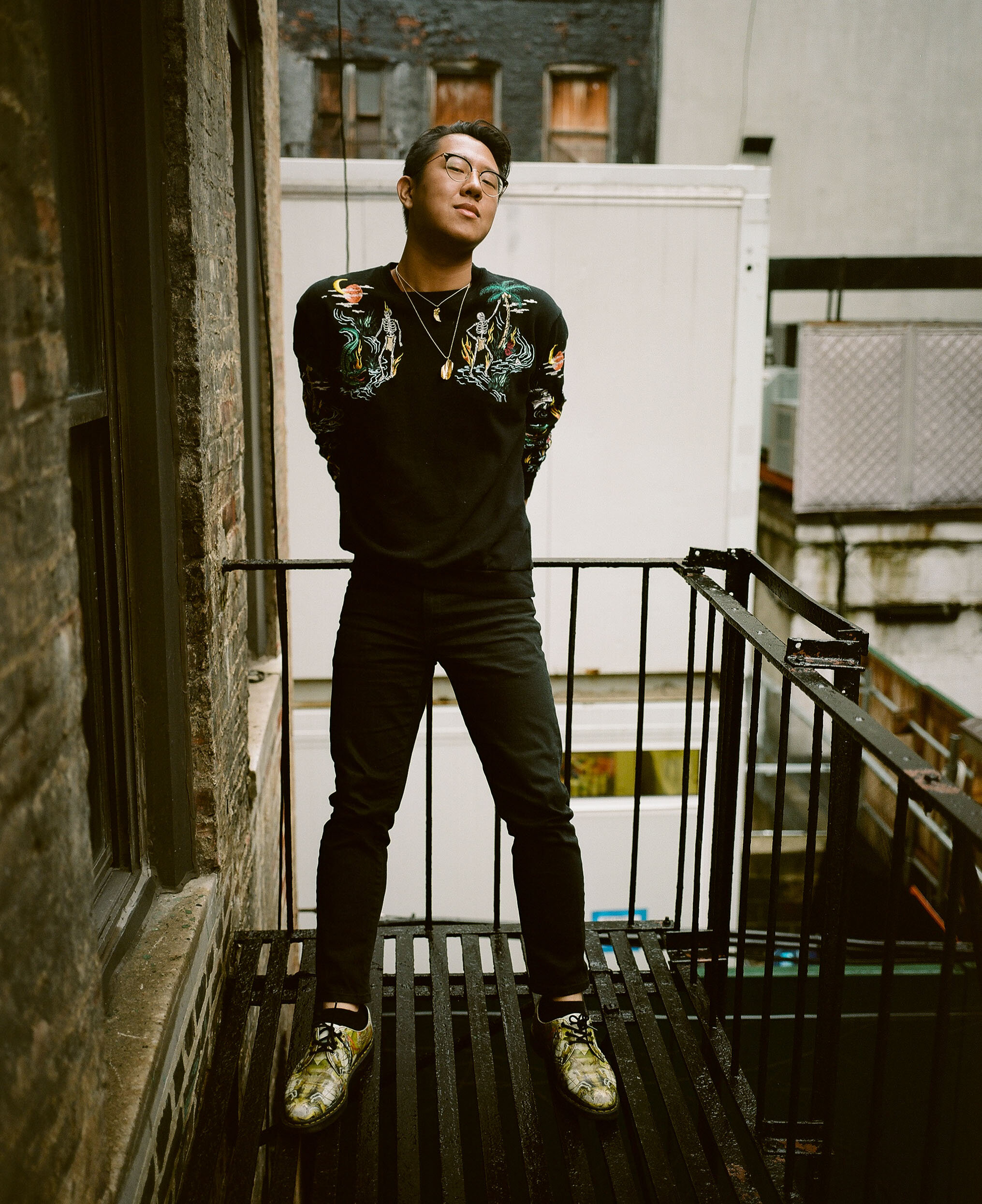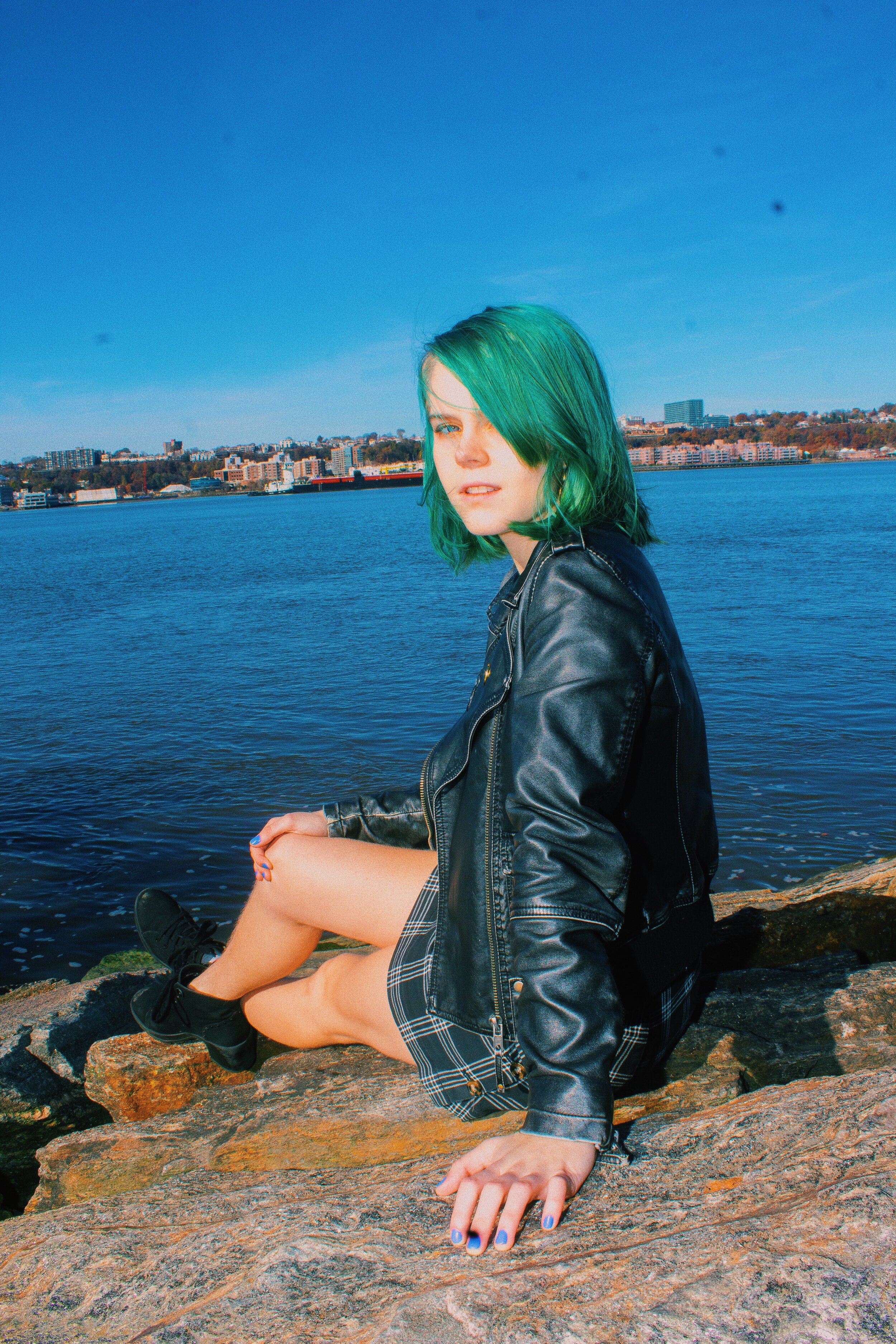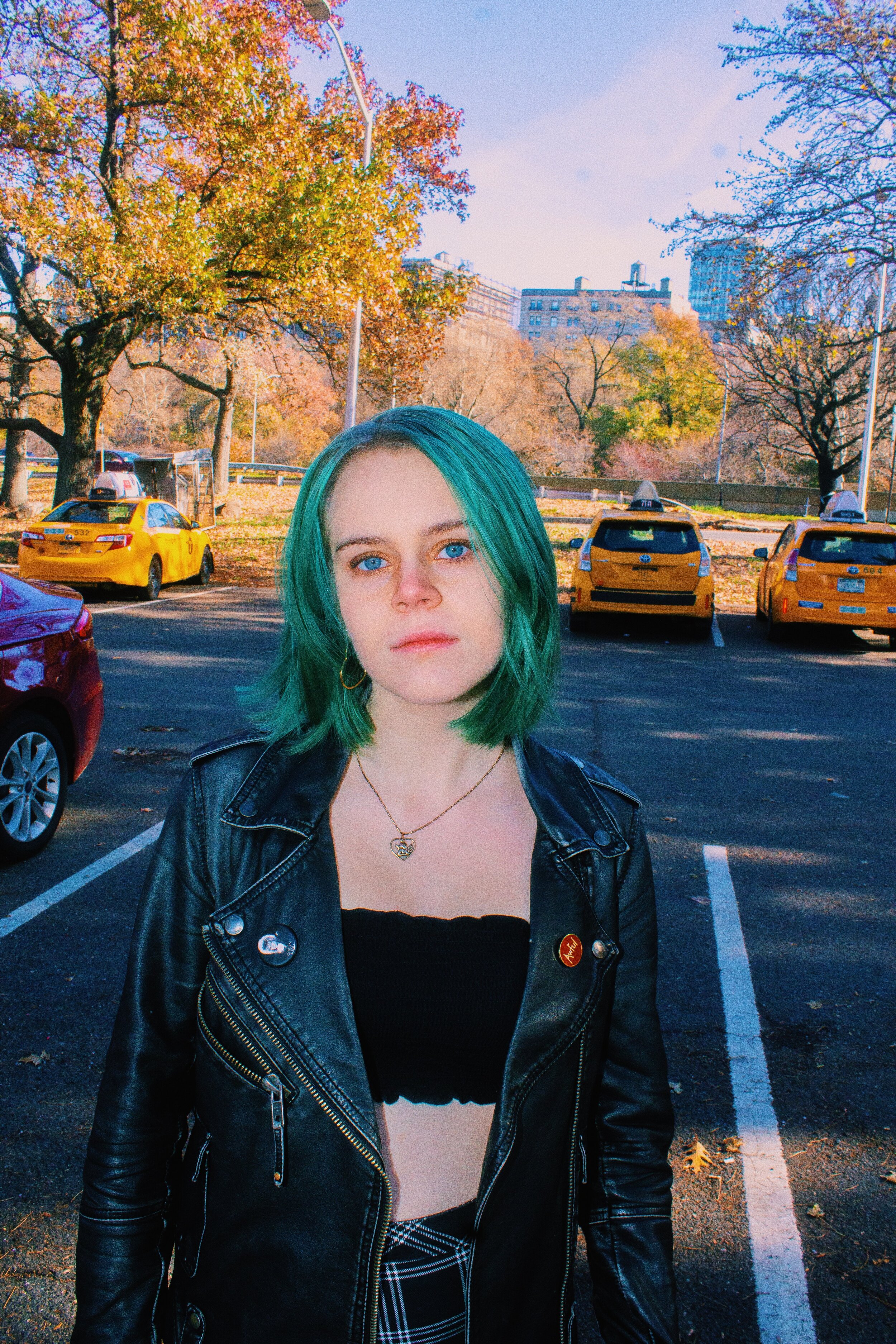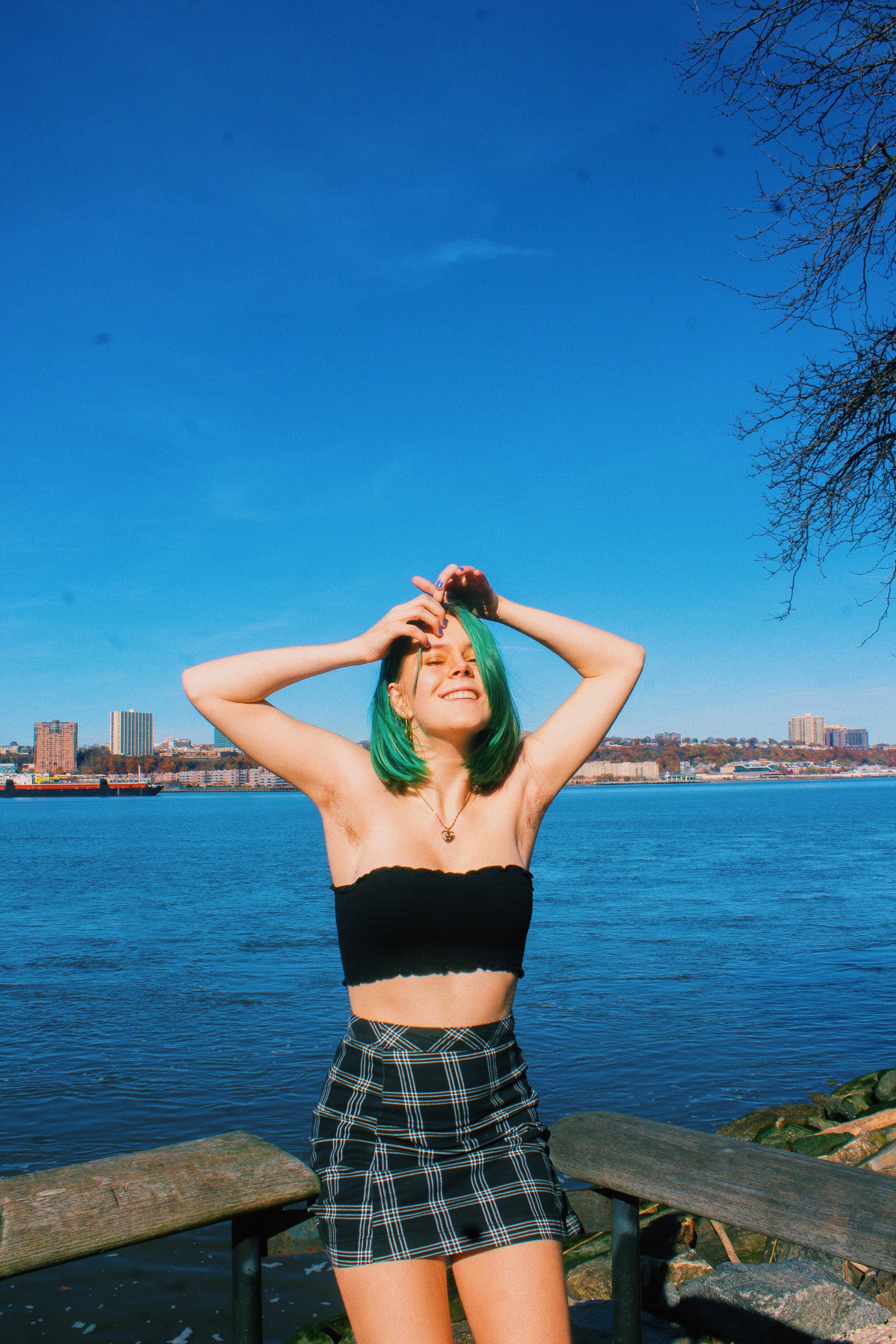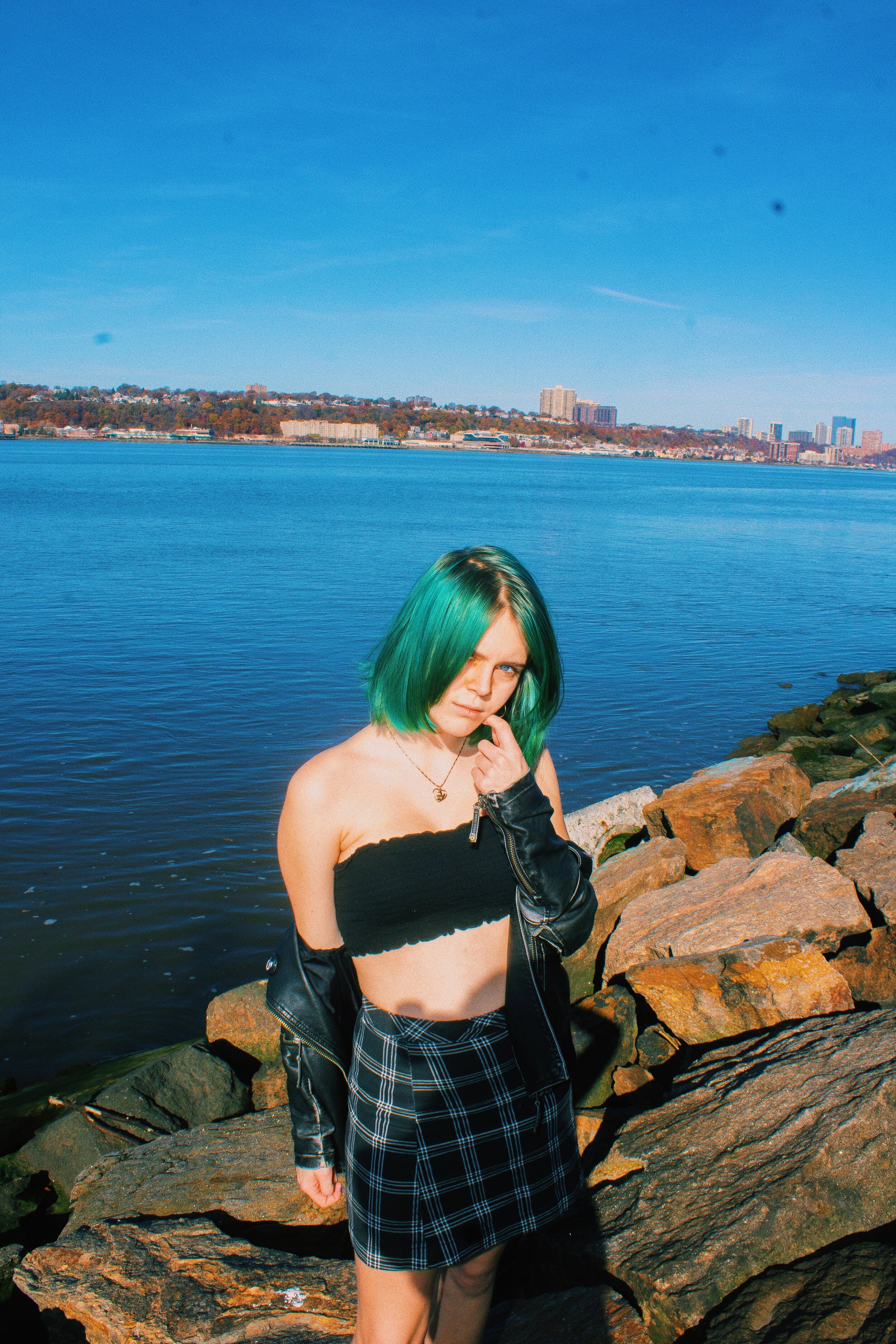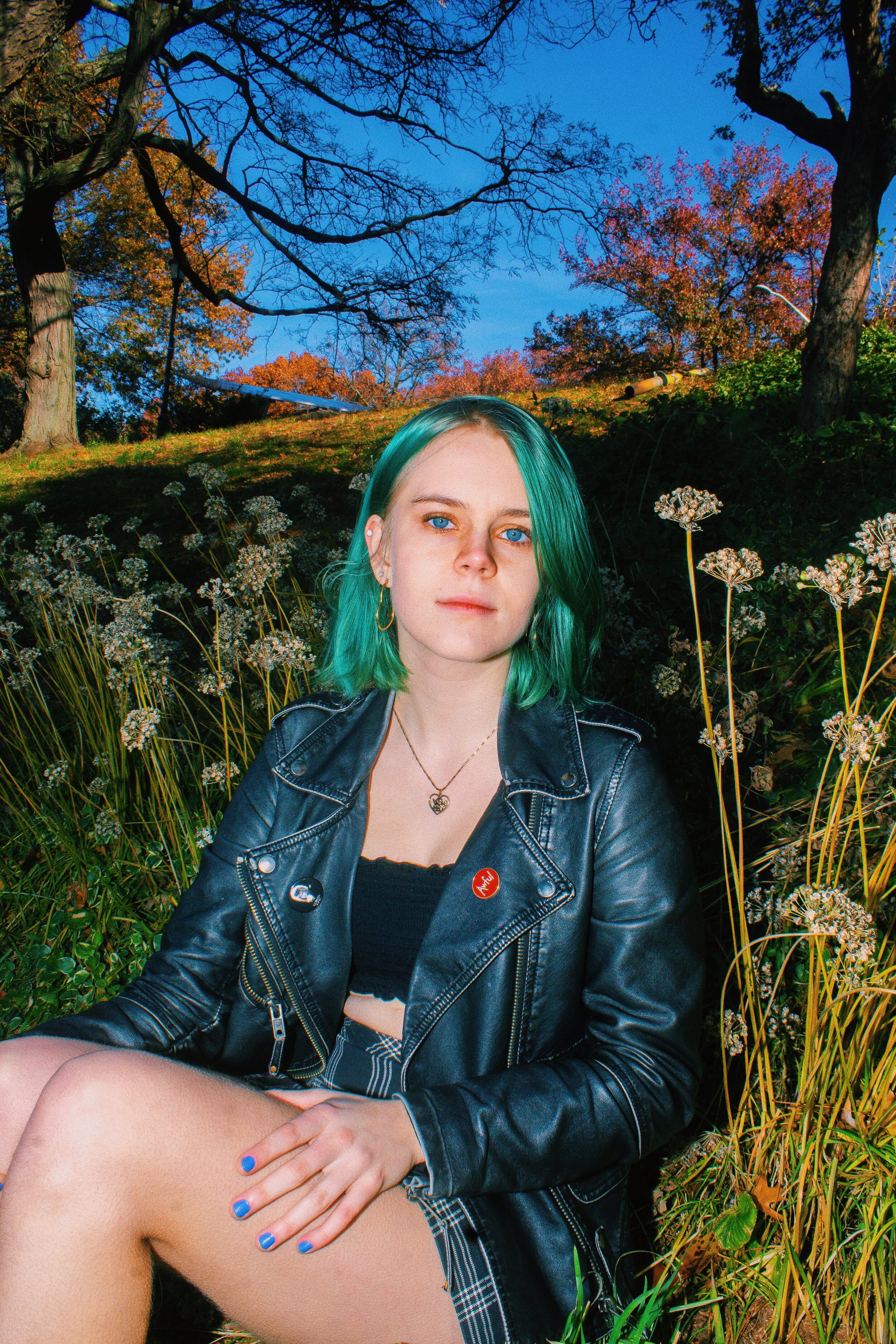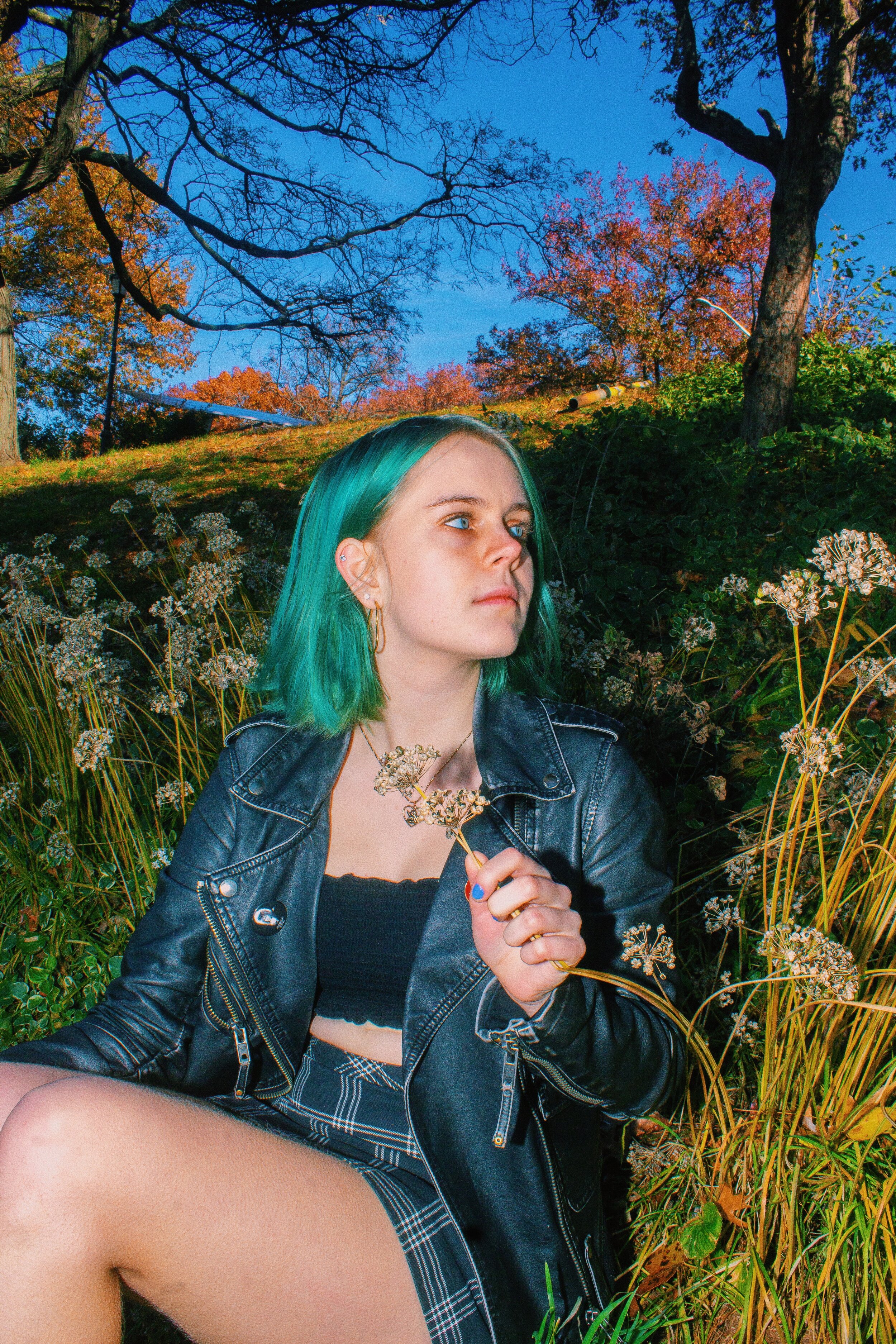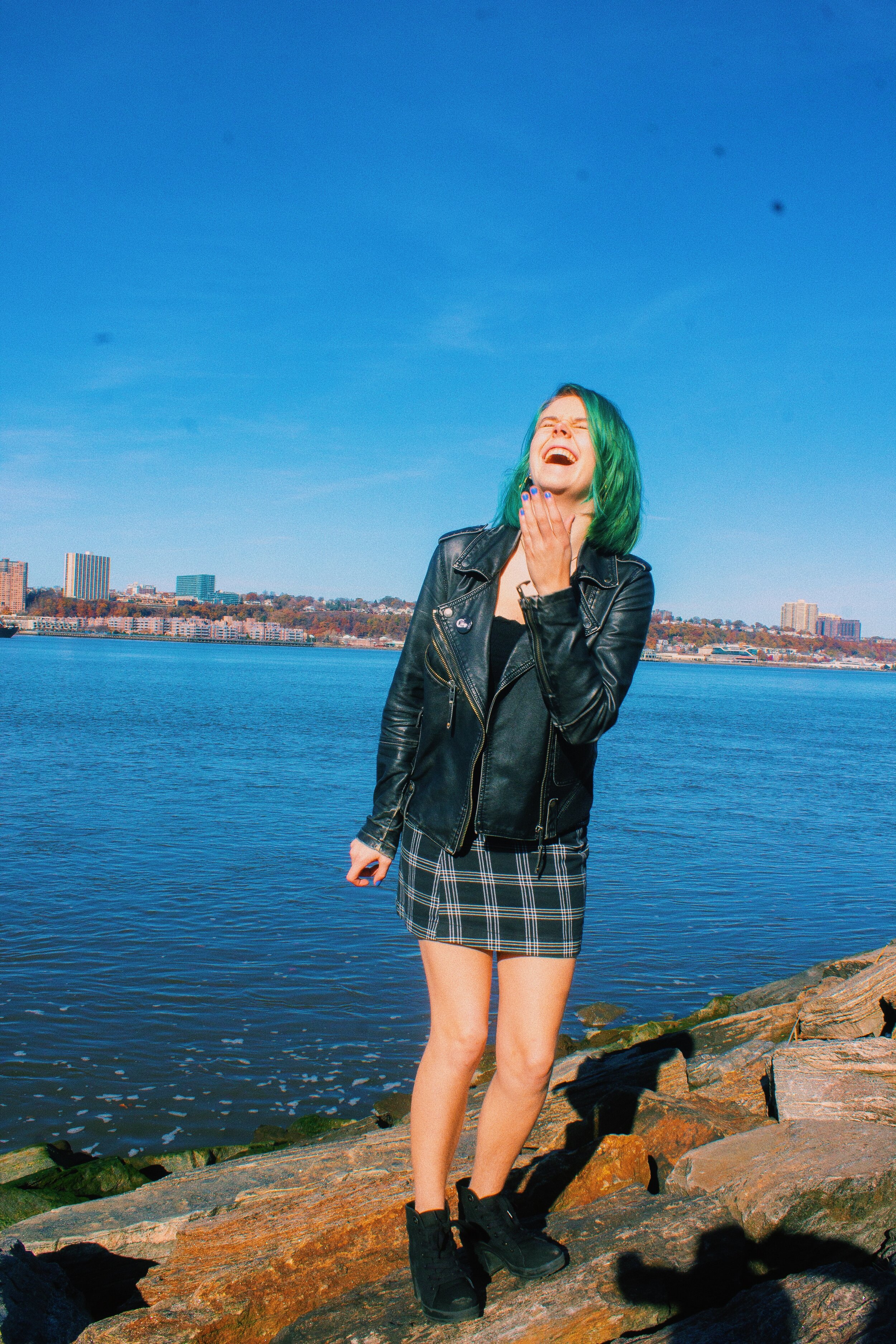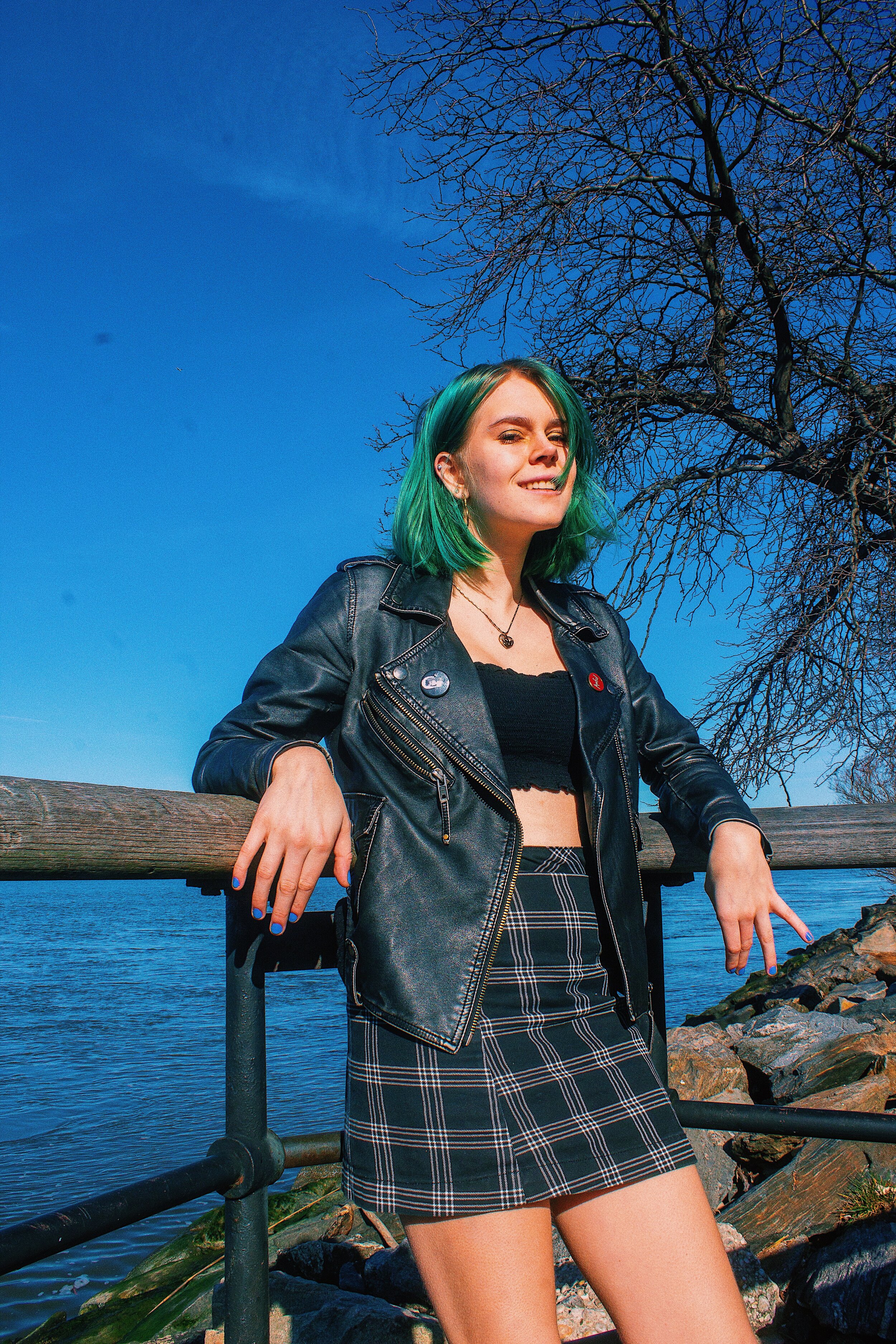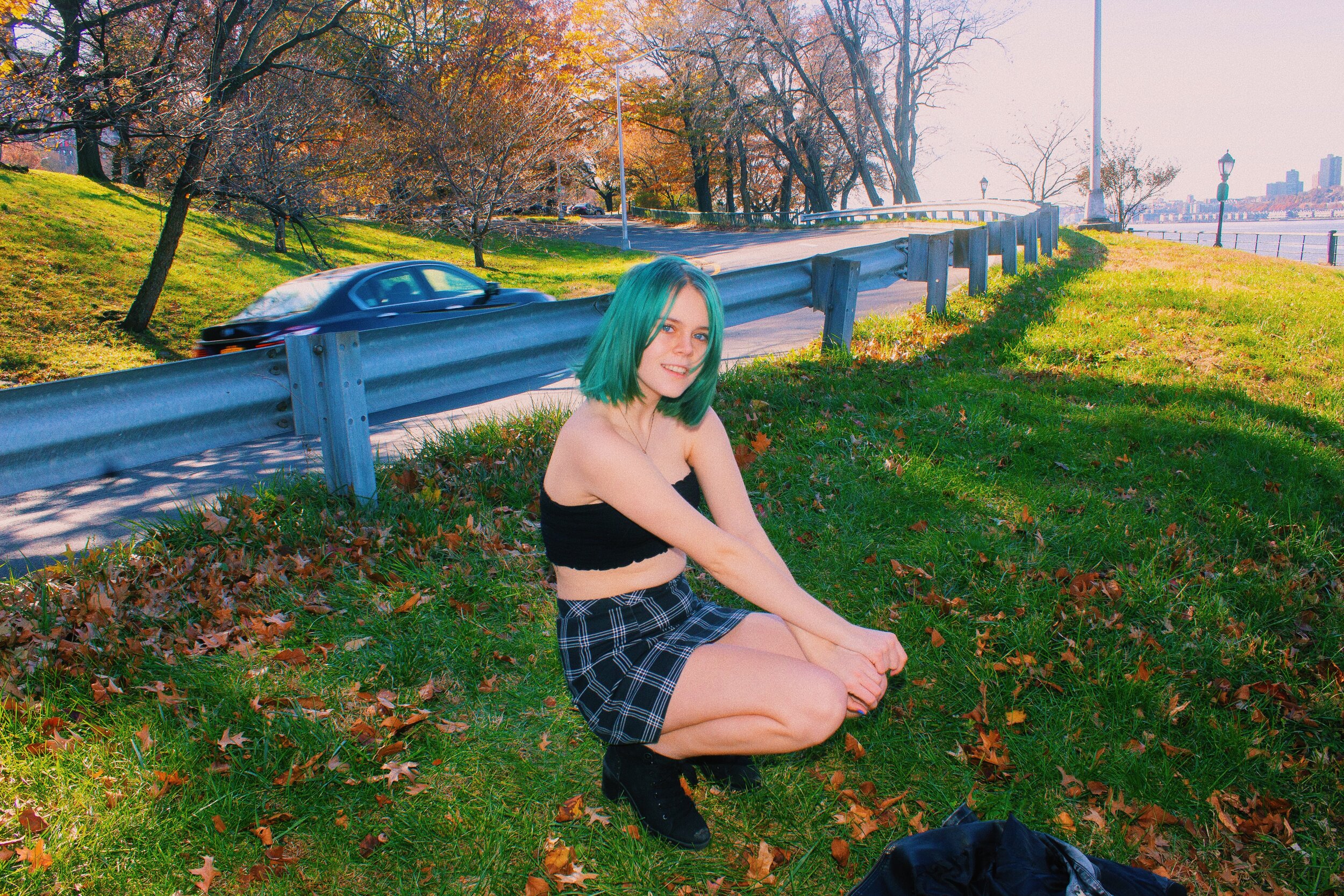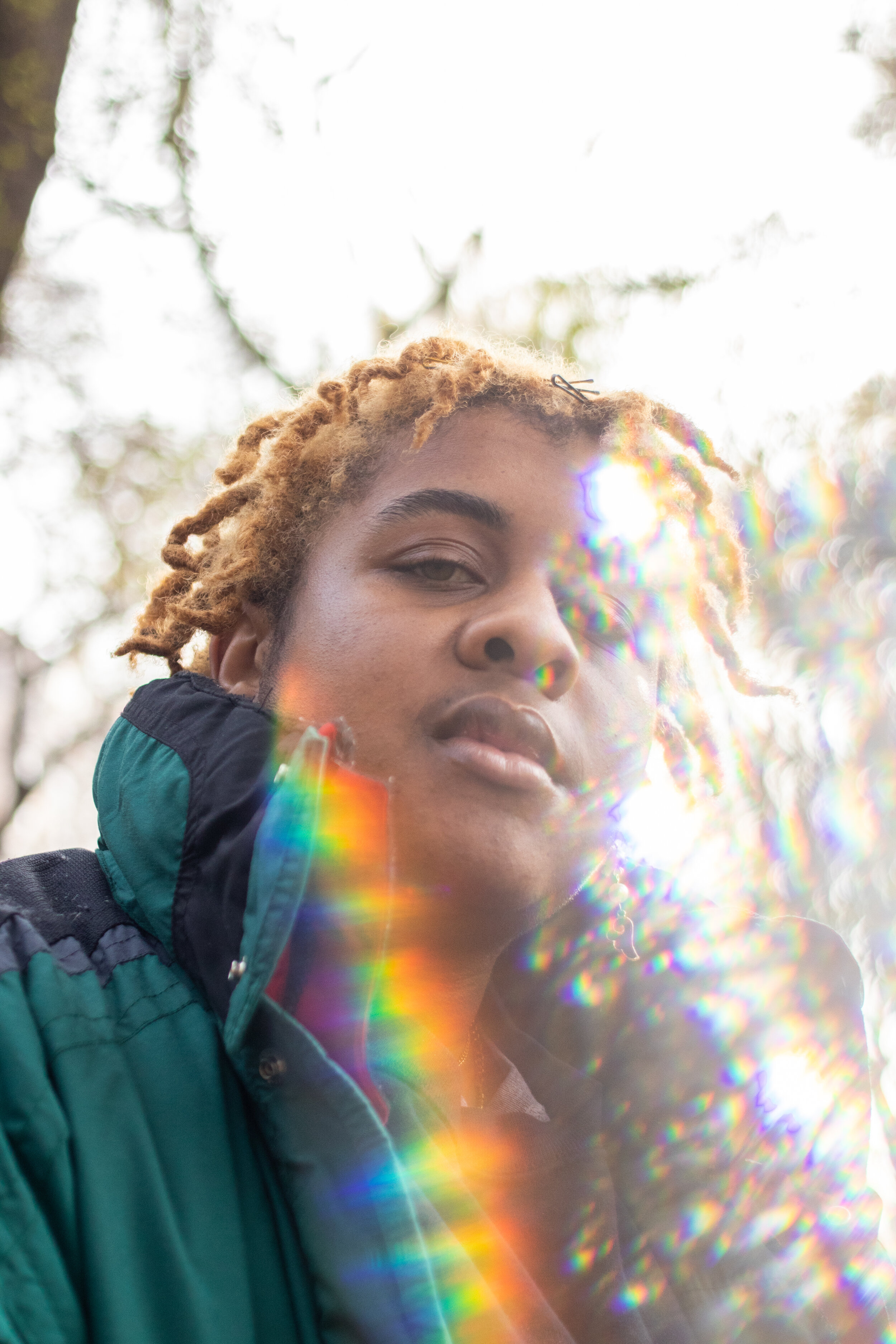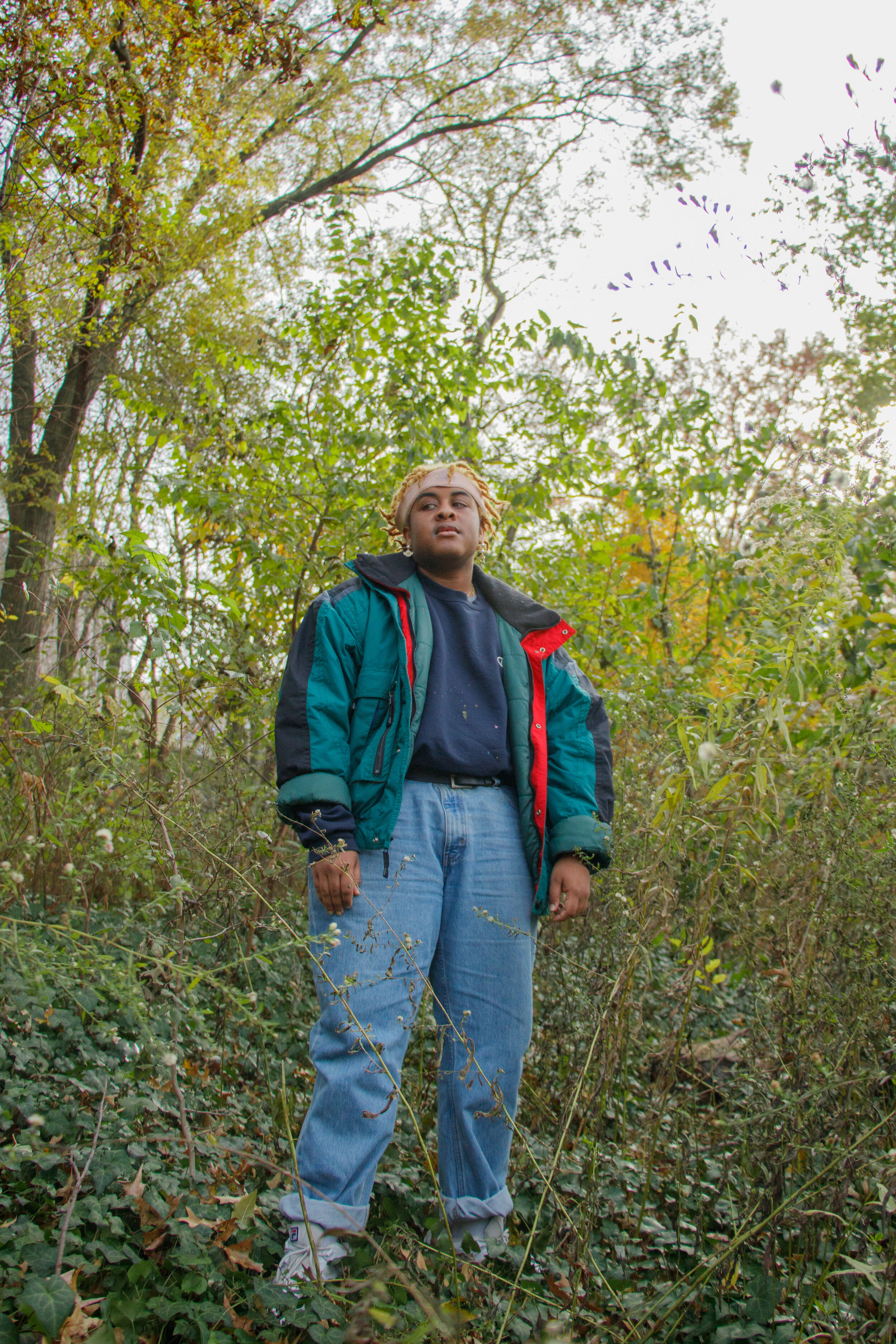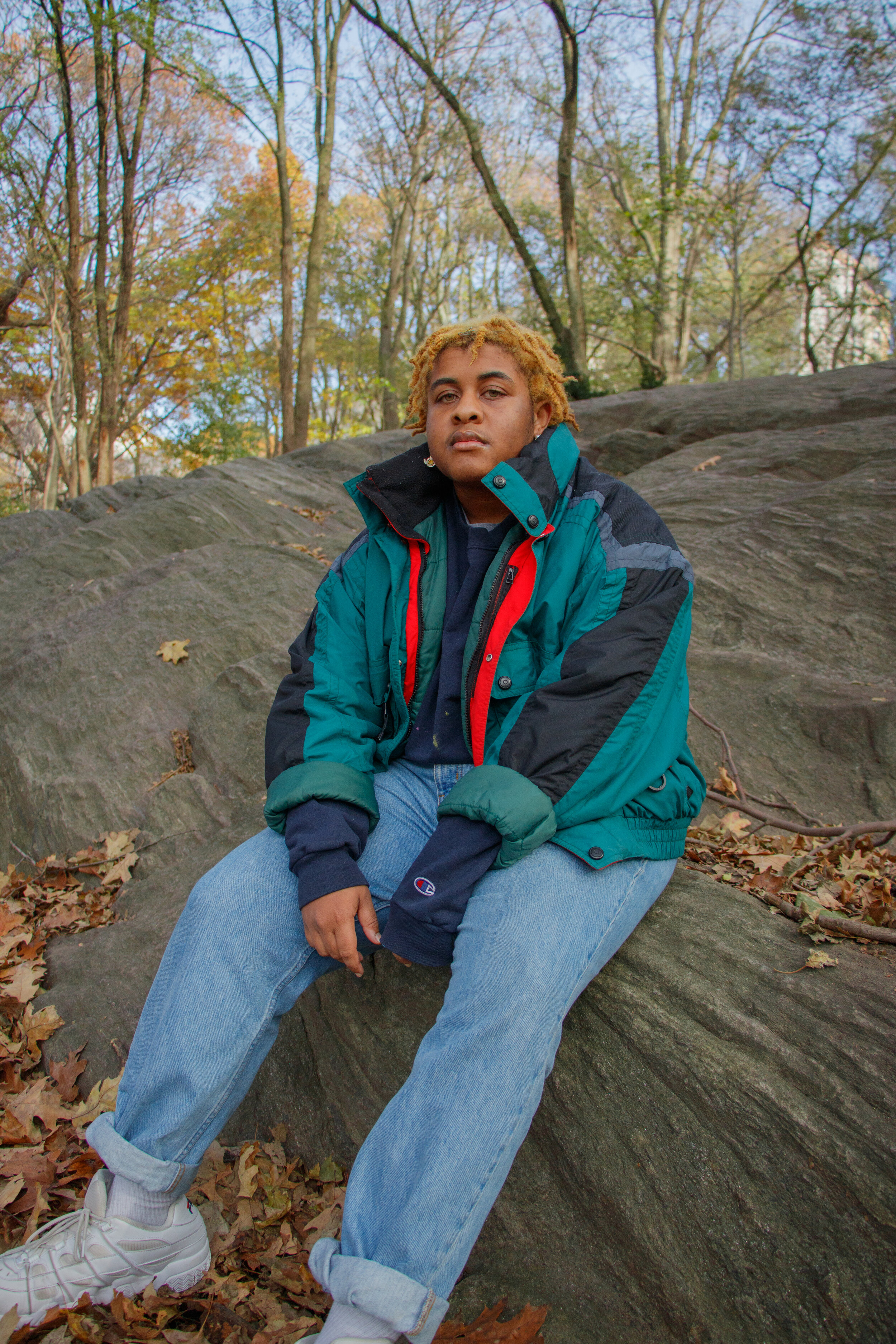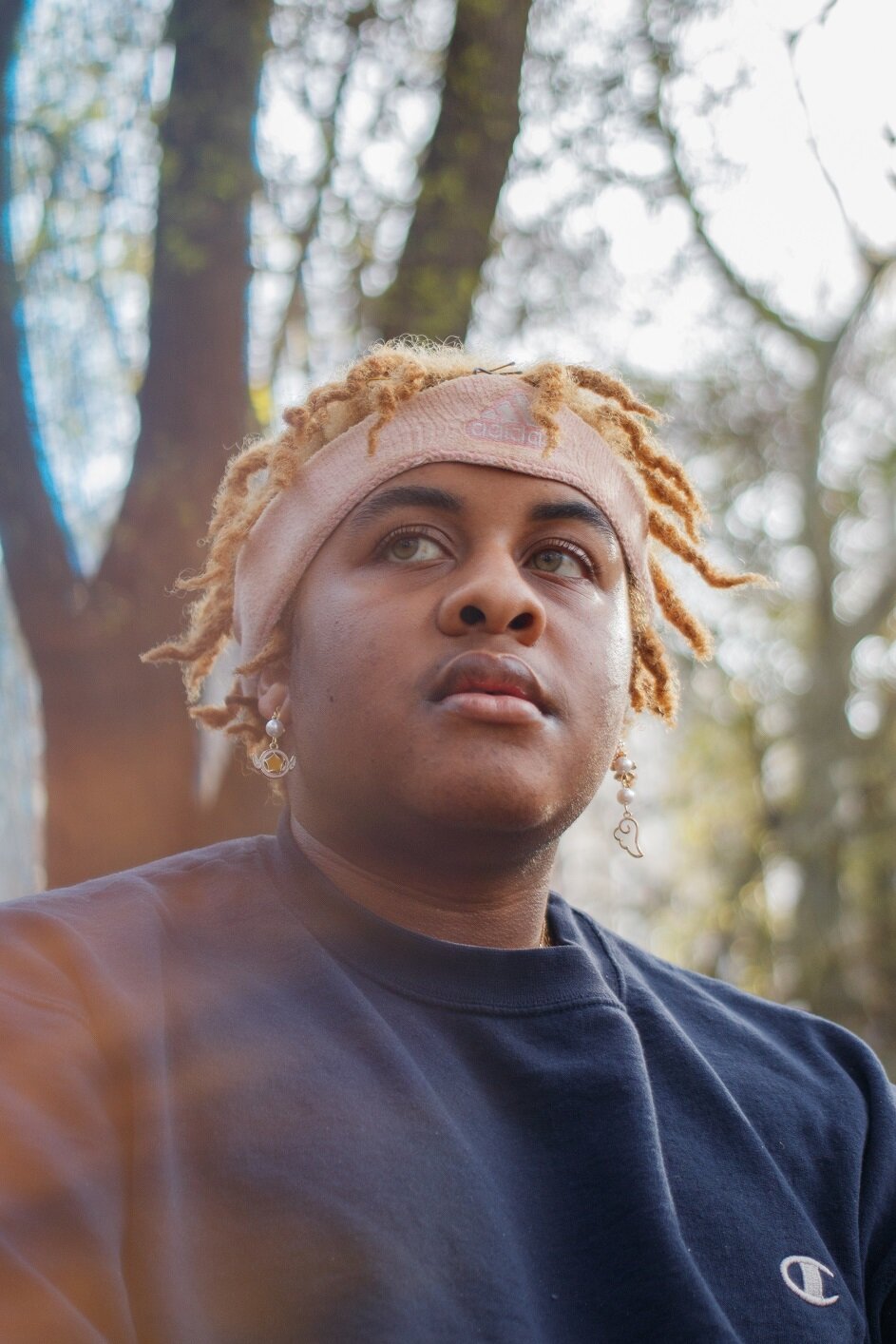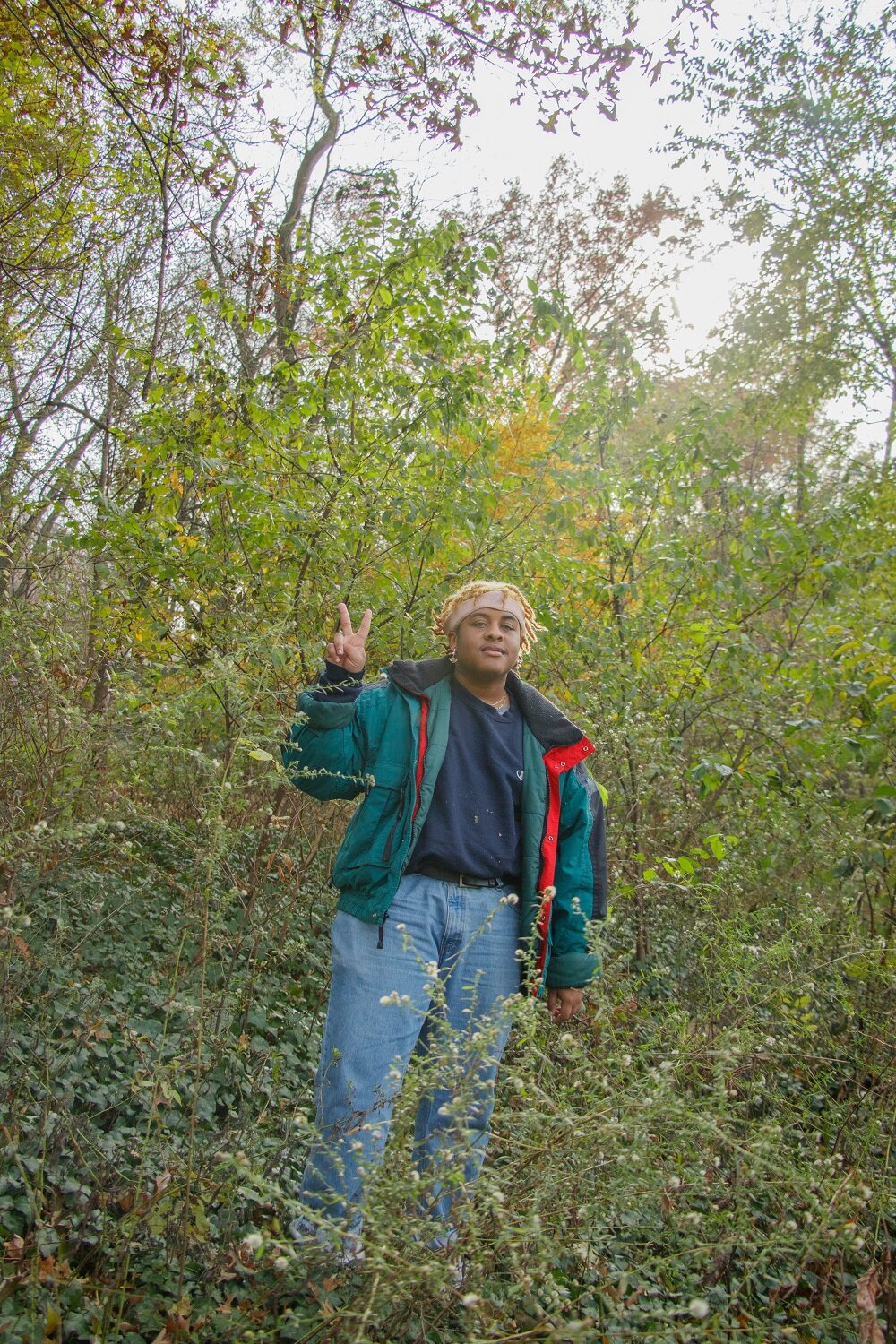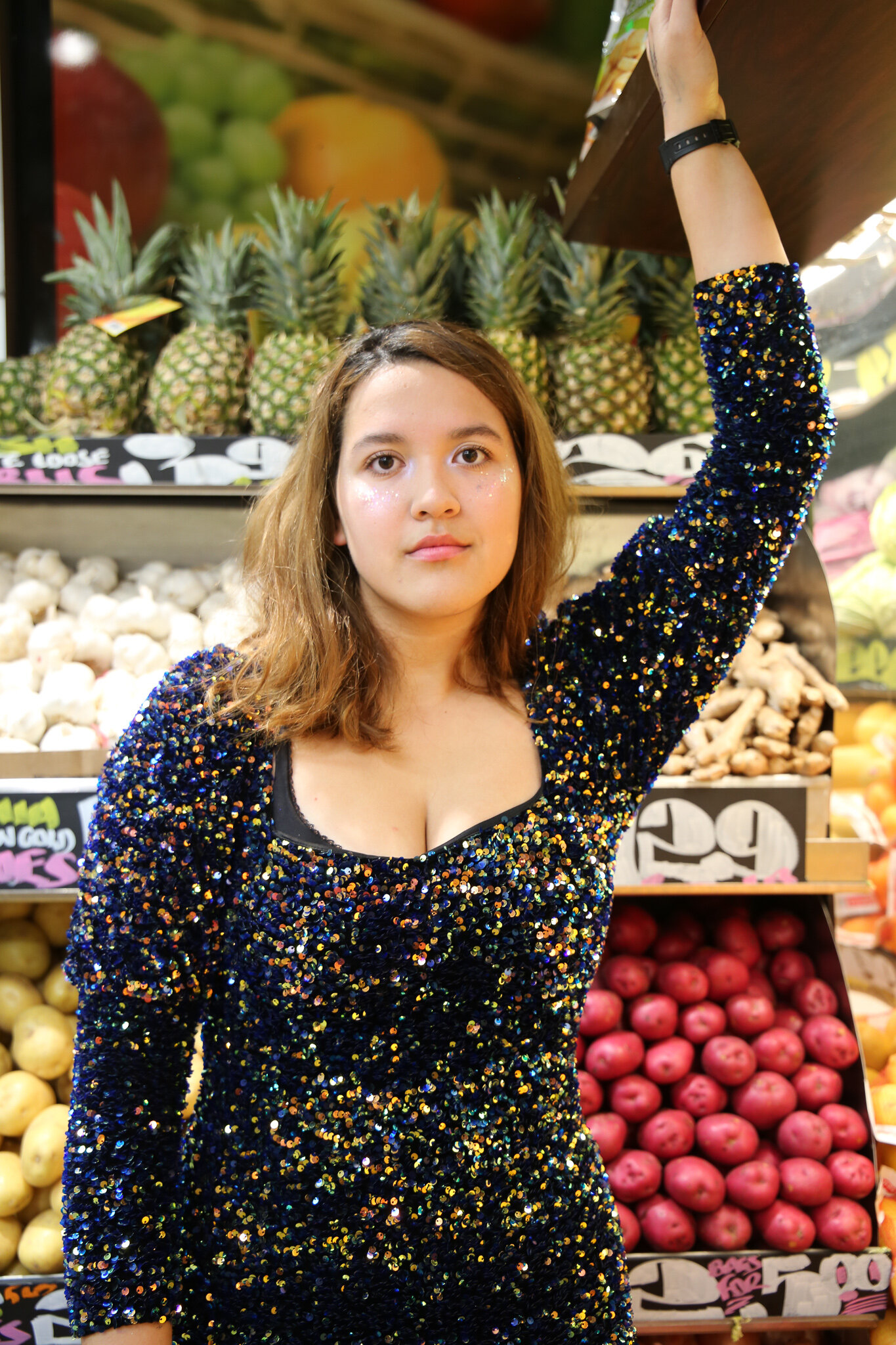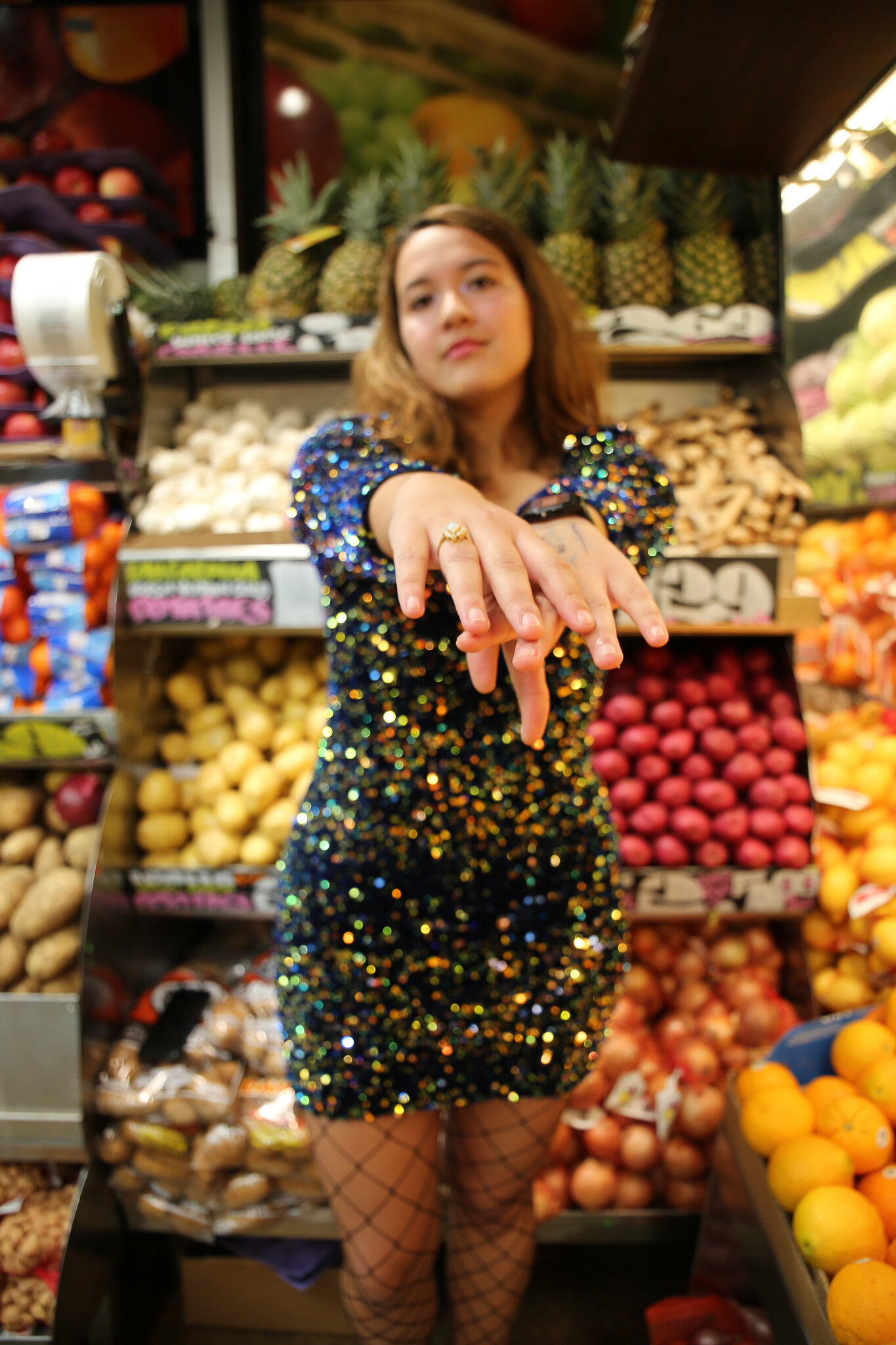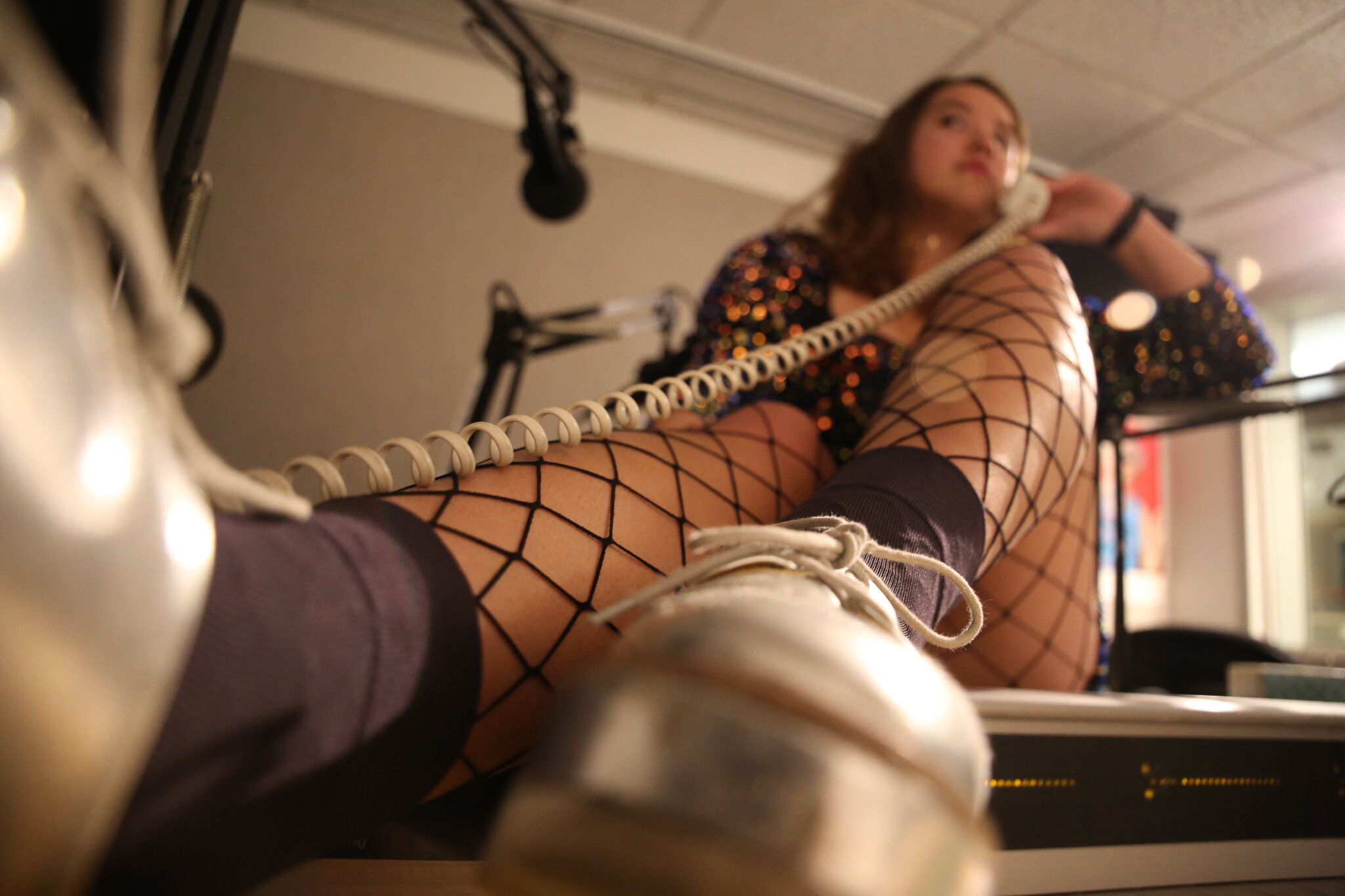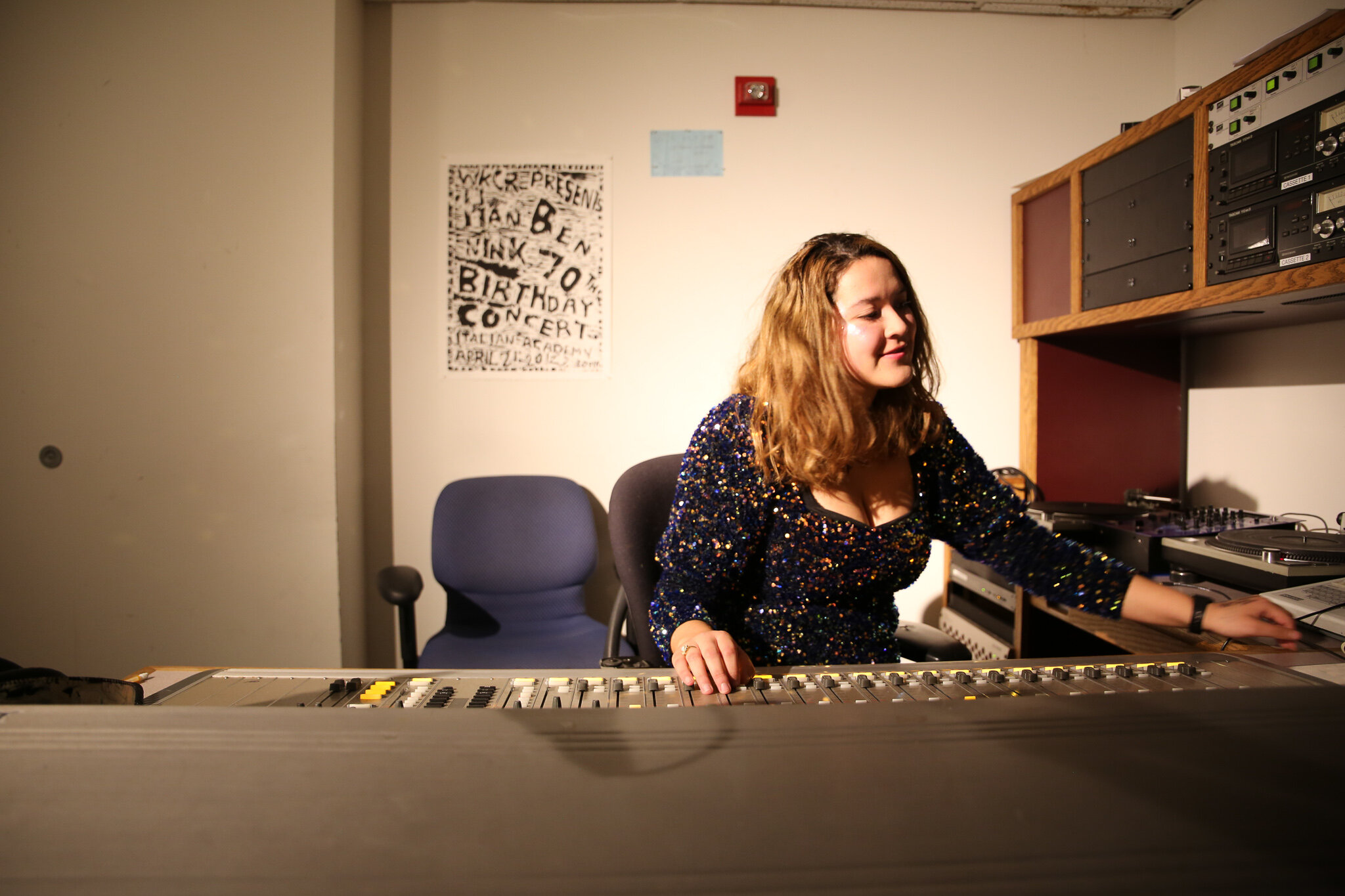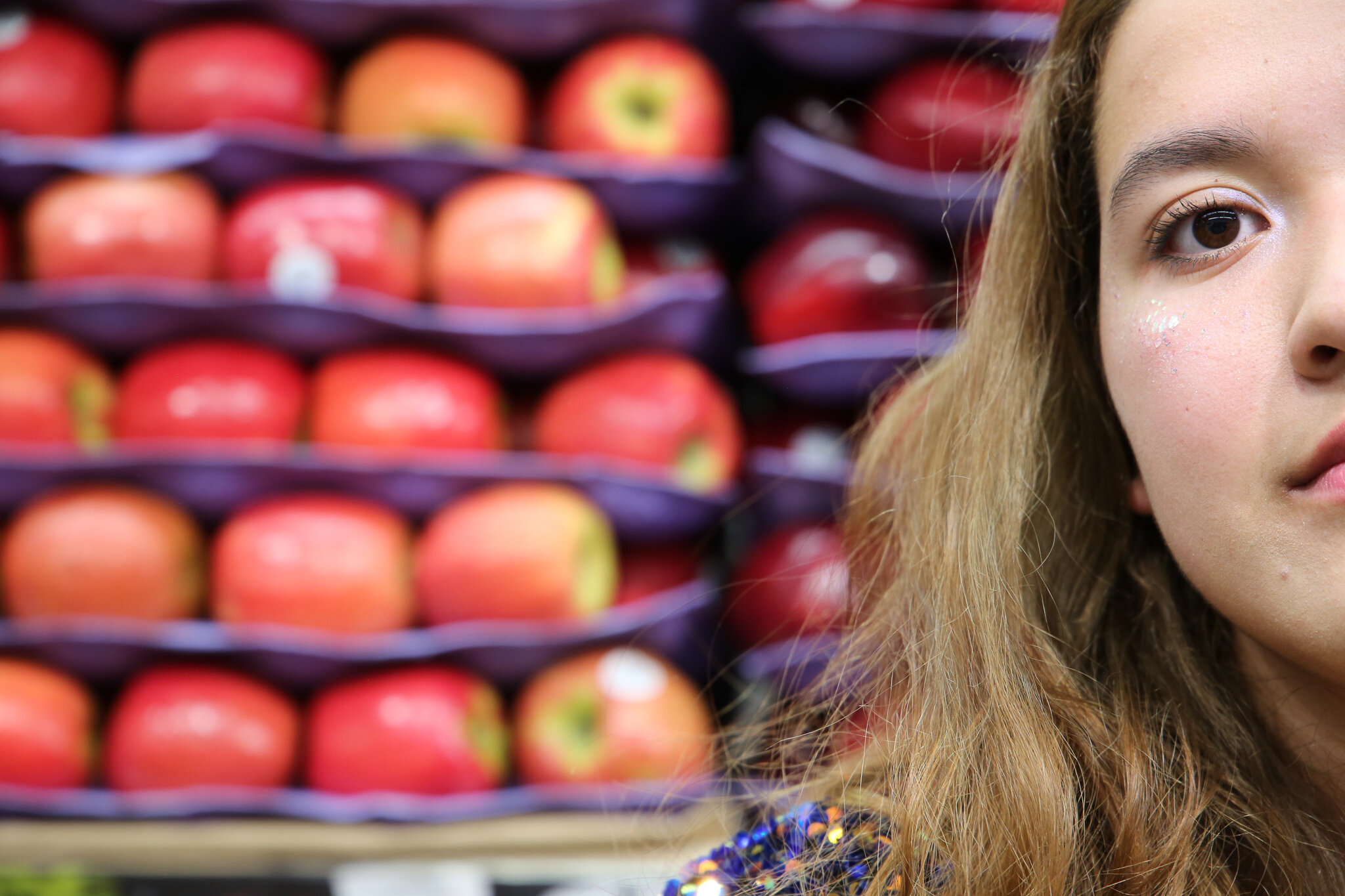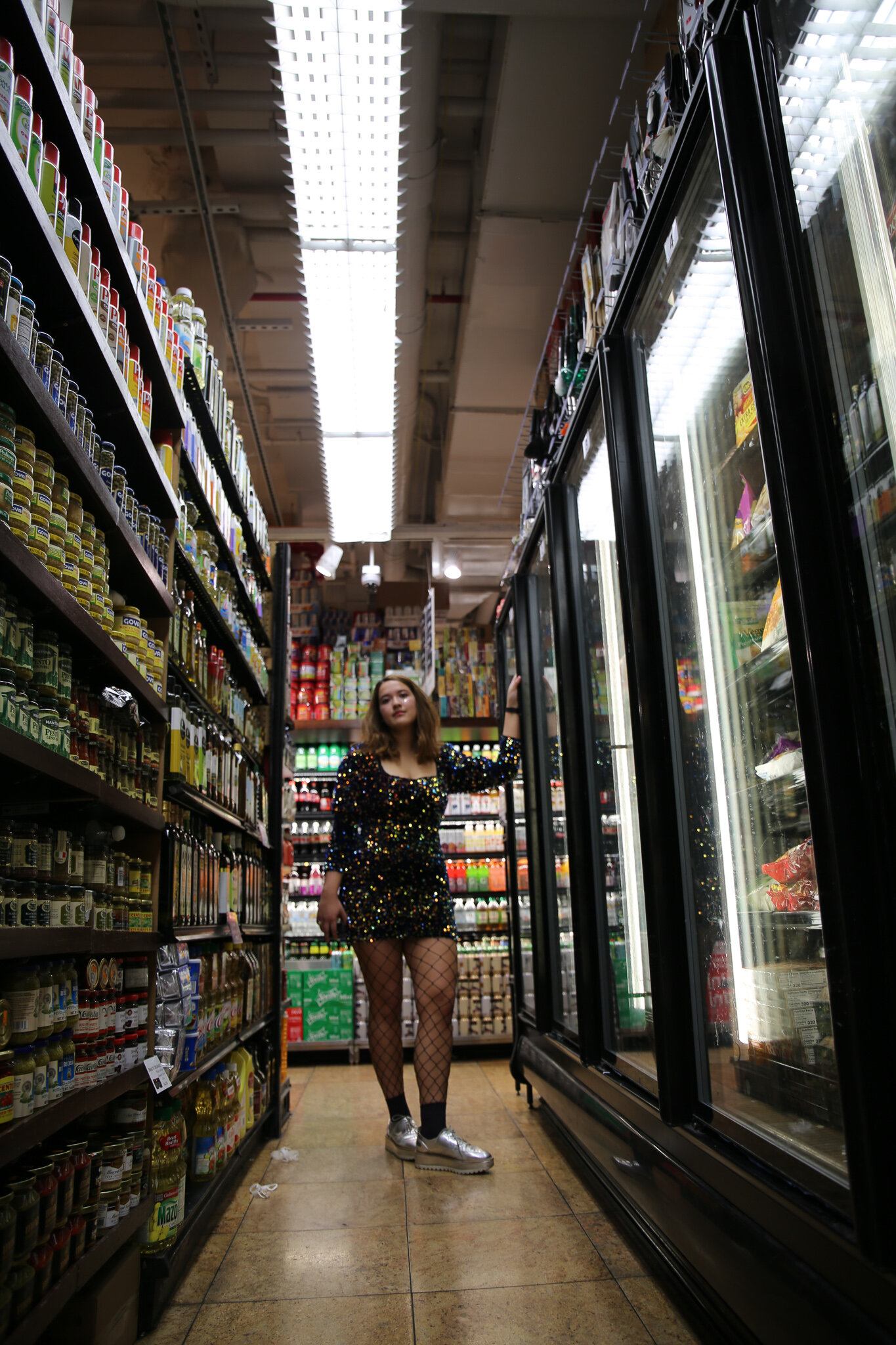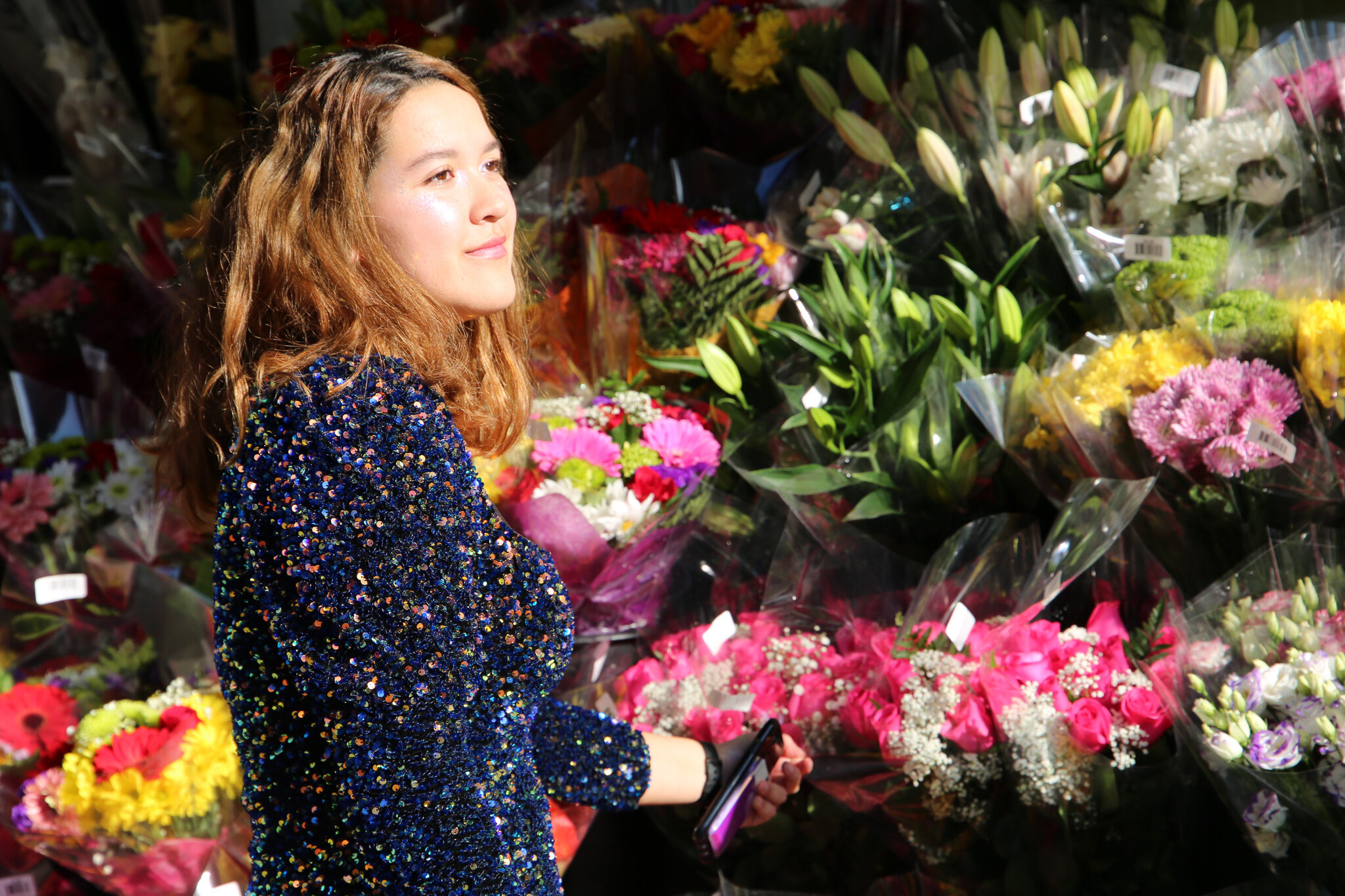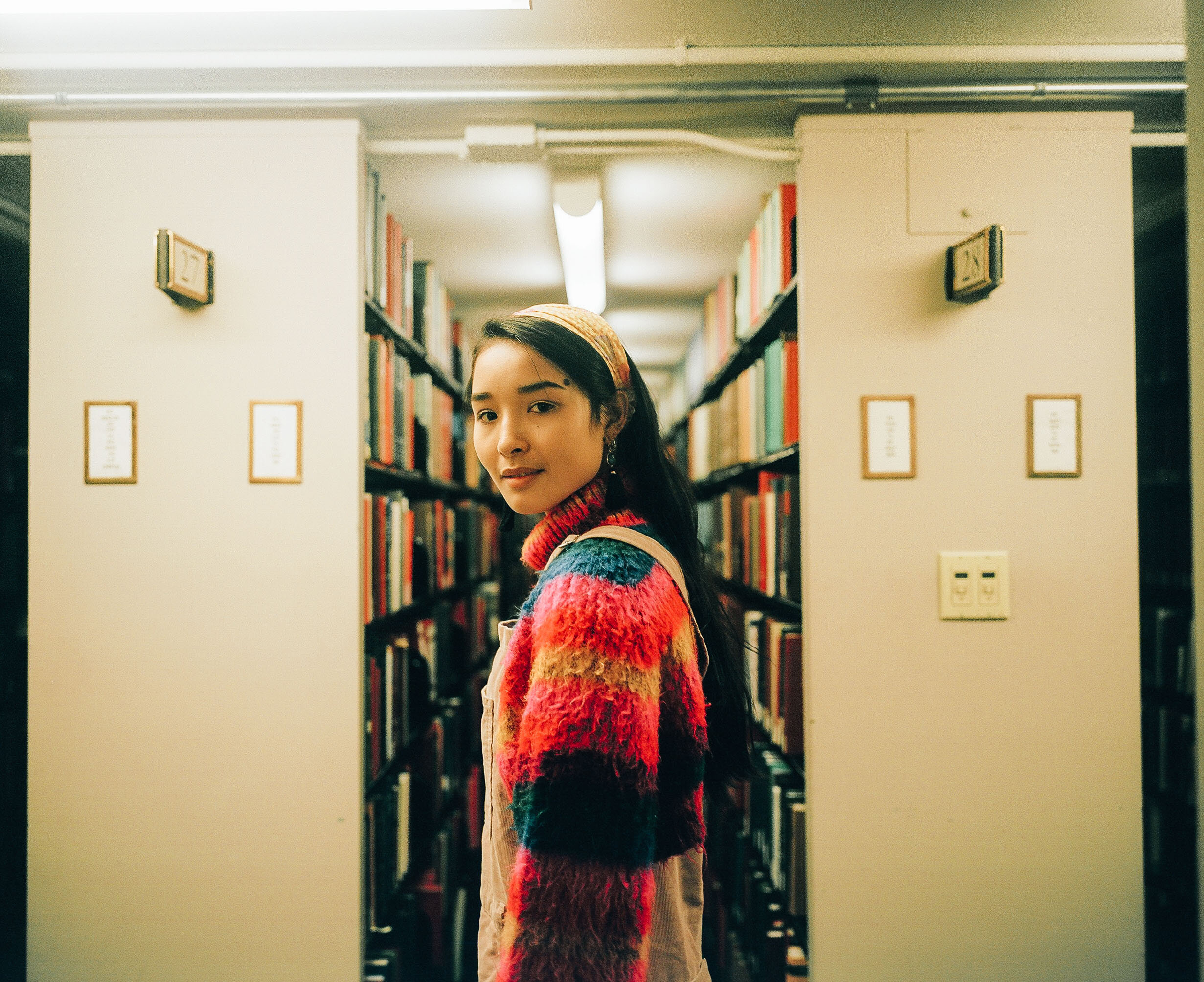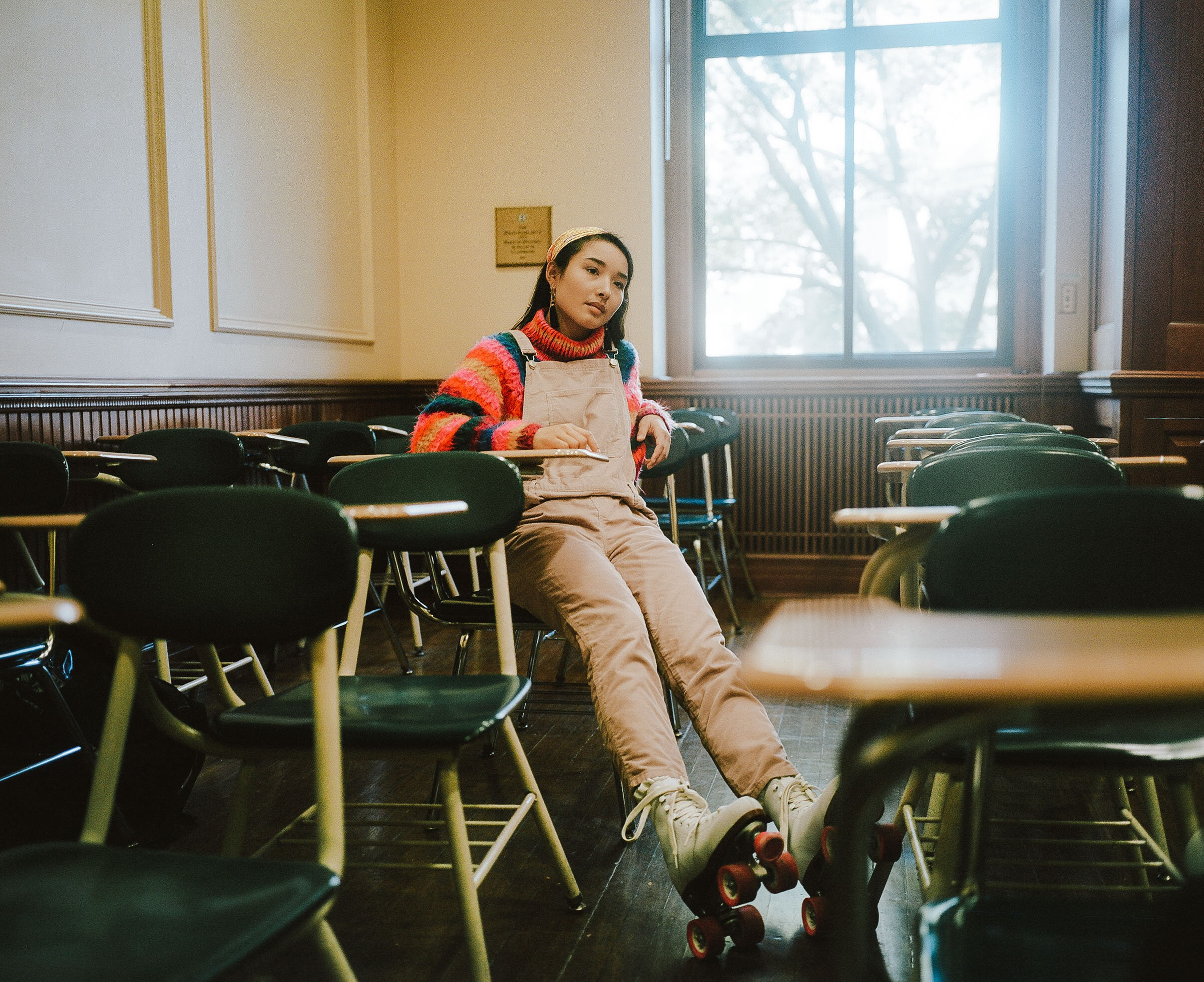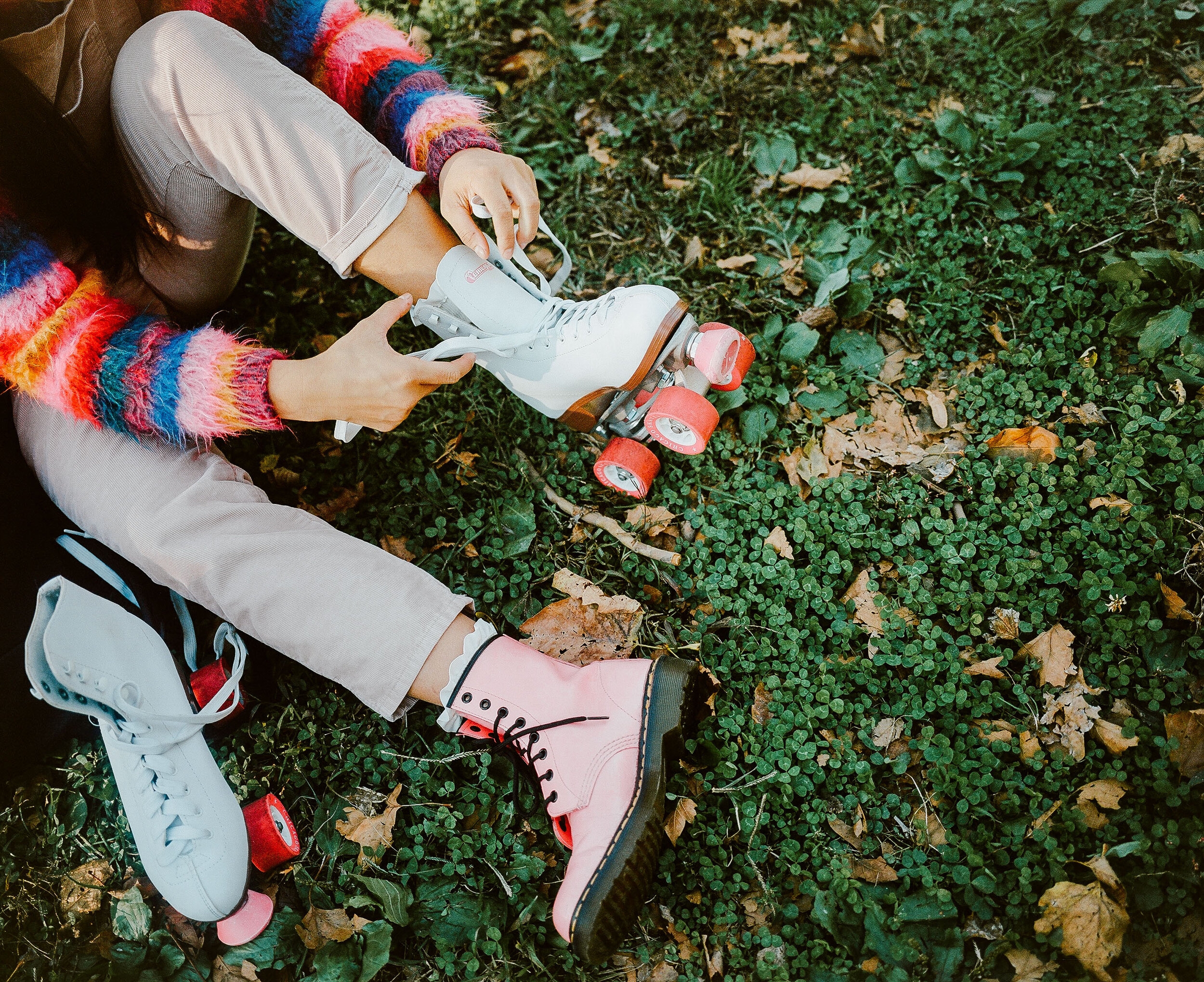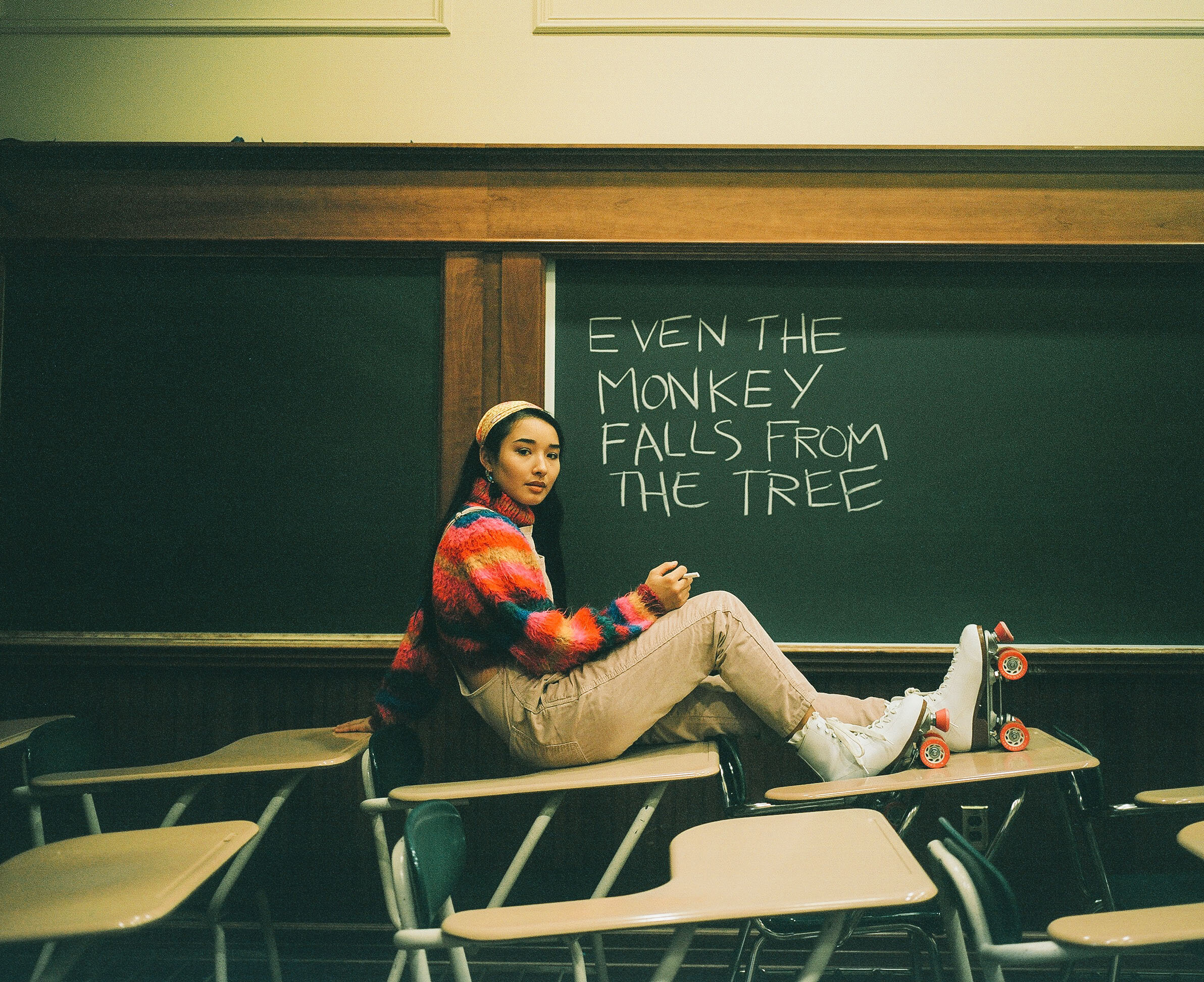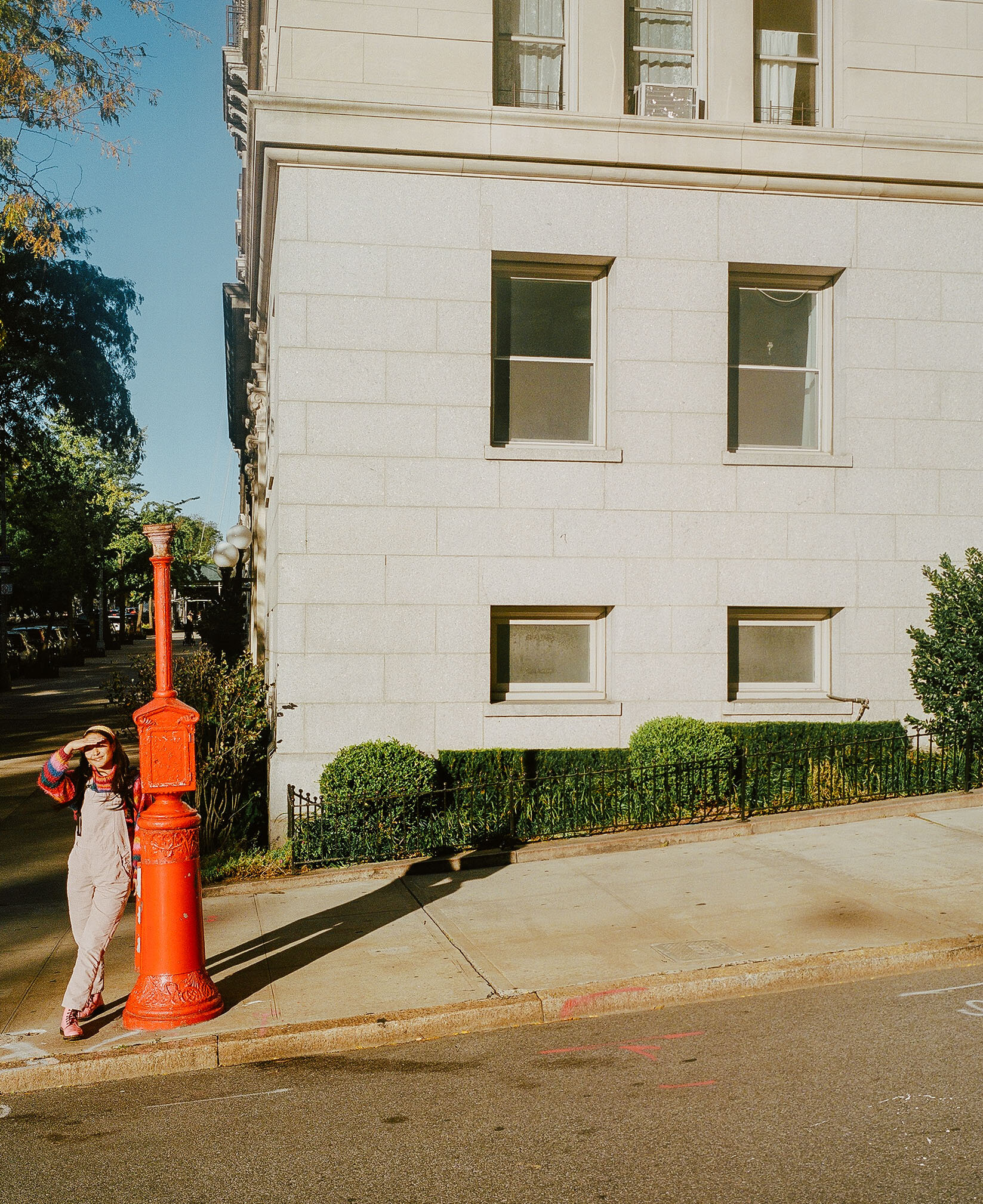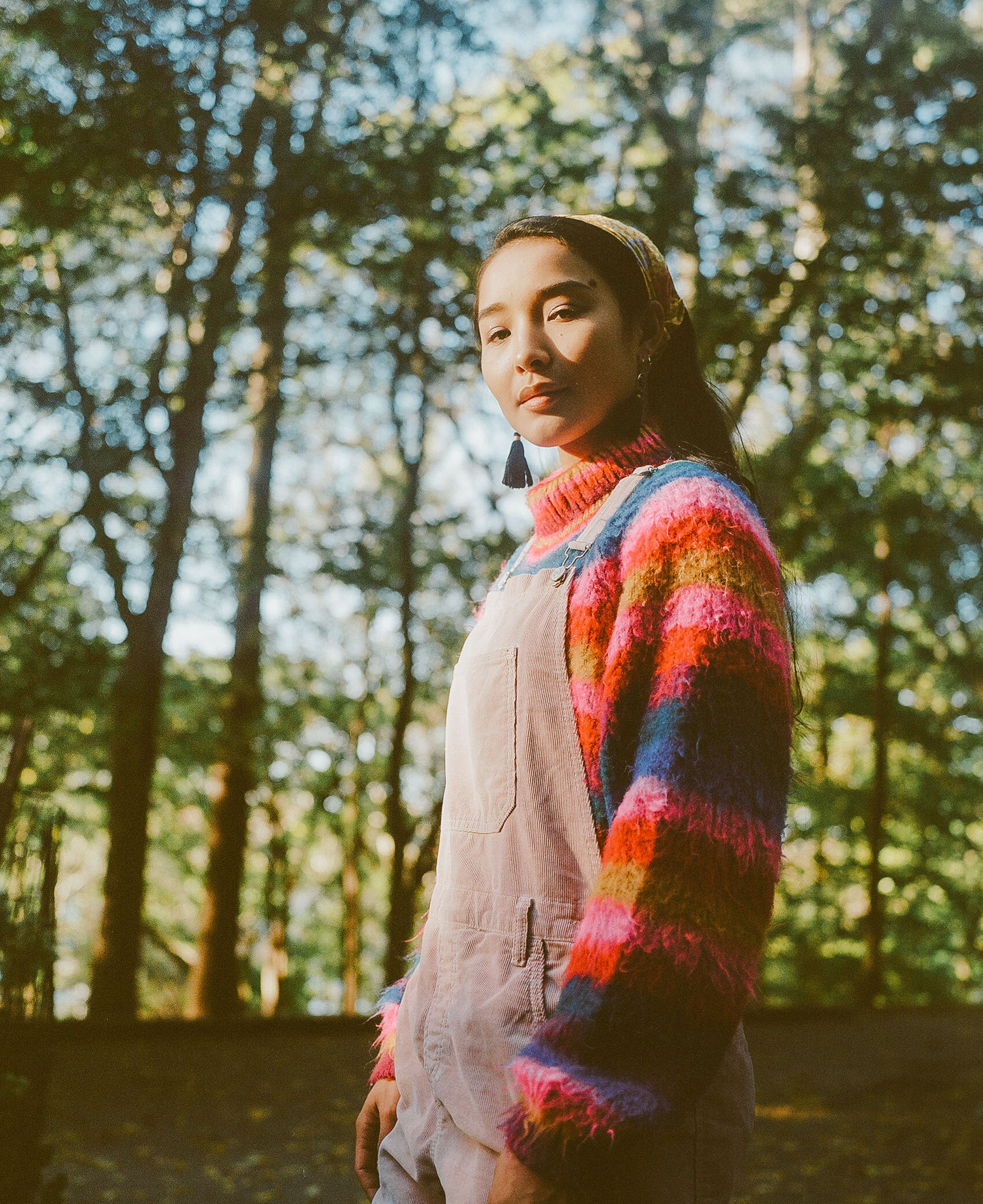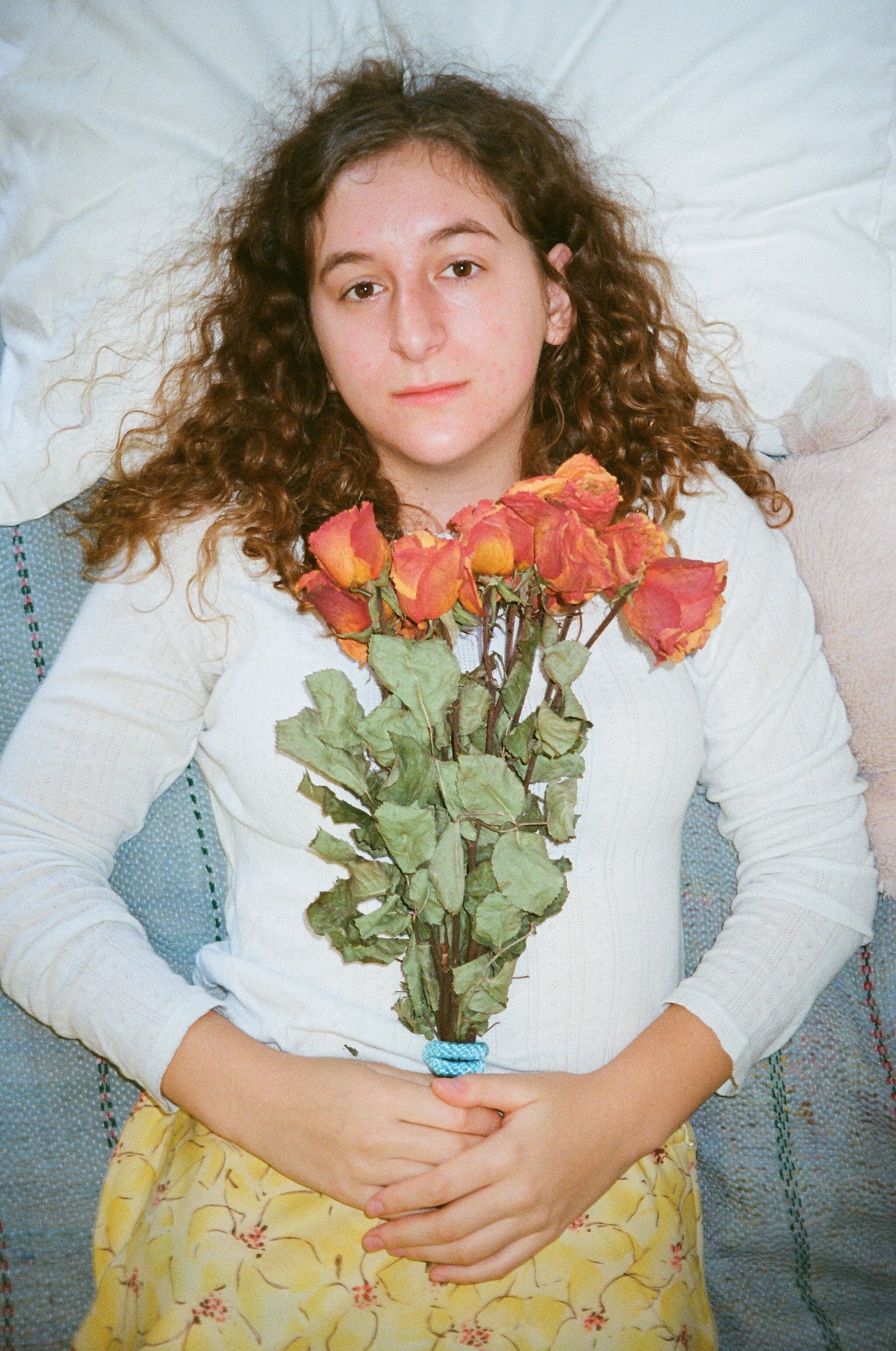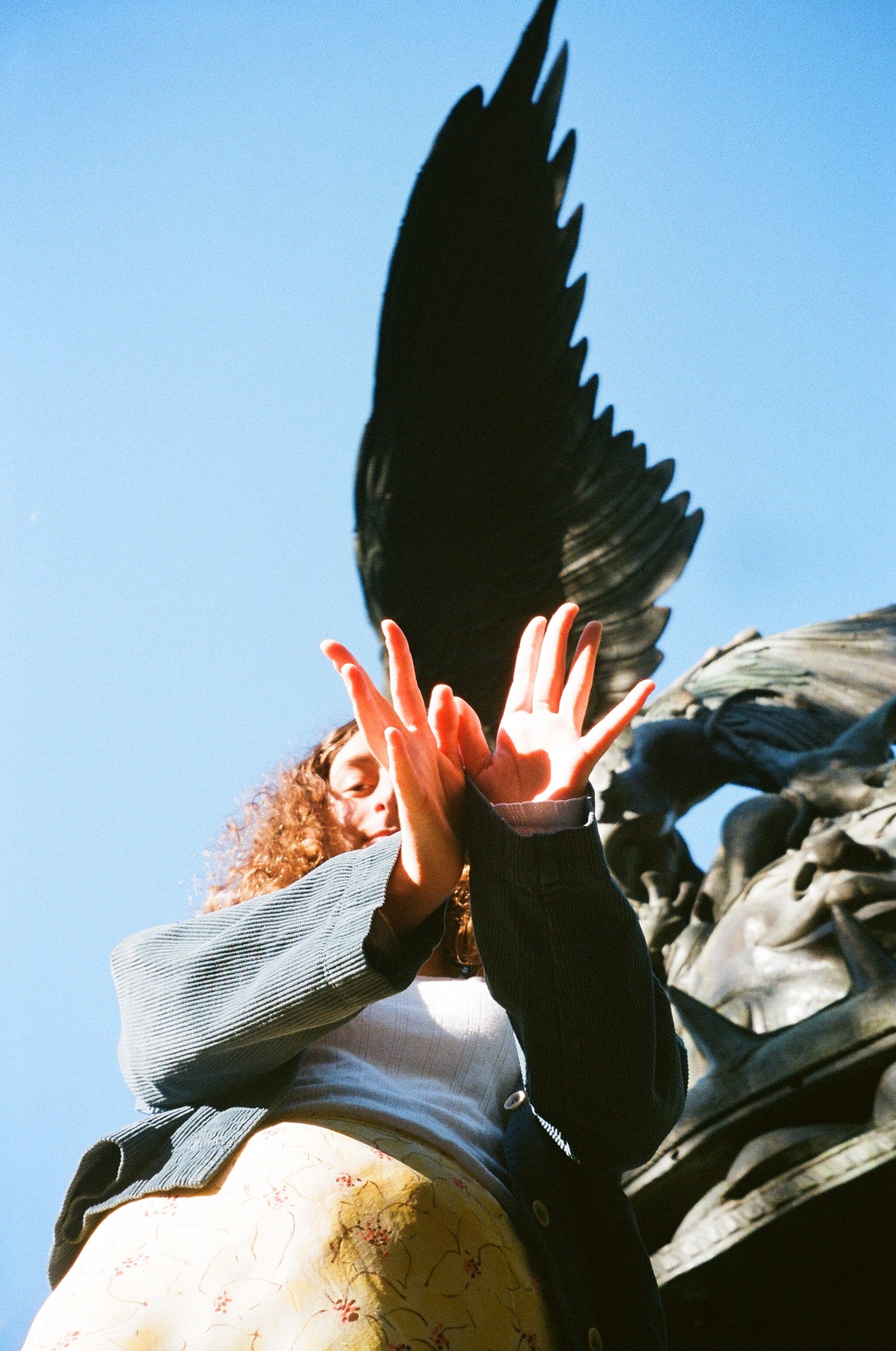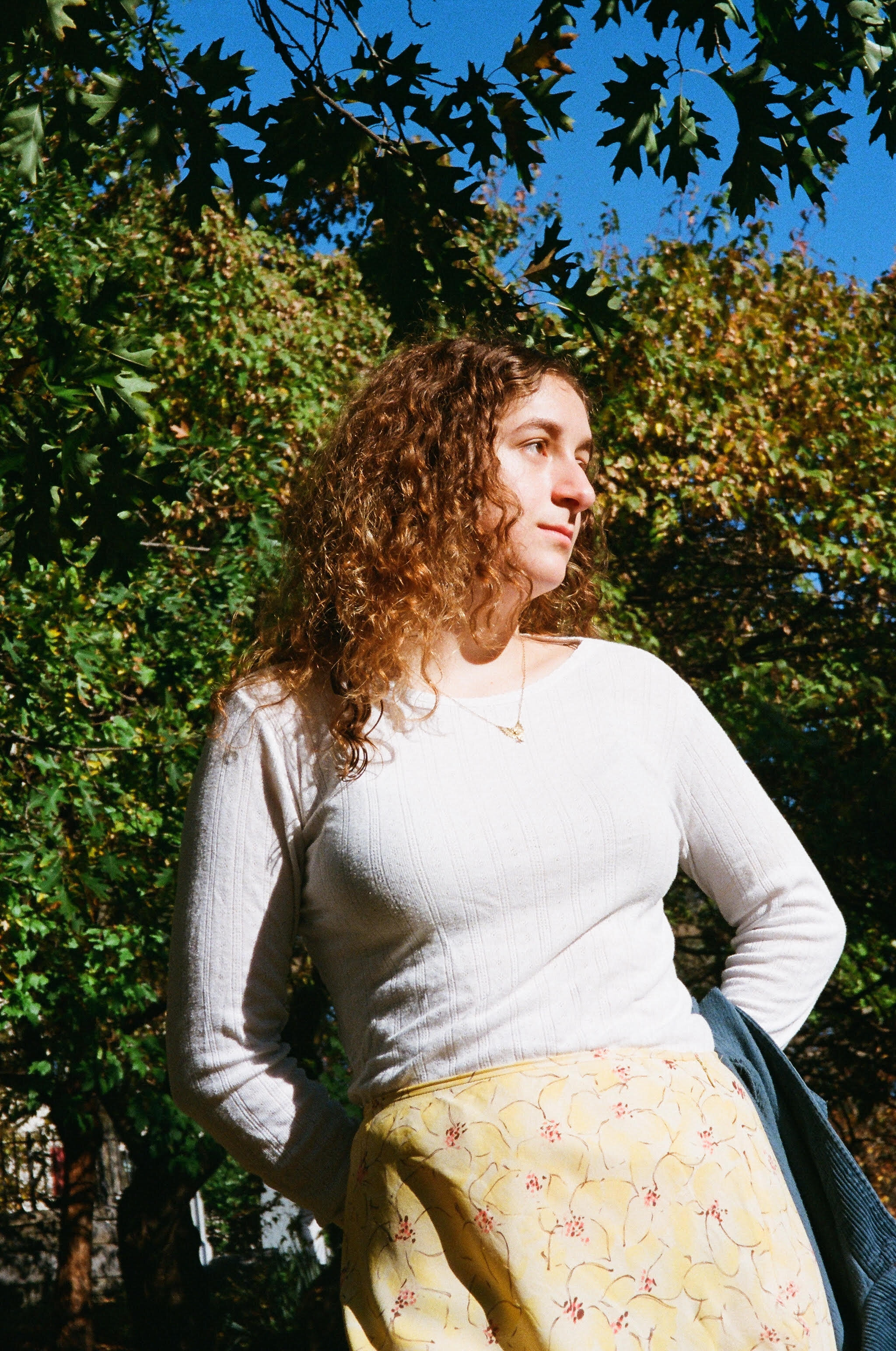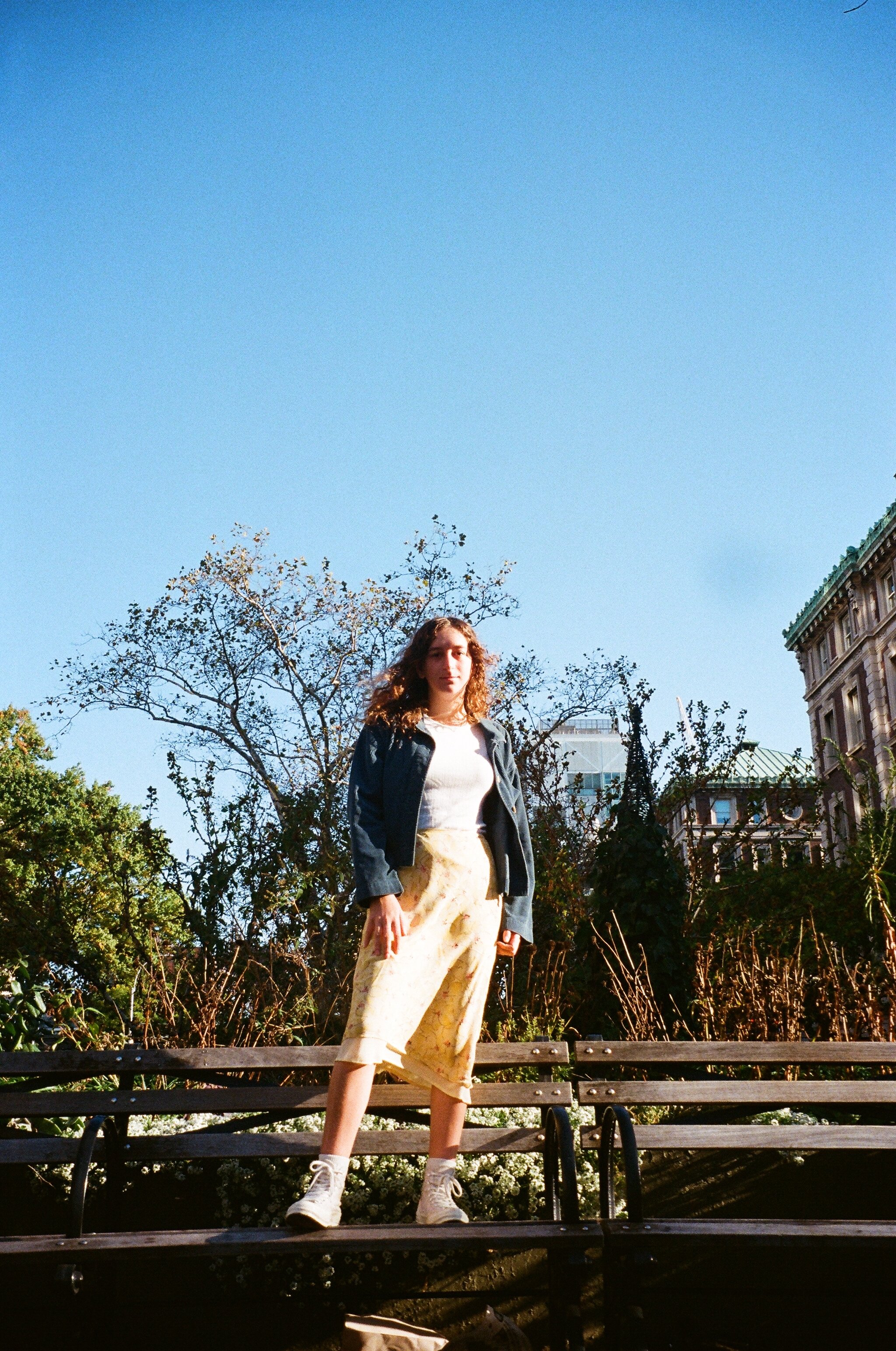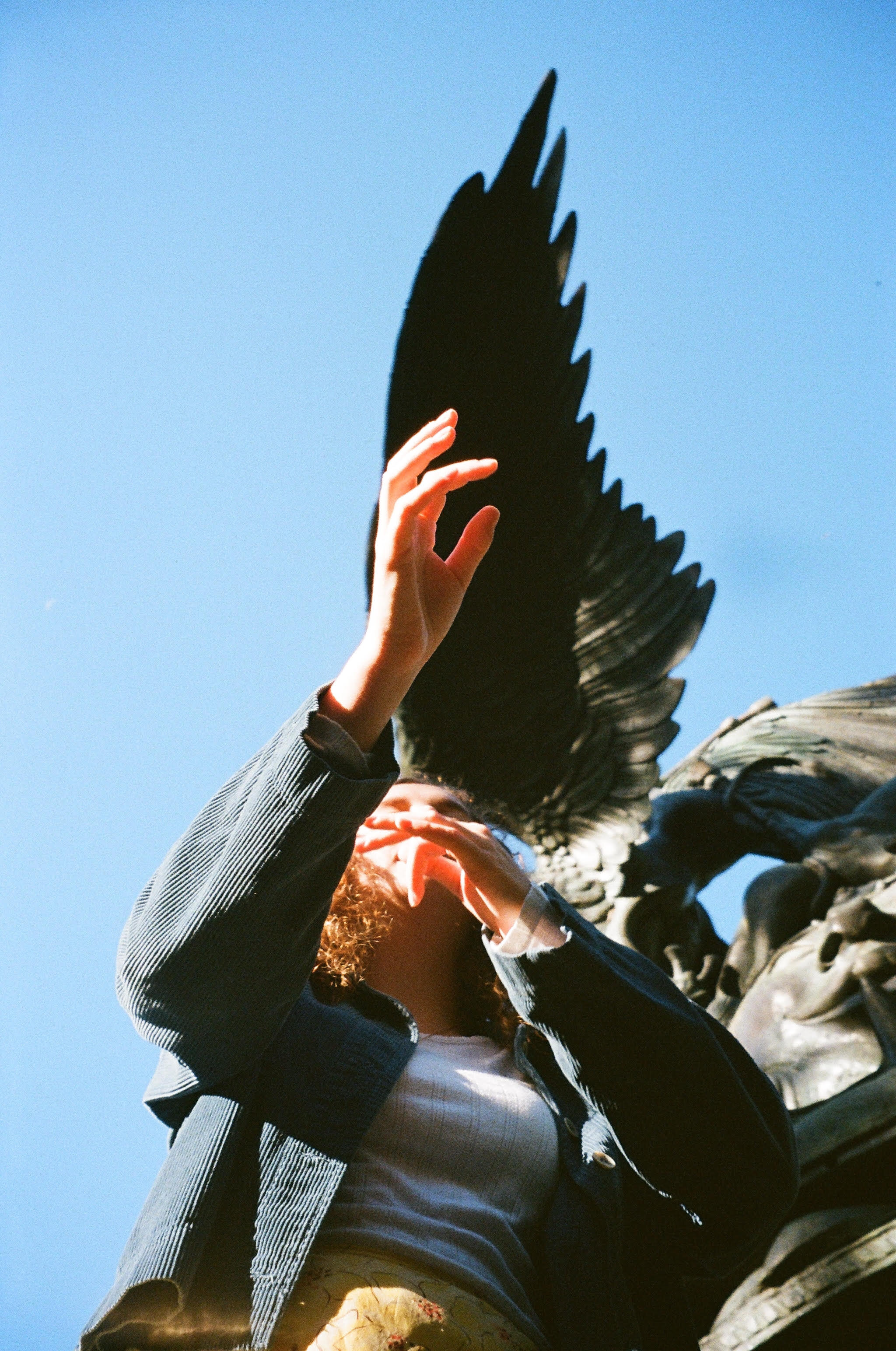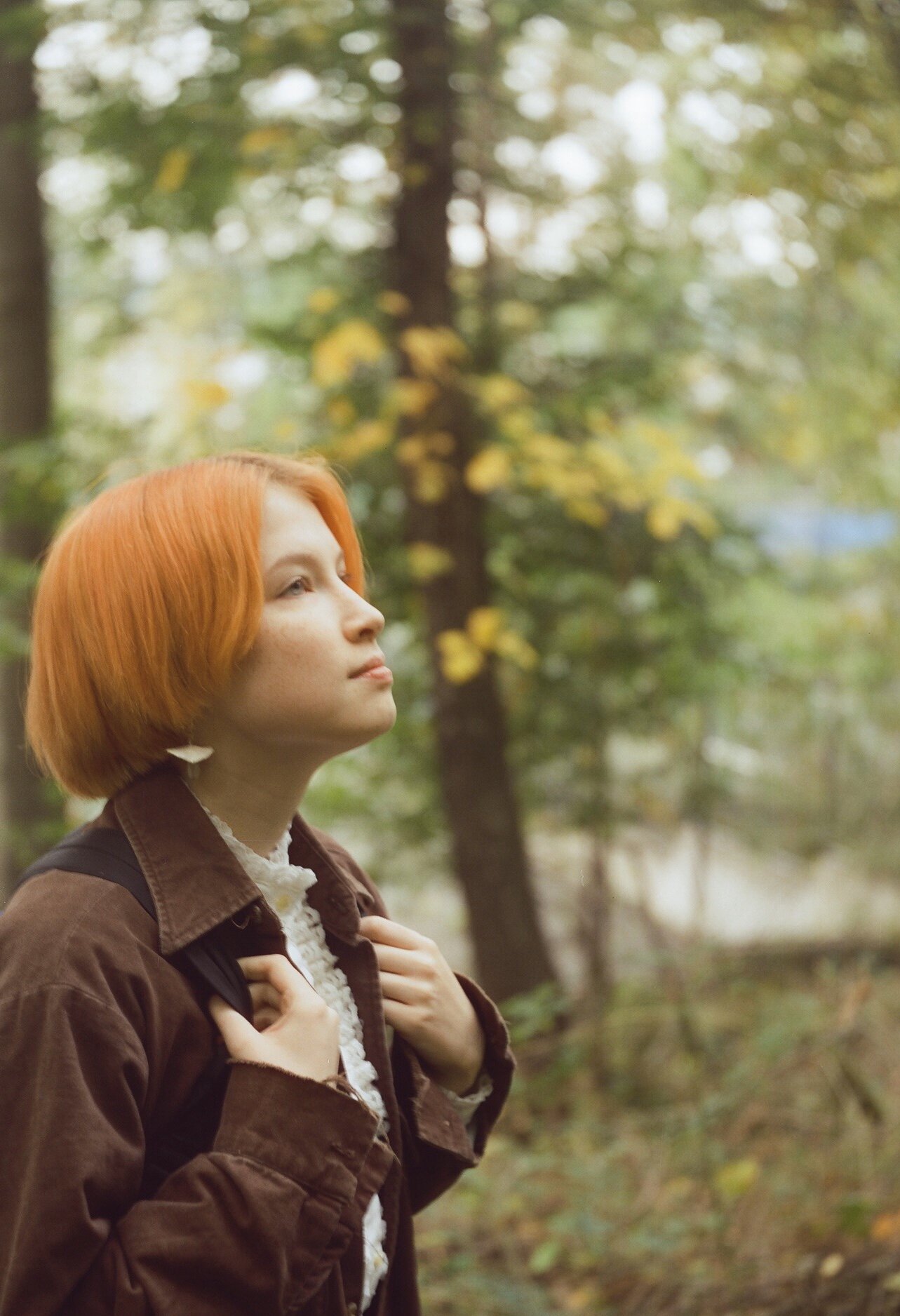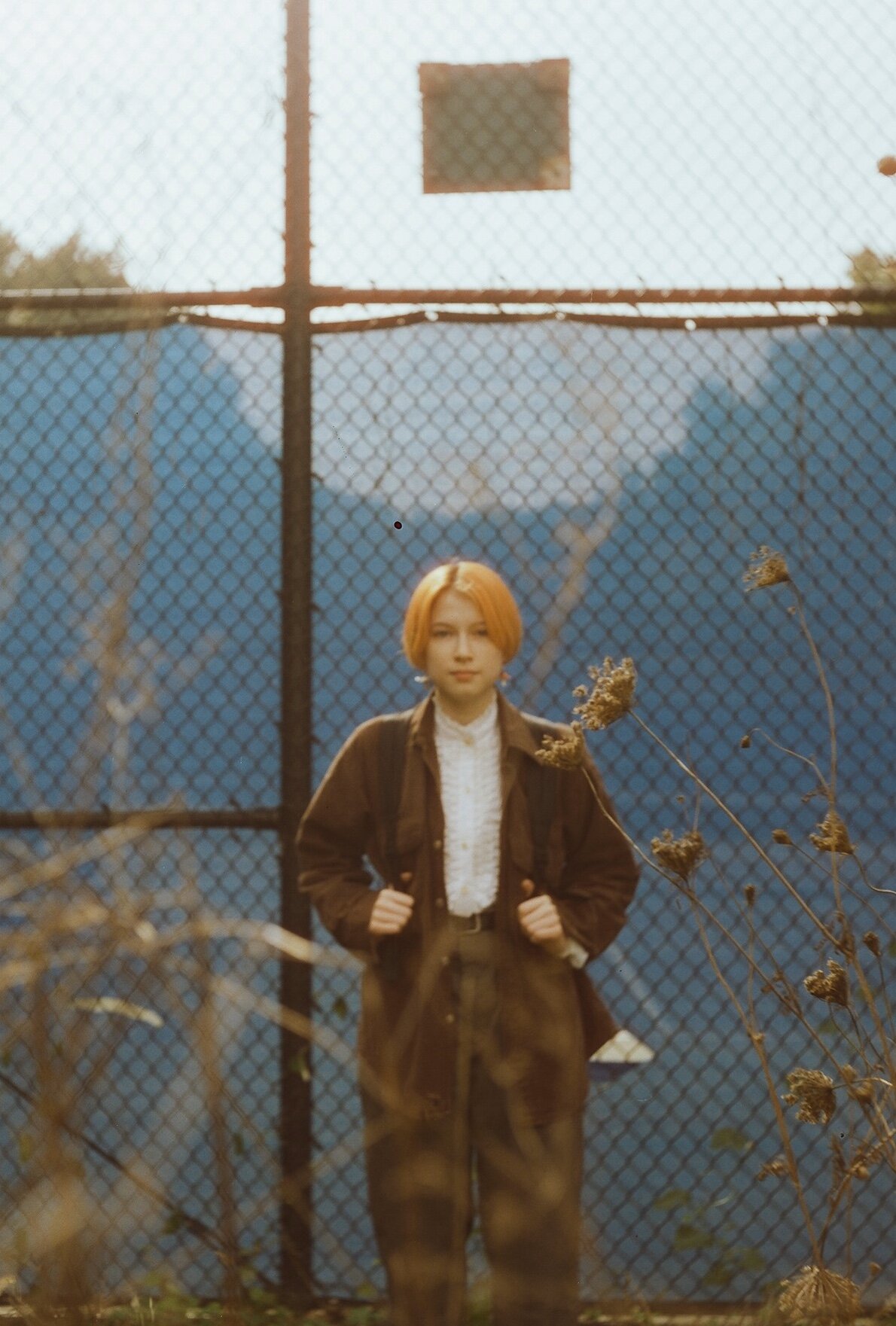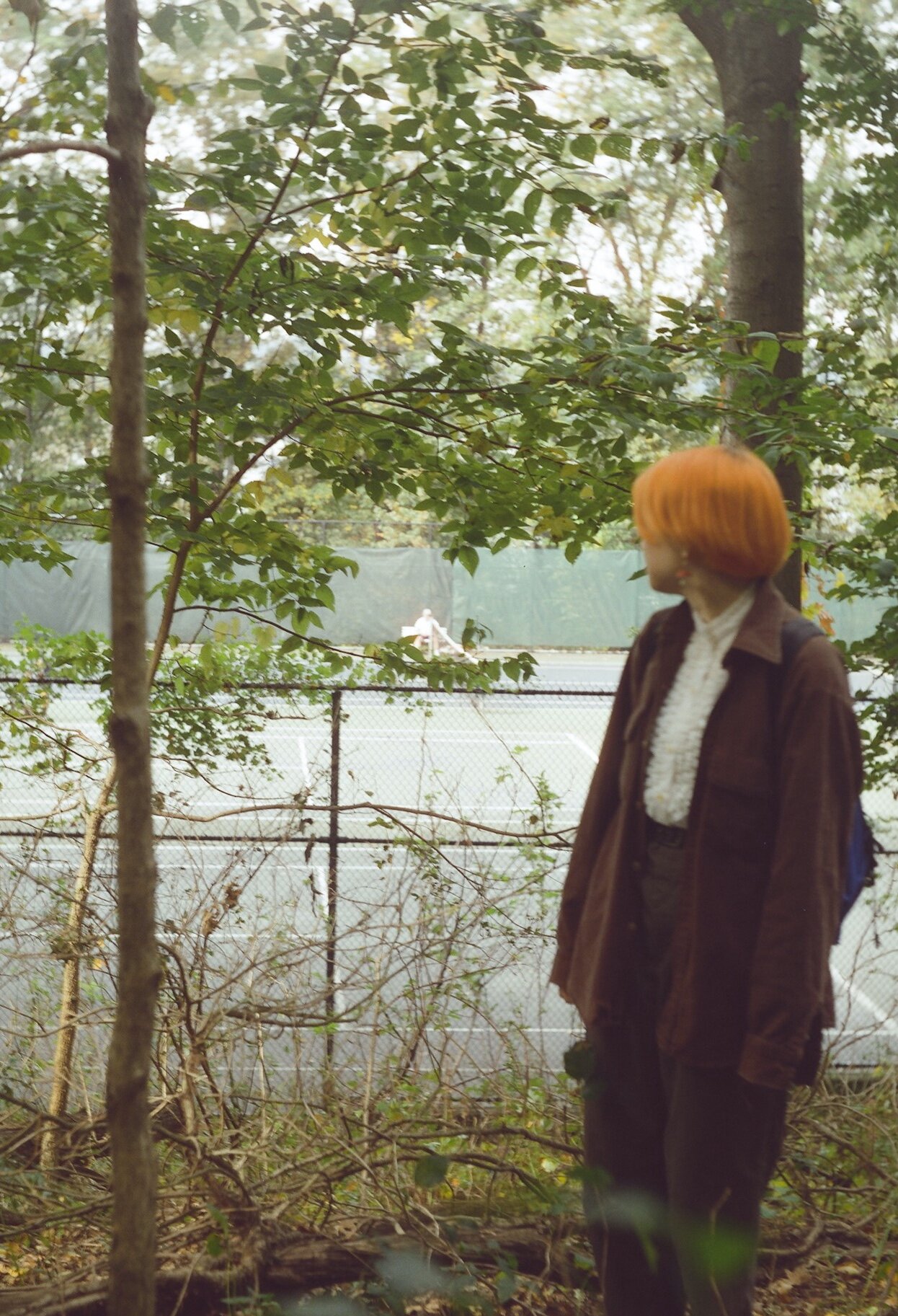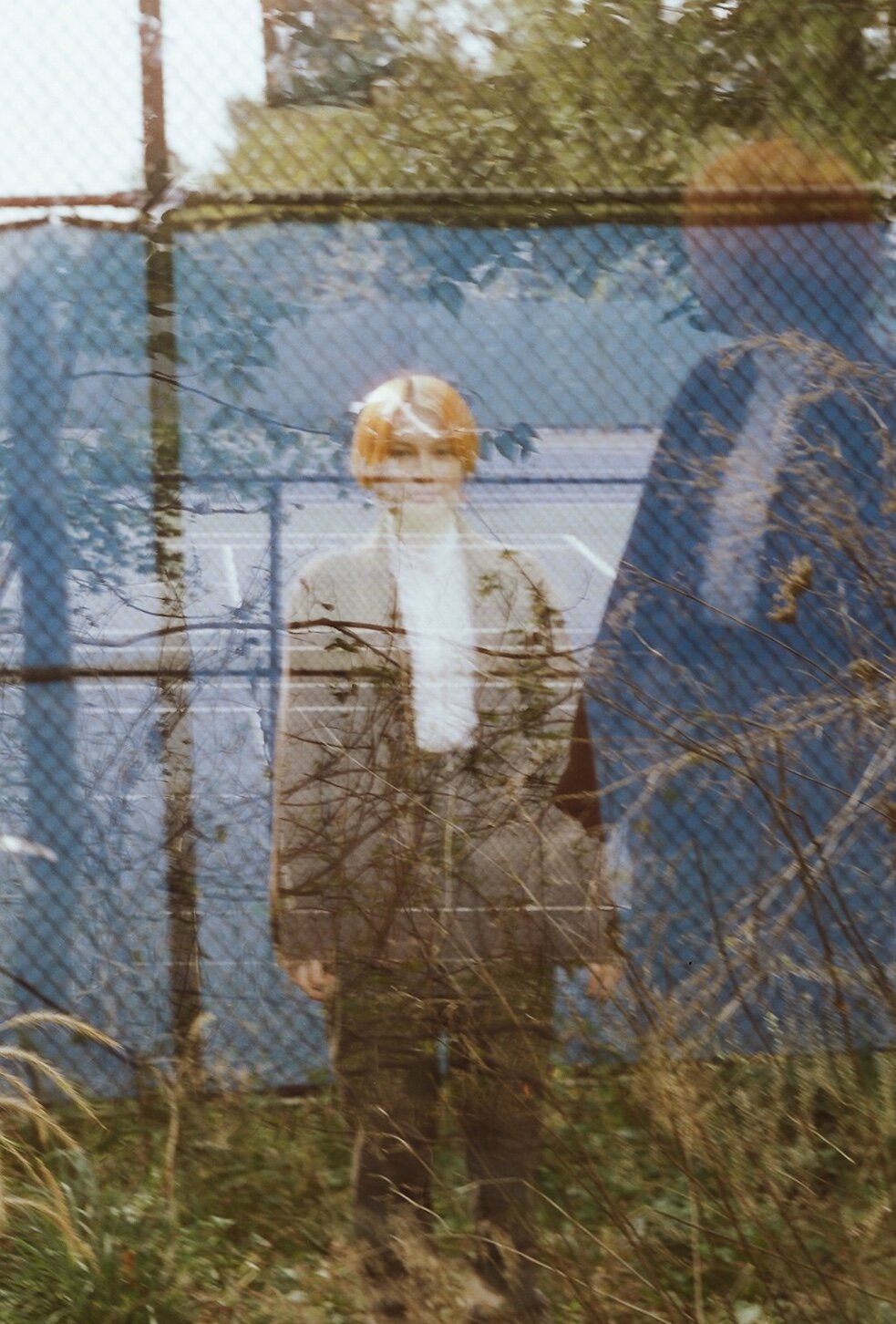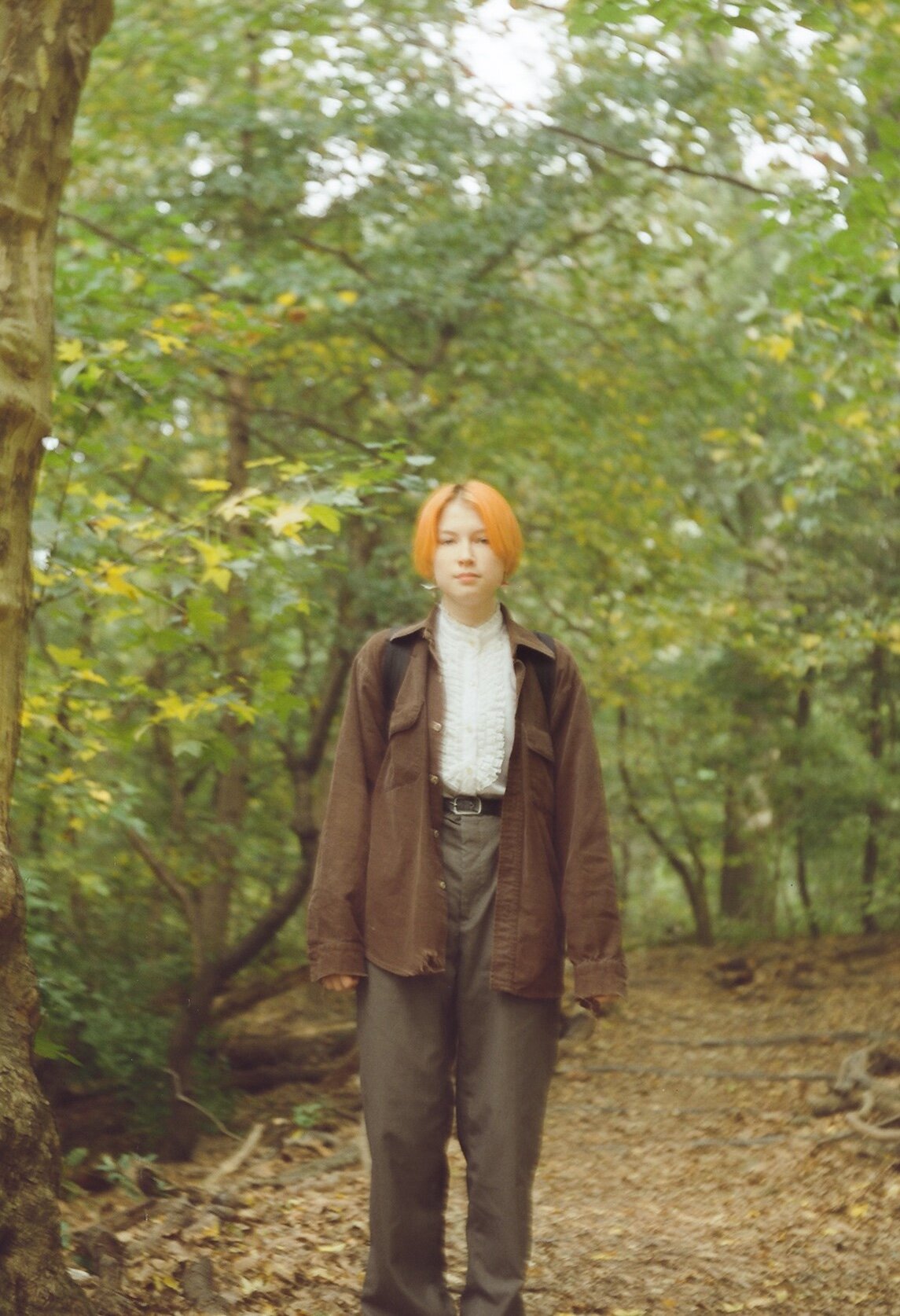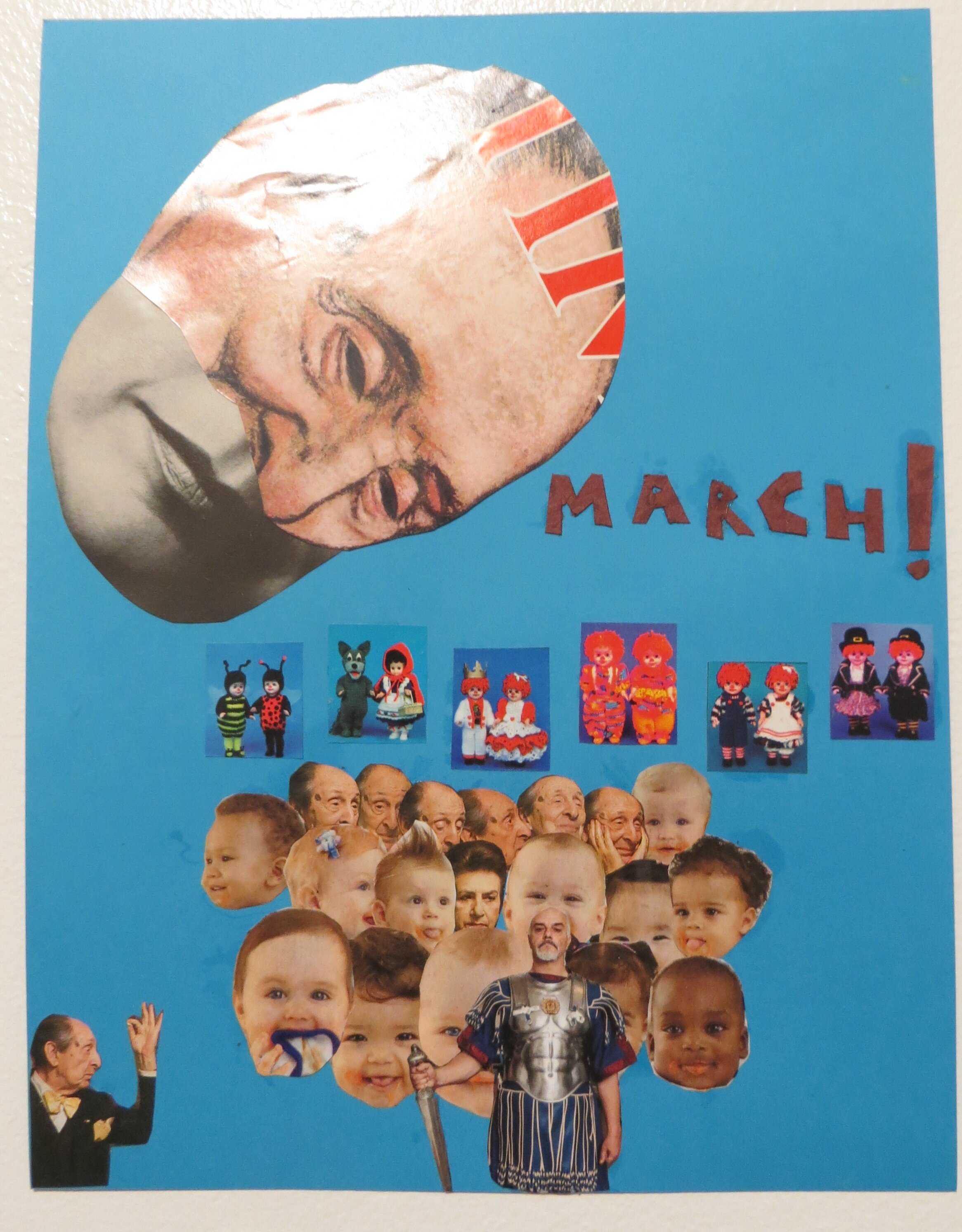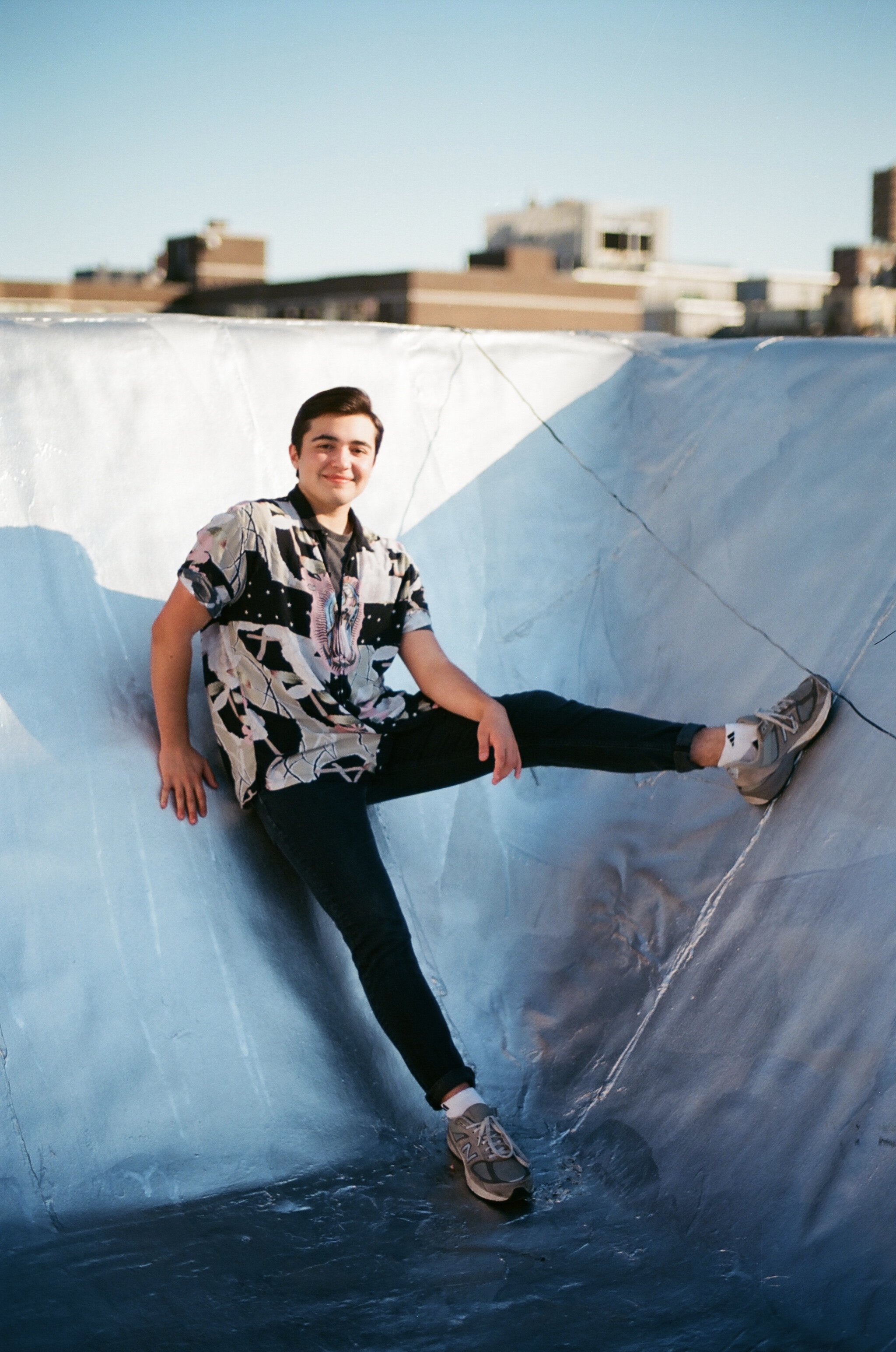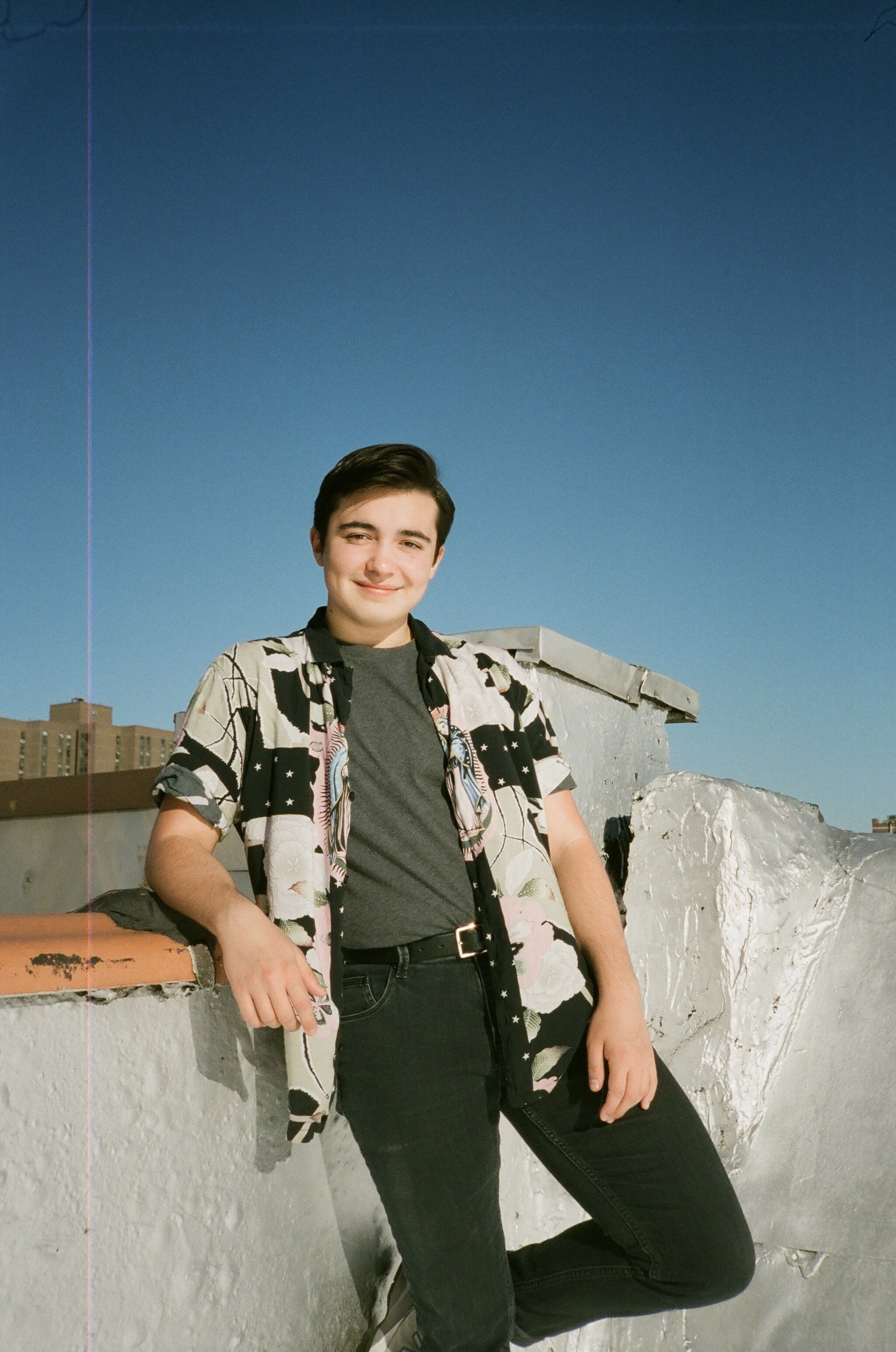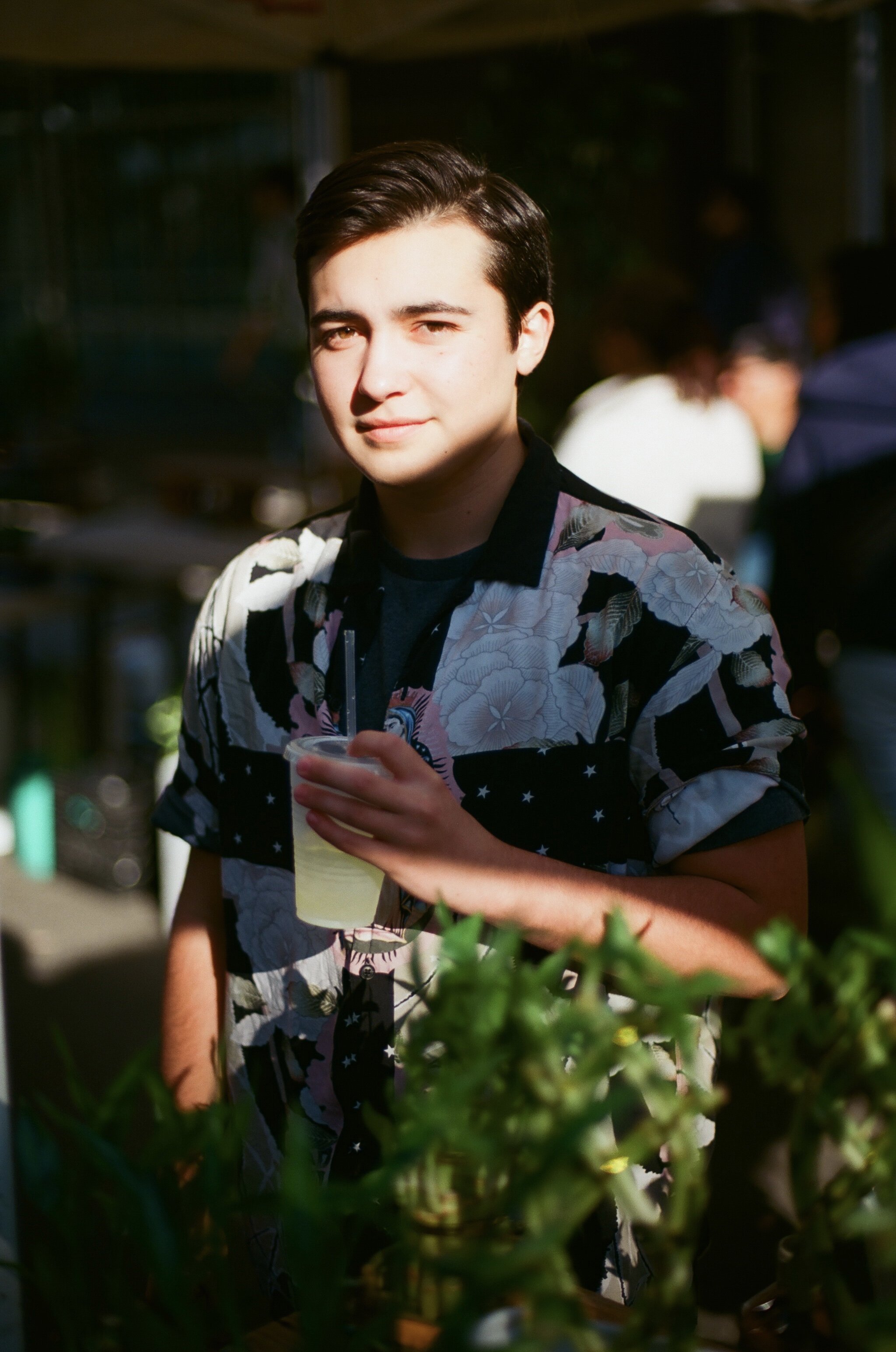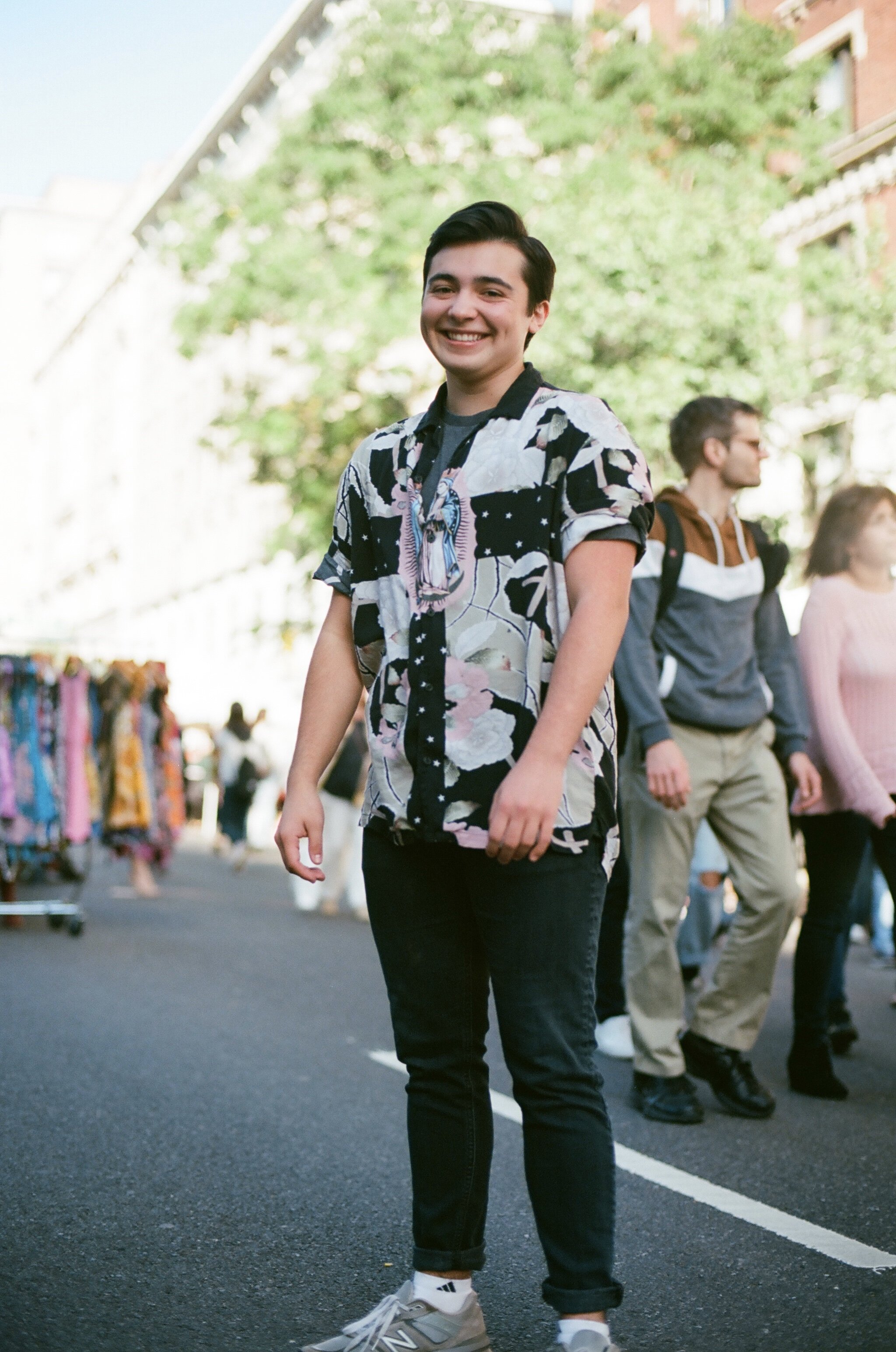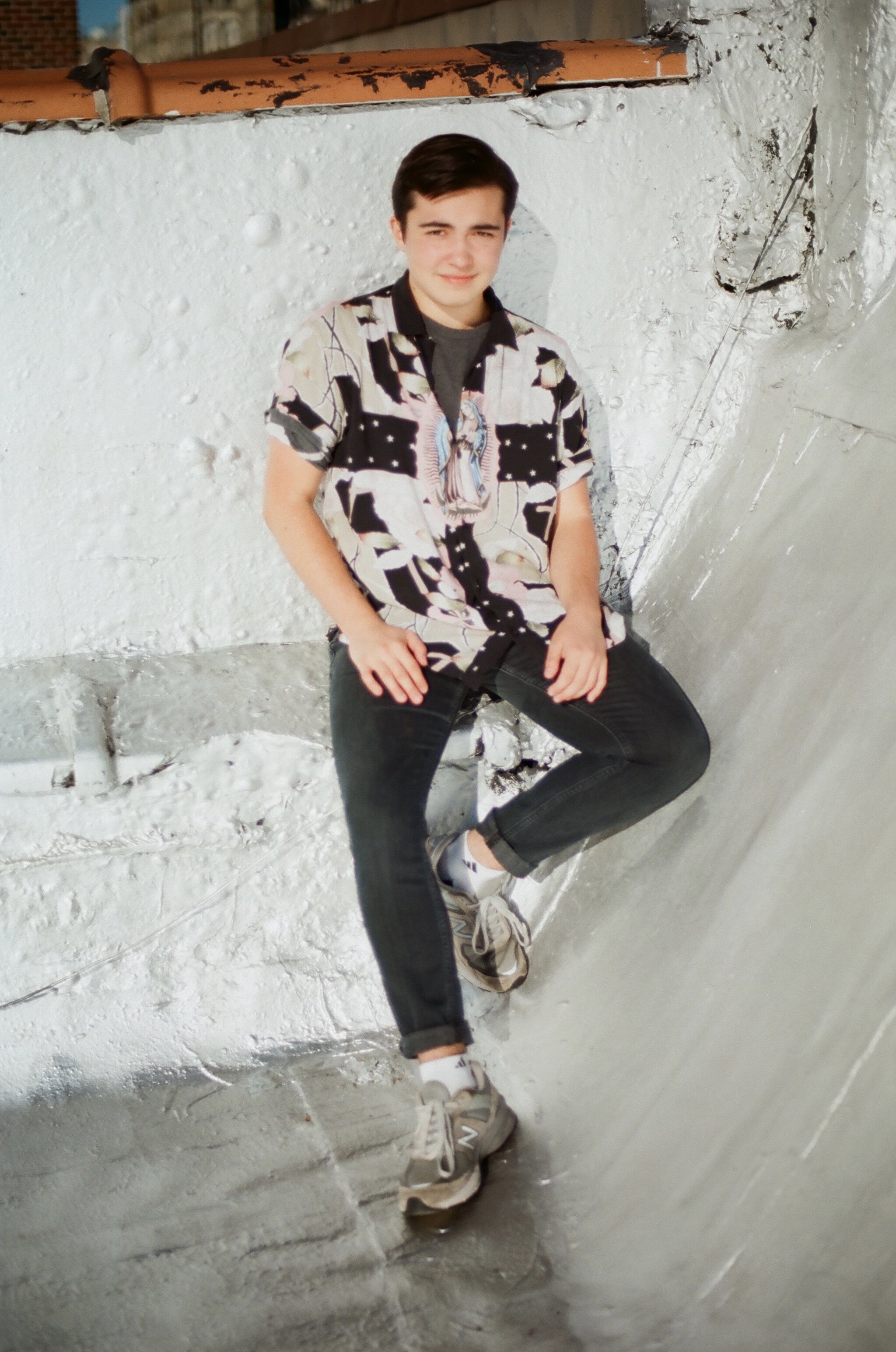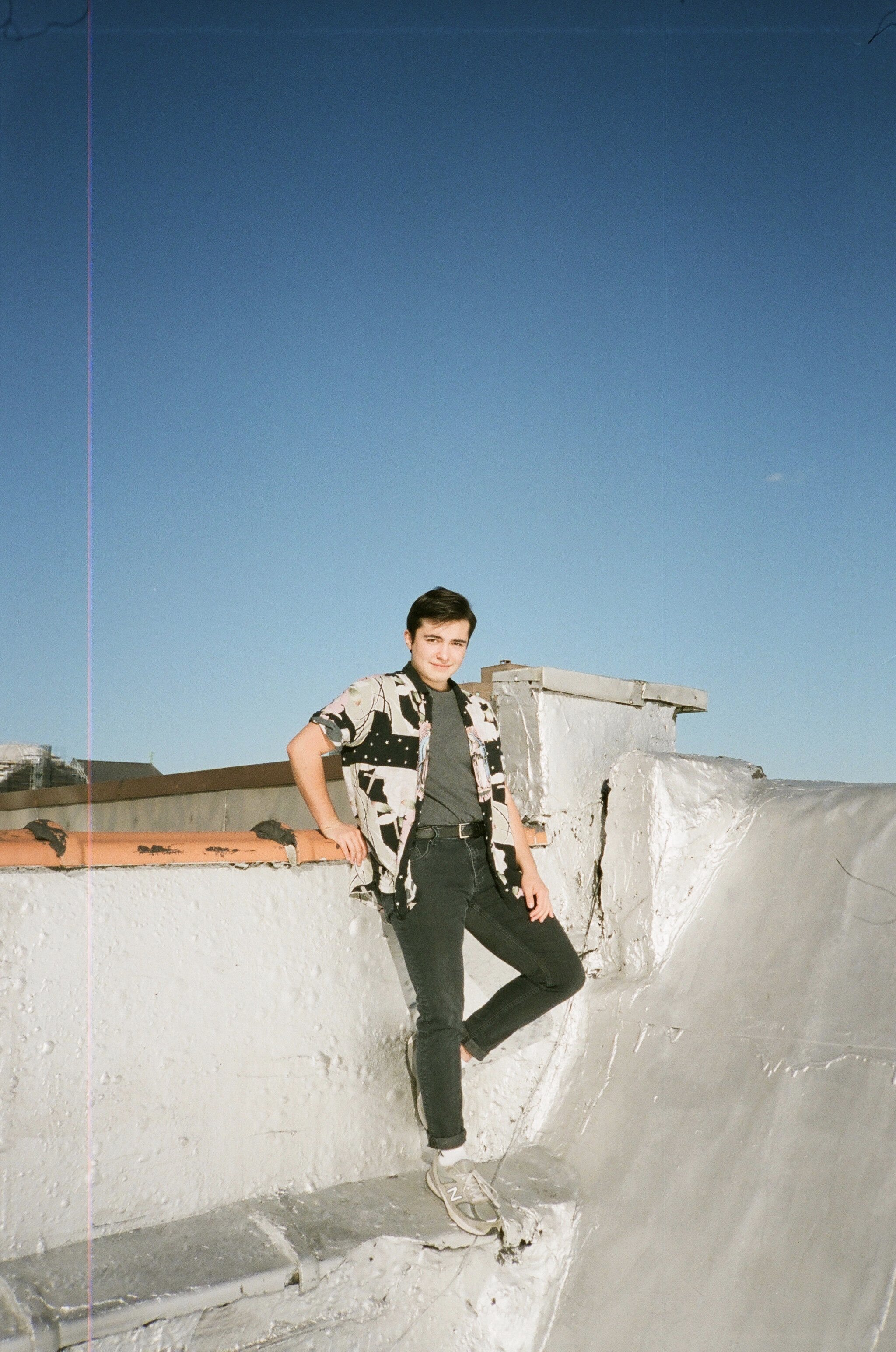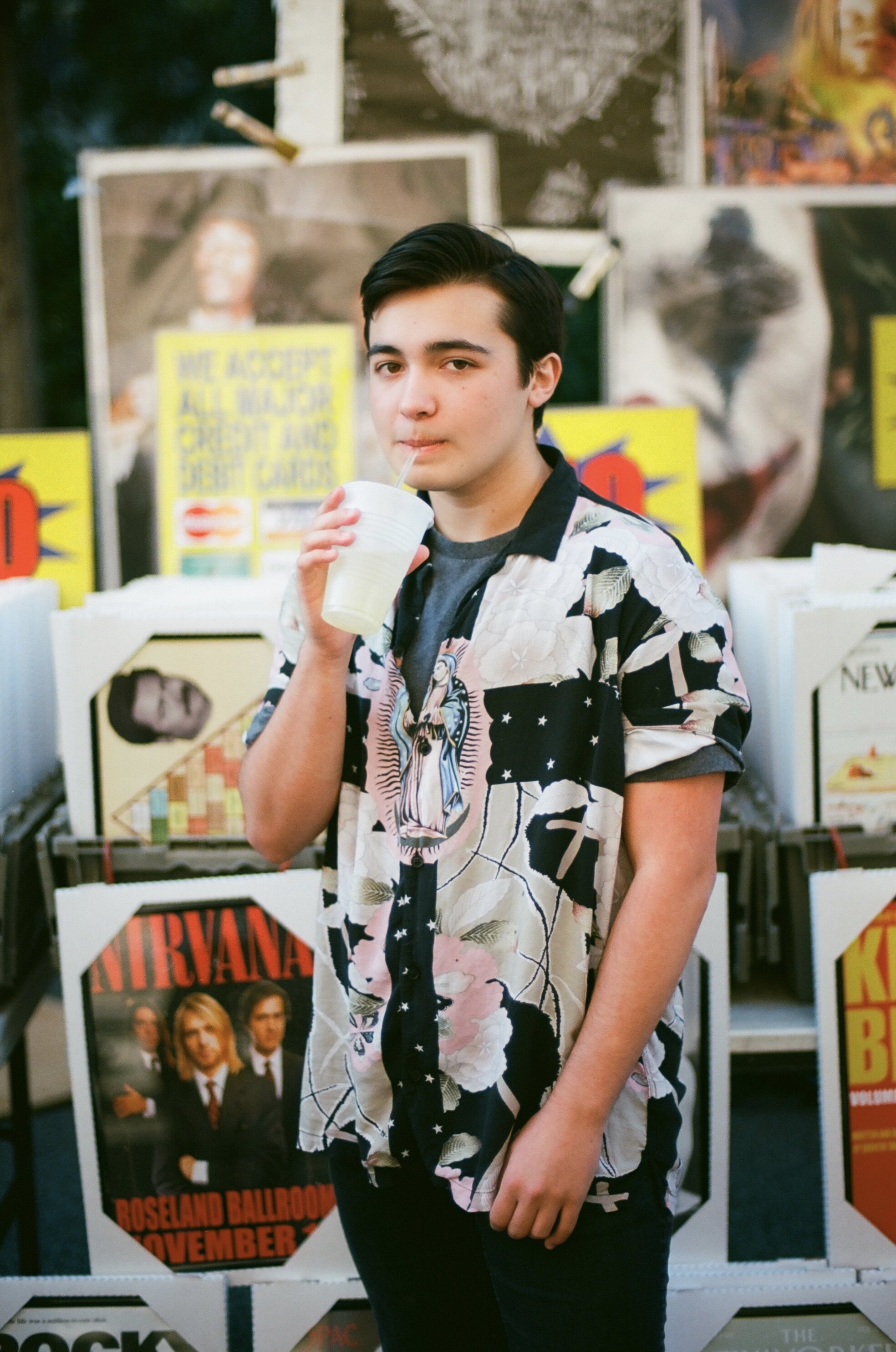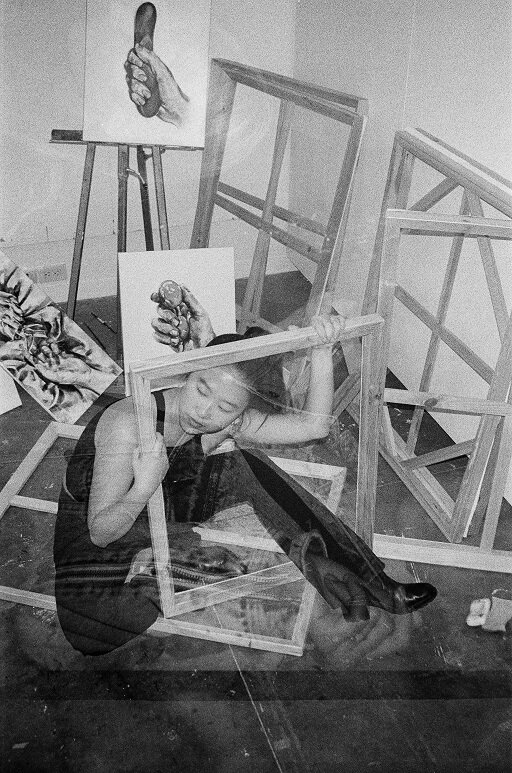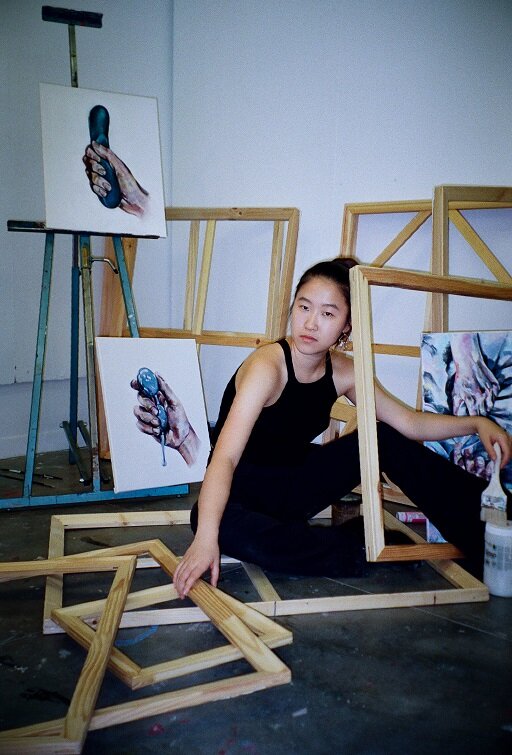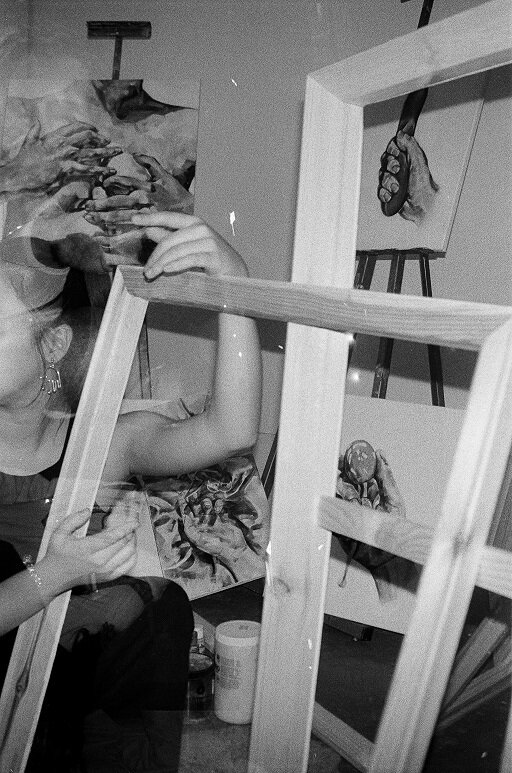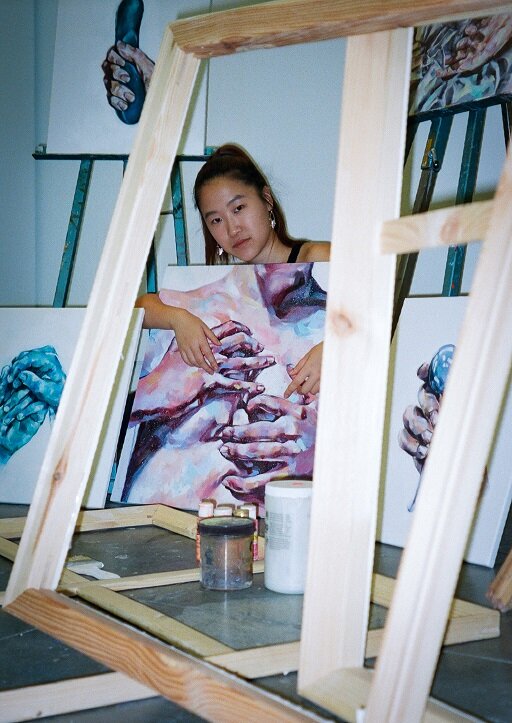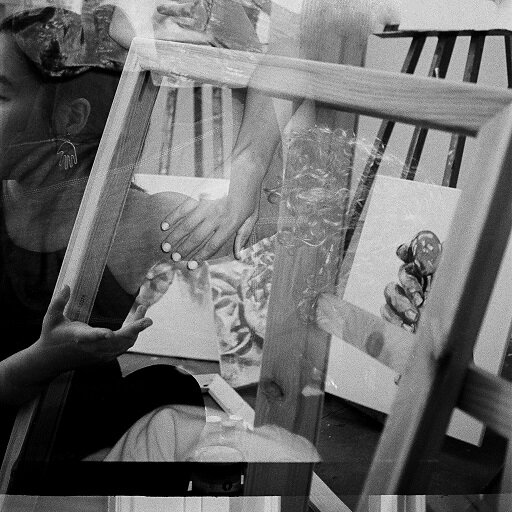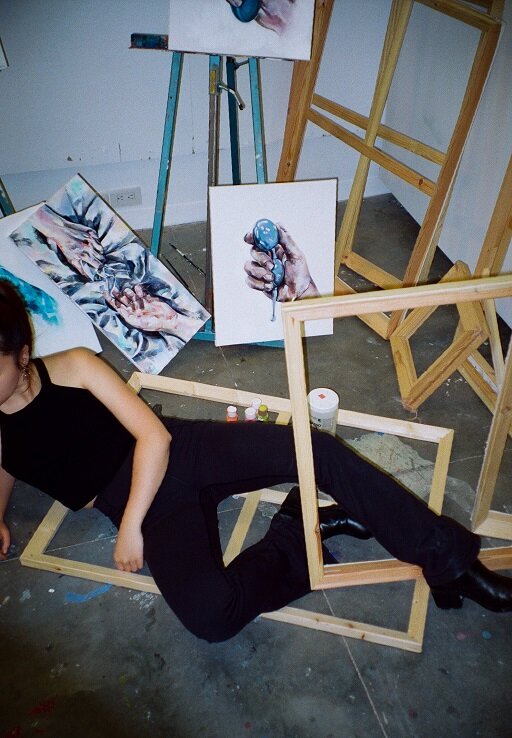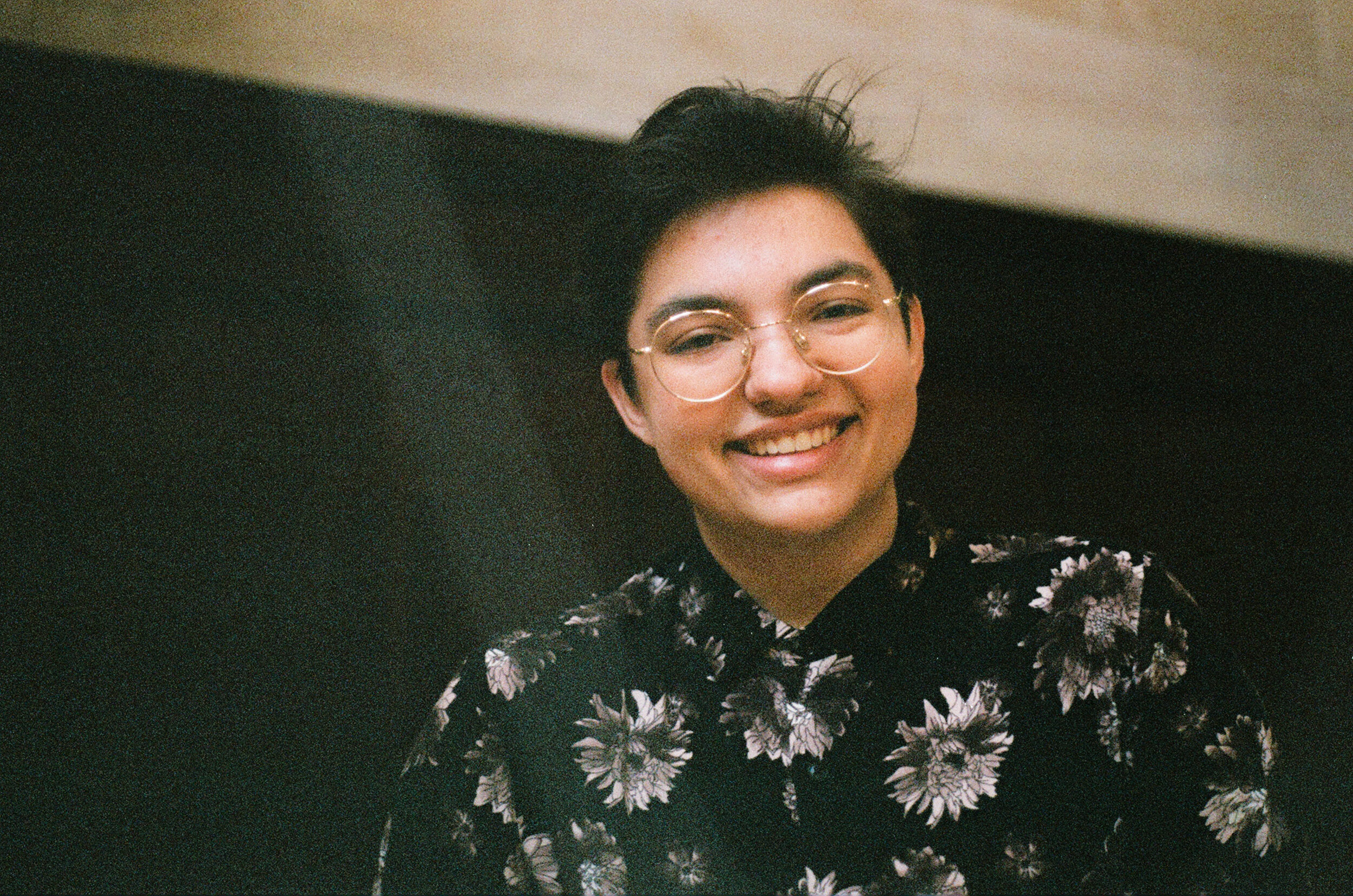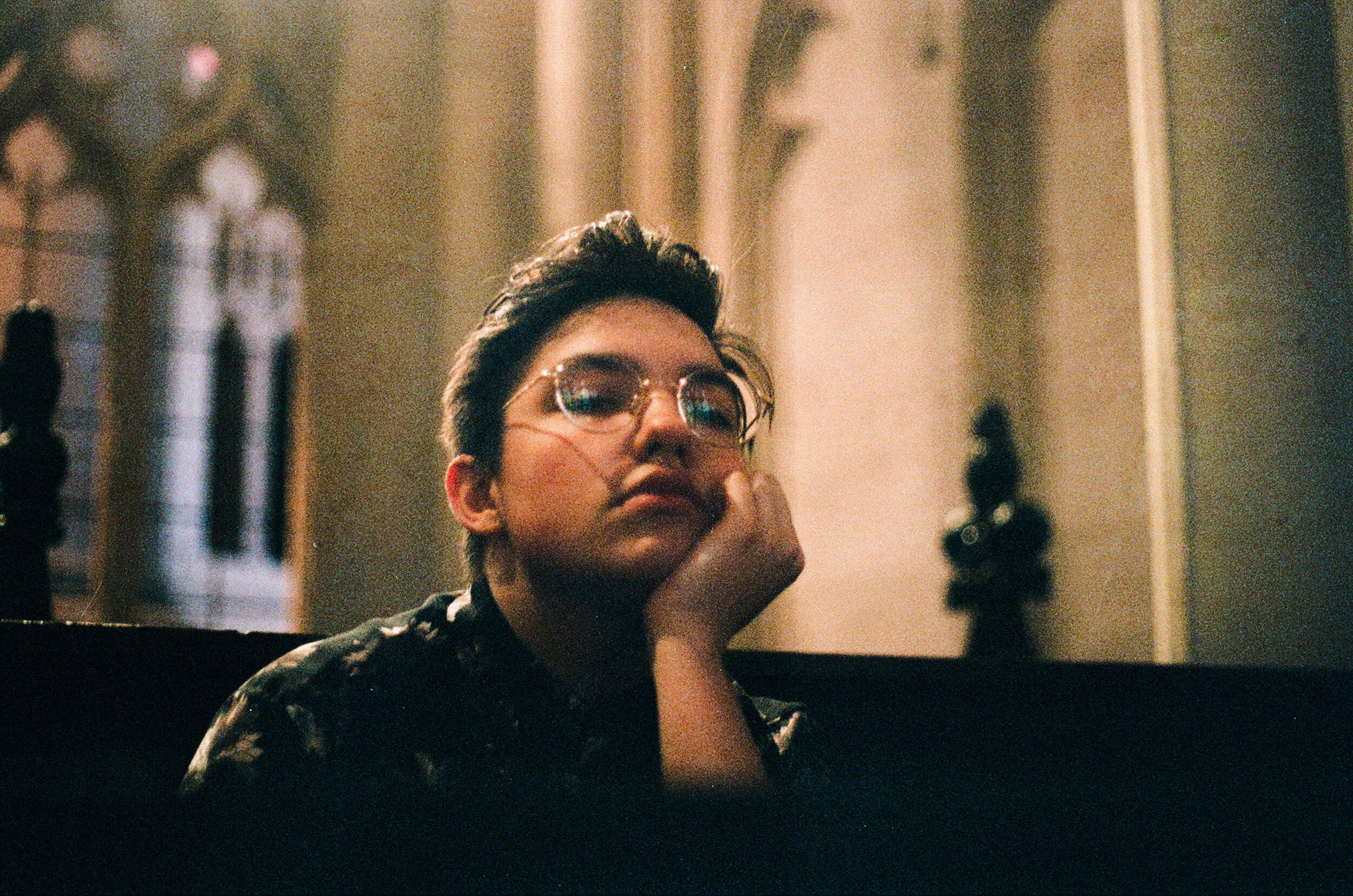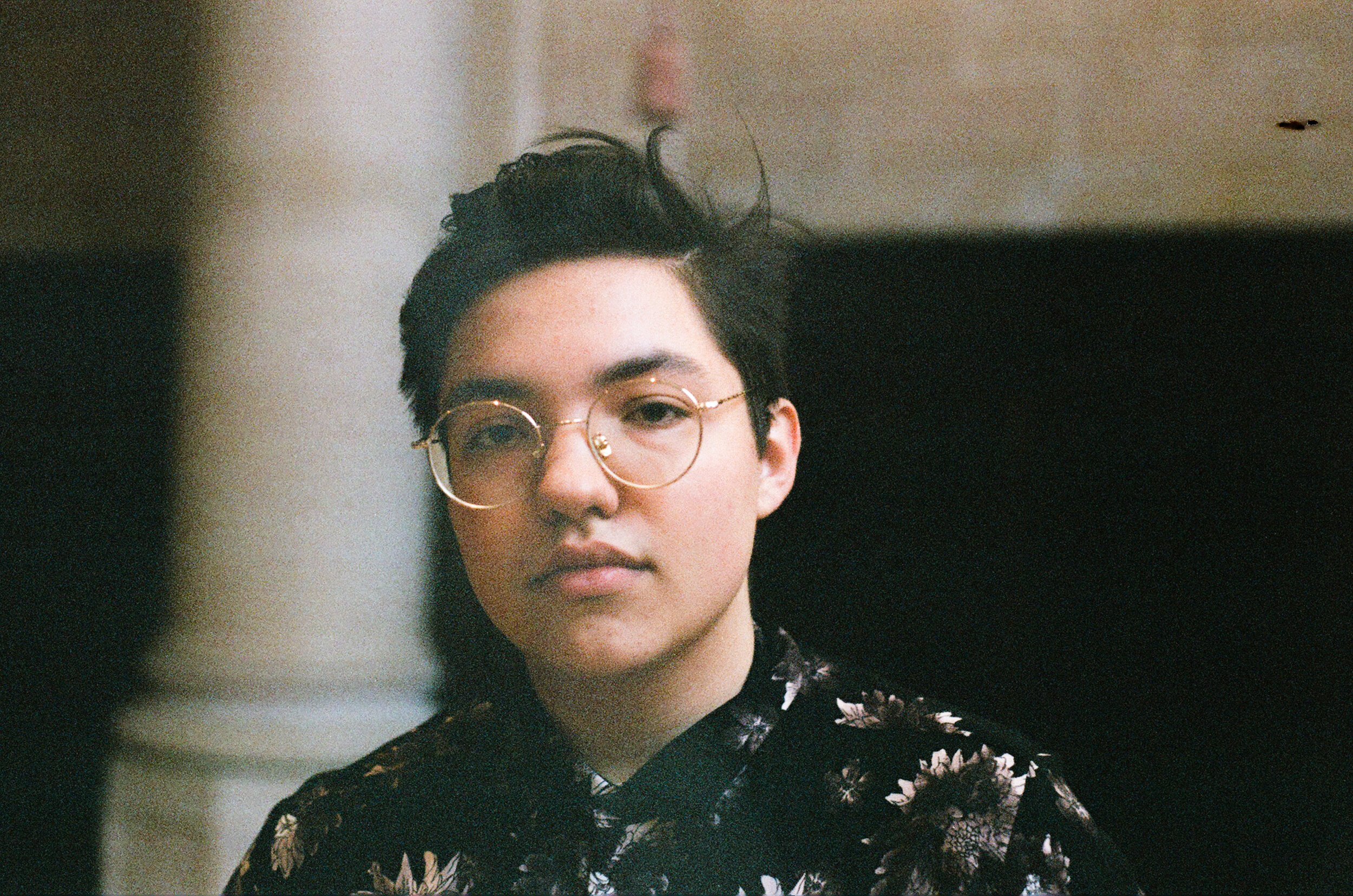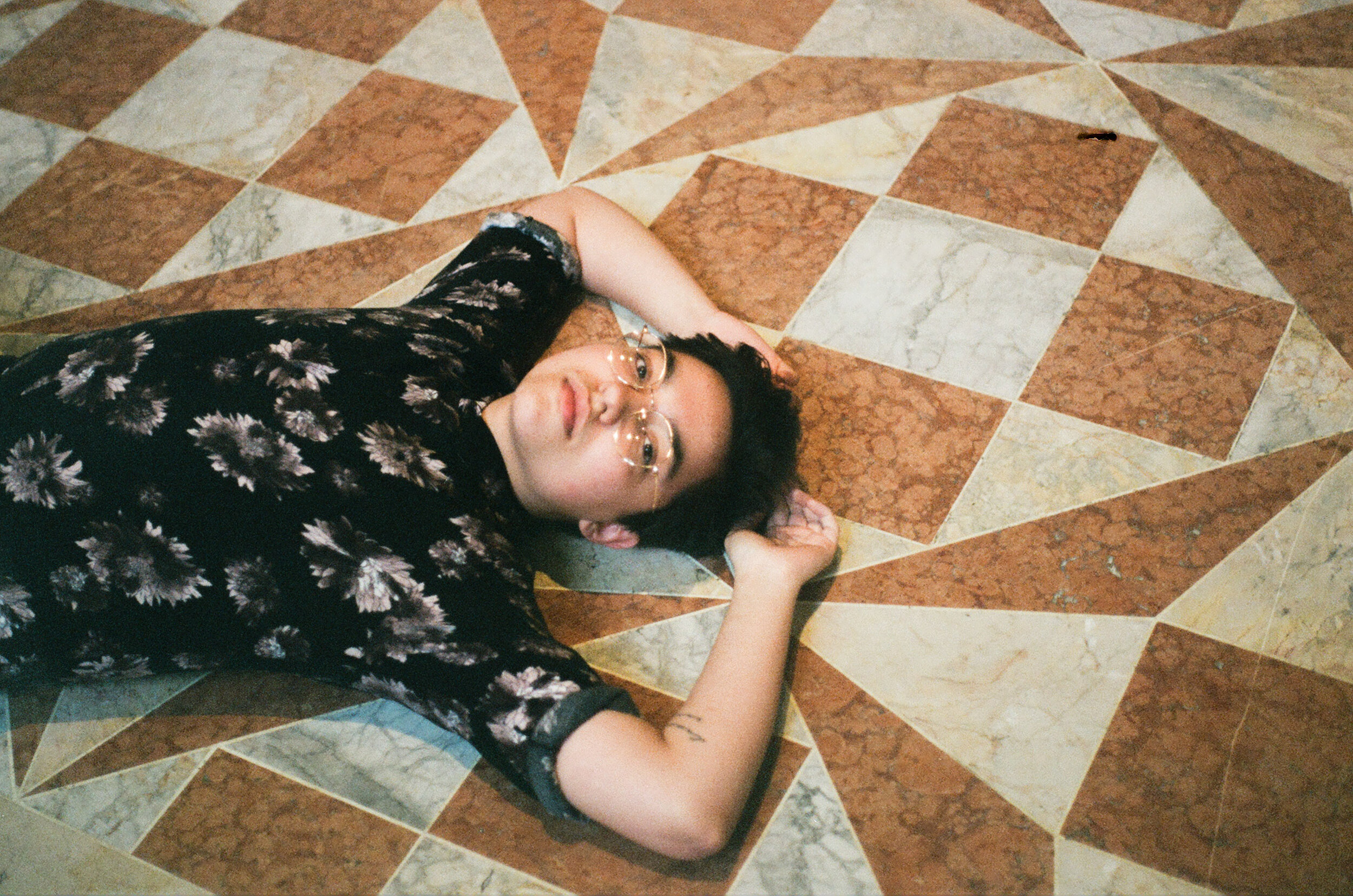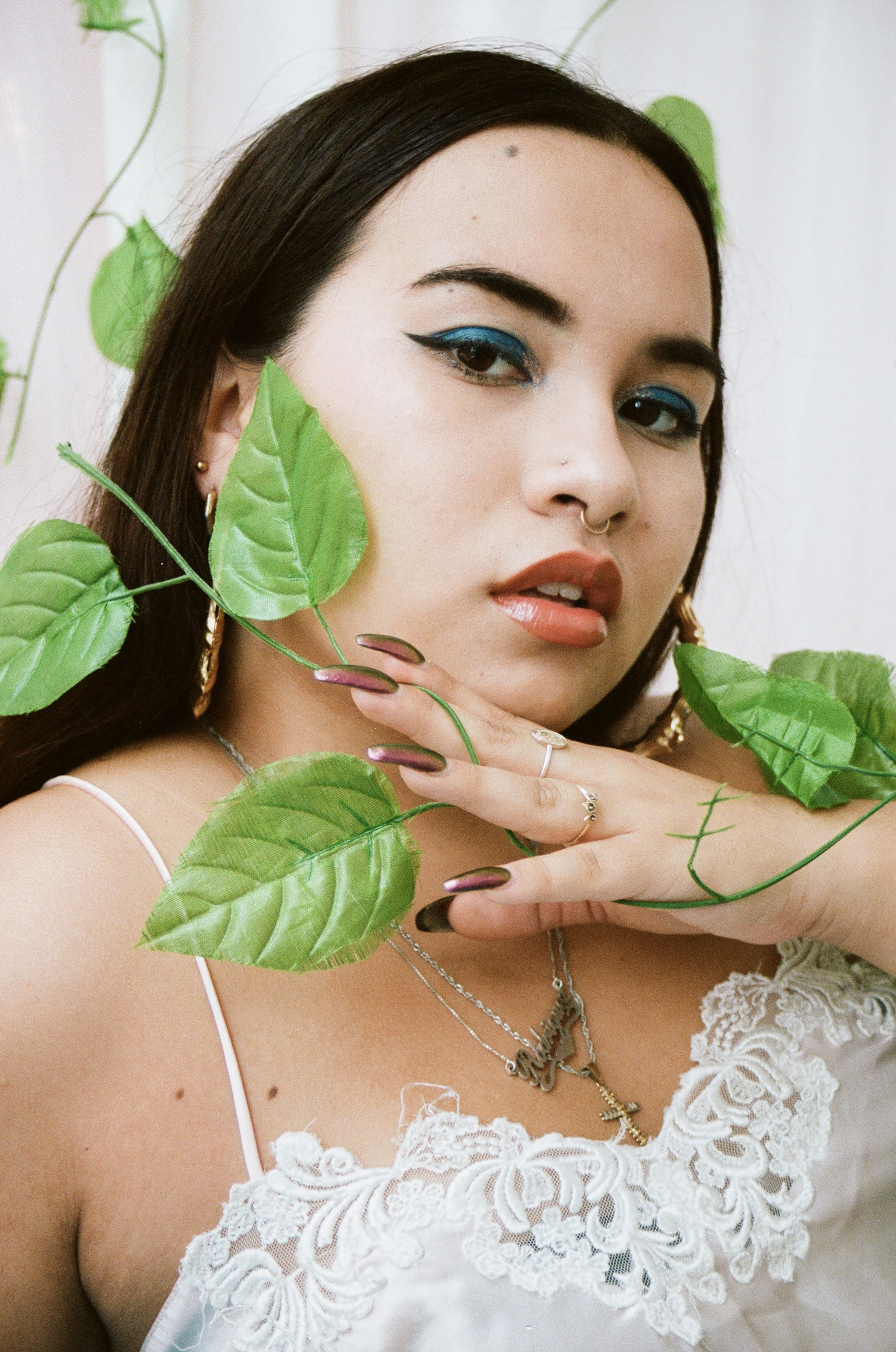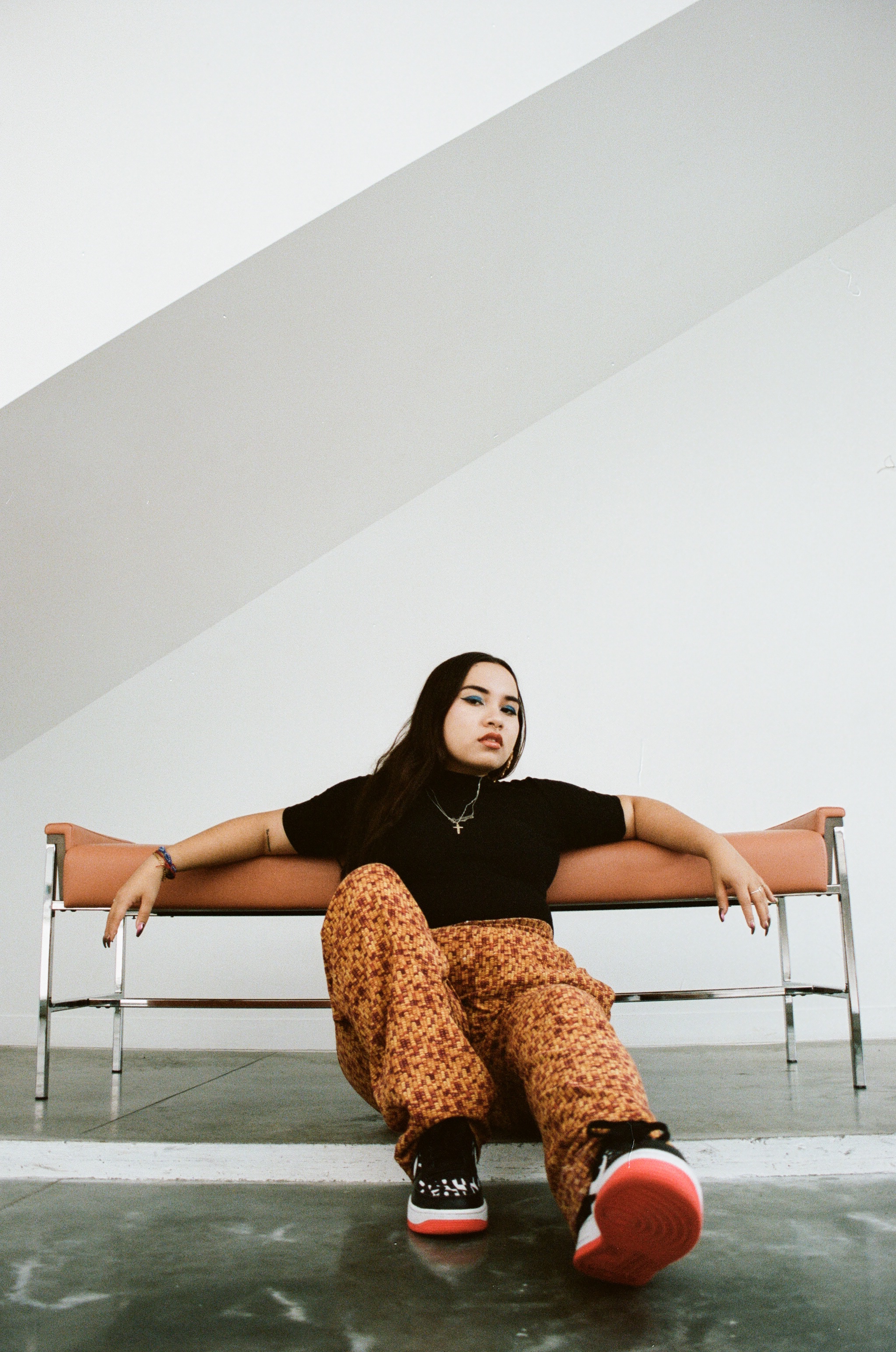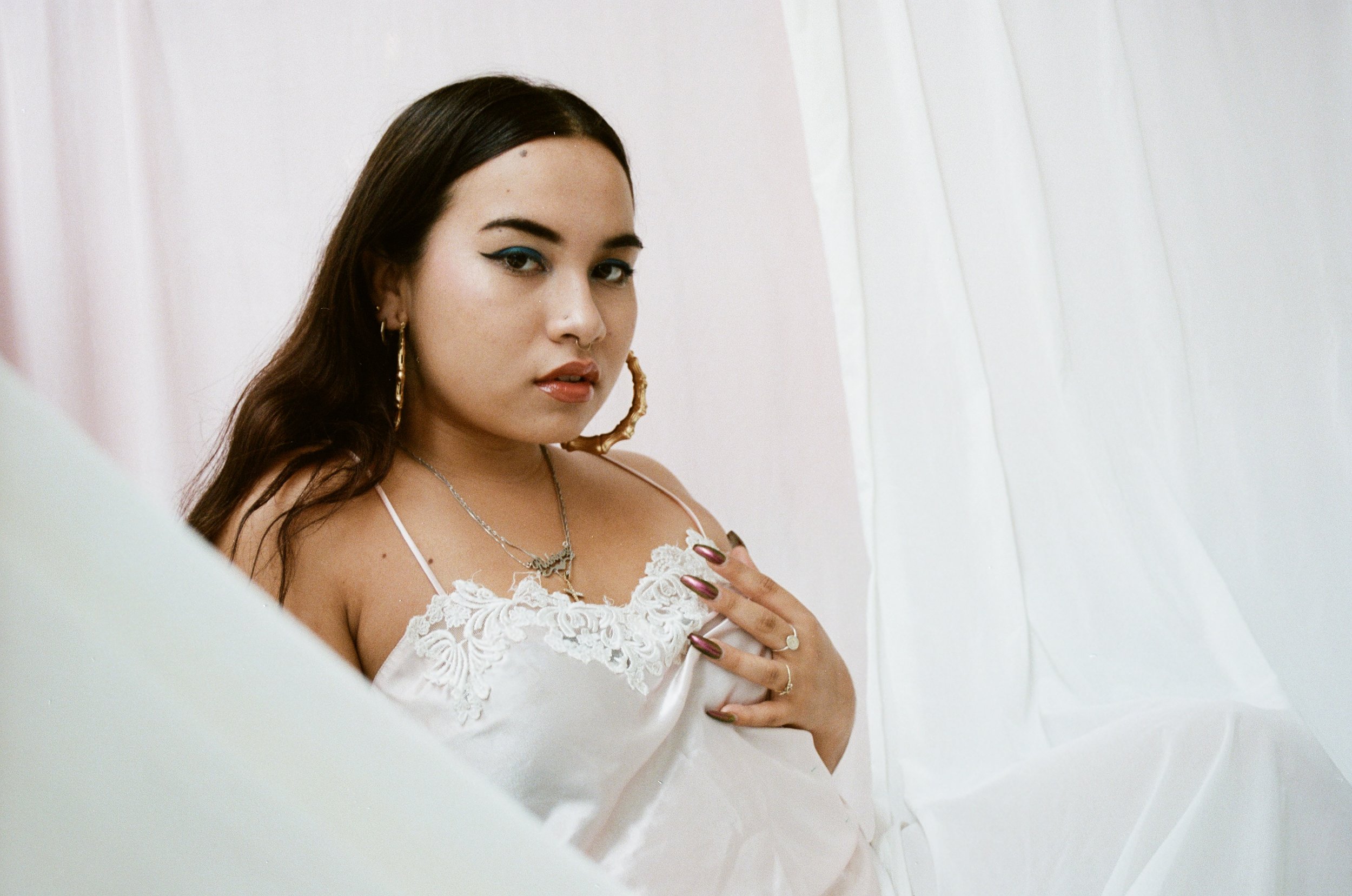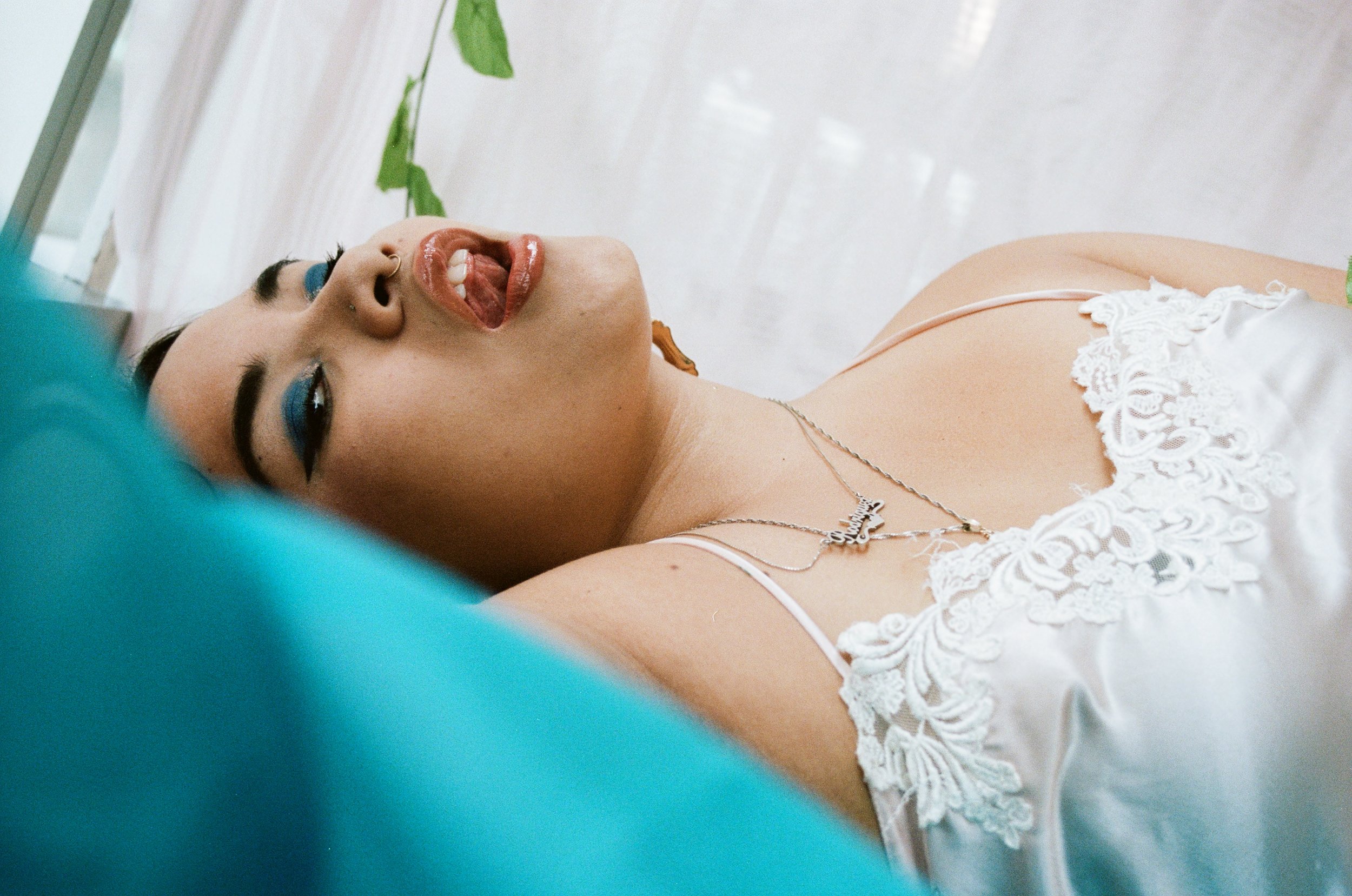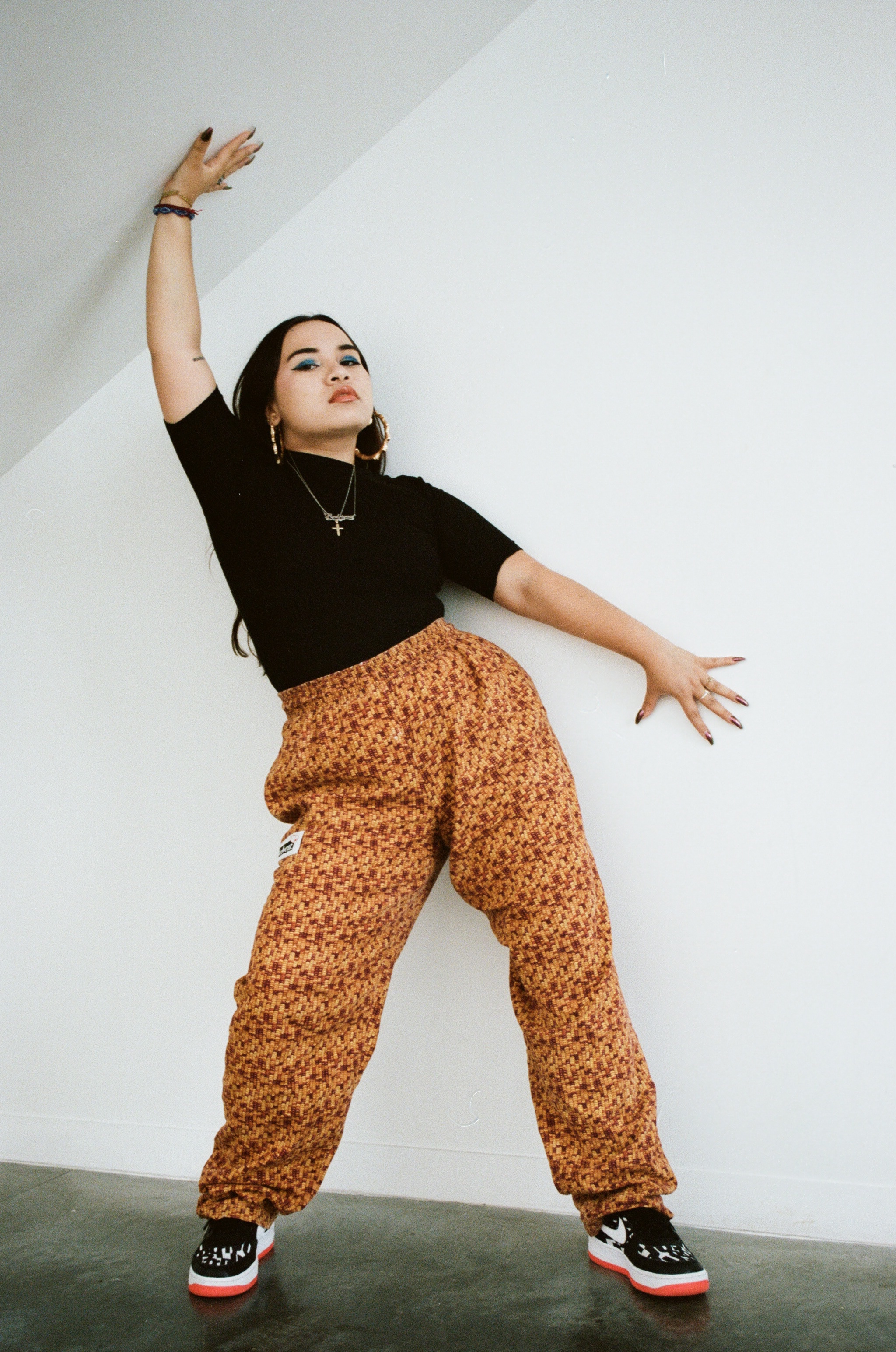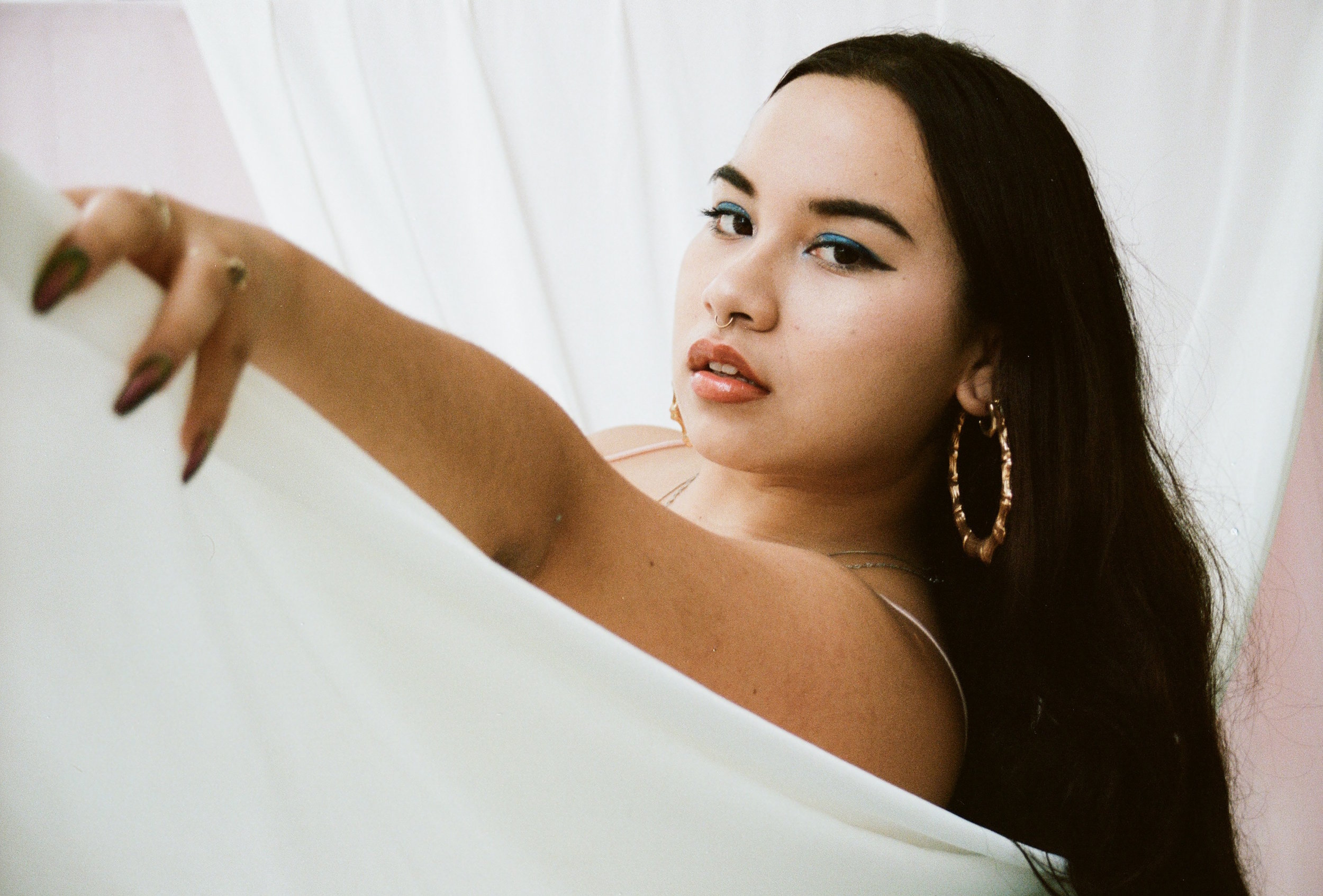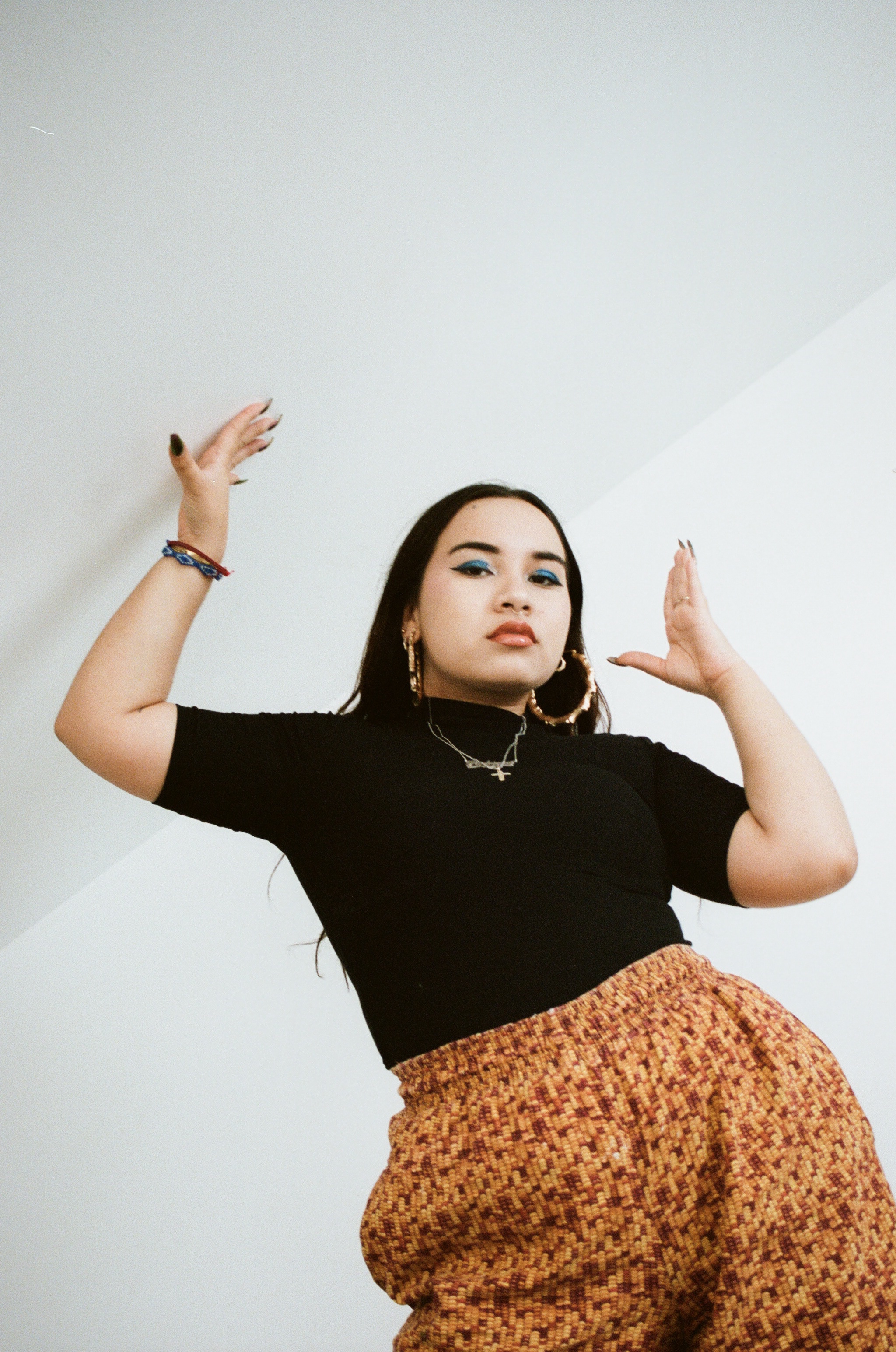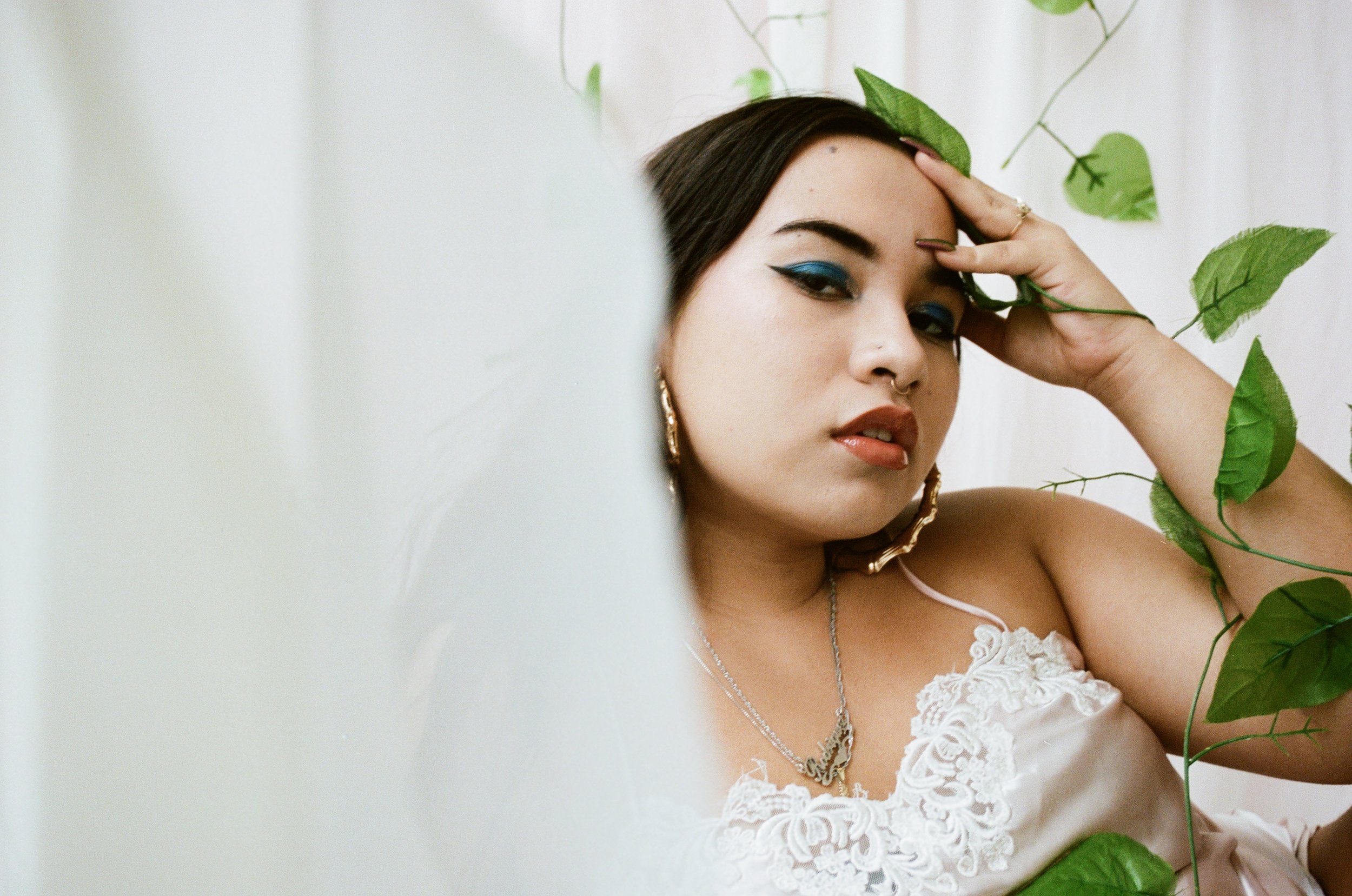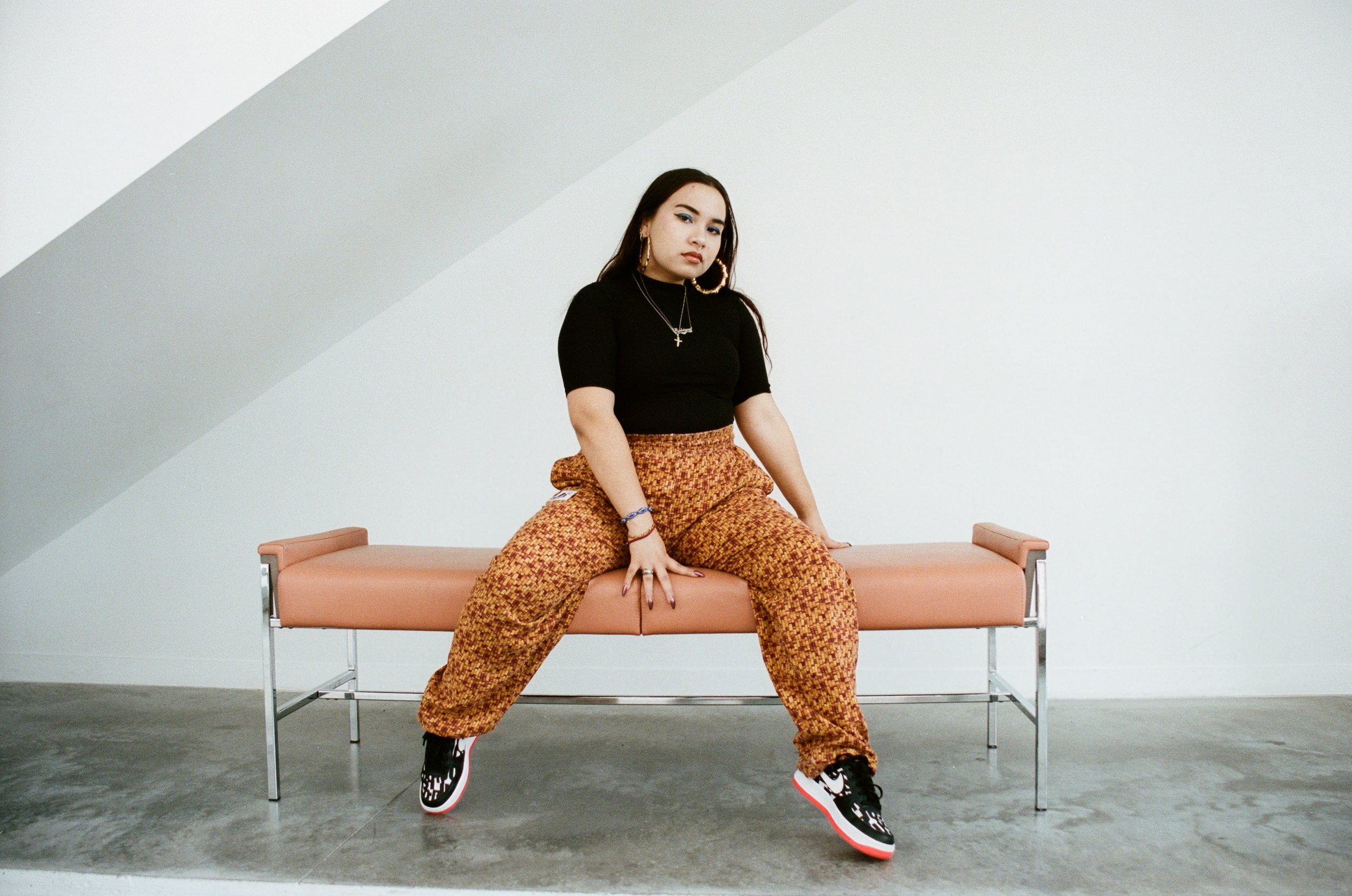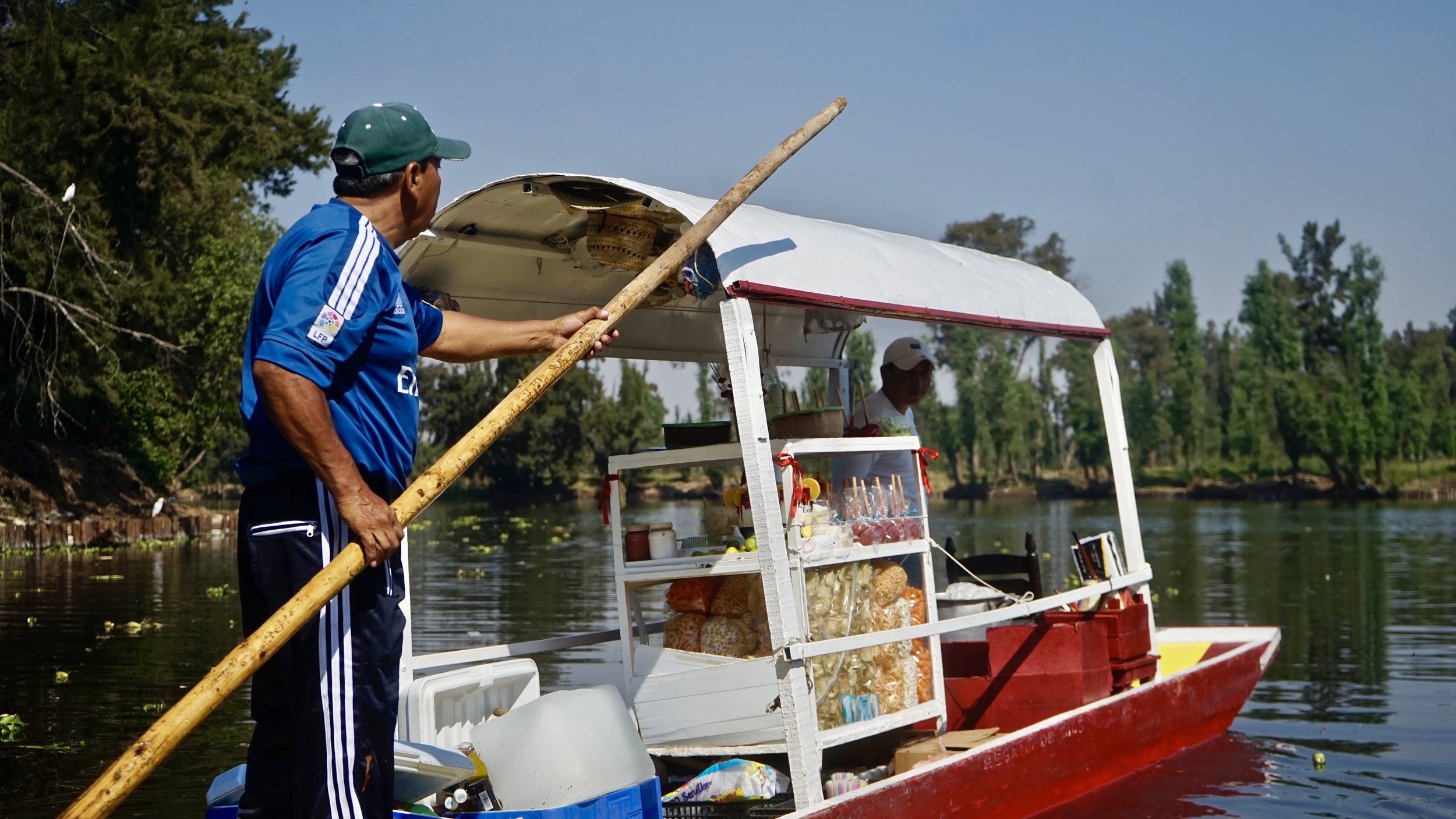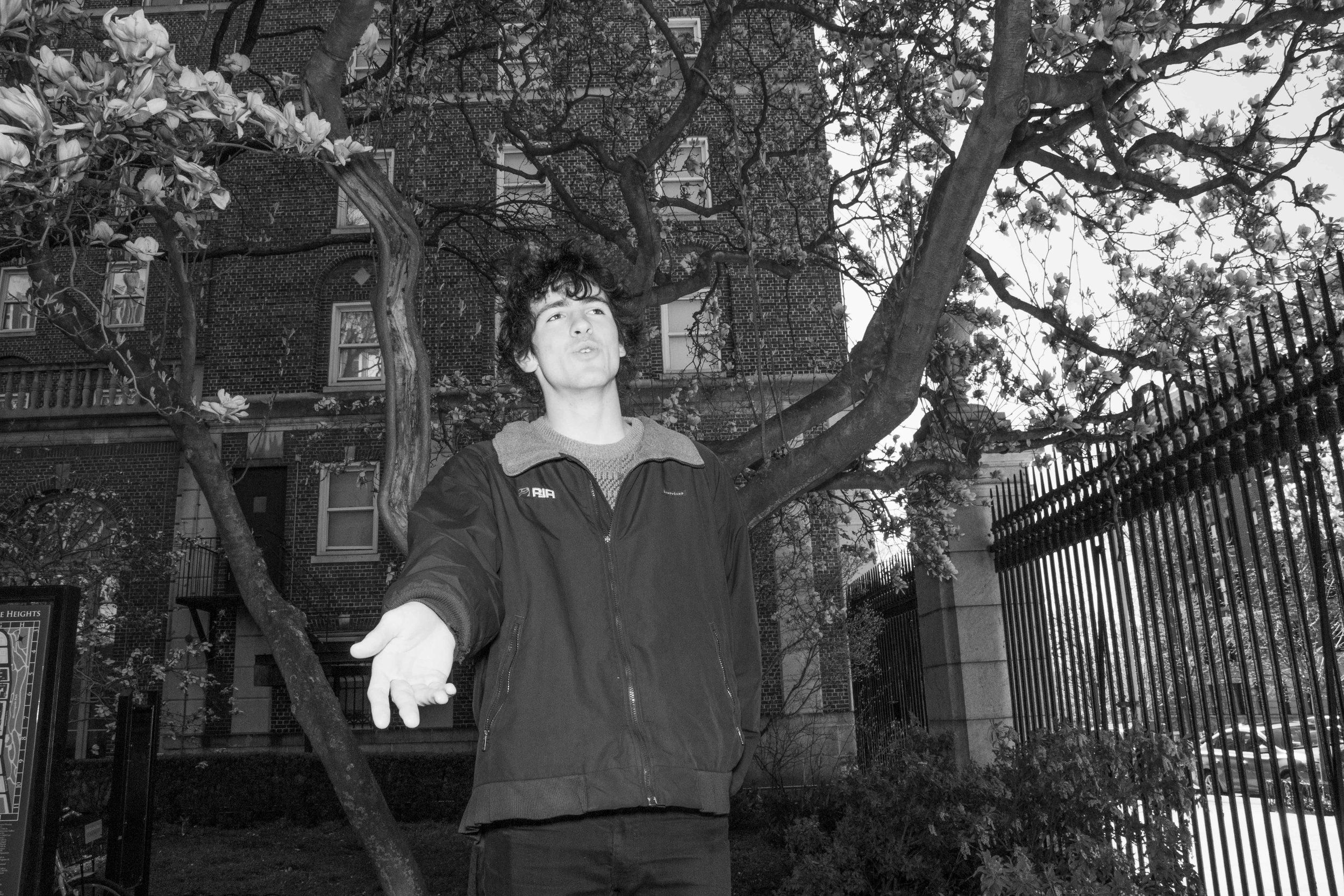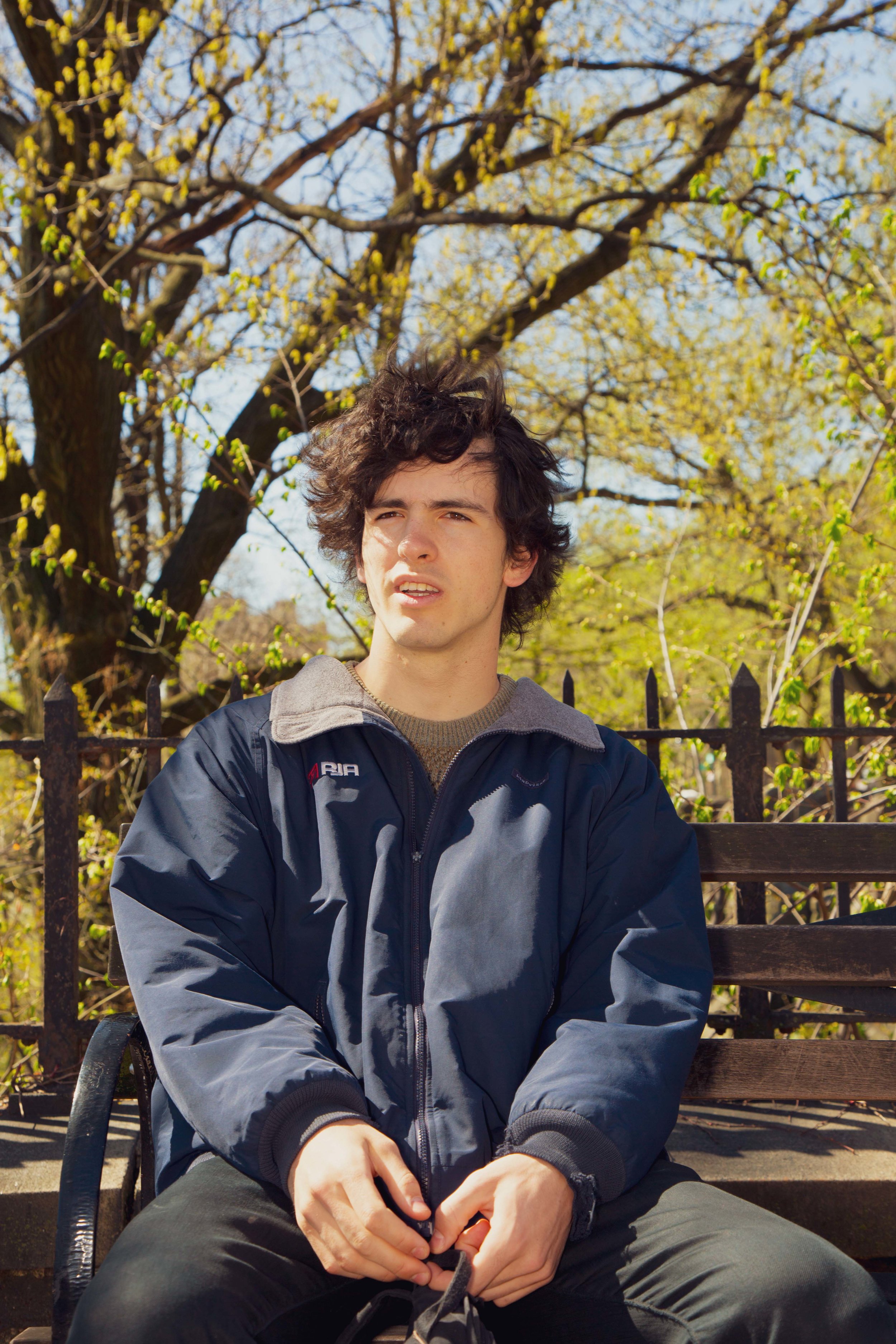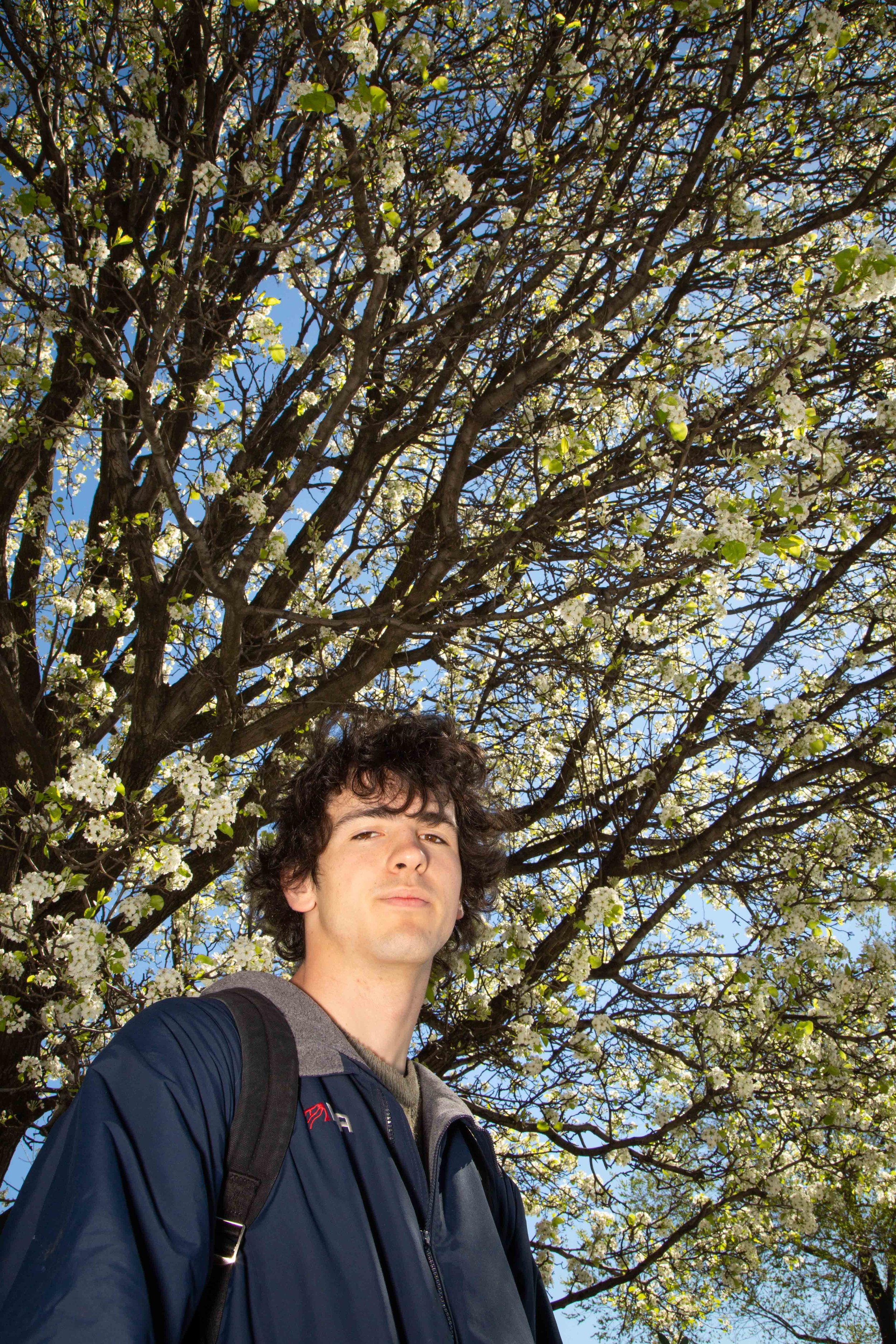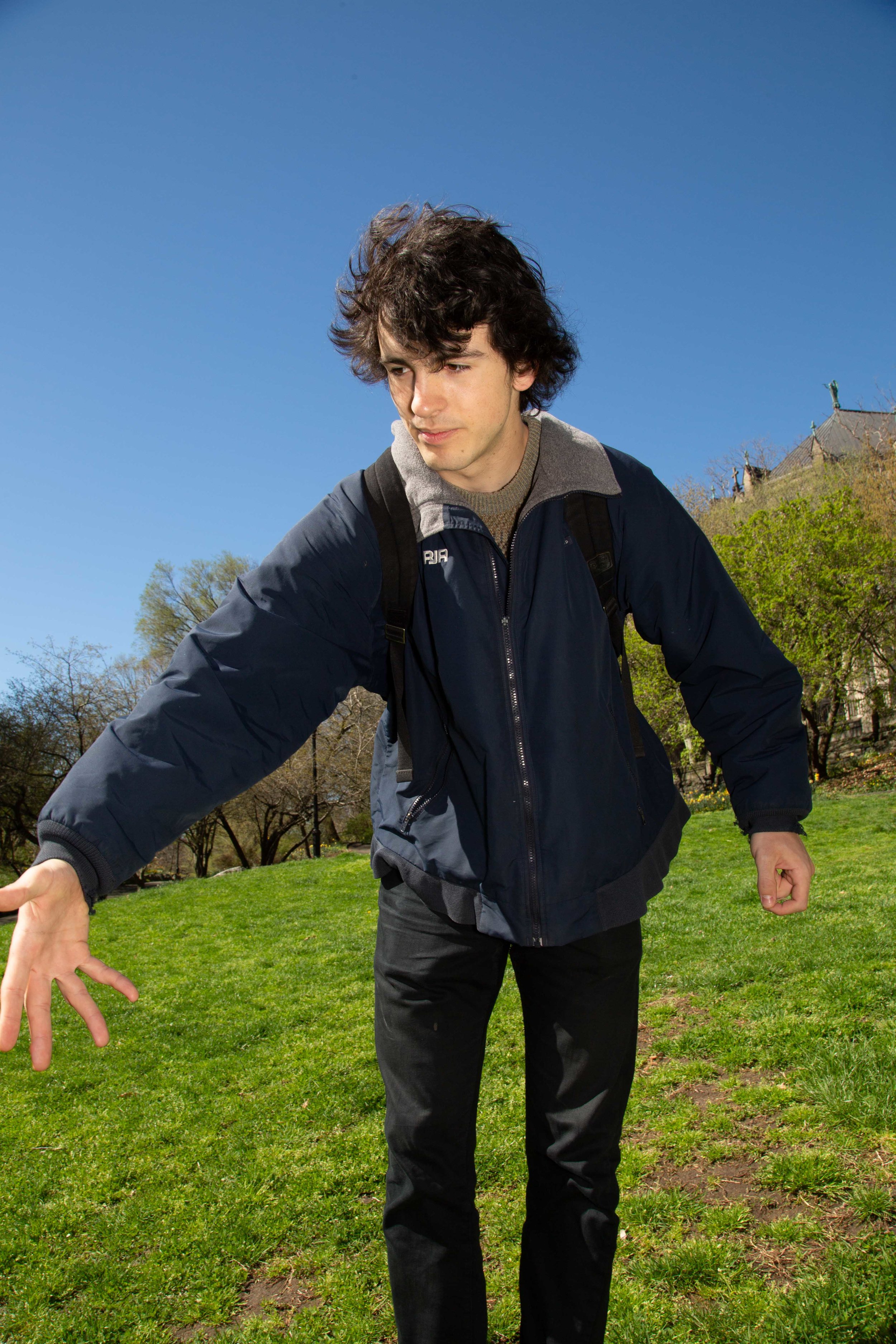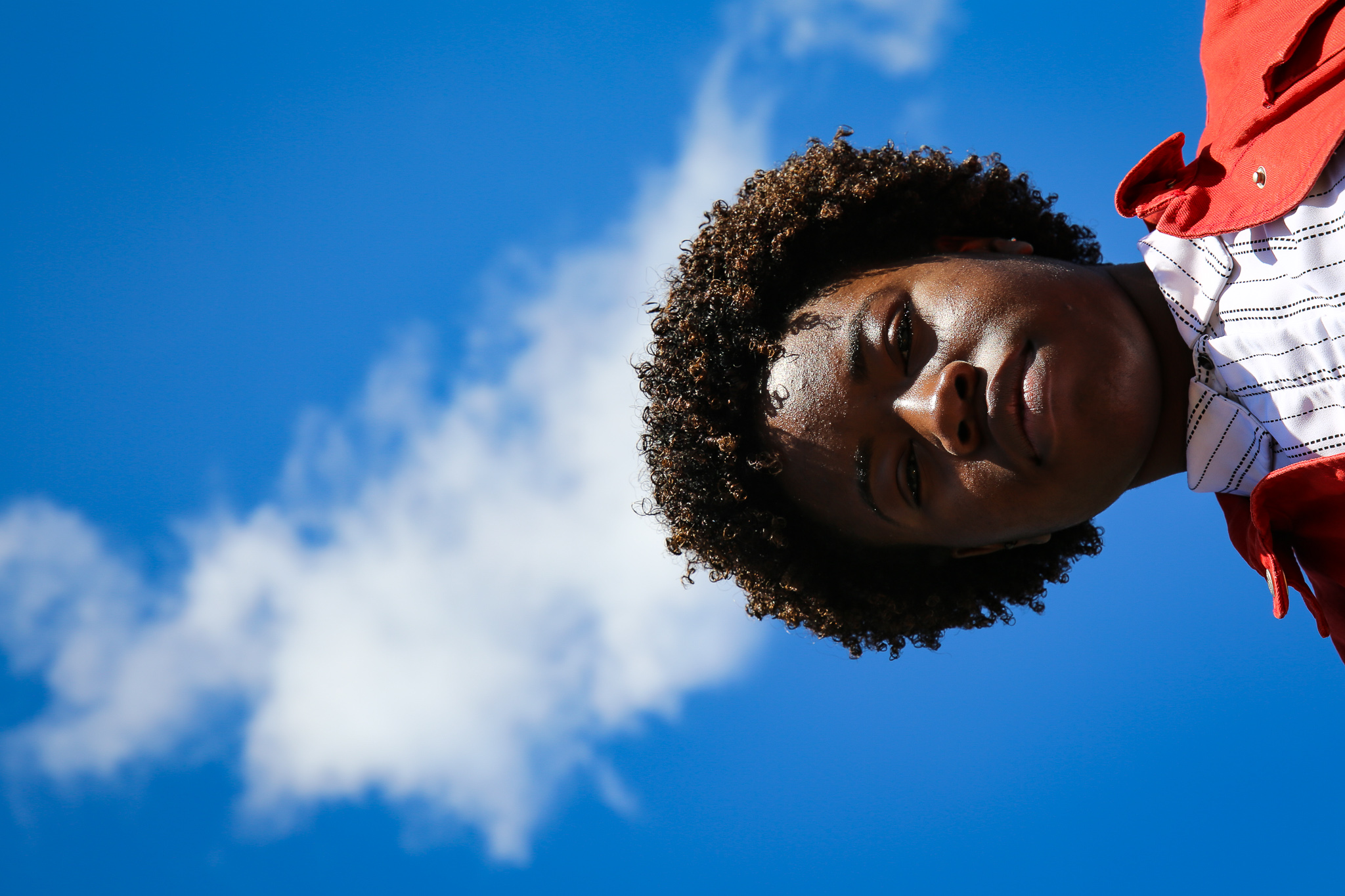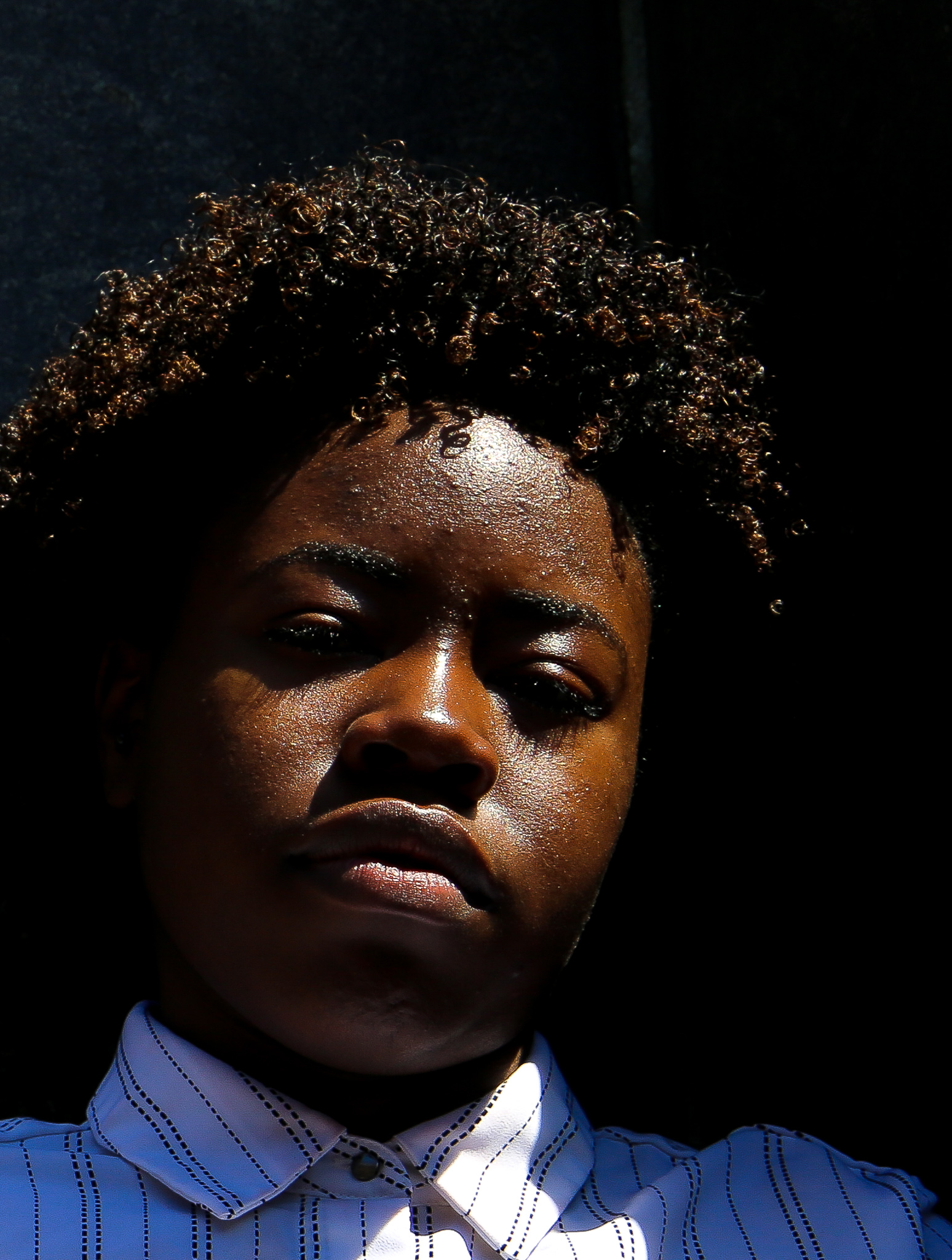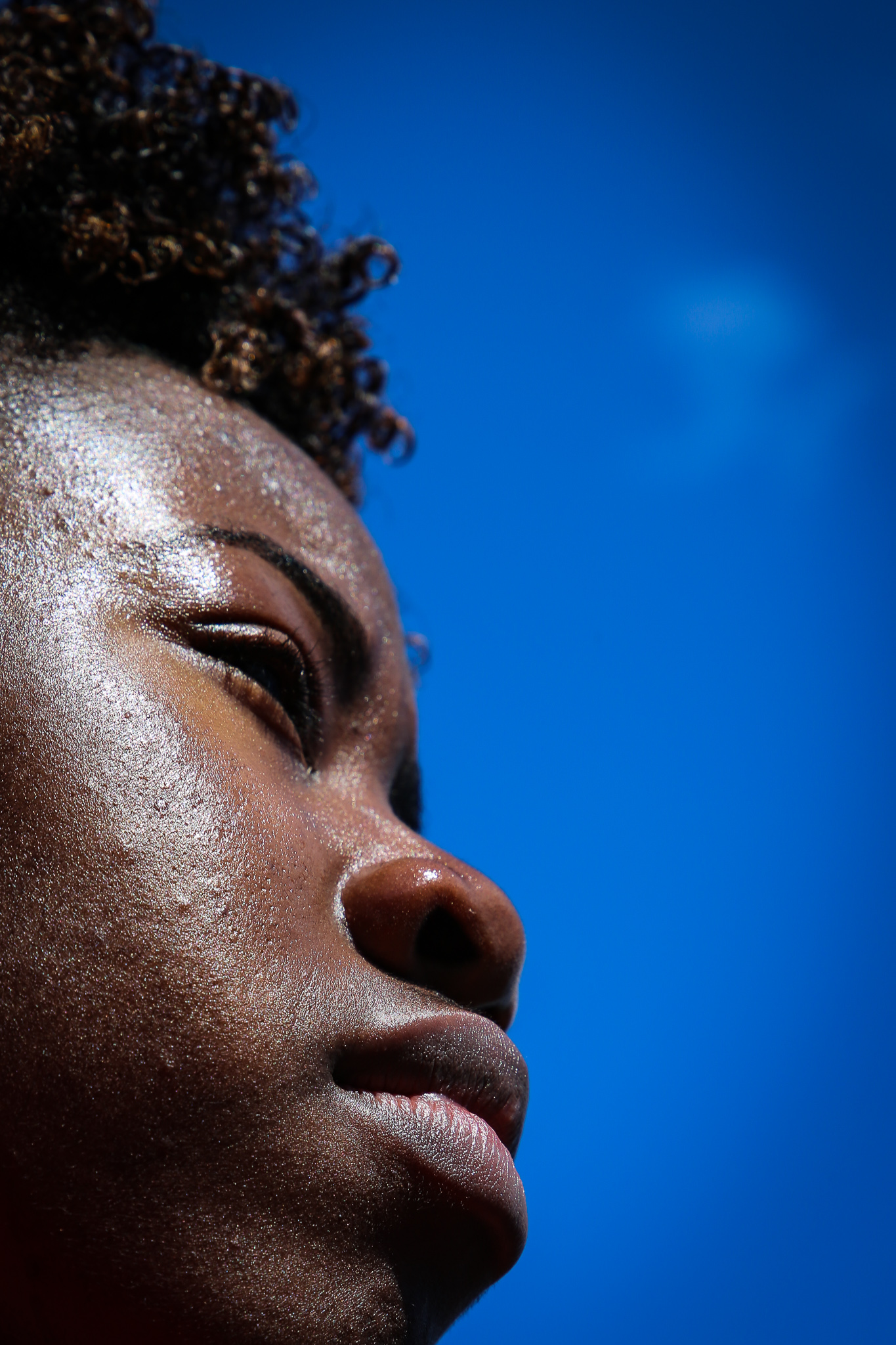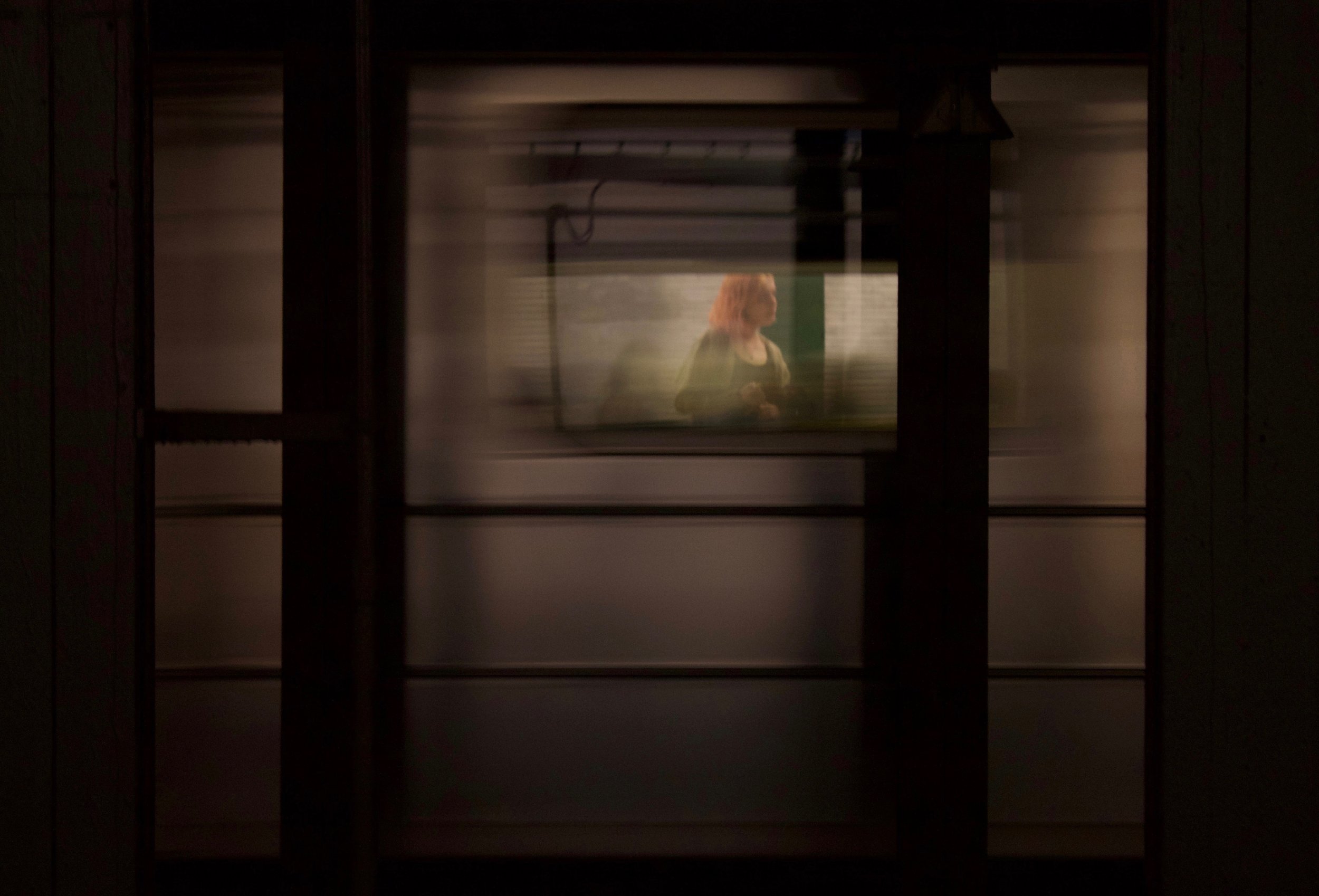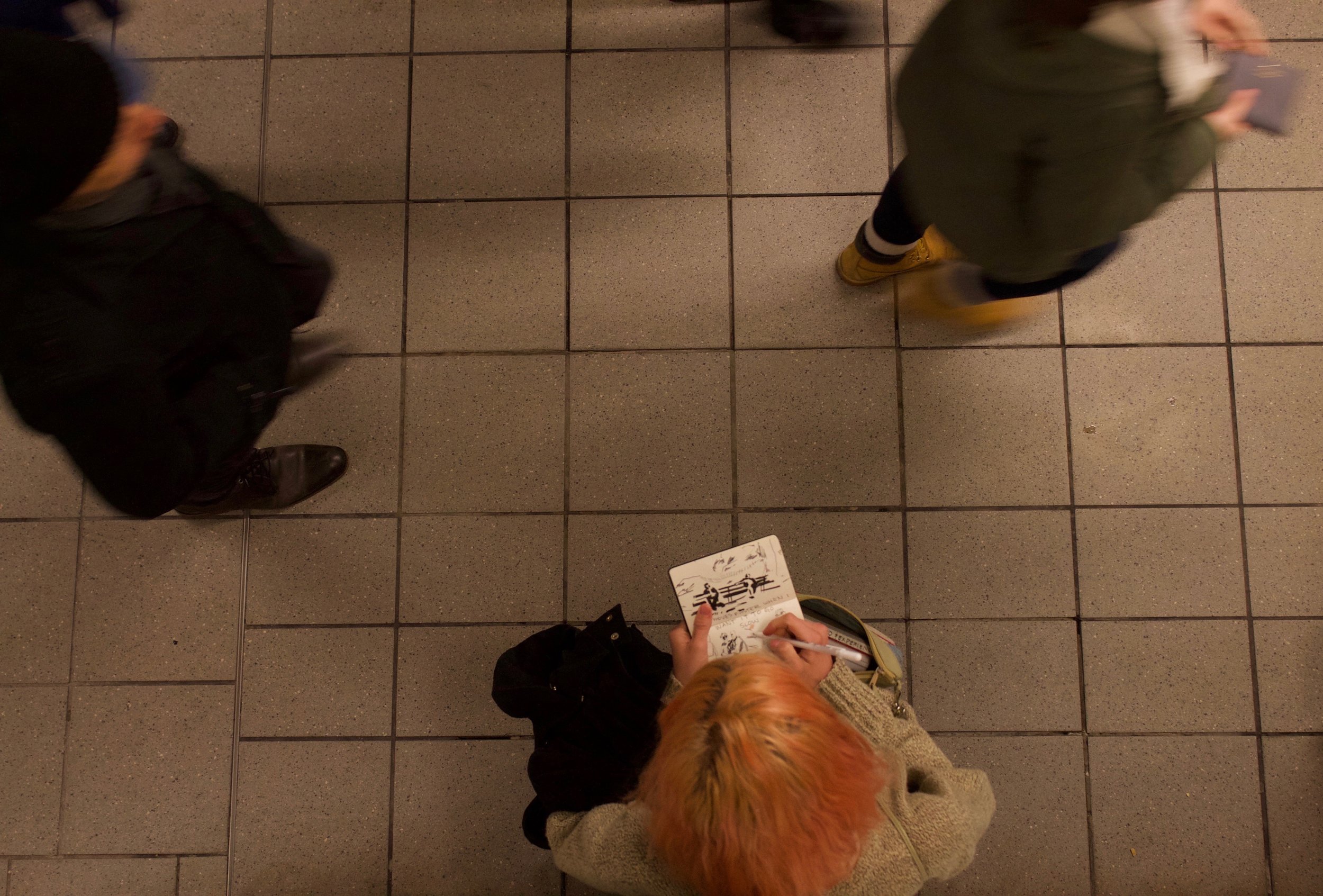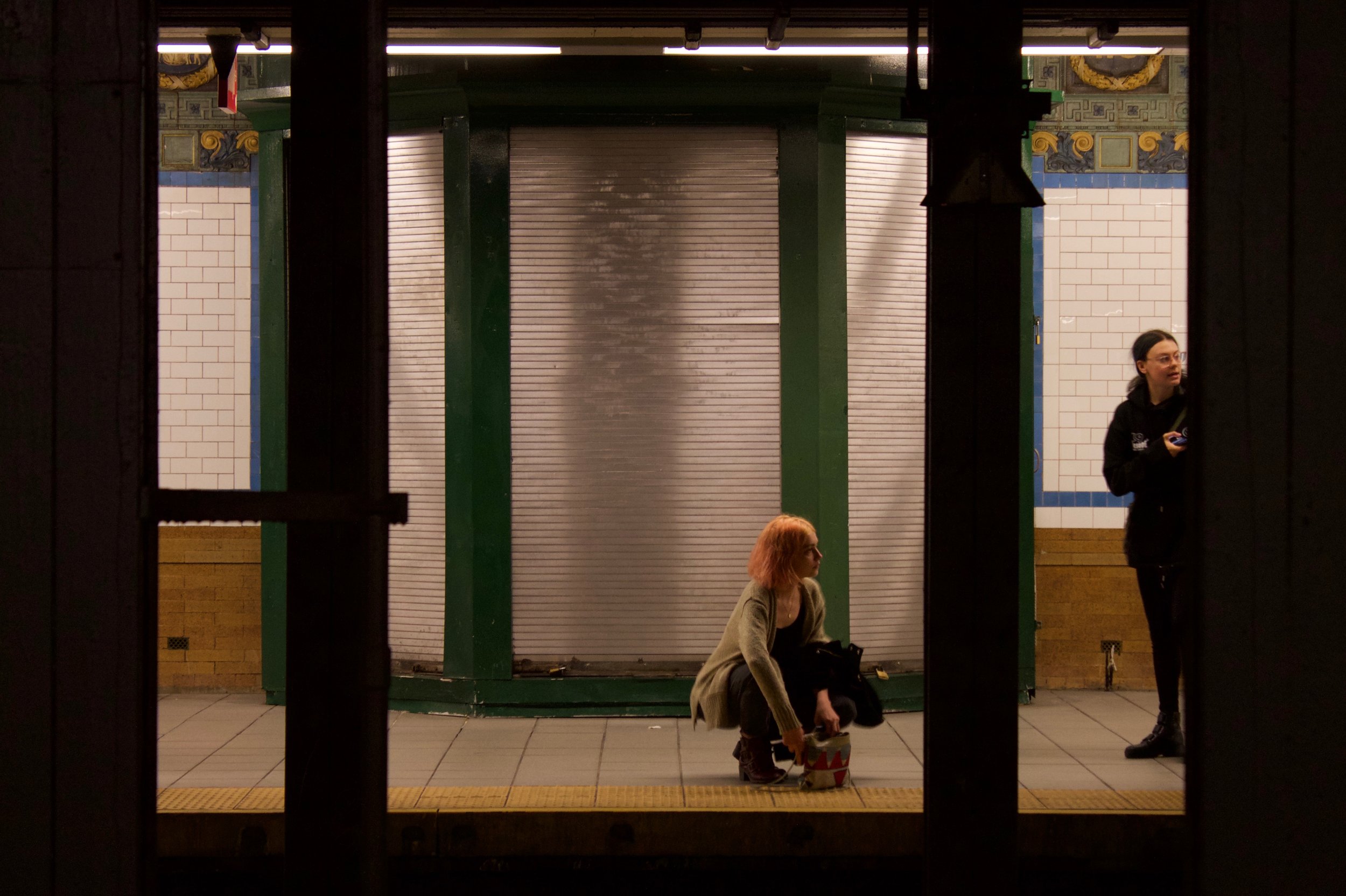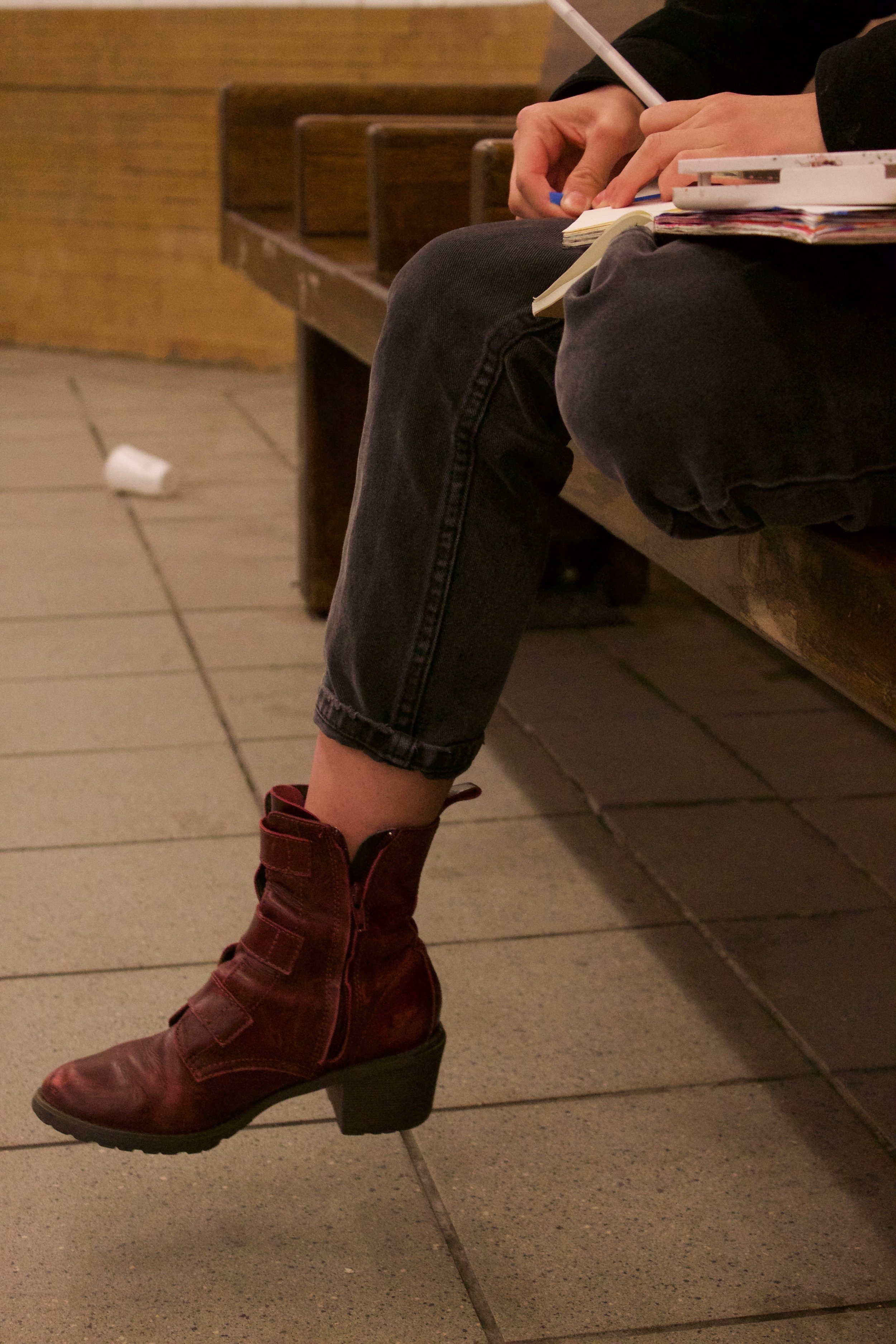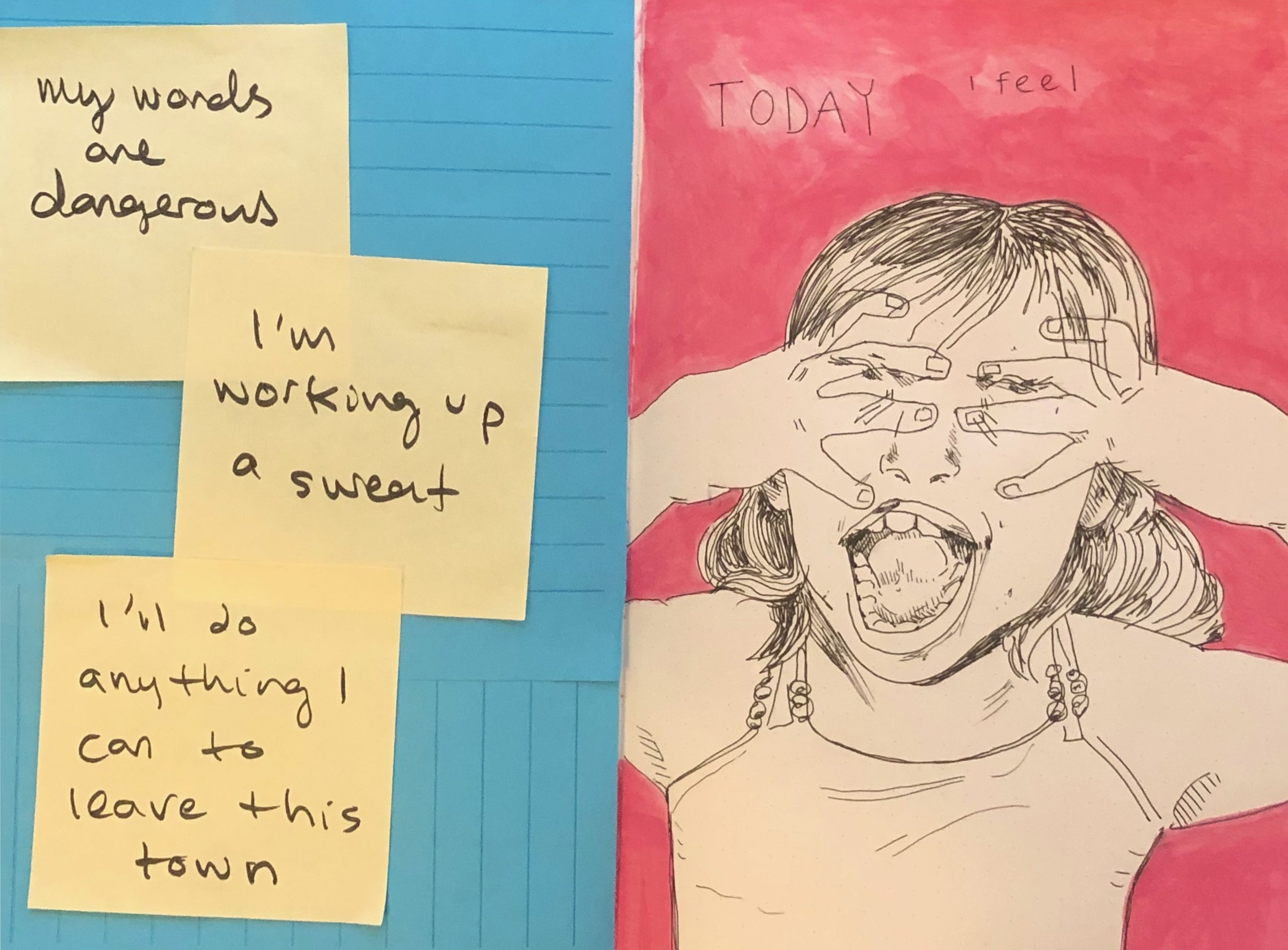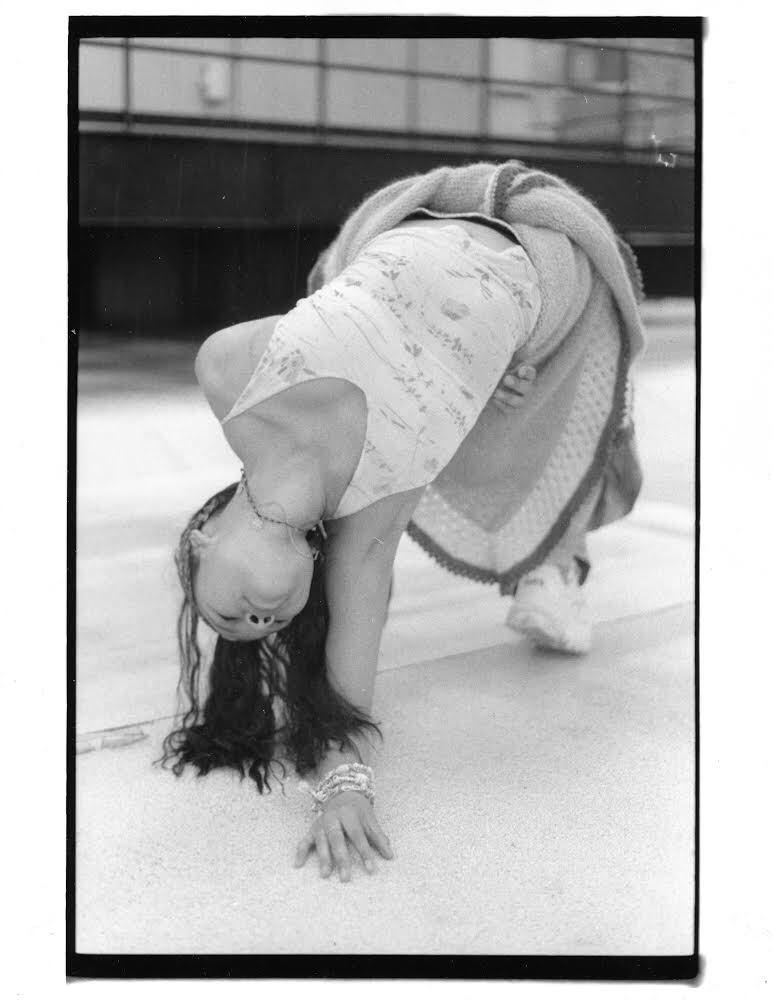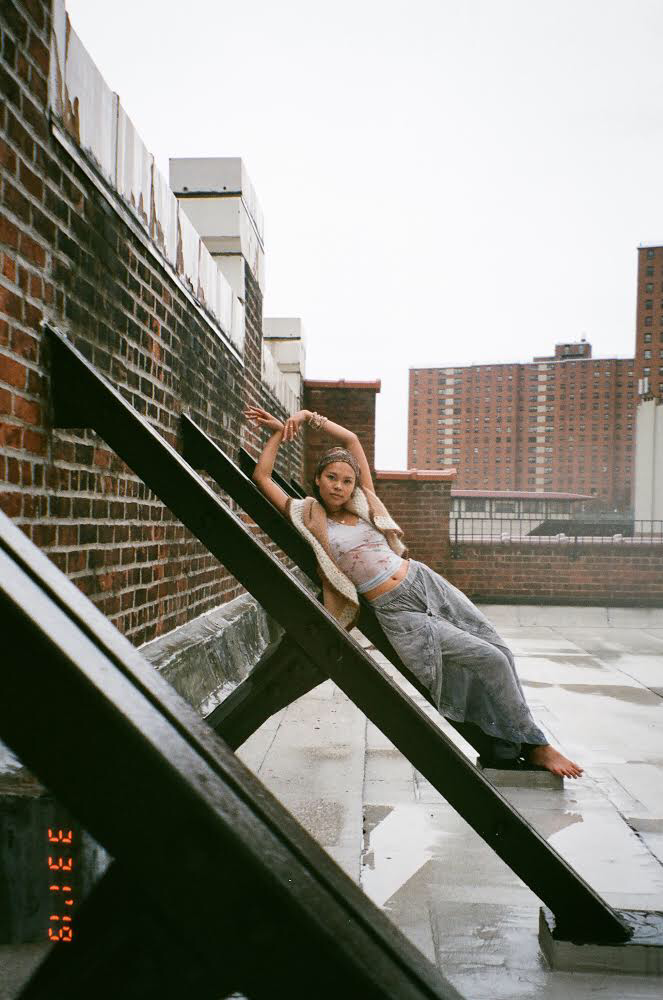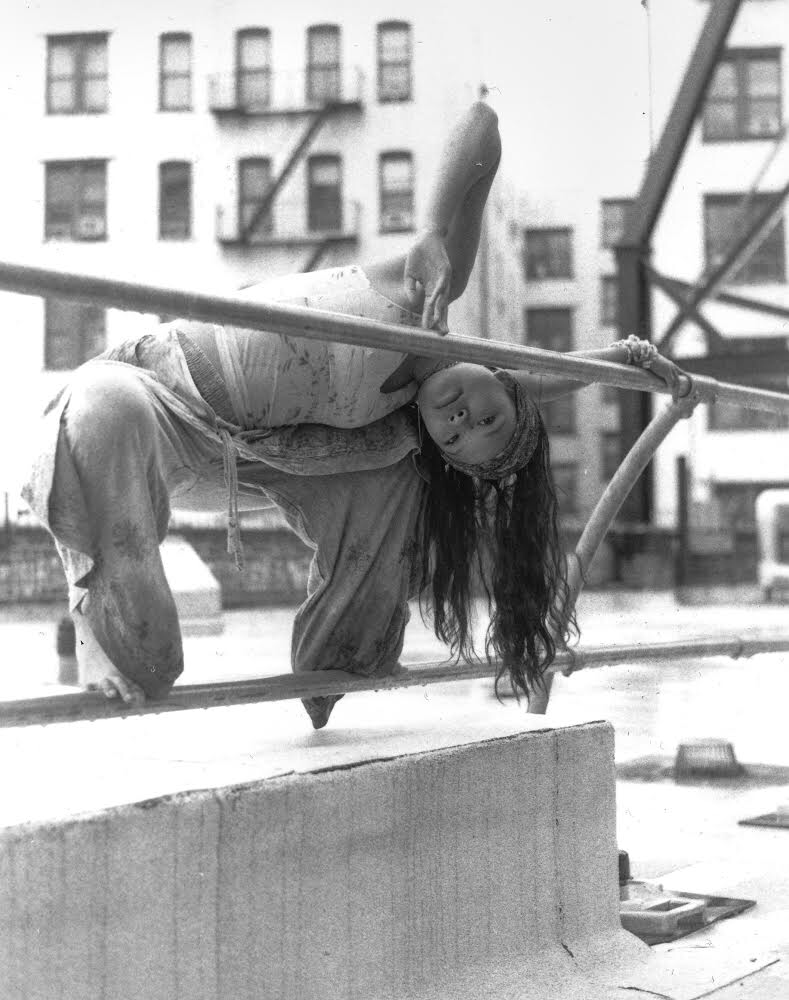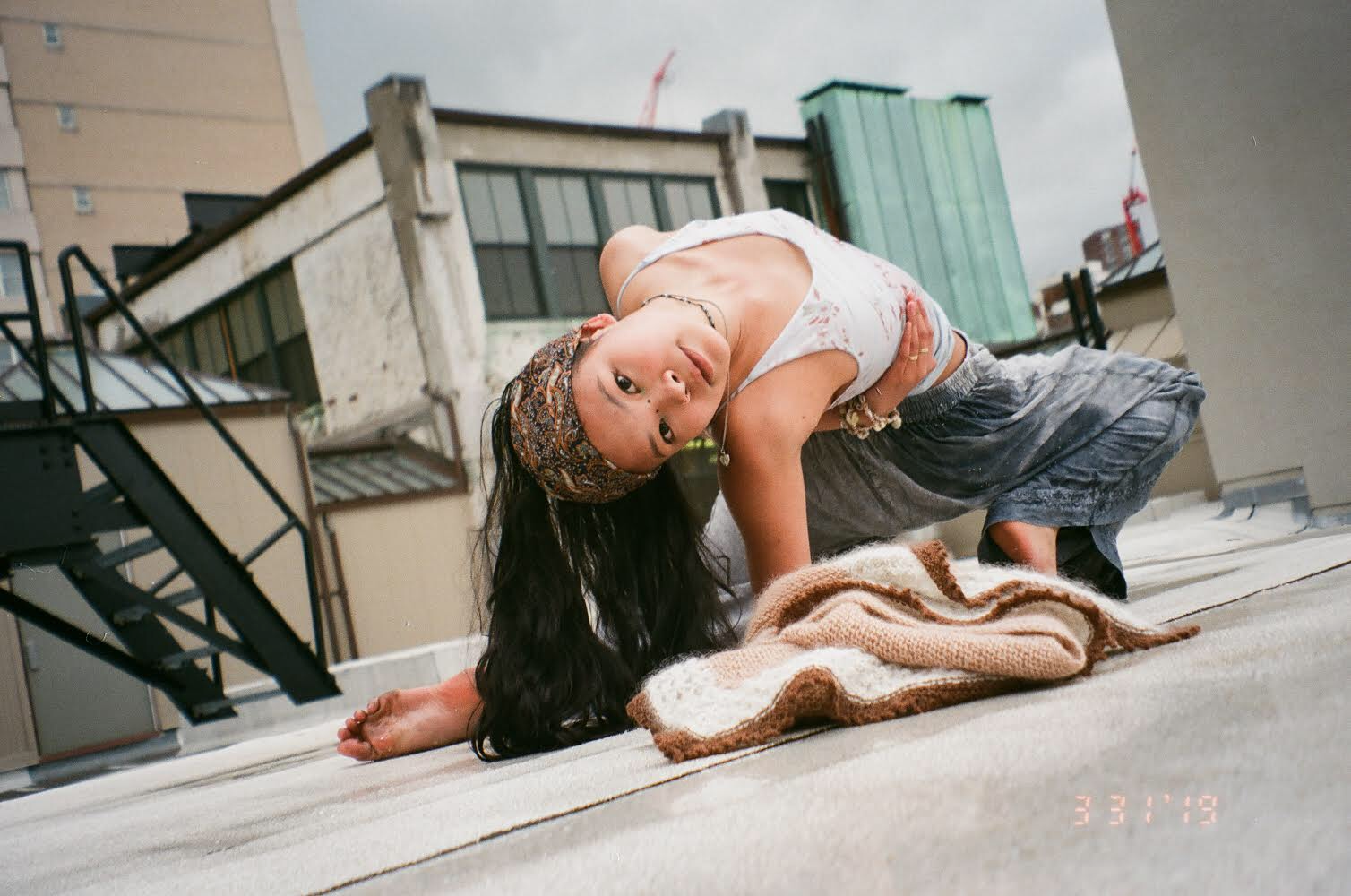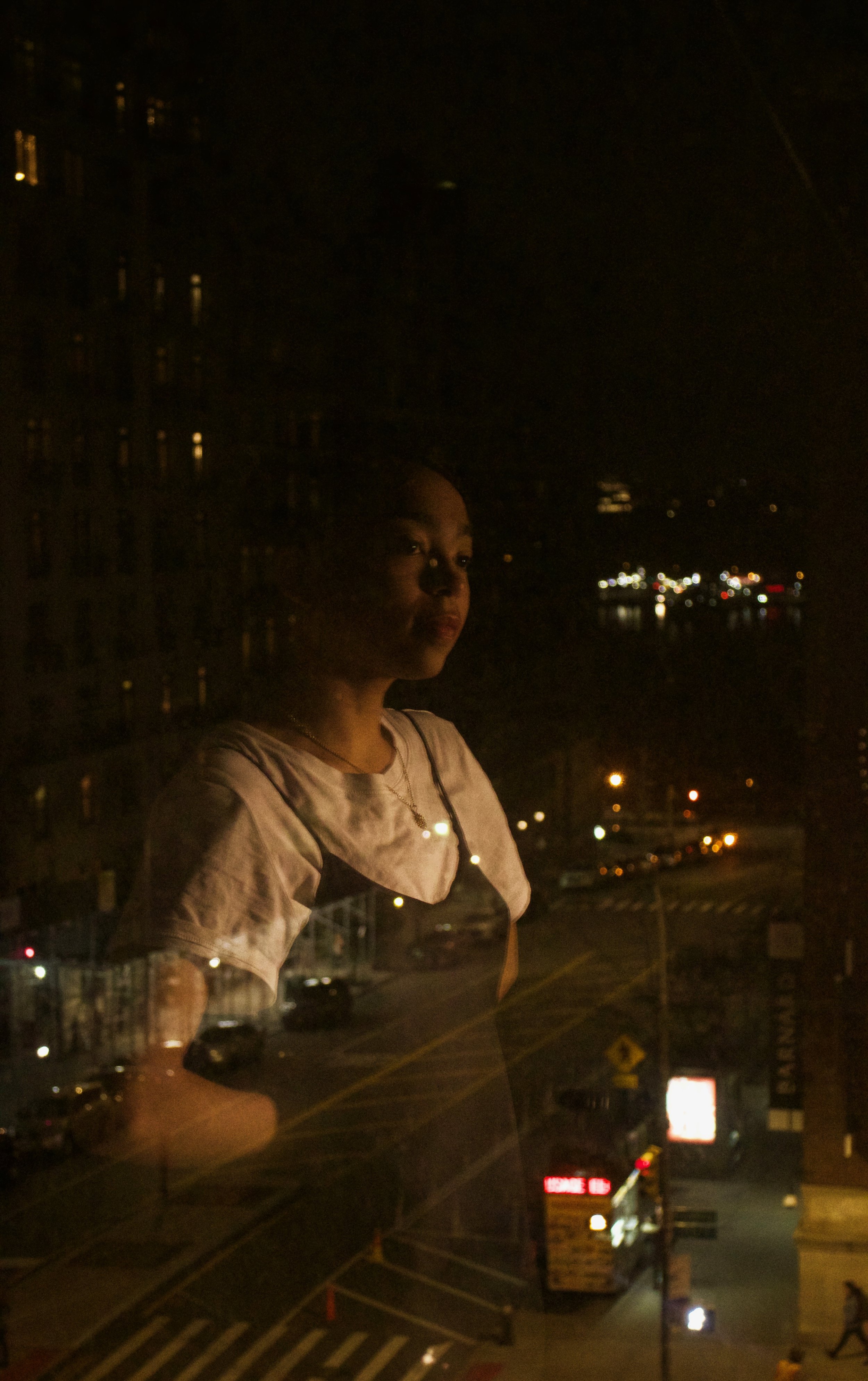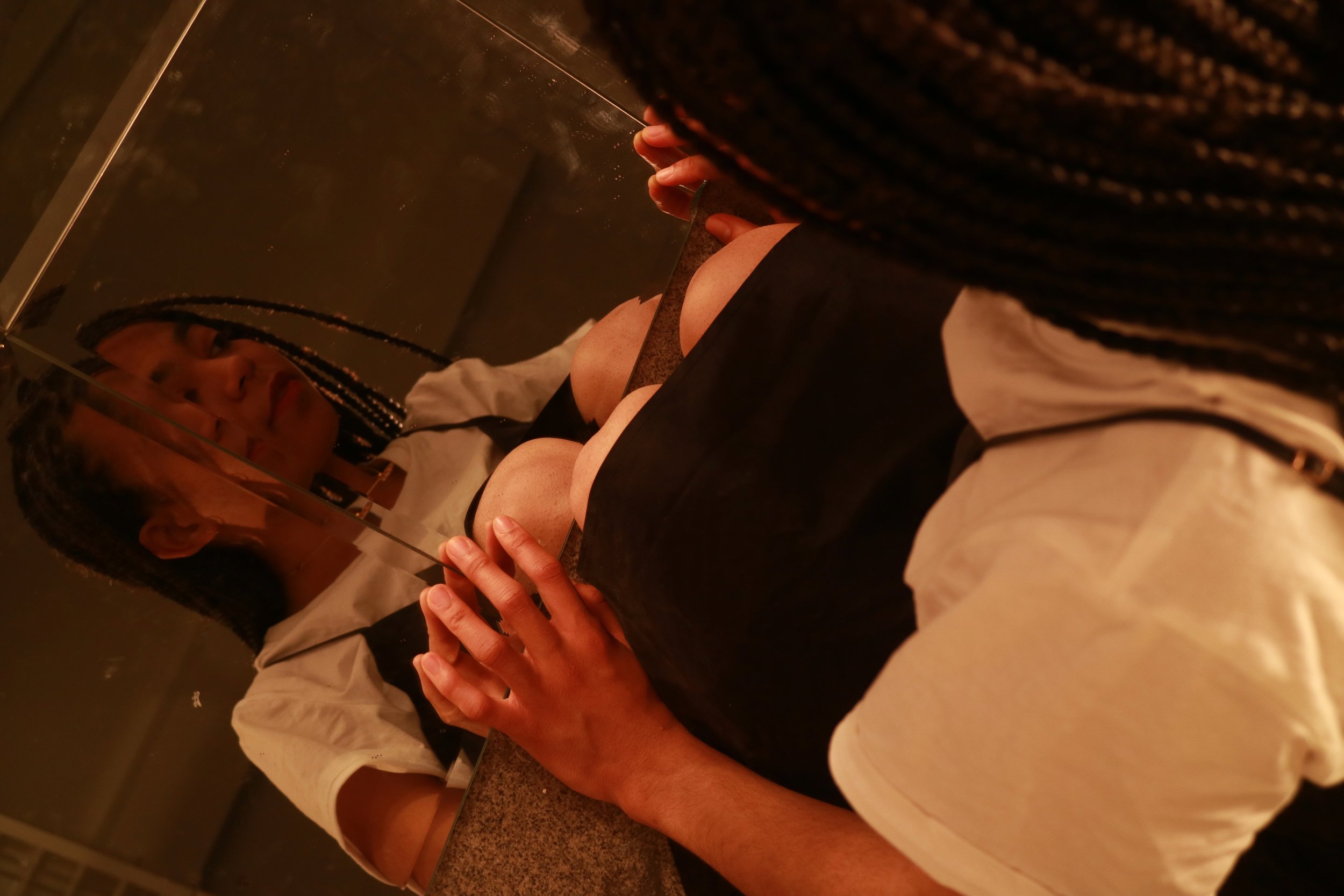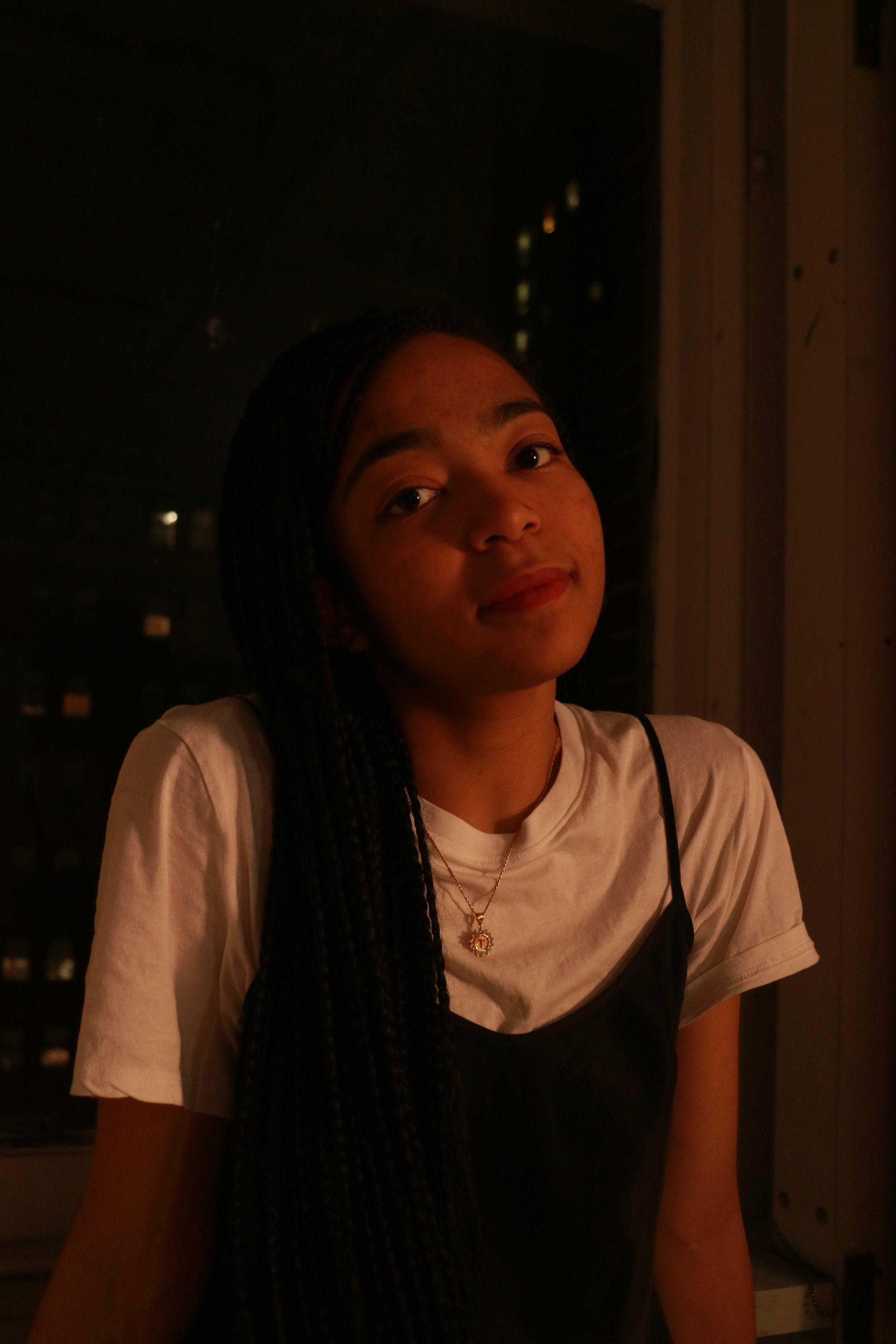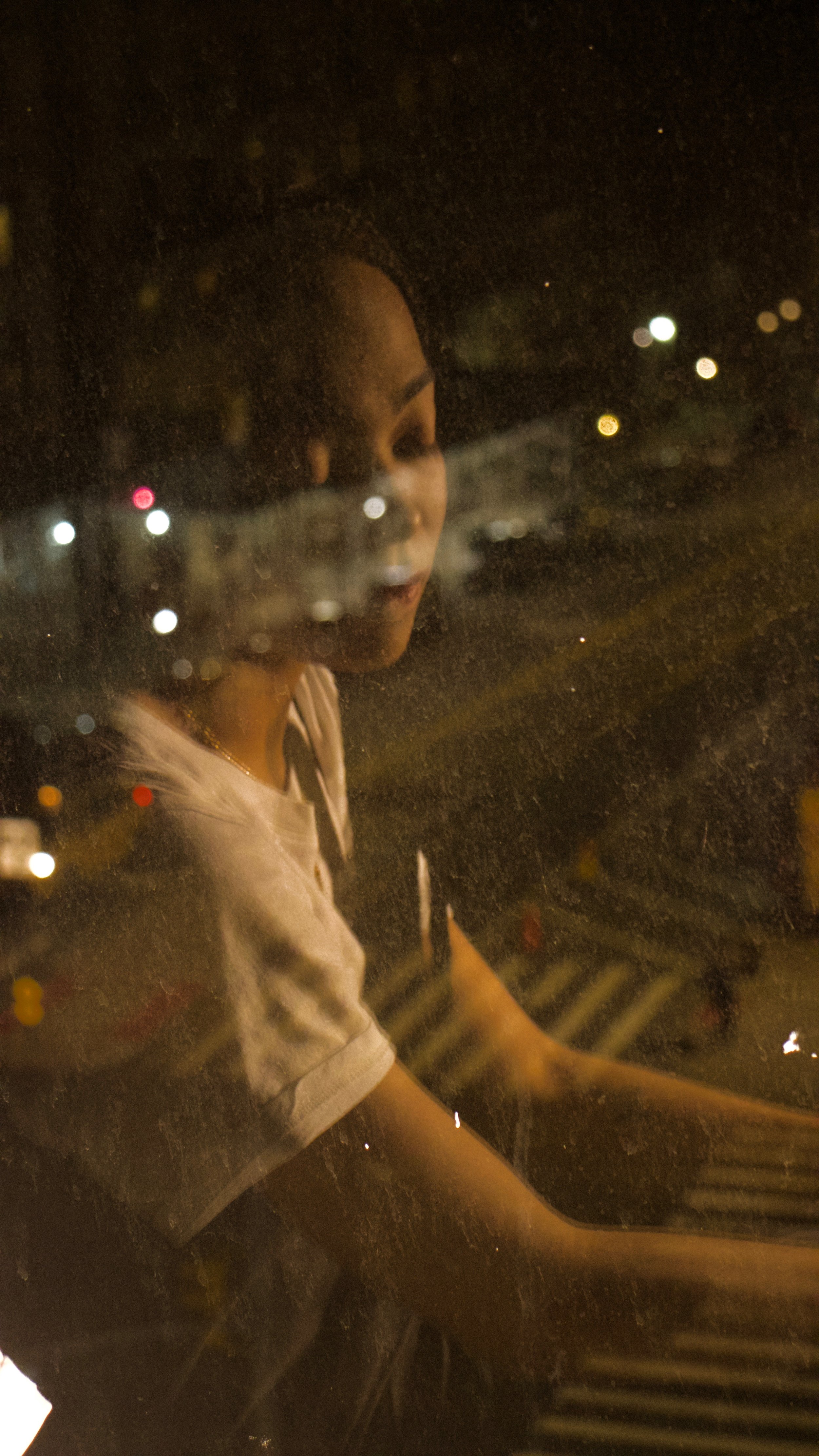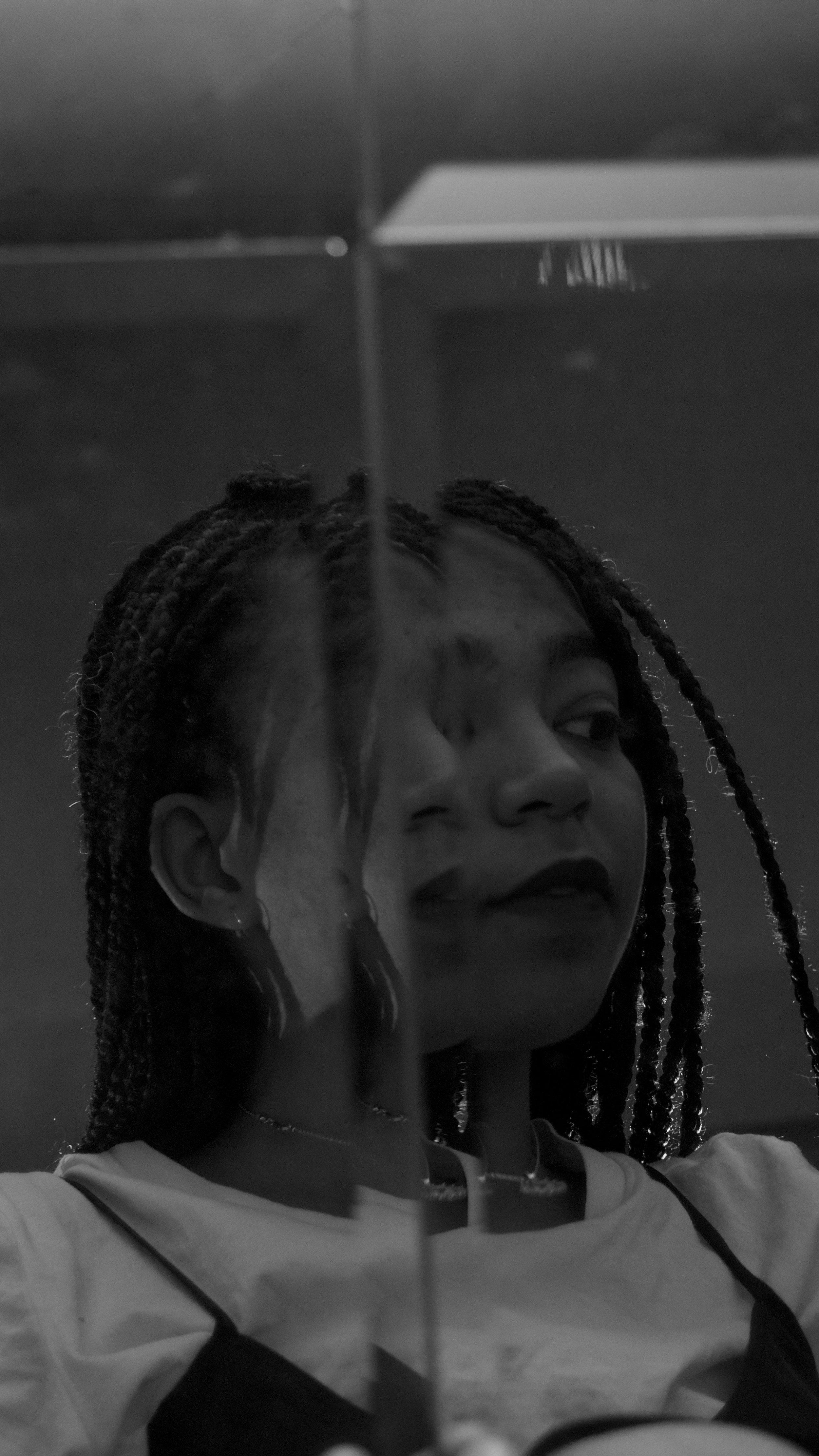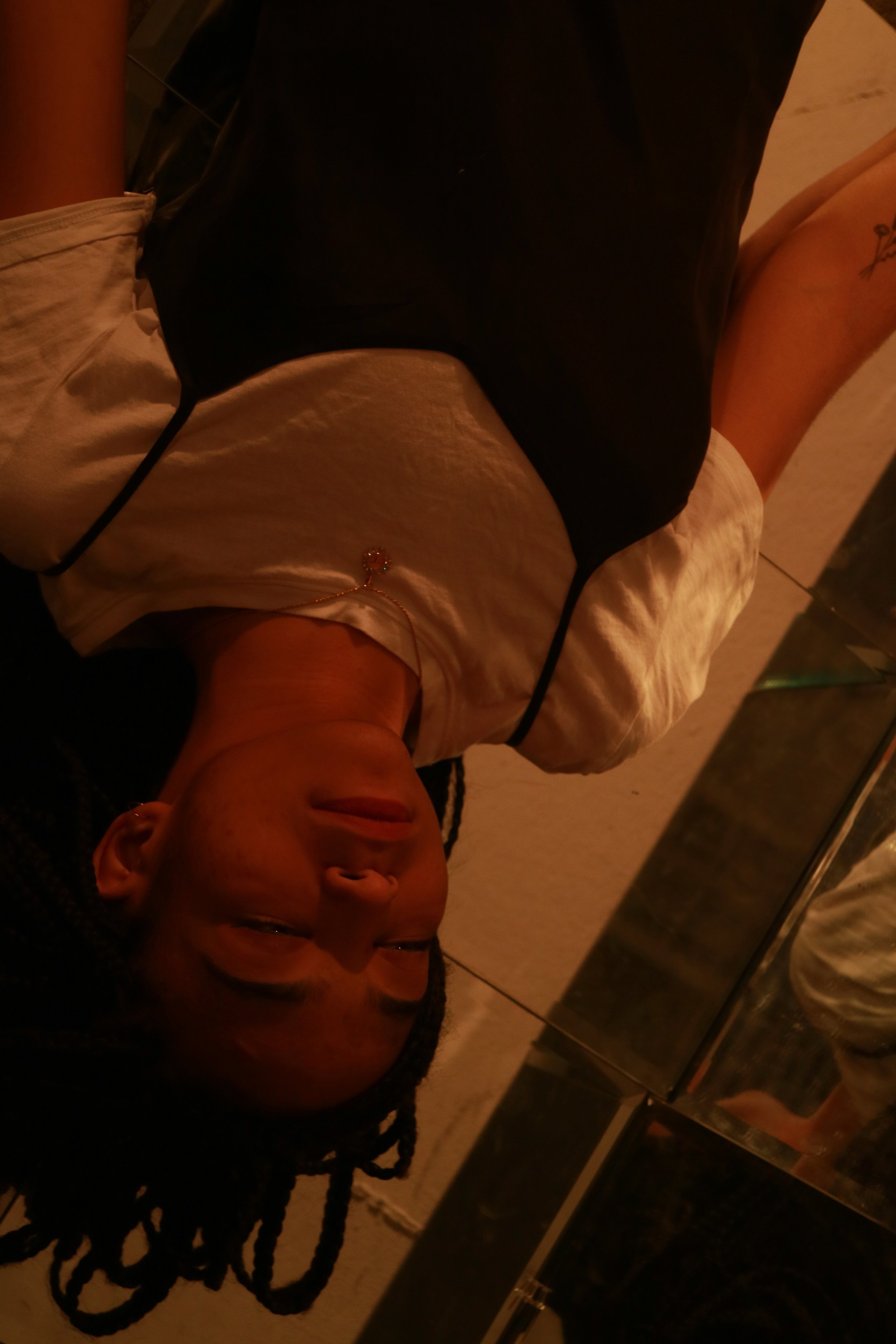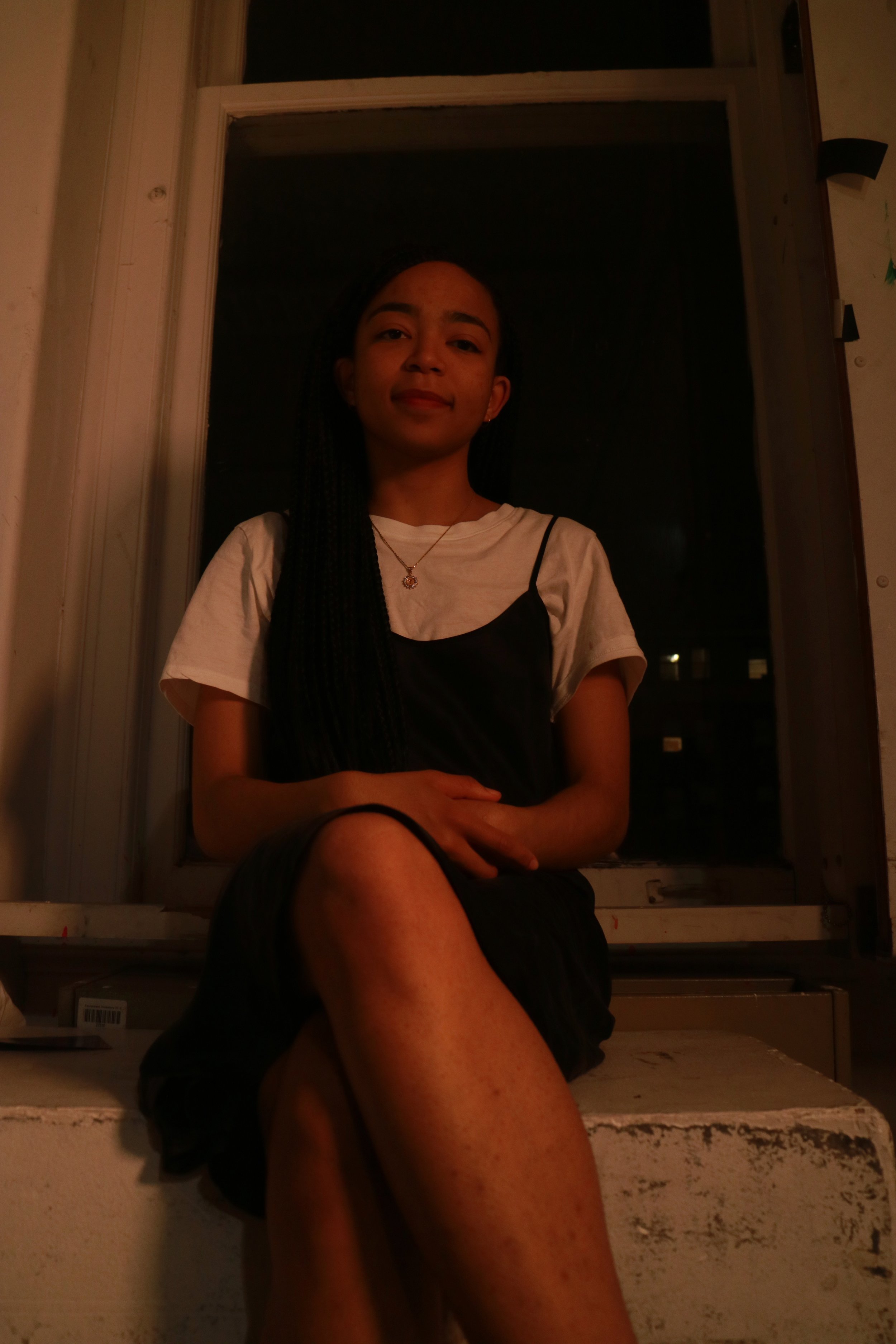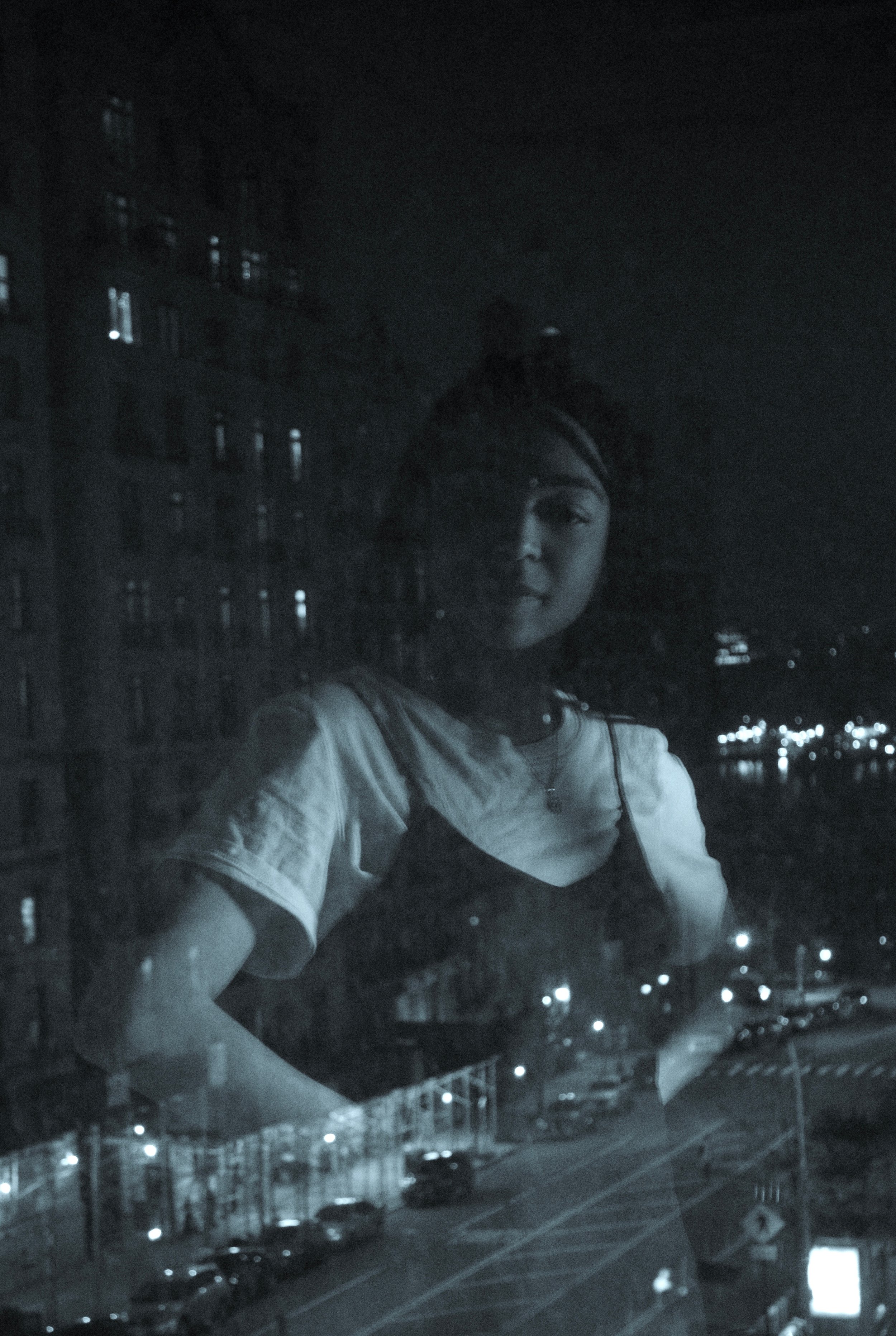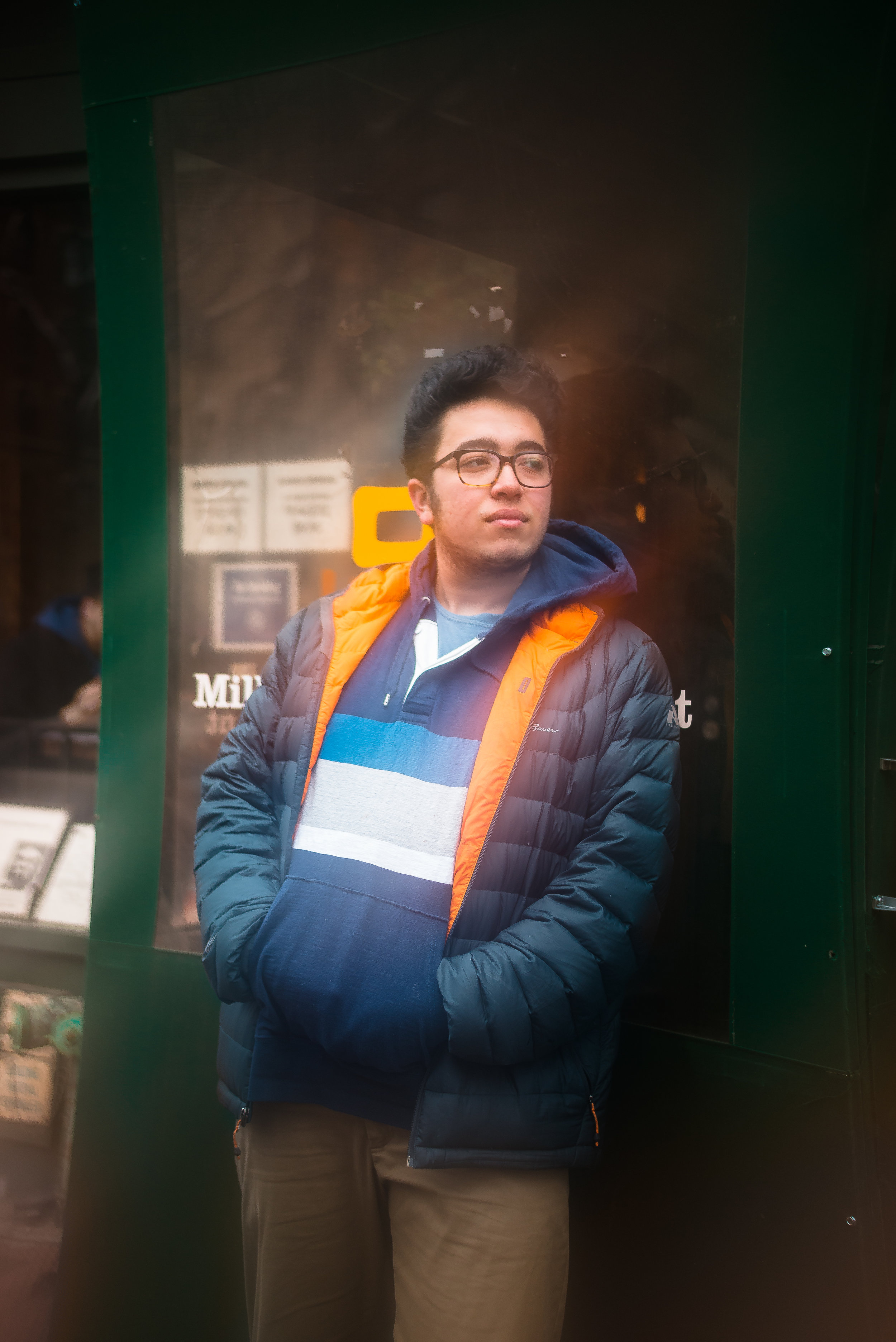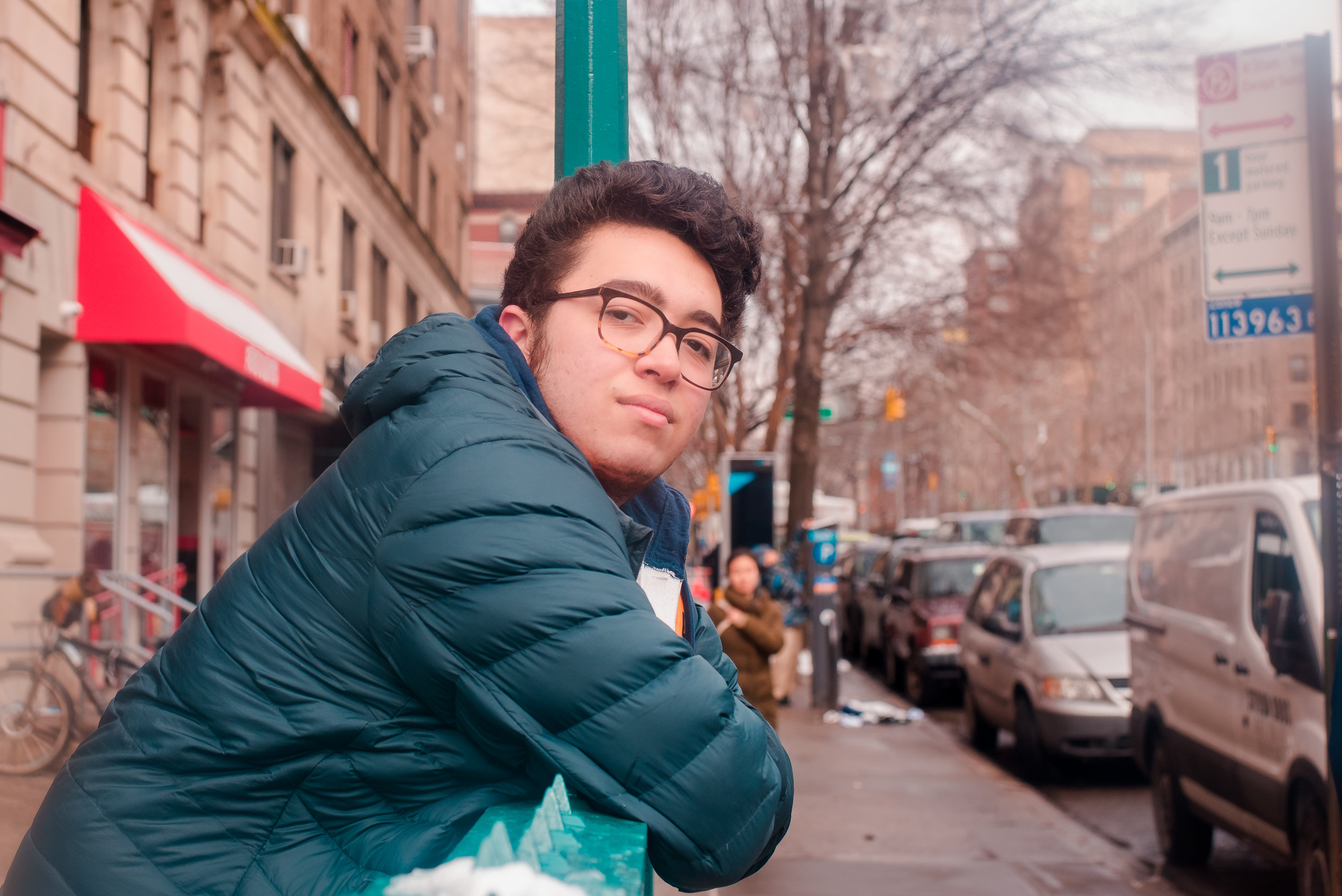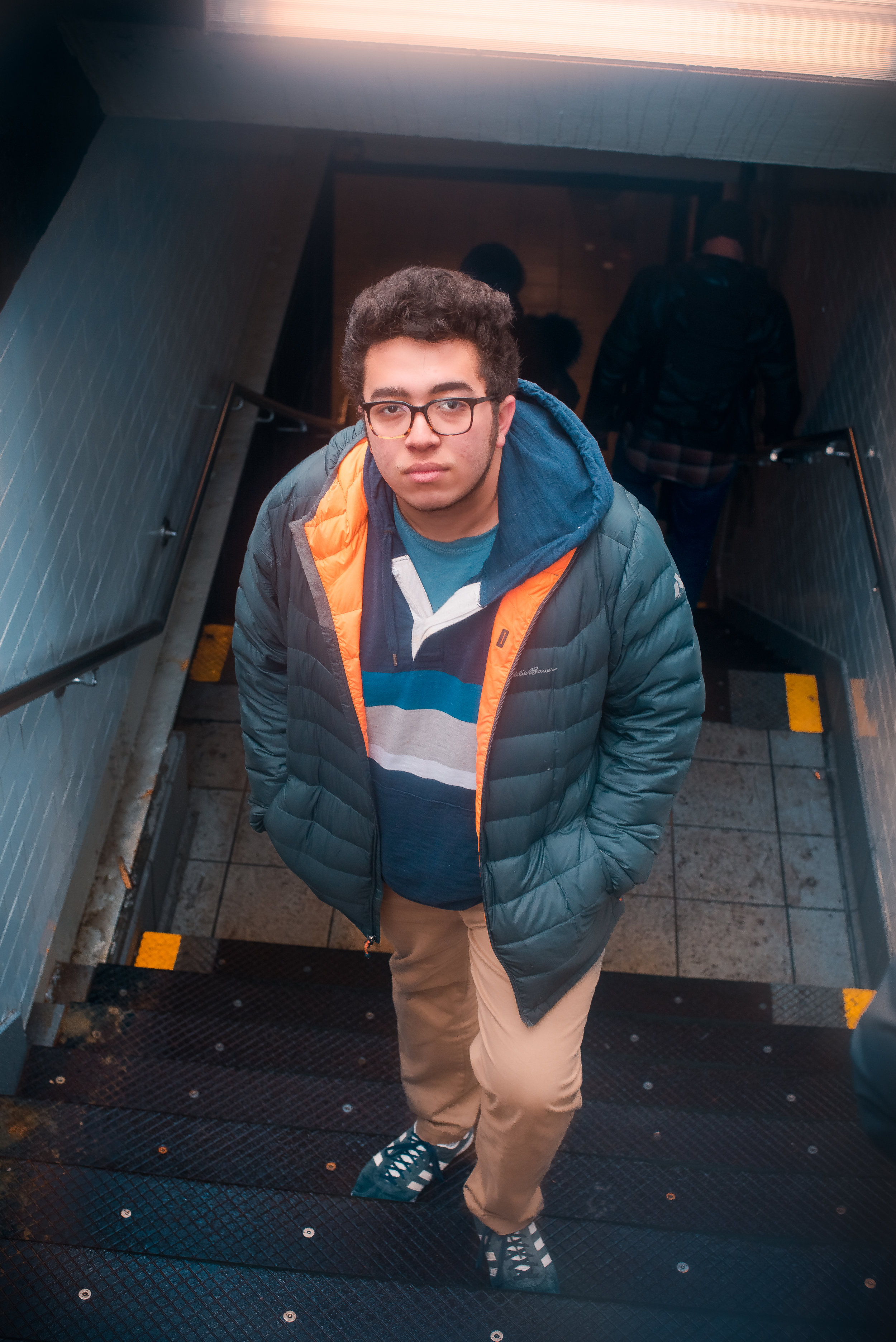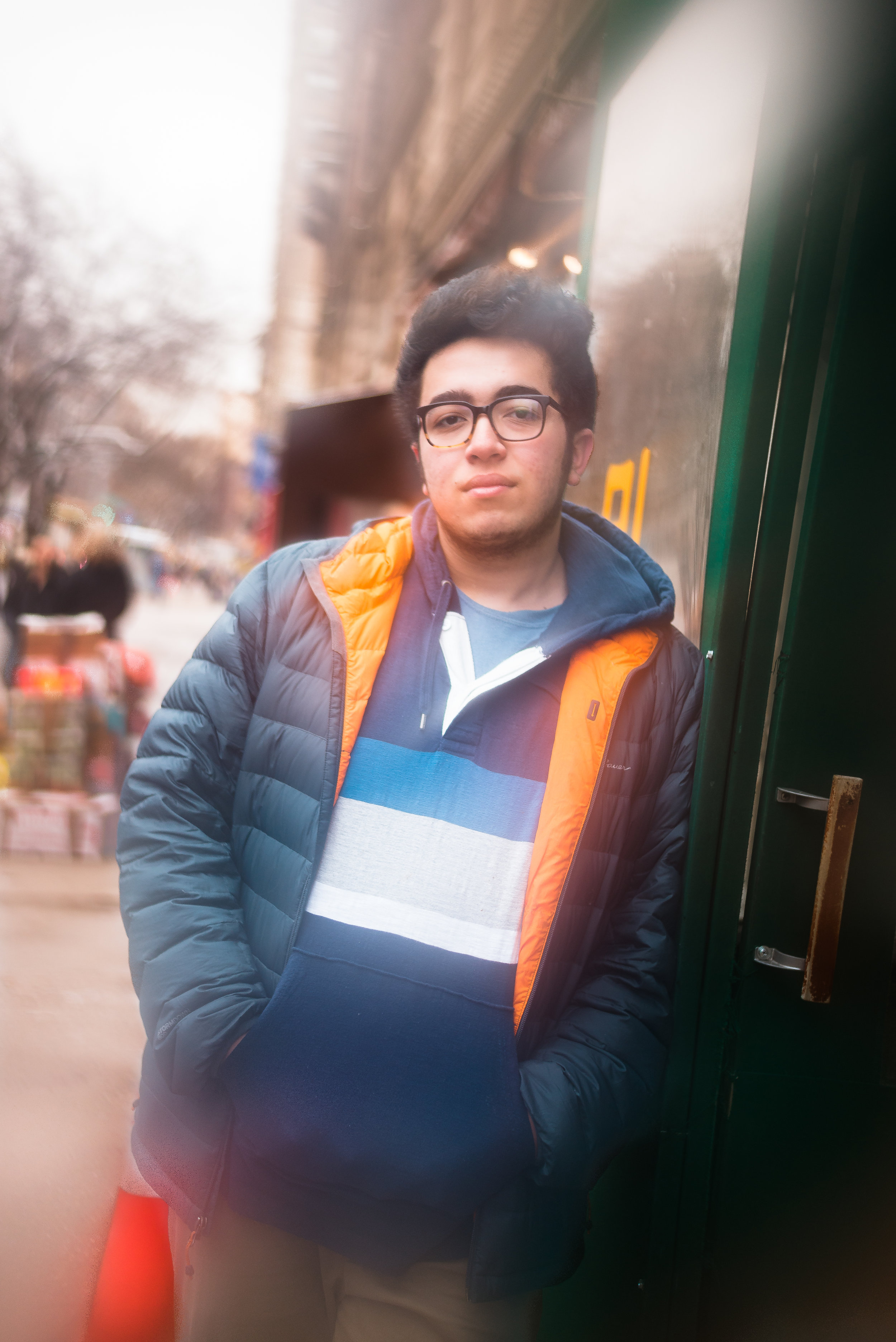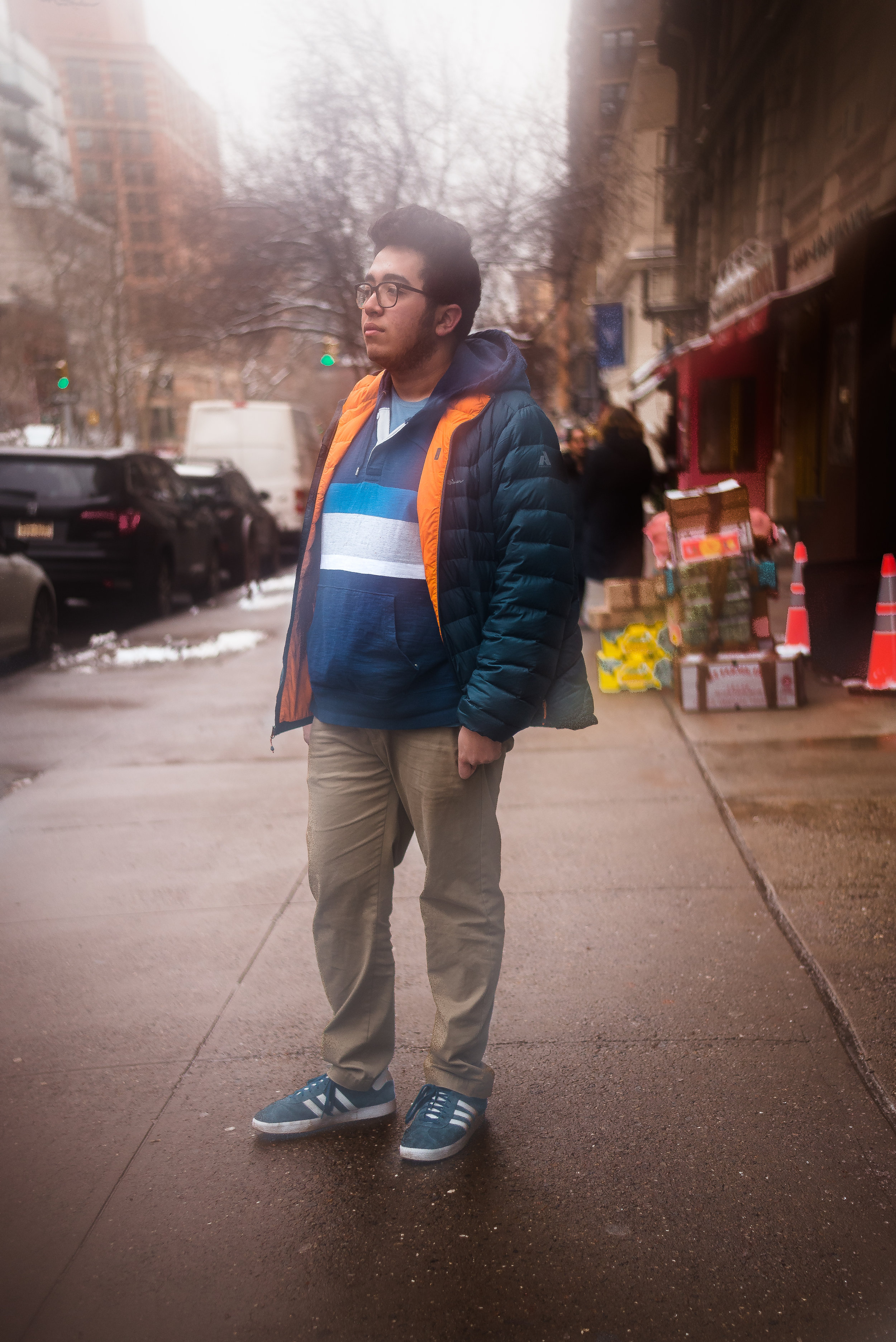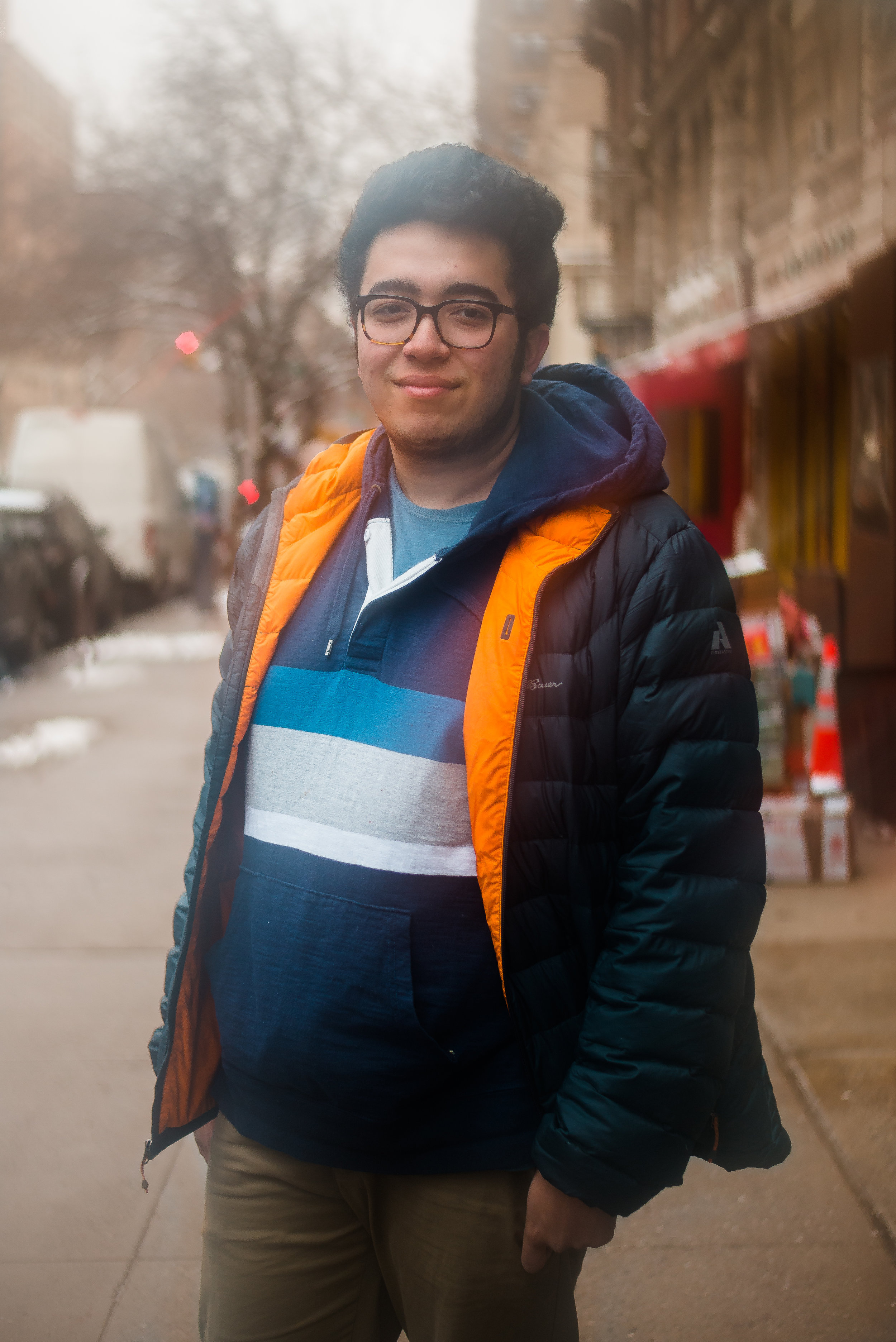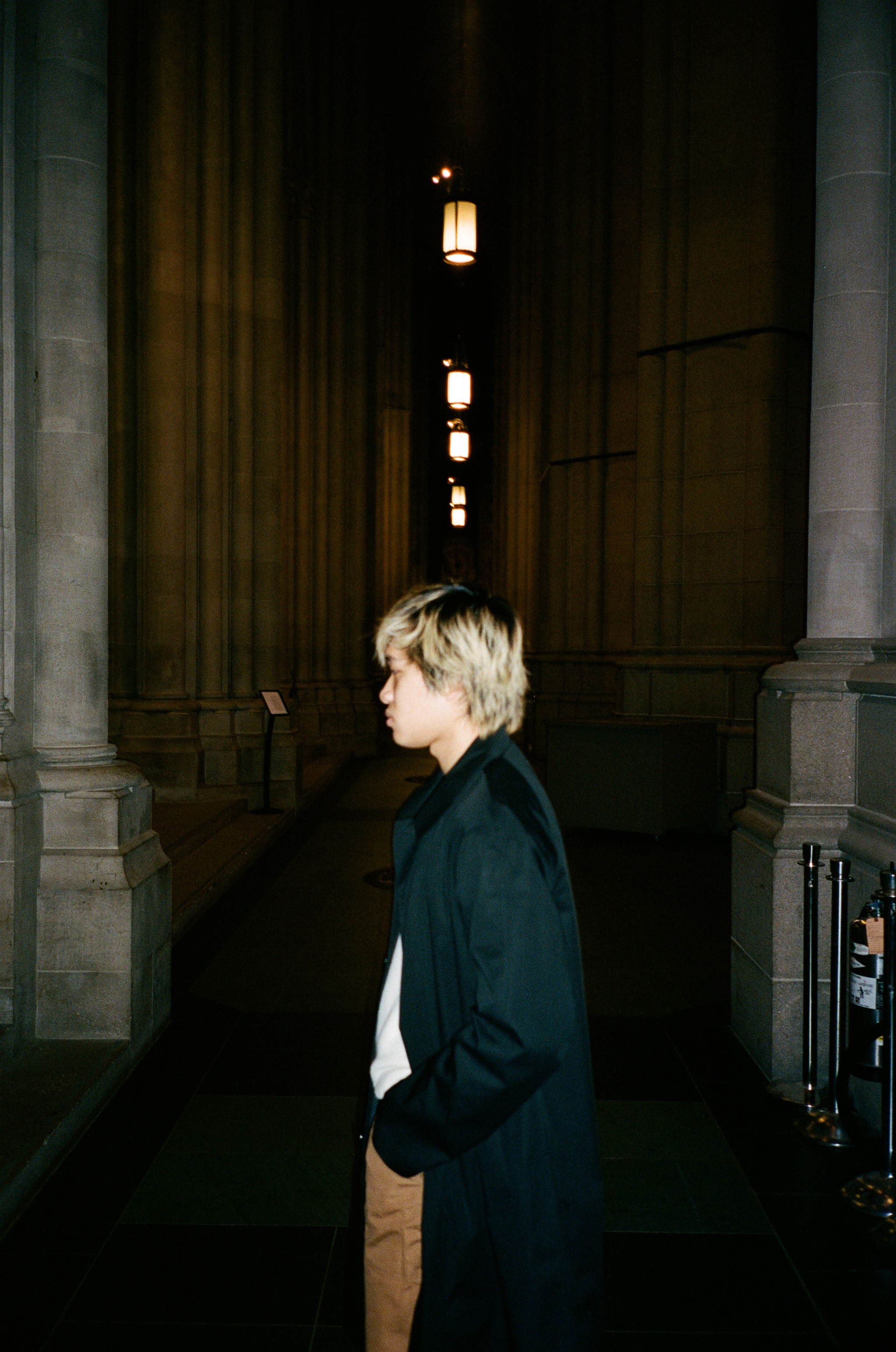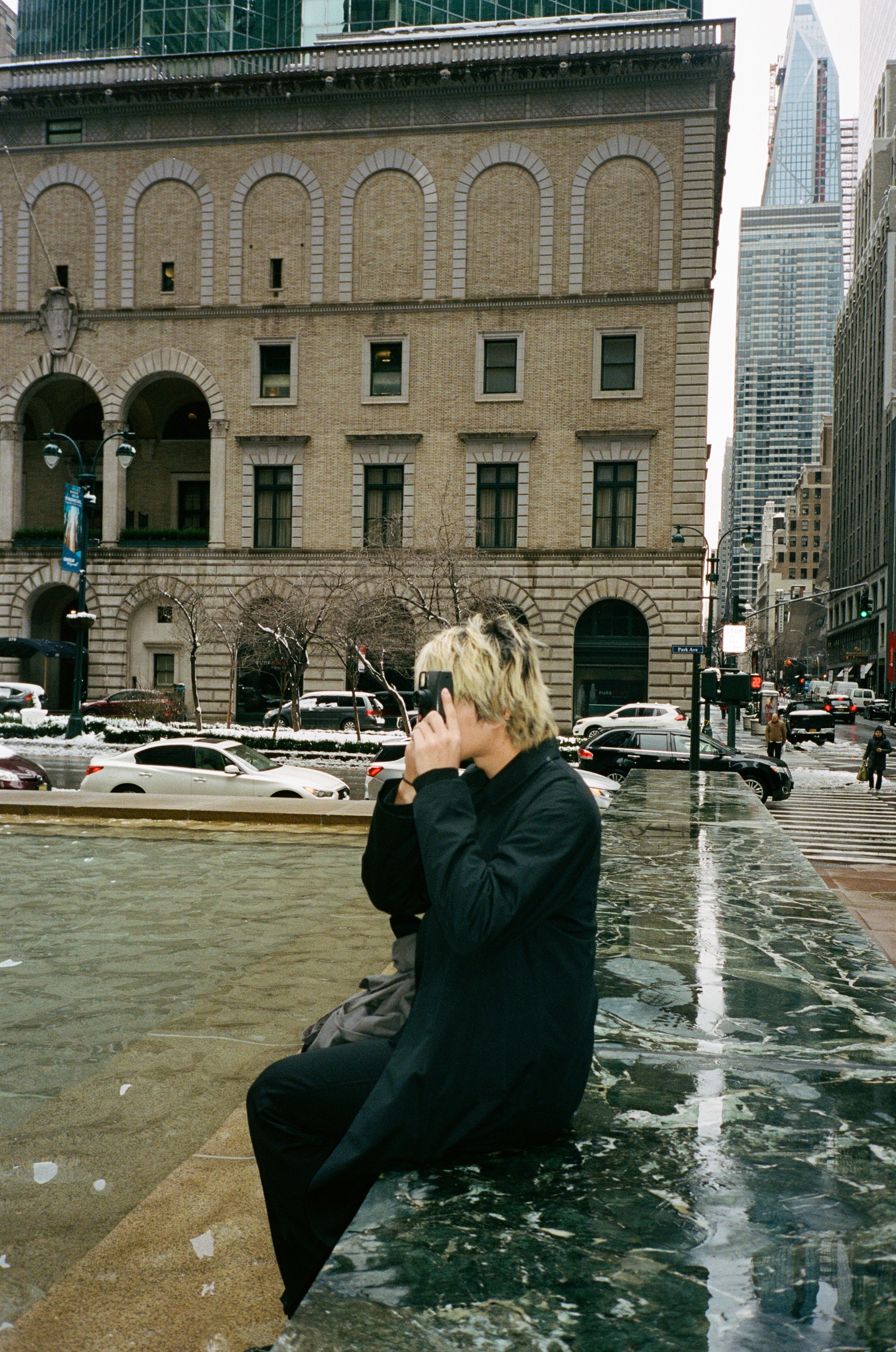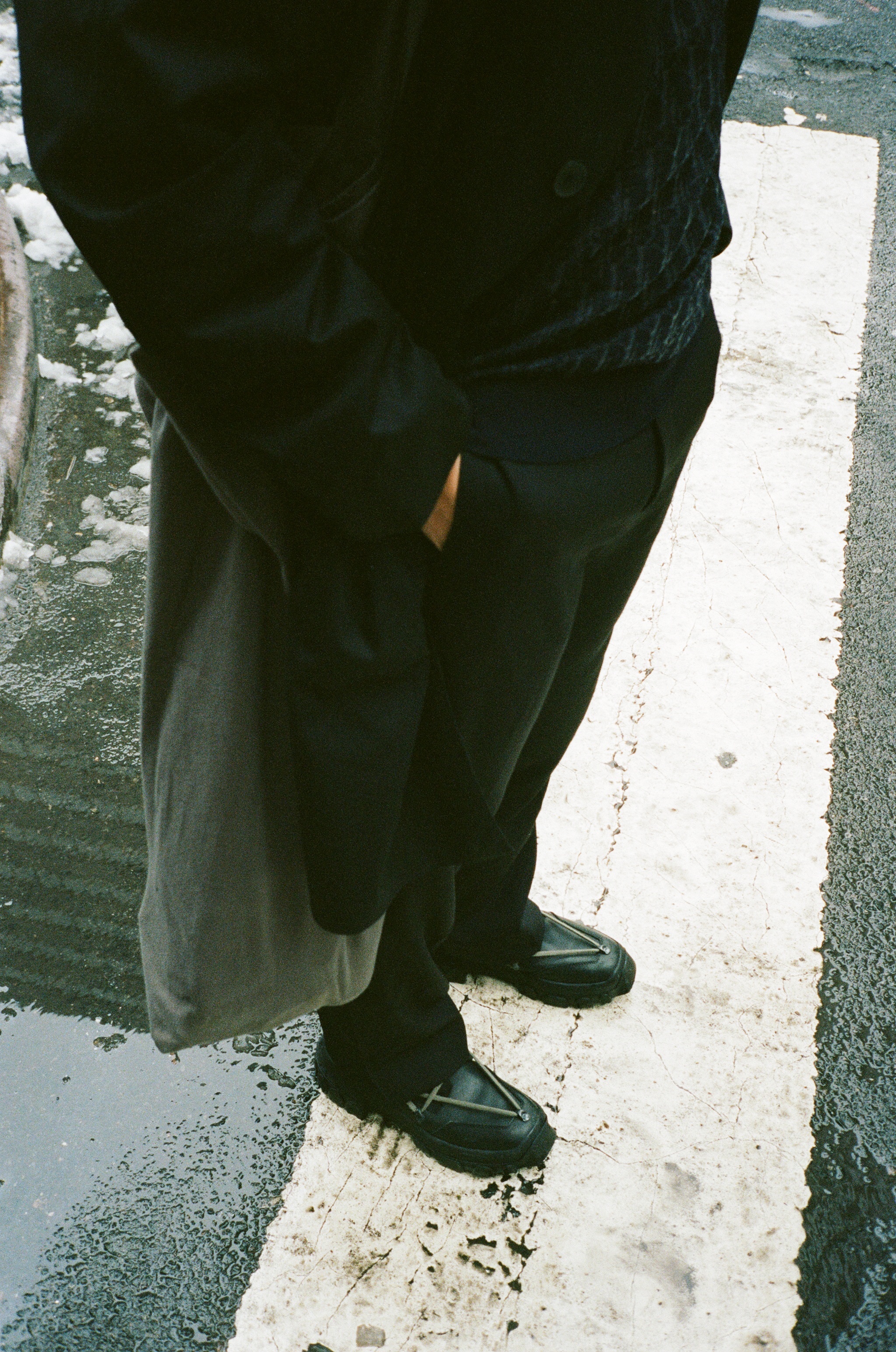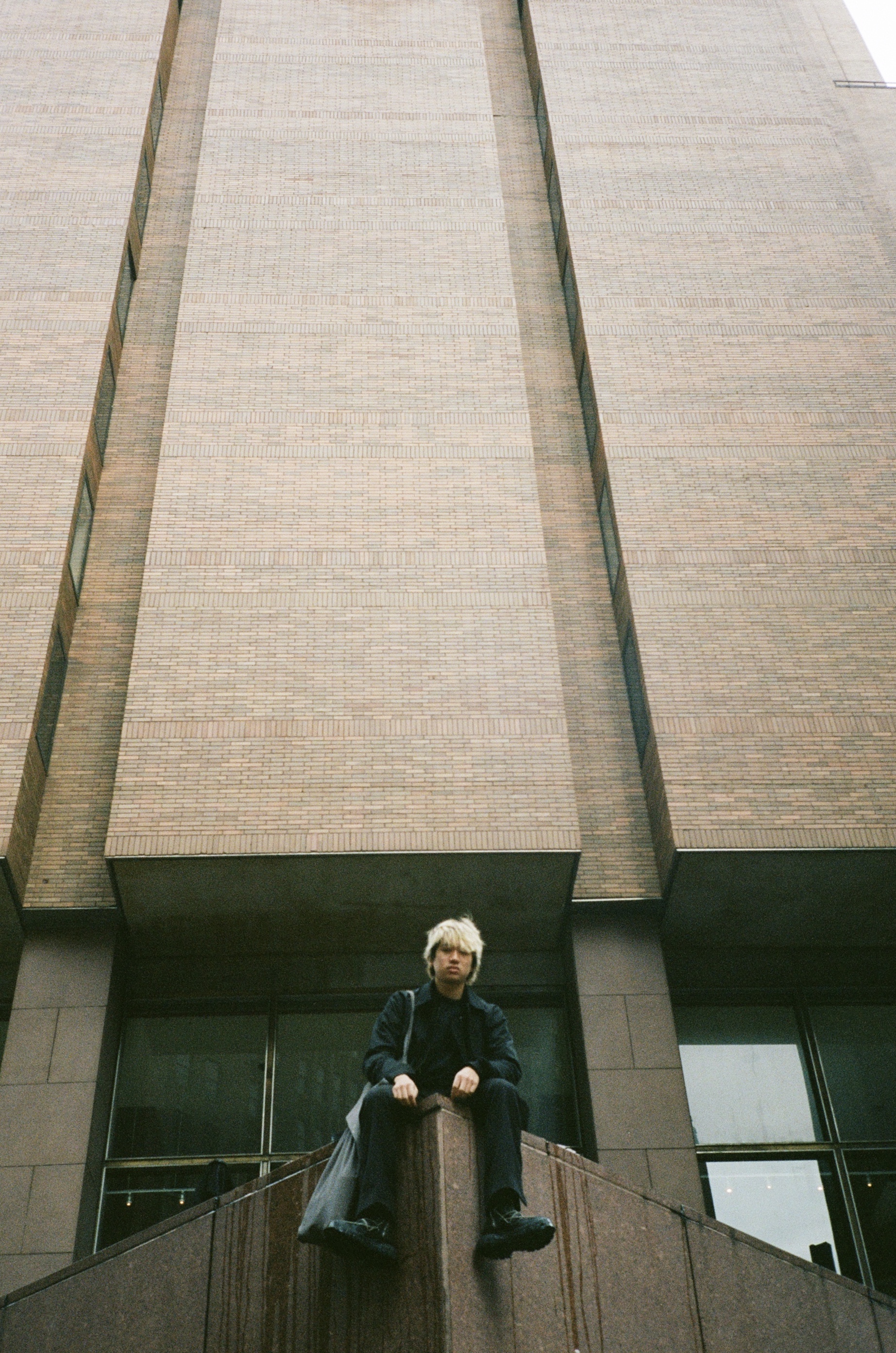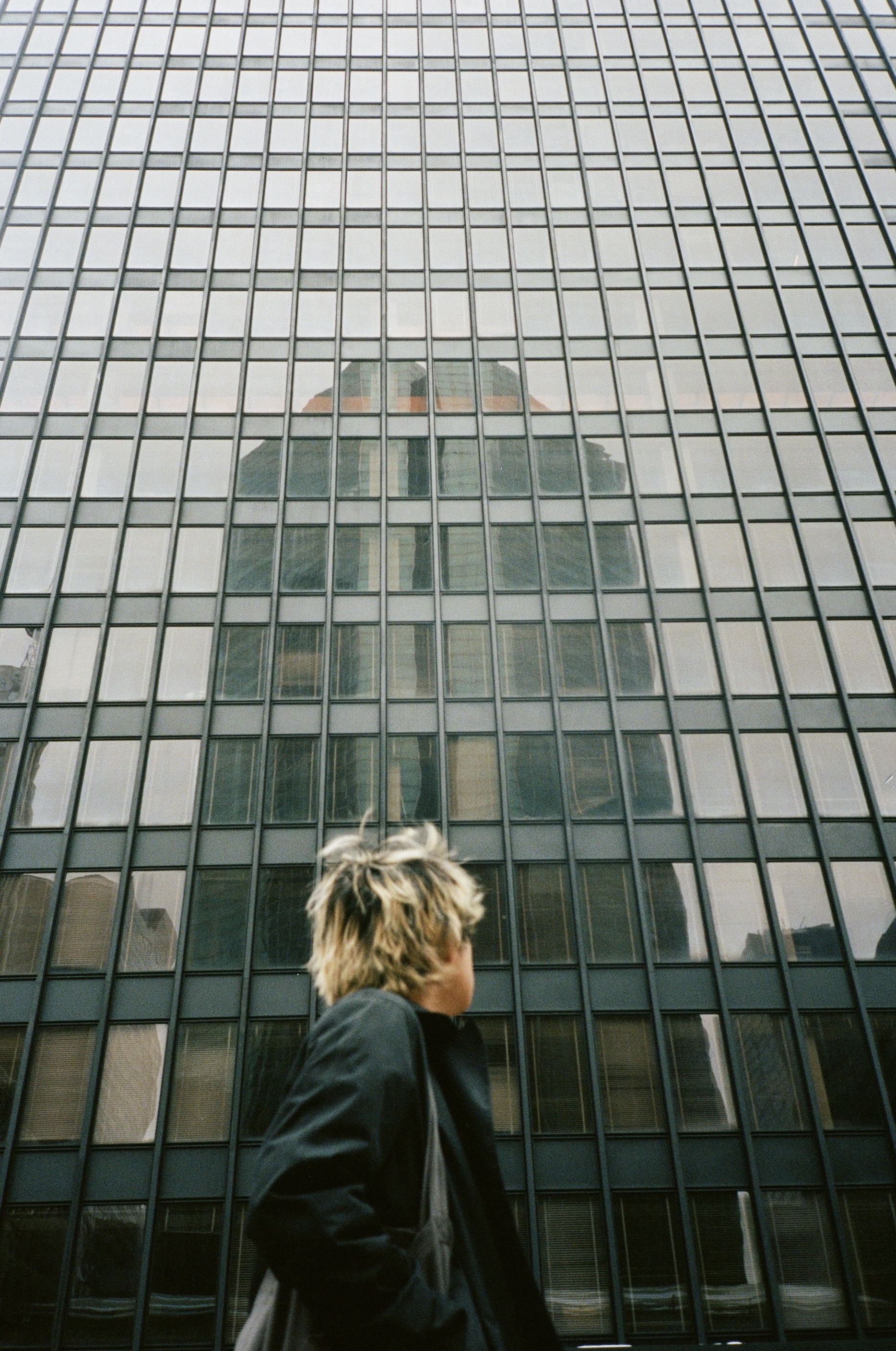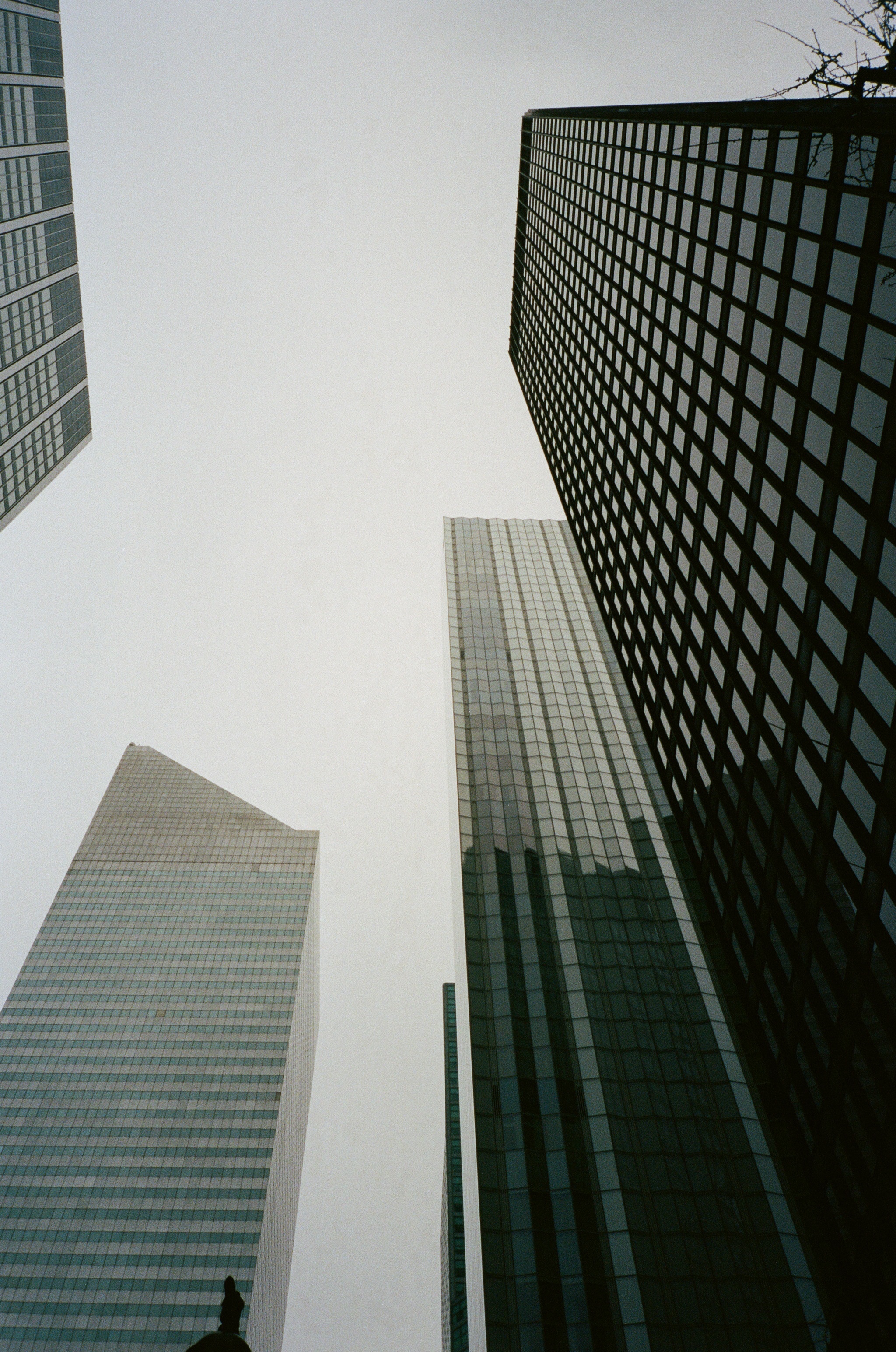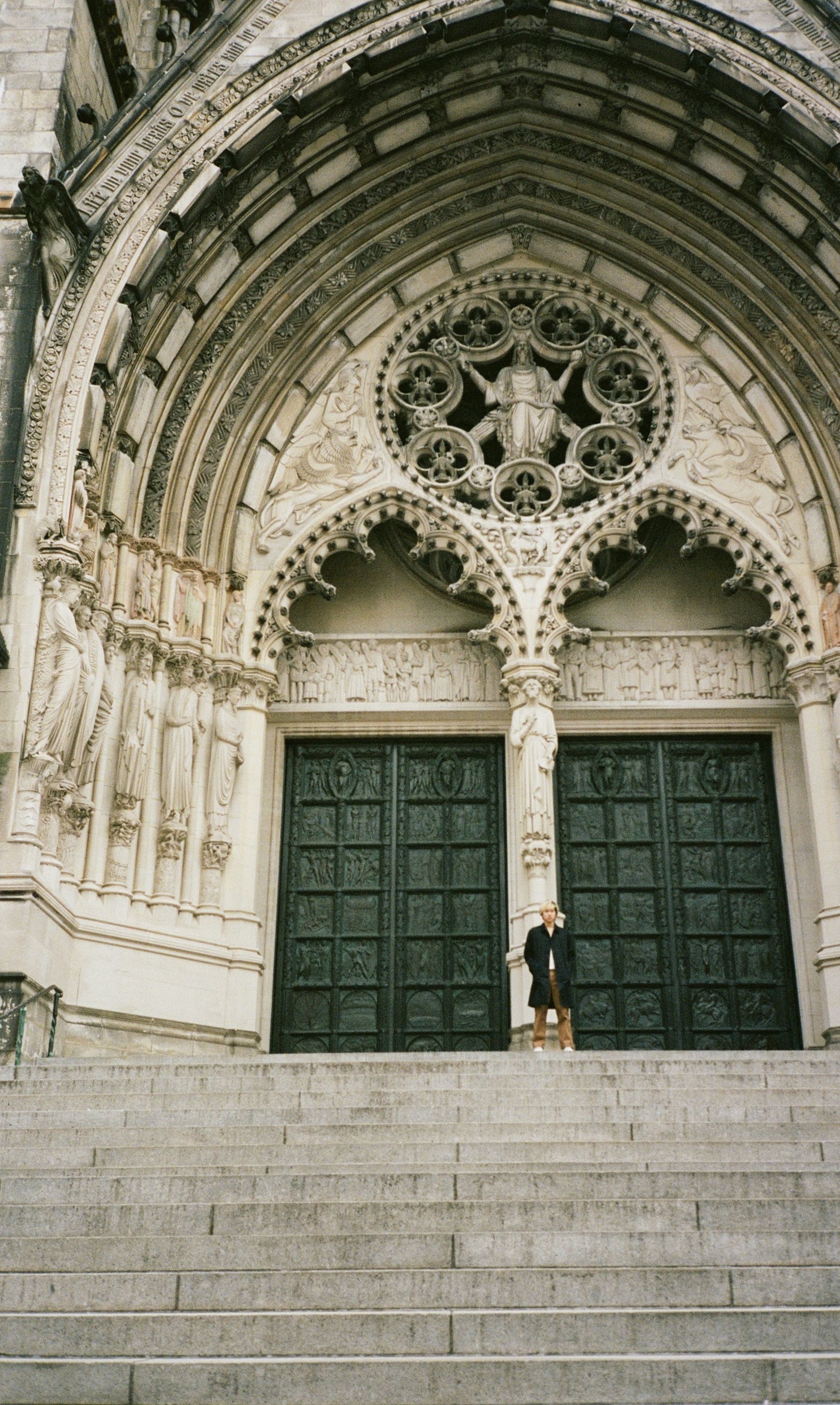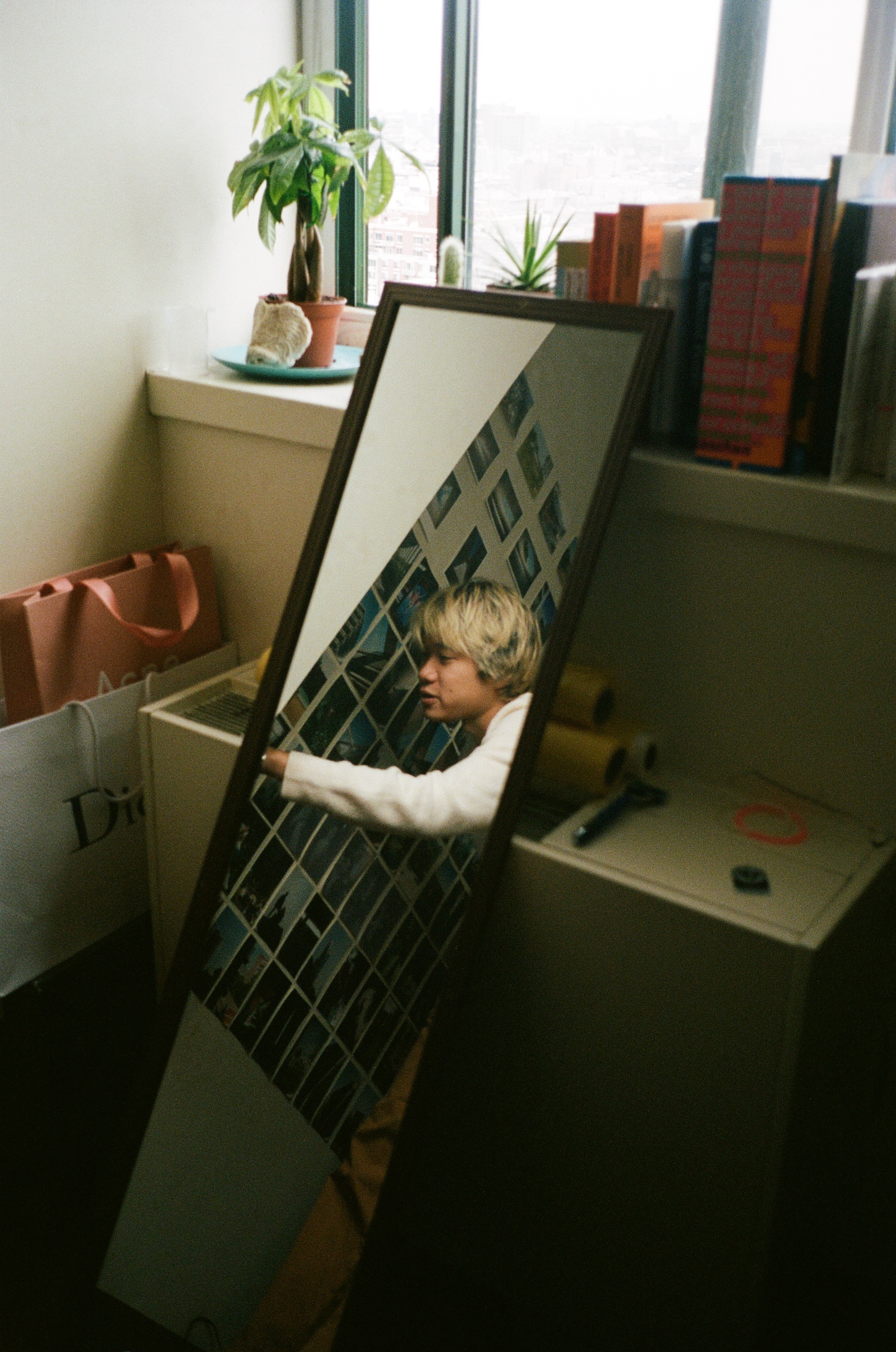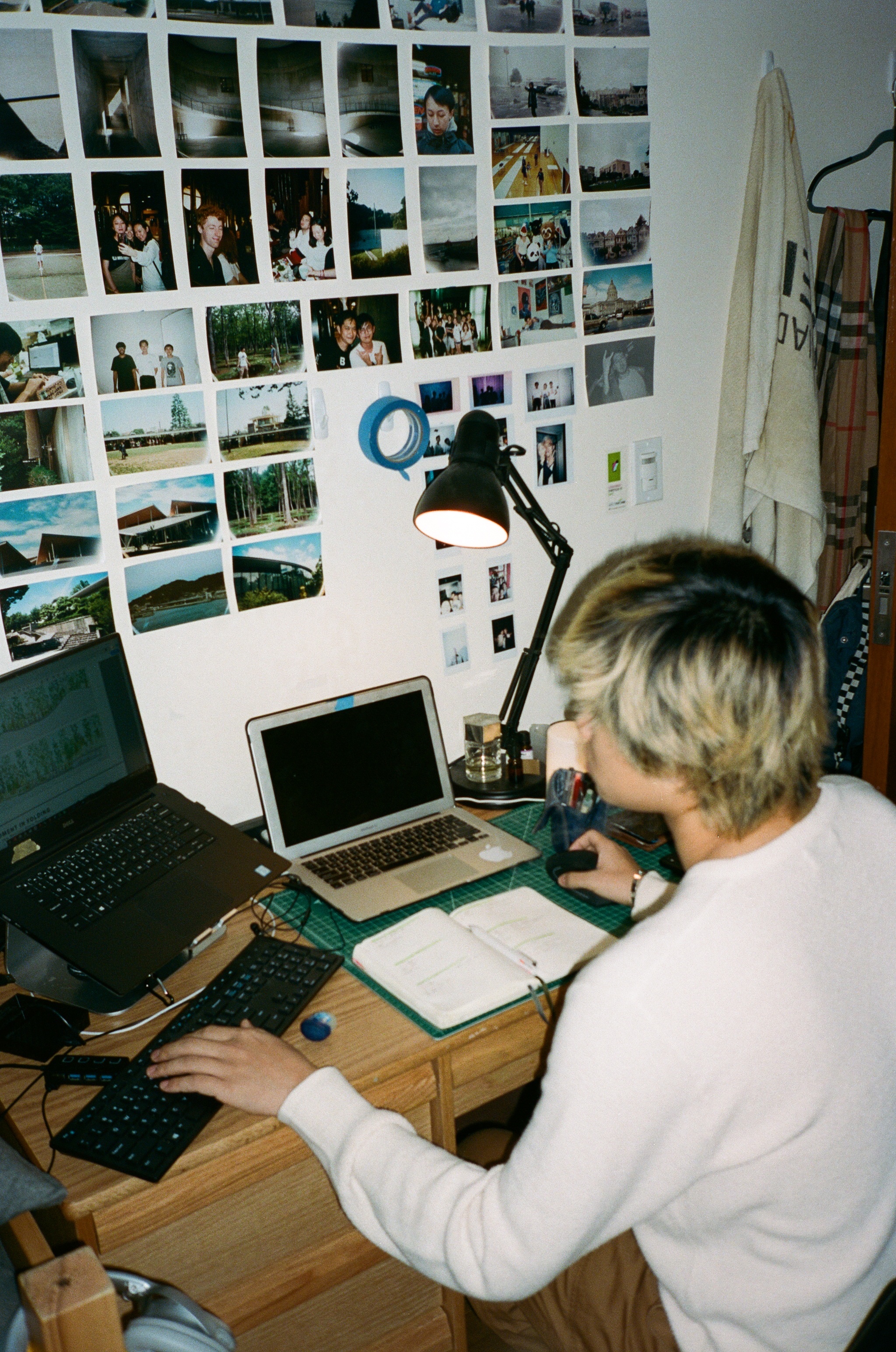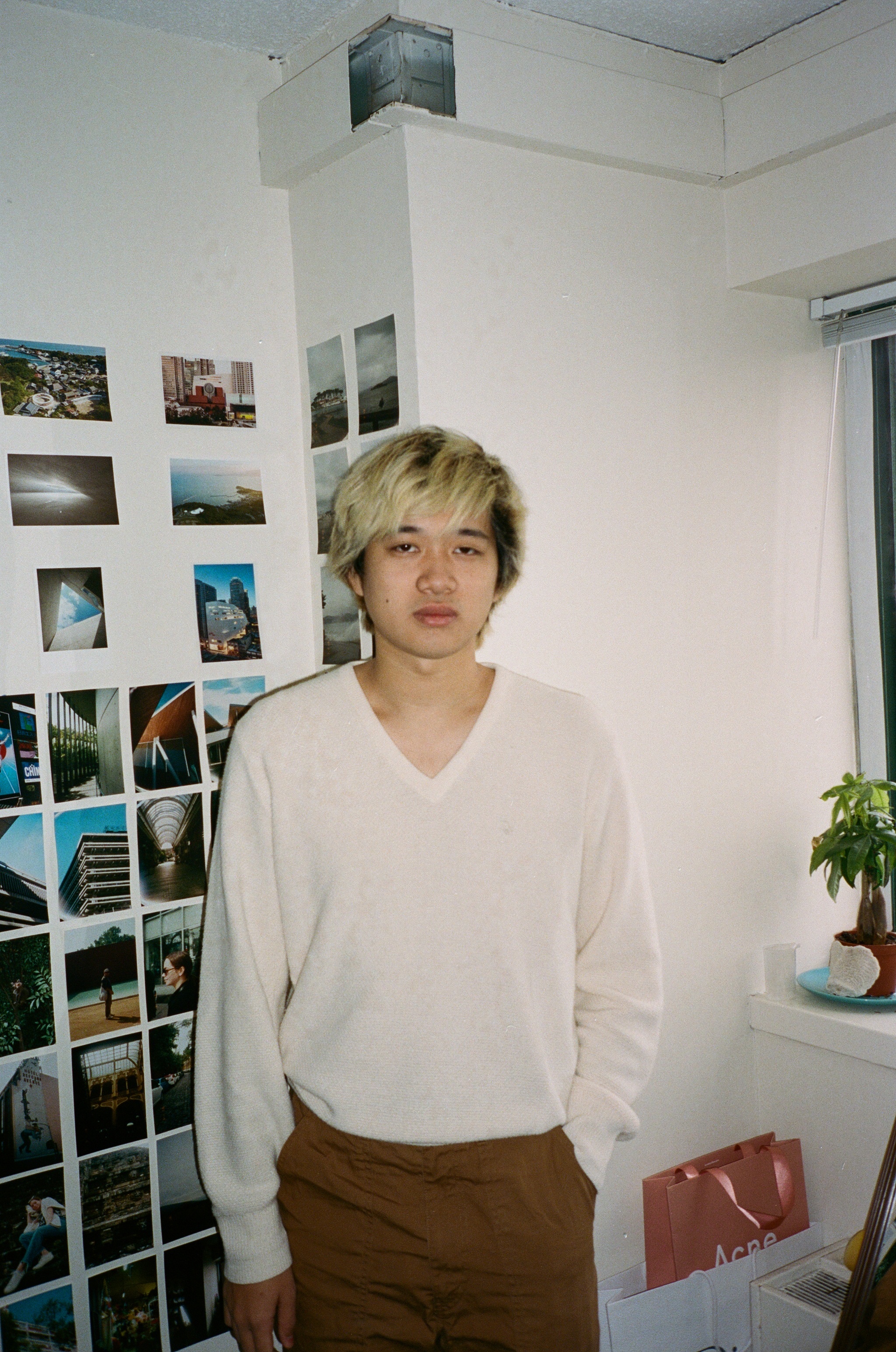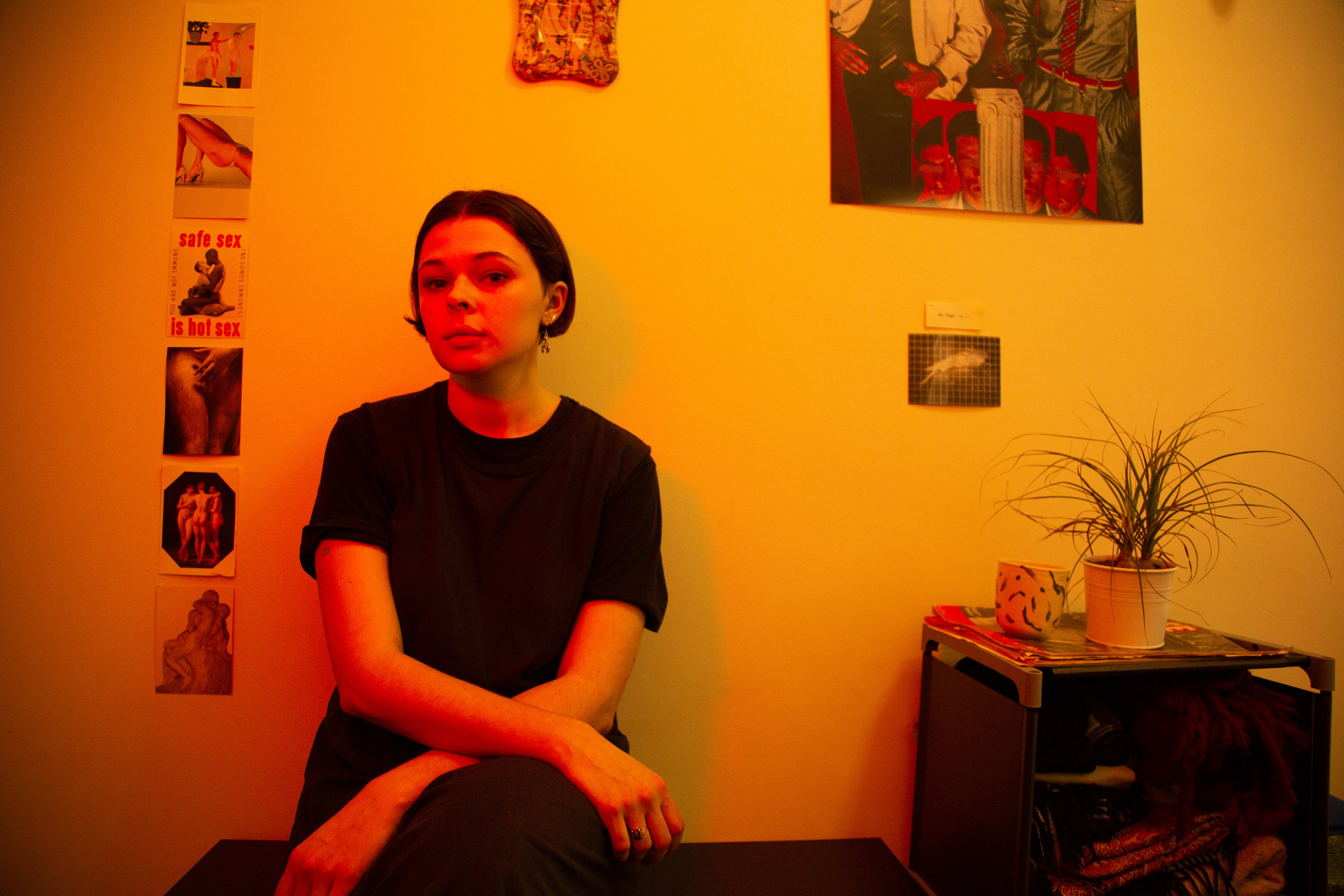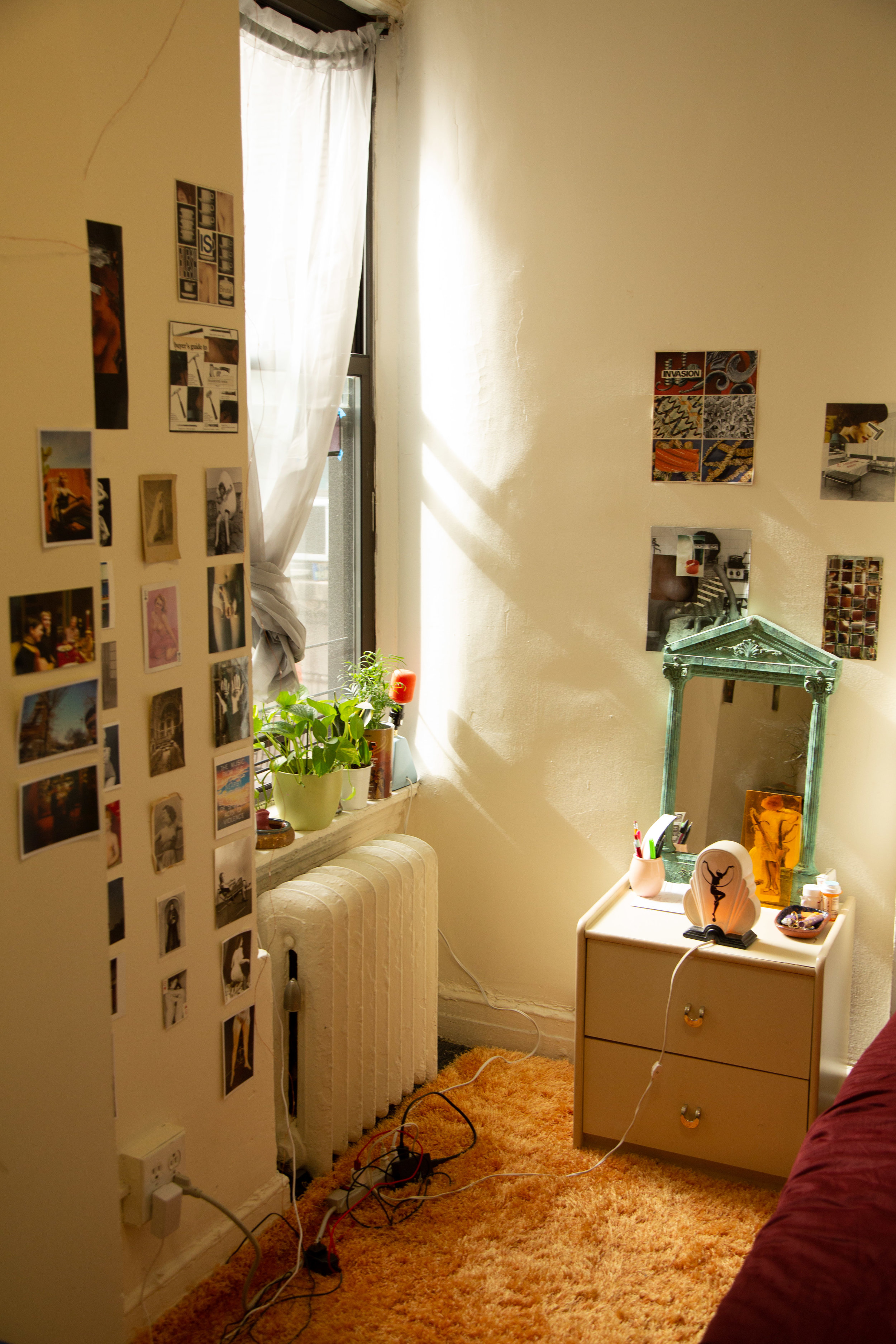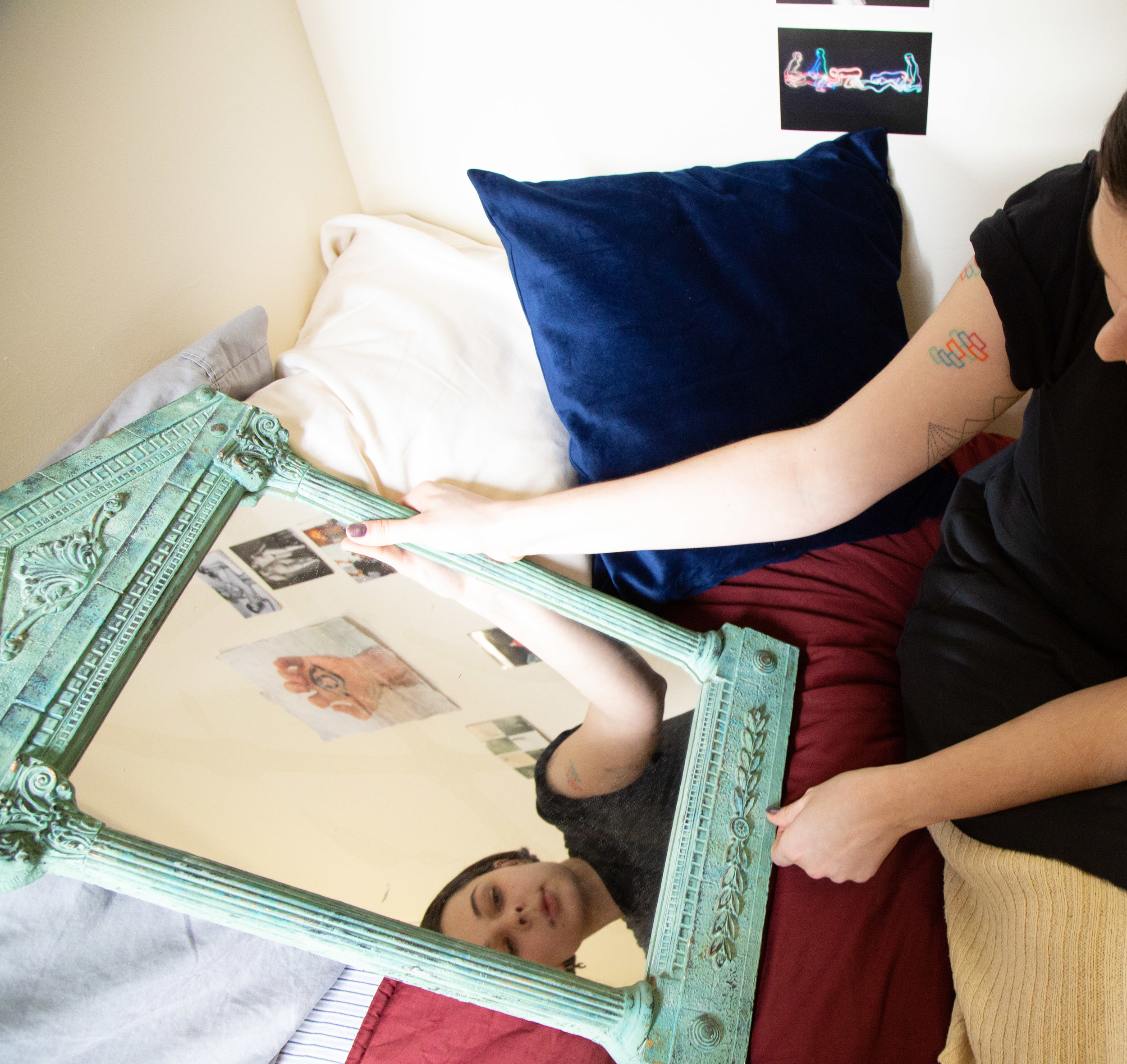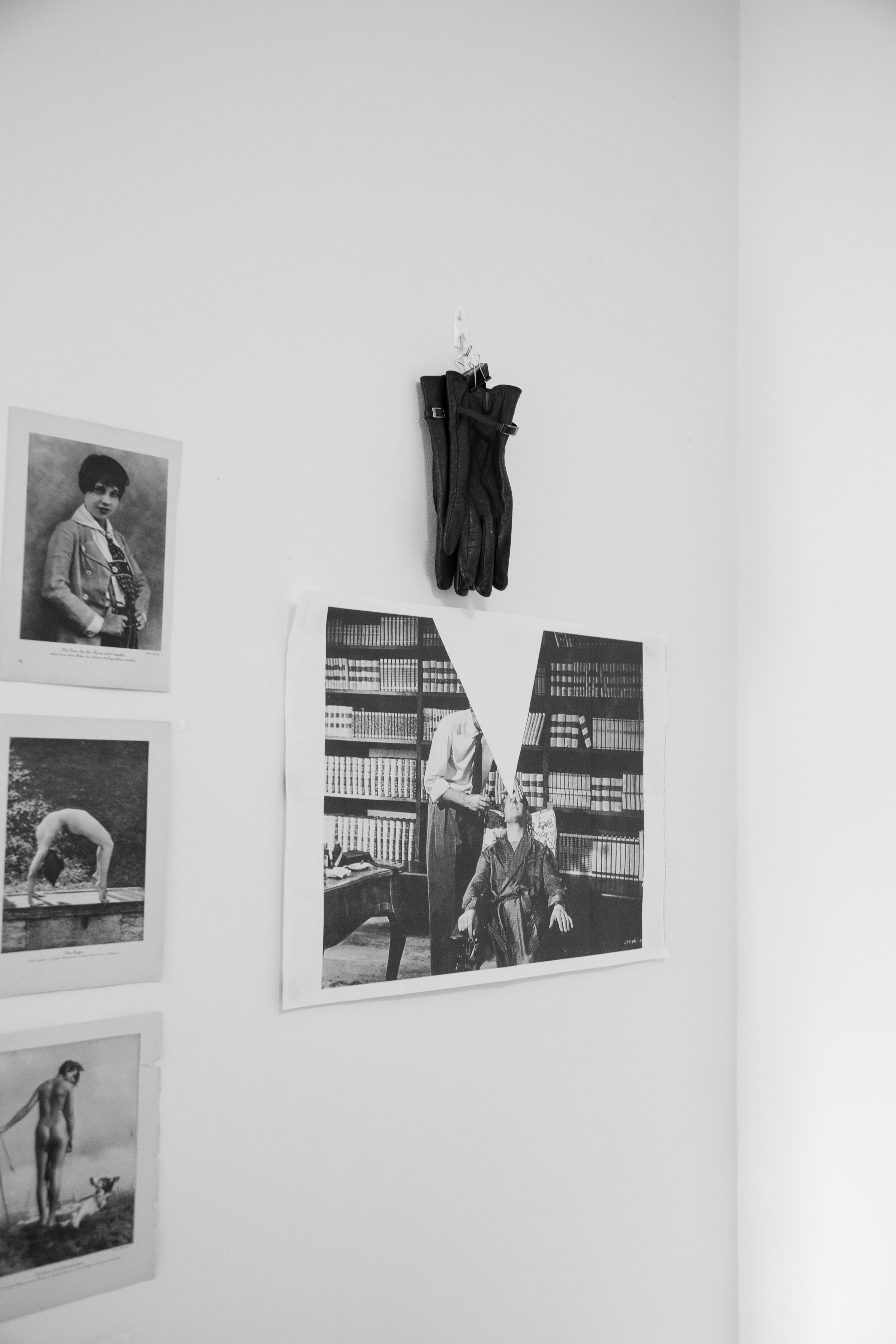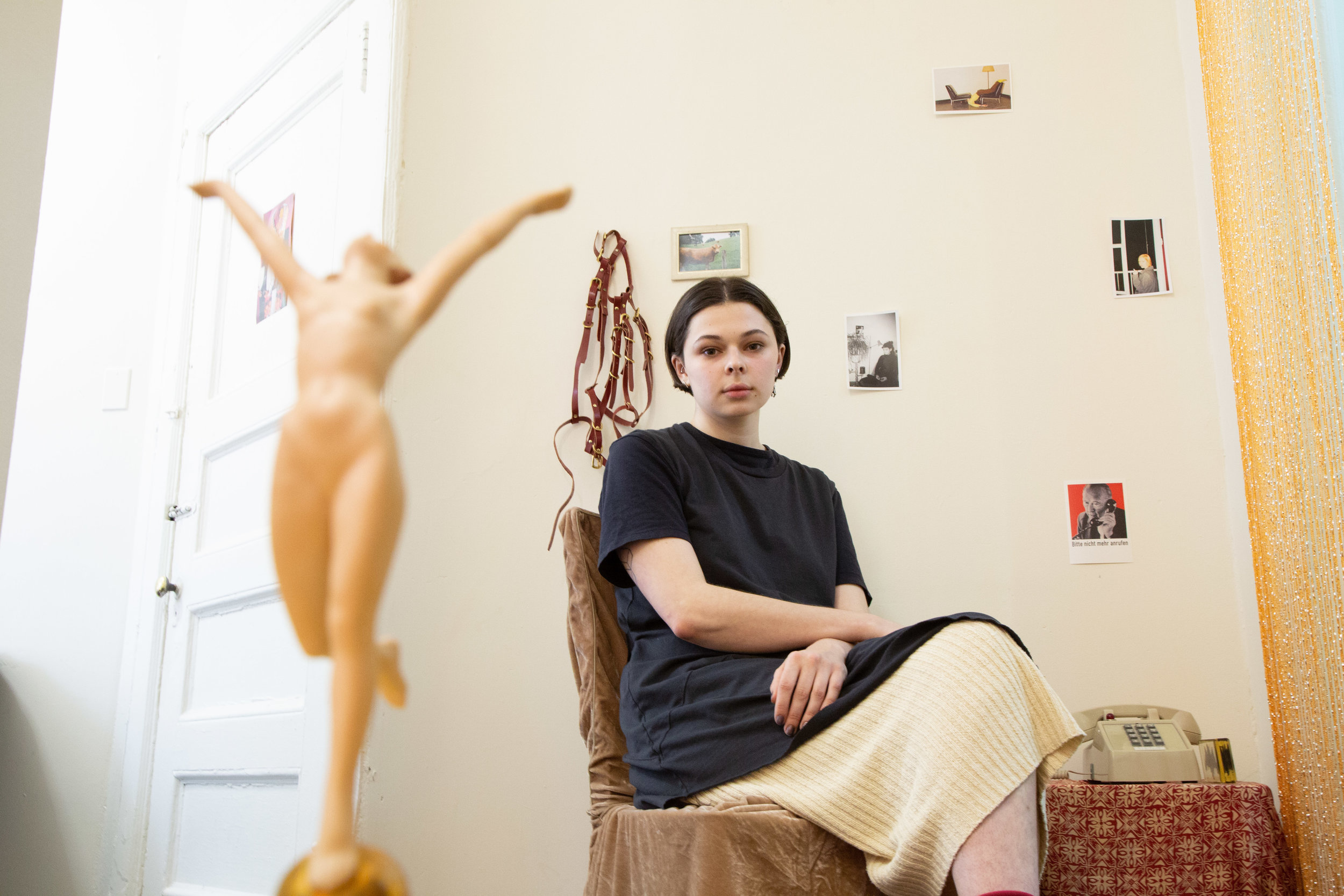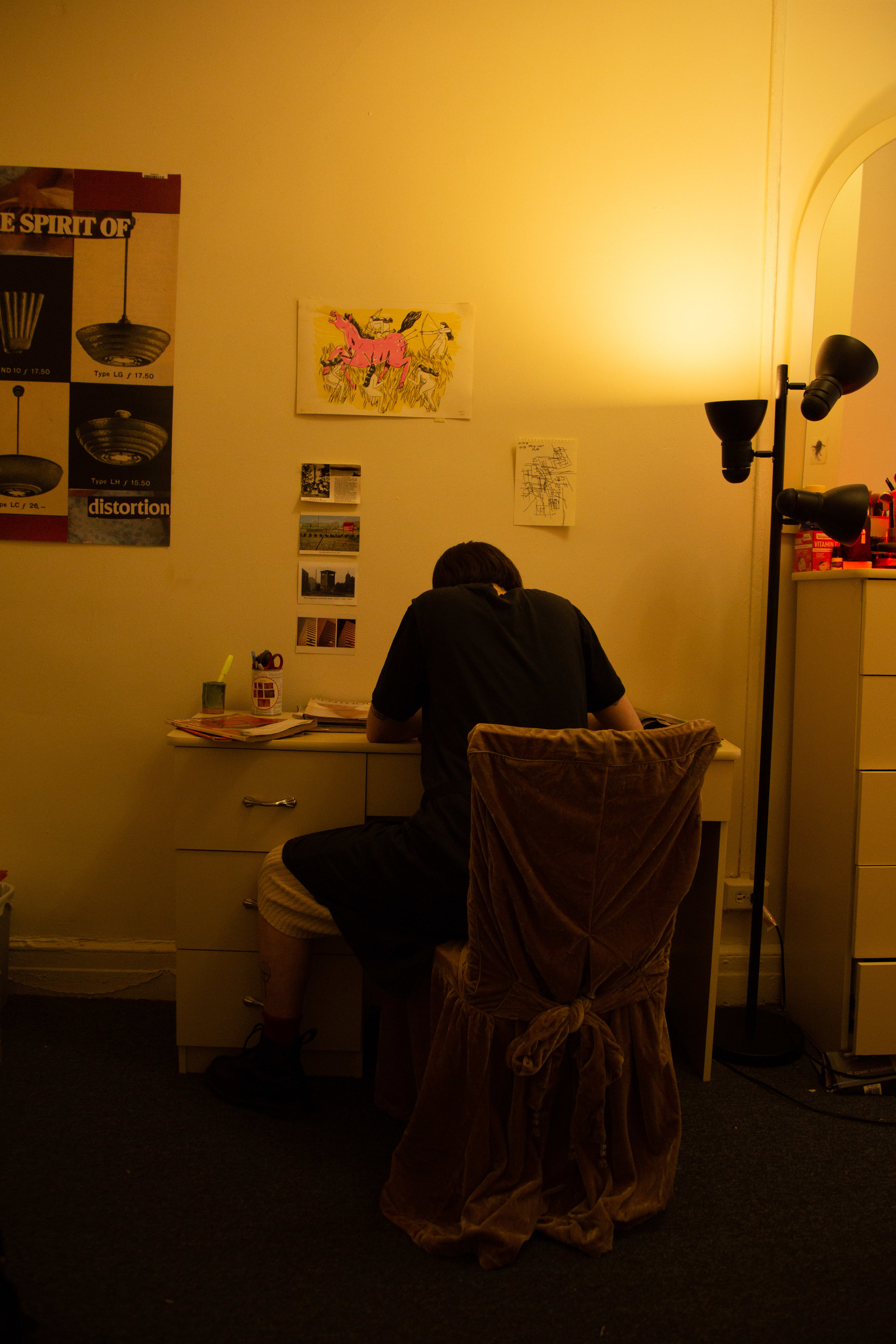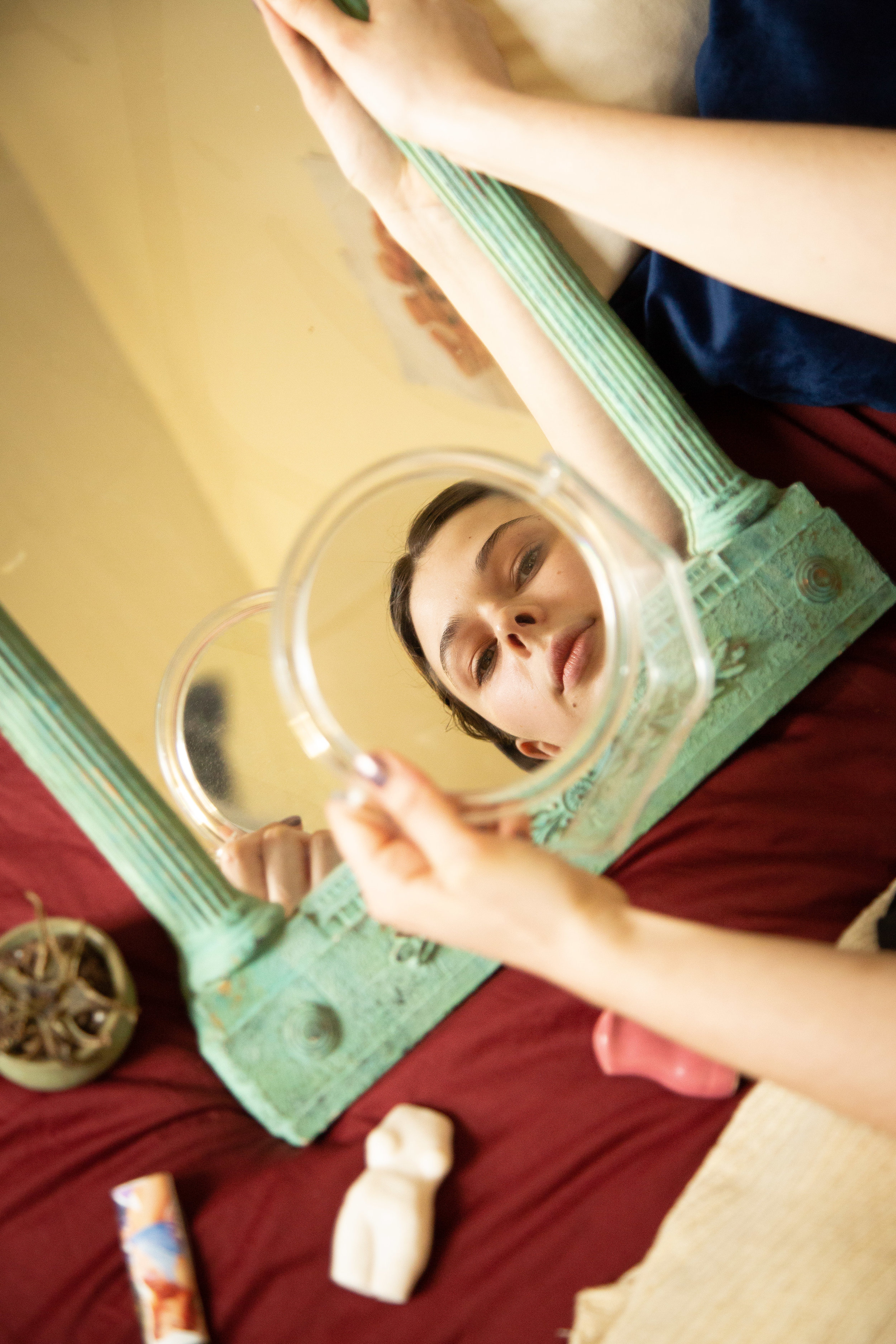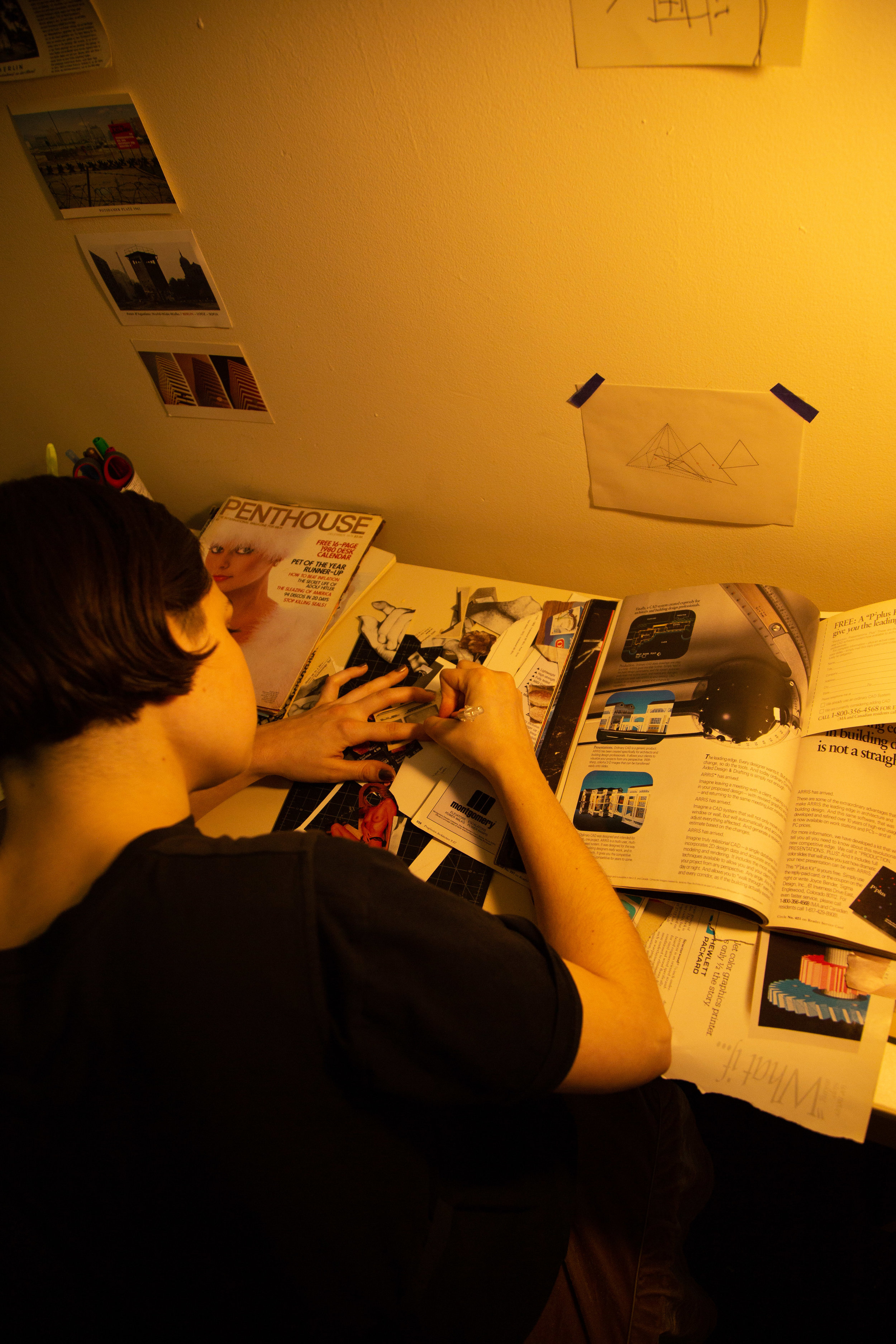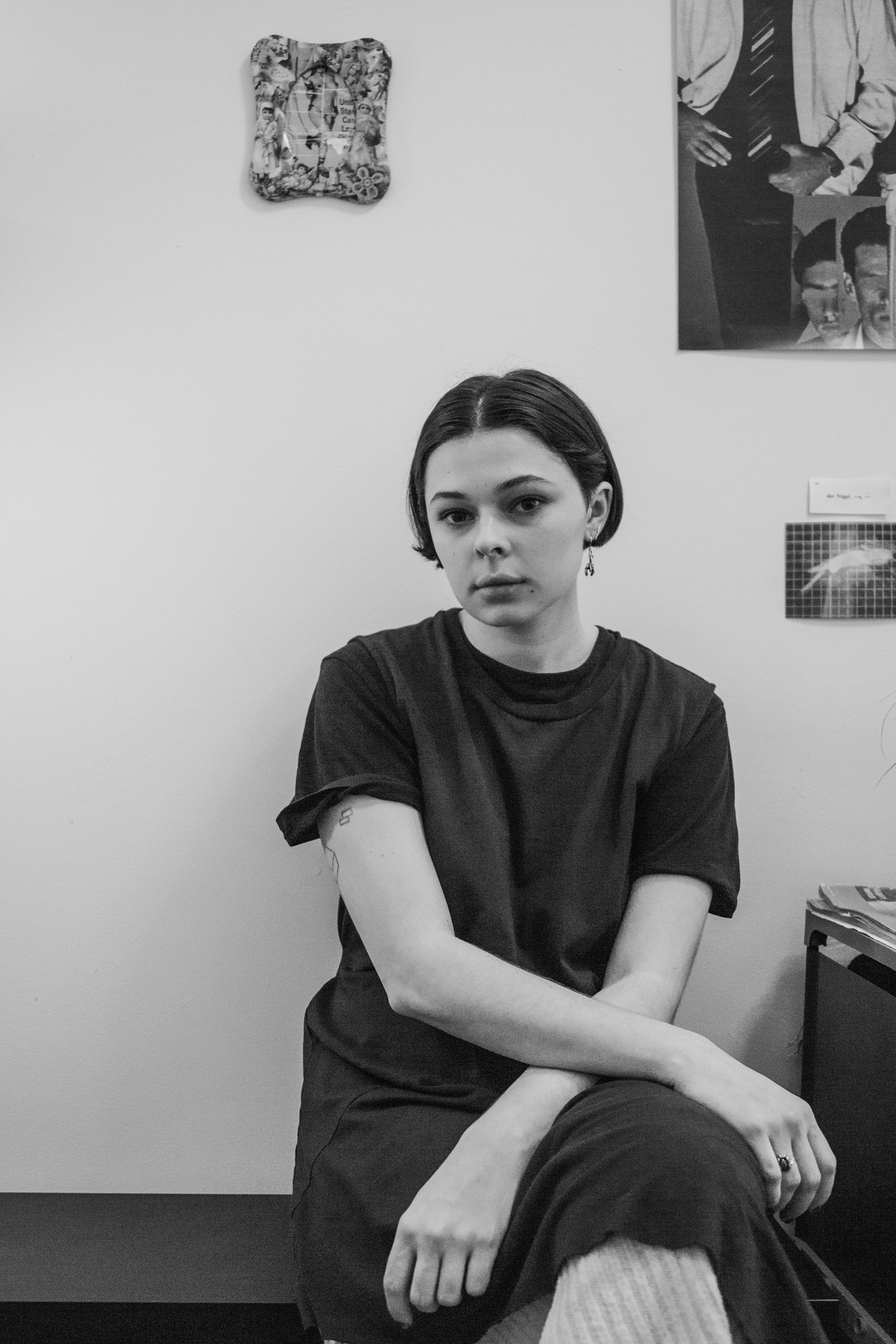Interview by Hanna Andrews
Photos by Emma Snoddy on Facetime
Introduce yourself.
My name is Lexis, I’m a junior in CC, I use they/them/theirs pronouns, I’m a Sagittarius, and I’m currently living in Long Beach, CA.
Did you grow up in California?
Yeah, all around Southern California… I’ve moved like thirteen times, but it’s always been Southern California.
How did you get into costume design, digital design and other art disciplines?
I had been interested in fashion design since I was in third grade. Middle school was an awful experience, I had no friends… I decided in high school to put myself out there… some friends I made during my freshmen orientation did choir and dance and some theater, so I was like, oh, let me try theater, that's what all my friends are doing. So at first I was really into acting... I didn't really get cast frequently; part of it was I wasn't experienced, the other part was typical nepotism bullshit, and there was also definitely some anti-Blackness there that I haven't fully unpacked, so I was often backstage instead. Because I was into fashion design when I was trying to figure out what to do with theater since I couldn't act, that's how I discovered costume design.
Image from Midsummer
So I’m completely self-taught; freshman year [of high school] I worked on Lord of the Flies so I got to just tear up some school uniforms and stuff, which was super cathartic especially because some were from my old middle school... it was great. After doing that, I was like, oh costume design is really cool...By junior year I was designing for most of the shows, and I sort of became the resident costume designer and it blossomed into a passion.
I still felt like acting was what I wanted to do primarily, but then my first year of college I acted in a Barnard Department show which was super exciting, because I didn't even think I would get cast in anything, but that was kind of the last nail on the head when I realized I didn't like acting anymore. Especially since my sister acts, I realized that the work it takes to do it well is not something I feel like putting in, but the work it takes to do costume design well, is what I can put in. And so now it’s sort of my favorite thing to do.
In terms of graphic design, that was a little different. During my freshman year [of high school], we had a required arts extracurricular class that we had to pick, so I decided to do the design class, and I knew it wasn't fashion design, and it taught like Photoshop and Illustrator, but I thought, oh it could be convenient, and an important skill to have. But then I just completely fell in love with it… it was just really cool to have that outlet that had nothing to do with theater but was still creative and was for me, and non-competitive, because I think acting and theater was really competitive. With graphic design, it was just my outlet, it was my thing, and just what I wanted to do, and I got to work with a teacher I really adored.
I would say those are the two main artistic mediums that I do, I’m into poetry but I’m not that good at it, because I did a poetry recitation competition all through high school and I got to know poetry a little bit better and appreciate it more. It’s something I try to incorporate in my graphic designs sometimes. I guess that's my path from multiple angles.
You mentioned writing poetry and you also experiment with video; how do these disciplines map onto your other work and art making disciplines?
From my experience, everything sort of maps from theater onto everything else. They say live theatre is dying, but it’s still my favorite discipline because it's the peak of multimedia, inter-disciplinary community, so I think questions of motion, color, and texture really map out well onto theater and onto everything else I do. Especially with video, I think having to learn about bodily motion through acting experience but also through costuming for musicals and things in which motion is extremely important, I think that just changes the way I look at things. Color is a big thing for me too, especially when I do costume design; I see worlds inside of it, like worlds of meaning inside the color green—why would someone want to wear it and where would they wear it?
That influences my graphic design a lot. I tend to do neon, very harsh-looking pieces, turning colors on their head. Colorful doesn't always have to be gentle, it can be harsh sometimes. I think when it comes to poetry, that's what I try to capture most. I have a very hard time with creative writing, I think I'm a good essay writer but a very challenged creative writer. I think it has a lot to do with my impulse to explain and put things into boxes, which is probably related to my OCD, so it's interesting then, that I'm most interested in creative disciplines that kind of force me to be more abstract, where not everything can fit into a box, myself included. So that's kind of an interesting back and forth that I feel I have going on all the time.
So on your personal style in costume making—you’ve mentioned your use of neon colors, sometimes loud or sharp color expression; do you gravitate toward specific silhouettes, textures, colors in your costume making? This could apply to your graphic design as well.
I think that it really depends on the project. A big influence would come from the Stanislavski style of acting, the idea that everything is driven by objective, and all people are driven by objectives and things like that. I try to take that into different pieces and consider how someone thinks of themselves, how they want people to think about them, and then how do those two things combine into how they dress? I don't always remember people’s names but I remember what they were wearing, and that's how I remember most things. It probably has something to do with me being trans in retrospect, but I've always had a fixation on what people wear and the silhouettes of their bodies, and I think that kind of maps out into detailed focus onto small accessories to large costume pieces. I definitely tend to mix patterns and loud colors, and I notice that gets mapped out onto my design, but I also on occasion have to reel it back depending on what the piece requires, especially if its naturalistic, but I tend to work on shows that are very fantastical or otherworldly, so I get a lot more room to experiment.
One of the latest things I’ve worked on, The Bachhae 2.1 with the King’s Crown Shakespeare Troupe (KCST), was inherently all over the place, queer and dramatic, and there was poetry in there, there were selections from different pieces and a sort of patchwork, in a very loud and clashing kind of queer and trans style, sort of encapuslating the different worlds going on. I think lately it's been interesting how my need to categorize maps out onto different designs, thinking of The Bacchae, and A Midsummer Night's Dream, it sort of became this two-world dynamic, creating the aesthetics of one world and the aesthetics of another world and how they collide. That’s been exciting and interesting, and I find there's always one or two transient characters who sort of embody more than one world, and I think perhaps that's sort of myself inserted, for better or for worse.
I like working with media that aren't traditional; when I worked on A Midsummer Night's Dream, our concept of bioluminescence was our one word to capture the forest. I’m Puerto Rican, and I've been to Puerto Rico twice now, and the first time I went, we went to one of the bioluminescent bays, and I saw it up close, you drag your finger through it and it lights up, and it was amazing. So I had a very clear picture in my mind of what bioluminescence was and what it meant to me, so I had the idea to put lights inside of the costumes and react to the world around them in that way. I had no idea how I was going to do it…. a good friend of mine Zena, who had designed costumes with me before on a different show, is this amazing seamstress, and at the time was studying civil engineering, so knew shit about engineering, and I asked her to work on it with me, and I was lucky enough for her to say yes. It was so cool to sew lights into costumes and use different embroidery tactics to transform costumes altogether, and we even 3-D printed butterfly wings to mask battery boxes for the lights. We worked with a set designer, Kristian, he’s incredible, and he had this awesome idea to play with black lights and UV paint, so when the fairies walked the world lit up with them, and it was just amazing. I like to be very interdisciplinary, I never want it to just be about the clothes; I want to see how I can interact with lights and sets to really transform the show.
I was going to ask you, does your major (East Asian Languages and Cultures) at all influence your work, or anything relevant to theater?
I feel like yes, in very indirect ways. It doesn't come to my mind as an influence, but when I reflect, the influence is definitely there. I was originally going to be a theater major, but after my first experience with the department, I realized there was just a lot of anti-Blackness that I had no interest in dealing with, and then the design aspect didn't really suit what I wanted. I was just taking Japanese as my language requirement, and took one of the department’s required classes, just to see what it was like, and absolutely fell in love with it. And then I took my first film class, a Japanese contemporary cinema class, and loved the professor and the material. I was like, movies for homework, this is awesome...I think those classes specifically have really influenced how I think about art, how I write about it, and how theory interacts with my art...it certainly has me more excited about film, and making costumes for film. I think my major gives me an increased appreciation for doing theater, I think if [theater] was my major I would just be burned out by now, and be sick of theater and the theater community, but because I have something to go to that also extremely interests me, it's not a burden to do theater; it still gets to remain fun.
Working on film projects now, what major differences exist between preparing for a new project for a film versus a stage production, and the research; how does that differ in creating a specific universe around a cast in a film versus a stage production?
For me the main difference is that with theater I have to have all the costumes figured out early on; with film, especially with the documentary I worked on, because we had different subjects each week, it was like a week-by-week process of coming up with that and creating it. With film, I think it's a much faster process; I’ll usually have a minimum of 5 weeks with a play, and with film time is even more compressed.
I will say, with costuming, it's a pretty standard practice so things are pretty similar. You have to make sure people’s sizes are correct, you’re purchasing different clothes and thrifting. I do closet visits often, which is essentially either over Facetime or in person. I take a look at a person’s clothes and figure out what of theirs I can use to costume them. I've done that for both film and theater; I slightly prefer film, and what's different about it is that the details are noticed by people other than the actors. For example, with The Bacchae, one of the main characters was meant to embody American patriarchy, nationalism, and conservatism, so he had a tiny lapel pin that was an eagle, and it was also a script reference. No one in the audience would ever notice it probably, but it was really for me and the actor to make the costume more authentic. The best compliment I can ever receive is that the actor really felt like the character for the first time or transformed into the character through their costume.
When I worked on Soorim’s film, all of the characters worked in a movie theater, so they got to wear pins on their name tag; We were very intentional about having the pins we picked match the character’s personality, and that enough is contentment for me, because the actor transformed into the character, but it's also cool that the audience can see that too.
I'm interested in this transformative quality you’ve talked about; what other thoughts do you have on the second life of a garment when it lives on another person’s body, in a performative way or otherwise?
It’s my favorite part of the process. I think because I used to act, I know what it takes to create that character in your head, so I try to work very closely with the actors and ask them questions that seem very unrelated to their clothes. Just the other day, I did a virtual closet visit with someone I’m doing a Zoom show with, and it was really fun because I got to ask how the character feels about this other X character, and all of these more psychological questions that on the surface have nothing to do with the clothes, but really informed the world of how I would make somebody dress. I think that detail allows people to give back a response as a different person and they feel very connected.
I think there's a way that your body changes depending on the clothes you wear that makes you feel like a different person, whether its a tailored garment or a custom fit, or the softness or roughness, or how flashy something is, it just brings out something in people that they didn't know was there before, like seeing some of the nicest people in the world turn into real villains when wearing the right costumes. It's exciting to bring out the best and sometimes even the darkest parts of people just through what they wear. I think it's really important to me being trans; I know how much different clothes I wear will help me recognize my sense of identity and it's something I don't take lightly, a power I don’t underestimate.
Watching cosplayers at conventions, seeing them turn into a character I've known my whole life, it emphasizes that power for me. In high school I never really had a budget, it was always use and reuse and shit like that, so now at Columbia it's crazy to have budgets in the hundreds of dollars. One time for [KCST’s] Spring Show, I had a budget of like $3,000 and I was floored; I had never seen that much money! So now I’ve become a somewhat expensive designer, but I do like borrowing clothes when I can.
For The Bacchae I tried to have people borrow each others clothes, because it was sort of this commune of womxn and non-binary folks kind of living in the forest and doing their thing, and I feel like there’s a sense of community that’s inherent when you borrow people’s clothes and see someone else wearing what you own; there’s sort of a sense of togetherness that’s created, and I think it really enhanced the dynamic of those five characters as one body. I think clothes have a transformative quality, and even if I'm having a bad day, if I wear clothes that make me feel like a badass that will help me get through.
You’re self-taught and you've talked about creating your own network at Columbia and your high school to help train new costume designers and meet new collaborators. Are there any influences or mentors that you channel in your designs? Maybe this extends to cosplayers, the queering of worlds in “The Bacchae,” or just certain themes you go after?
I was trying to think about this, and I don't think I have particular influences, but if I were to point to a figure, Stanislavski would be an influence, because motivation, internal dialogue, and concepts on method all go into how I think about costuming. For “The Bacchae” I looked at Pose especially, and Dirty Computer by Janelle Monáe, the “emotion picture,” because I liked the way each crossed boundaries and created these distinct characters out of clothes. For “Midsummer,” one concept was bioluminescence, and the other was this geometric, un-abstract, patriarchal black and white aesthetic, retro-futurism is what I went on; for bioluminescence, thinking of different ways to imagine a fairy besides the typical, like what could that be? So I tried to avoid folklore, and instead turned to cartoons. Cartoons, anime, any kind of animation is very important to me; I looked up Steven Universe, a little bit of She-Ra, and picked up on those colorful, soft aesthetics, and this one anime called Princess Jellyfish, thinking about how to take silhouettes of bioluminescent creatures like jellyfish and transpose them, so a lot of animal work; I looked at animals a lot.
For period pieces, right now I’m working on a hybrid, contemporary period piece. I like to use The Met, their Costume Institute is amazing and they have a lot of selections on their website, so I look at that to see what people would have worn back then, limited to certain social classes to be fair, and then I sort of adapt that, especially Steampunk stuff, I love Steampunk stuff, I like to work it into everything I do, and it doesn't always work but I try. I think there's various aesthetics I'm into, but I don't think I can point to one designer as an influence, which is how I want it to be since I tailor it to each show. I would say Moschino is a very important designer to me, I like the very loud, Harajuku-type patterns, I like the weird, out-there shit. As far as an aesthetic that I prefer to work with, I would say it's The Bacchae, like Pose, Dirty Computer, Harajuku, all-over-the-place, aesthetic.
I love that. This next question is kind of specific-- I read in a Spectator article featuring your process for conceptualizing costumes for KCST’s “The Tempest,” you discussed a mindfulness in avoiding “the stereotype of associating indigenous people with nature” in your costume designs when incorporating flowy, organic designs. Could you share your thoughts on authenticity and breaking stereotypes in representing characters or groups in your costume designs?
I think it's something that's extremely important to me as a Black person, a Latinx person, and a trans person, those are the most salient identities I think that come into play with things like that. During my freshmen spring, I worked on a play called “The Hungry Woman,” which in retrospect was very problematic in and of itself, and it was supposed to be an all Hispanic and Latinx cast, and it was, but I think some people thought that superposed itself on the fact that the entire cast were either white or white-passing except for one or two people. It was a very strange dynamic, and very problematic… but I tried to do my due diligence and follow through on committing to the project. Four of the characters were Aztec gods, and one person out of those four was Navajo, a friend of mine, Shaun, and we were trying to design headdresses for the characters, and it was a futuristic show so I tried to design junk scrap headdresses, nothing that could be connected to a pre-existing culture but was sort of emulative of that idea, because the script called for them. So I was trying to think how to best adapt that, and then Shaun approached me saying he wanted to be involved with that process. First, he didn't want people to be wearing traditional headdresses when it was inappropriate, but second, although he's Indigenous, he's not of Azetc heritage at all, he’s Navajo, so he didn't feel comfortable wearing someone else's traditional clothing in that way, which totally made sense to me. So I had him involved from start to finish and it was something we were very mindful of from that point on, and he was really who brought it to my mind. It's a process I think about a lot because I learned a lot, and it wasn't his place to teach me, and I also don't know where else I would go to learn, so it pointed to a lot of traps for me. From then on, it influenced how I think about identity in the different shows I work on.
With “The Tempest,” it was something I was very aware of from the start, and the show itself includes a lot of nature imagery, like wind gods, and sea gods, and things like that, so I tried to play with creatures from each domain. But then, one of the dramaturges who is Indigenous pointed out to me that we should be wary of that; I had a raw, initial idea, and had to then apply a lens to it where I’m aware of like, I’m coming from that idea because there's nature imagery in the play, but how else will other people interpret it regardless of where I’m coming from?
I'm involved in a lot of conversations on campus about diversity in theater, inclusivity in theater, and creating those safe spaces, and something I bring up frequently, especially in casting, is that no matter what someone’s identity is on paper (and I find this the most with Latinx folks, because we are all kind of born with that identity crisis) it’s ultimately a visual medium, so an entire cast could identify as Latinx or Hispanic, but if they all look white, what's the point, basically? When it comes to costumes I try to be aware of that too. Some of it is just basic shit, like being aware of people’s skin tone to see what makes them look best because white designers just have a history of not doing that, but then also things like, what do the villains look like? What color are the villains, what color are the protagonists? How do my costumes either enhance or mitigate that? I try to breach basic tropes like, oh, all the bad guys are going to wear all black and things like that. Recently, I like to put the antagonist in all white and just play with that, and it creates such an interesting dynamic and avoids those tropes that have been used to death.
That's my biggest thing, I’m very hard-stanced against the idea of colorblind casting, and in fact I think it's one of the biggest problems that theaters deal with, and thus I try to be very color conscious when I'm engaged with casting, when I'm engaged with costumes, and any kind of design. I’m very hyper-aware, at the very least visually, of this idea of color, of this idea of race, especially because I think theater has a colorism problem. When Black folks, especially Black women are cast, they are usually light-skinned, so it’s like, in what roles are we casting different people? It's very complicated I think, and I think it's something I think about often.
With that show, the idea was to reclaim. Reclamation was a big part of it because it was a very colonial piece to begin with, the colonizer’s mark is all over it, so I think I was hyper aware from the beginning as opposed to “The Hungry Woman,” in which case I was an adamant freshman who just didn't know what to be thinking about and it was sort of something that had to be brought to my attention.
Costume Design: Tyrone, Fame
Costume Design: Carmen, Fame
Costume Design: Carmen, Fame
Also, being a trans designer is a big thing for me, even just with knowing what to ask. When I worked on Soorim’s film, one of the reasons she brought me on is because one of the actors is trans-masc, and I worked with her before with the trans actor, and she had never heard of a binder or what that meant with being trans or things like that, and I was able to be a resource for that actor who's also a friend of mine. I think I bring that perspective, I know what questions to ask, like do you bind, do you pack, do you tape, things like that, and I also emotionally know what it's like to be put in something uncomfortable, not just physically but emotionally, so I think I feel very hyper-aware of these things when I do design. I think thats why its important to have non-cis-, non-white designers who just think of questions like that and take non-cis- and non-white actors seriously.
You mentioned earlier you’re doing a Zoom show this semester, what is the status of your work in COVID-19?
Right now I’m working on a play for NOMADS… I adore the playright, I adore the show, it’s fucking awesome, it’s gay, it takes place in the 1990s and the 1890s in Half Moon Bay, California, and it’s so fucking cool. I’m so obsessed with this show and I’m also on the [NOMADS] board so it was so easy to volunteer myself. I'm working on that right now and it goes up the weekend of December 14th, so that's happening, and then I'll probably do more Zoom designing next semester because I'm realizing I really like it. I've done remote designing before with Soorim’s film so it’s not totally out of the water with me, although there are definitely some challenges.
Where can people find your work?
My portfolio is probably the best place because a lot of the shows I've worked on have not been recorded. I have a costume design portfolio and a graphic design portfolio. I don't have any public work for my poetry because it's very much for myself, but with NOMADS, the upcoming show, Lily Kepler and the Graveyard Shift, is going on Zoom live on the weekend of the 14th, so that's where you can see that. Honestly, to see my work you usually have to come see it live, so I like it, it's ephemeral, it doesn't last.





























